TheParliamentarian



Campaign schools prepare women to run for office PAGE 140
Back to the future for the House of Assembly in Tasmania PAGE 144
Kampala: a city or an executive slum?
Tightening the purse strings: public accounts committees and developing democracies PAGE 172

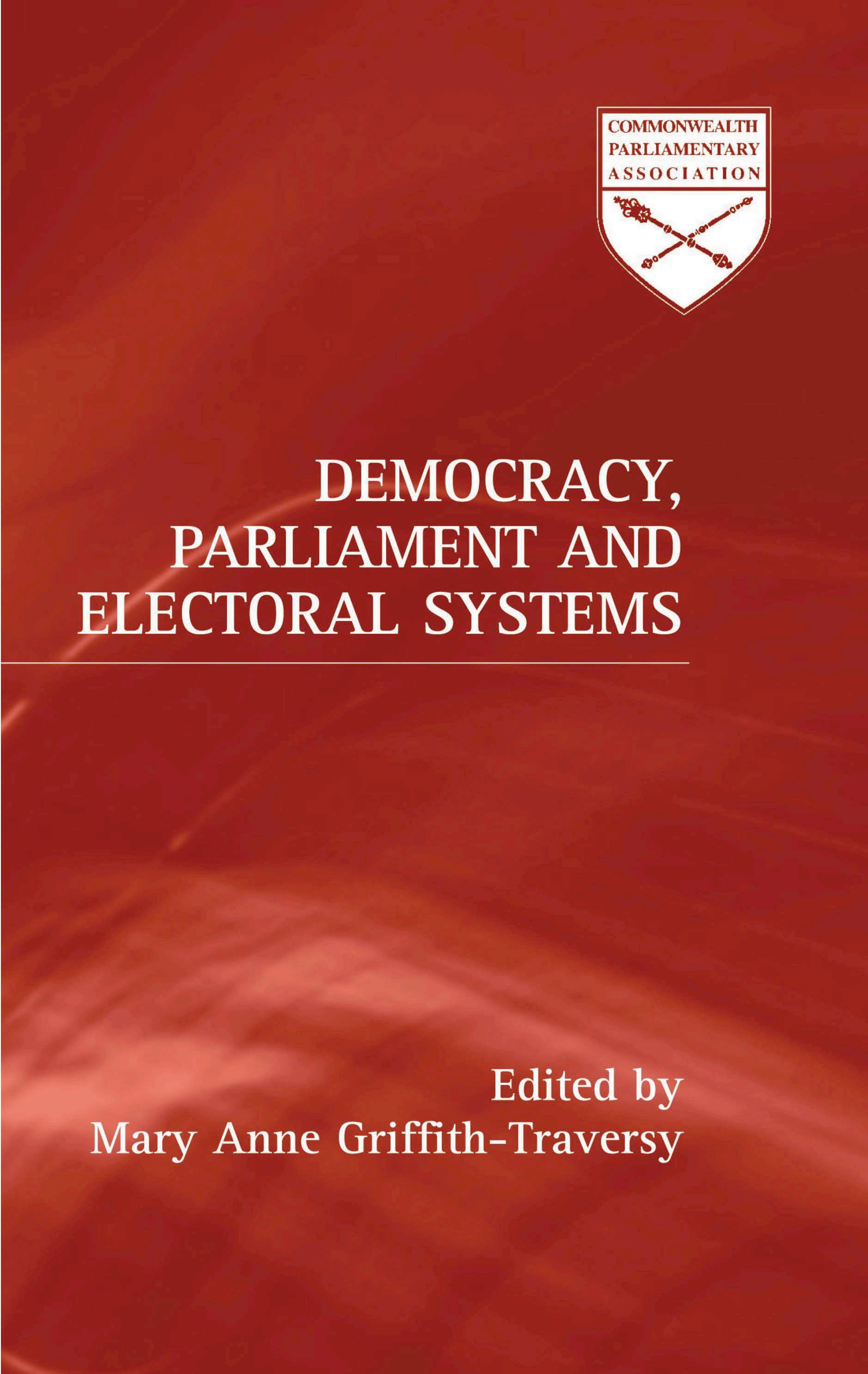


Journal of the Parliaments of the Commonwealth Vol. XC
2009: Issue Two
ISSN 0031-2282
Issued by the Secretariat of the Commonwealth Parliamentary Association, Suite 700, Westminster House, 7 Millbank, London SWIP 3JA, United Kingdom
Tel: (+44-20) 7799-1460
Fax: (+44-20) 7222-6073
Email: hq.sec@cpahq.org www.cpahq.org
Publisher: Dr William F. Shija Secretary-General
Editor: Andrew Imlach
Director of Communications and Research
Assistant Editor: Lisa Leaño
Front cover
Farmer working in paddy field at Sekinchan, Malaysia. Image: Shutterstock®
Printed in England by Warners Midlands, PLC, The Maltings, Manor Lane, Bourne, Lincs PE10 9PH
Inside Issues
Commonwealth financial leadership.
Page 112
View from the Chair Improving access to budget information.
Page 114
View from the CWP
The war on terror and its effects on the Pakistani people. Page 116
View from the Secretary-General
Applying principles that help to diffuse violence and conflict for the welfare of children.
Page 118

Malaysia’s policy response to the global and economic financial crisis Finance Ministry of Malaysia. Page 122
The global recession and its effects on smaller economies Hon. Muhammad Hamayun Khan, MPA.
Page 128
The Speaker of the Lok Sabha bids farewell Shri Somnath Chatterjee. Page 134
Campaign schools prepare women to run for office Ms Carolyn Bolivar-Getson. Page 140
Back to the future for the House of Assembly in Tasmania
Hon. Michael Polley, MP. Page 144
Unveiling the new building of the Rajasthan Legislative Assembly
Hon. Deependra Singh Shekhawat, MP. Page 148
Election of women to the Rajasthan Legislative Assembly
Shri H.R. Kuri. Page 152
Wales’ Paperless Parliament
Ms Claire Clancy. Page 156
Kampala: A city or an executive slum?
Hon. J.L. Okello-Okello, MP. Page 160
The Suez crisis ceasefire 50 years on Hon. Tim Fischer, AC. Page 164
Establishing the Ugandan Parliamentary Budget Office
Mr Samuel H. Wanyaka. Page 168

Tightening the purse strings: Public accounts committees and democraciesdeveloping La Trobe summer school. Page 172
Legislatures constrained by inadequate powers to effectively oversee budgets Mr Vivek Ramkumar. Page 176
Parliamentary news: Papua New Guinea, Sri Lanka, Canada, Australia, United Kingdom, India, Trinidad and Tobago and New Zealand. Page 185
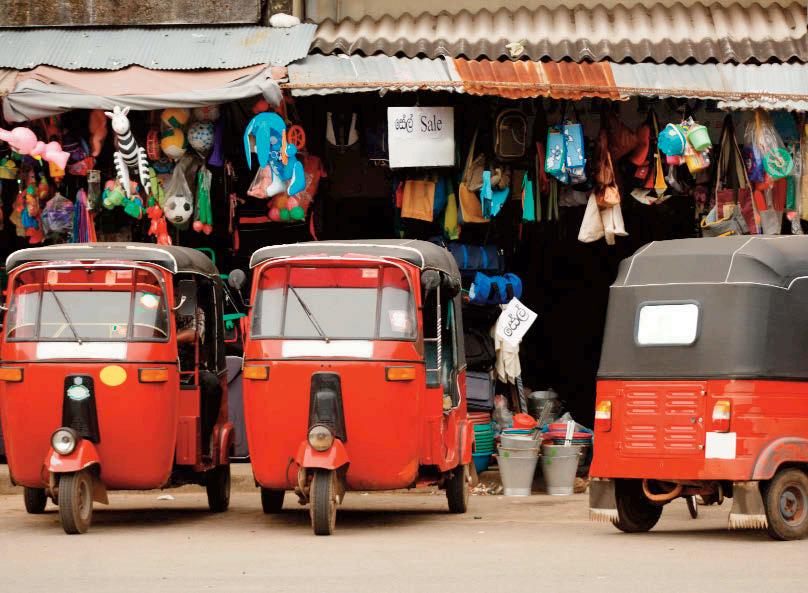
Parliament’sLibrary 150years
Hon. Doug Kidd. Page 180
HowourParliament functions;an introductiontothe law,practiceand procedureofthe Parliamentof Ghana Mr Murumba Werunga. Page 182
Annual subscription (four issues)
UK: £34 post free.
Worldwide:£36 surface post £42 airmail
Price per issue
UK: £11
Worldwide:£12 surface post £13 airmail
Opinions and comments expressed in articles and reviews published in The Parliamentarian are those of the individual contributors and should not be attributed to the Secretariat of the Association.


note
A Commonwealth-led solution to the global financial crisis is not among the commonly advocated policy options to end the current recession. Perhaps it should be, and not just because the Commonwealth spans the range of actors from villains to victims to potential heroes in this international drama.
One of the things that the Commonwealth does better than any other organization is to share information. Sharing financial and economic policies and situation reports may well be one of the most effective ways for the world to recover from the crisis as quickly as possible. Rather than turning to the so-called financial experts –the people who many argue either caused the crisis in the first place or at least didn’t see it coming –sharing the real experiences of the Commonwealth’s more and less successful economies could help governments and Parliamentarians to find ways out of the current recession and to prevent it from happening again. Commonwealth Finance Ministers should do that for national governments when they meet in late September. Through this issue of The Parliamentarian, and through economic discussions at the Commonwealth Parliamentary Conference also in late September, the Commonwealth Parliamentary Association (CPA) contributes to this process for Parliamentarians.
We open this issue with two leading articles on two very different economies, one stronger and one weaker, to help Members
identify economic and financial practices and policies which have worked better than others. We turn later in the issue to another aspect of Parliament’s role in guiding economic and financial policy. But we start here with an article on a more successful economy written for Members by the Economics and International Division of the Malaysian government’s Ministry of Finance under the direction of Prime Minister Y.A.B. Dato' Sri Mohd Najib bin Tun Abdul Razak, MP.
The ministry explains how Malaysia has been able to weather the global financial storm better than many. Its government had already laid the groundwork for recovery by keeping foreign and domestic debt to a minimum, ensuring the banking system did not over-extend itself and conserving sufficient financial strength to enable it to stimulate consumer spending and create jobs through infrastructure development without going too deeply into debt.
Starting from a less advantageous position, Finance Minister Hon. Muhammad Hamayun Khan, MPA, from Pakistan’s Northwest Frontier Province (N.W.F.P.) then describes how his government is trying to deal with the recession while correcting the inadequacies of past policies and trying to preserve what few advances ordinary Pakistanis have been able to make in his troubled mountainous province. While every jurisdiction faces serious repercussions from the
financial crisis, N.W.F.P. is one of those also facing a serious terrorism threat, one that feeds off the economic setbacks suffered by parliamentary democracies.
Mr Khan is one who sees a Commonwealth role in devising effective responses to the financial crisis. He sees it with a sense of urgency fuelled by conflict.
Shri Somnath Chatterjee has seen more than his fair share of conflicts in nearly four decades as a Member of India’s Parliament. He retired from the House of the People, the Lok Sabha, at India’s general election earlier this year, stepping down as an MP and as the Speaker of that House. Shri Chatterjee, a former President of the CPA, has kindly allowed us to publish here his farewell address to the House. This address captures the parliamentary developments he has seen not just during his term as Speaker but also over a lifetime in parliamentary politics in New Delhi. For Presiding Officers and all Members alike, his address provides a unique insight into Indian politics and a benchmark on leaving office with dignity.
Ms Carolyn Bolivar-Getson also left a different office earlier this year, but in a different way. Having worked as a Member and Minister to bring more women into the Nova Scotia House of Assembly, Mrs Bolivar-Getson lost her seat in the Canadian maritime province’s 2009 election – and lost to a man. Before she entered the election, she wrote for this issue on Nova Scotia’s “campaign school” for women candidates in order to
present to women Members in other Commonwealth Houses an idea that – her own campaign notwithstanding – is helping to increase the representation of women in that venerable Assembly.
We focus in this issue on three parliamentary buildings which should inspire Members around the Commonwealth to do something about facilities which are no longer appropriate for parliamentary proceedings.
The first is the renovation of the Tasmanian House of Assembly Chamber. Hon. Michael Polley, MP, Speaker of the House of Assembly, writes here on a project which undid a 1970s restoration to give the House a modern and functional Chamber that successfully integrates original art deco designs with traditional Tasmanian materials and the latest technology.
He describes how the Assembly went about restoring its Chamber, including what was done to accommodate sittings during construction. Leaving town was only one of the options it used.
By Indian standards, Rajasthan’s legislative building is also new as it is approaching the end of its first decade of operations while many of its counterparts in other states are much older. As Hon. Deependra Singh Shekhawat, MLA, Speaker of the Legislative Assembly, writes here, the “new” Legislature blends modern technology with traditional architecture to provide a building
which suits its environment in Jaipur while offering its Members and staff the latest electronic advantages.
Staying in Rajasthan, our next article examines the state’s record in electing women in order to analyze why the number of women Legislatures suddenly doubled in the 2008 state general election. Before Rajasthan is held up as a shining example of gender equity, it should be pointed out that the doubling only produced a House in which women are 14 per cent of the total, a House in which the percentage of women Members reached double digits for the first time in its half century of parliamentary democracy and a House for which significantly less than half the voters are women.
Shri H.R. Kuri, Secretary of the Legislative Assembly, considers the gender issue from his perspective at the Table of the Assembly.
Our final parliamentary building article is as much about the parliamentary process as it is about the building in which the National Assembly for Wales meets. Ms Claire Clancy, the Assembly’s Chief Executive and Clerk, writes on a Parliament that is at the cutting edge of environmentally sustainable democracy.
Not only is the National Assembly for Wales striving to be virtually paperless, it is also leaving as small a carbon footprint as possible, harvesting rain water and providing its Members with easily accessible electronic information in a way most businesses and government offices – let alone Parliaments – can only dream of. What it is not doing, Ms Clancy writes here, is letting the technology take over the business.
Having examined three Parliaments which have been built or upgraded to suit their place in a modern society, we turn to a capital which one MP argues should be upgraded to suit its place in a modern country. Hon. J.L. Okello-Okello, MP, argues that
the capital of Uganda should be upgraded by moving it away from Kampala. Describing the city as a planning mess in which the vast majority of its inhabitants don’t have addresses, Mr Okello-Okello calls for the country to start again with a new capital city. Canada, Australia, Tanzania and Nigeria have purpose-built capitals. Could Uganda be next?
Australia’s former Deputy Prime Minister, Hon. Tim Fischer, AC, contributes our next article, one that will interest history buffs and surprise cynics who believe Parliaments are ineffectual talking shops. Mr Fischer looks back half a century at an episode in world history in which a secret international agreement came unravelled thanks to a parliamentary question asked by British MP who went on to become an Australian MP.
Returning to financial matters, we look at three different perspectives on Parliament’s power over the public purse. First, Uganda’s parliamentary budget office is a leading example of new parliamentary process which is seen by the World Bank, among others, as a way to help Parliaments improve national budgets. Mr Samuel H. Wanyaka, Director of the Parliament of Uganda’s Parliamentary Budget Office, writes here, assisted by two of his senior staff, on how the office works and what successes it has had in improving the government’s budgets. This is followed by a report on how a group of Pacific and South-East Asian Parliamentarians meeting in Australia identified ways to strengthen their Parliaments’ review of public spending performance through their Public Accounts Committees.
The third article covers the results of a global survey on budget transparency covering 85 countries, a quarter of them in the Commonwealth, are recorded here in an article by Mr Vivek
Ramkumar, Manager of the Open Budget Initiative of the International Budget Partnership, a Washington-based organization that works with civil society groups seeking to influence government budget processes. While the Commonwealth leads the world in parliamentary review of spending after the fact, it lags behind in the review of spending approval, at least in terms of formal processes. Members wishing to argue in defence of the parliamentary process should contact the Editor.
We review two parliamentary books in this issue, the first written by a former President of the CPA, Hon. Doug Kidd of New Zealand who wrote just before he was knighted for his service to his country. Mr Kidd reviews a recently published history of the New Zealand Parliamentary Library. This is followed by a review by Mr Murumba Werunga of a new book on Ghanaian parliamentary practice. Mr Werunga, a senior officer in the Kenyan Clerk’s Department, is the former Clerk of the East African Legislative Assembly and of the Pan-African Parliament.
Finally, any journal about parliamentary democracy must be as innovative as the institution it covers, so we are pleased to publish the first Parliamentary News report from an Assembly in one of the Commonwealth’s developing Pacific island nations, the National Parliament of Papua New Guinea.
The report appears first in our redesigned news section which was revamped as part of the new format for the journal introduced this year. The journal’s new look came out of a chance encounter in early 2008 between the Editor and a Deputy in the States of Jersey, Mr Andrew Lewis, whose nonpolitical business is an advertising and design agency in St Helier. His firm devised the new layout for the journal which was subsequently endorsed by the CPA Executive

Committee and introduced with Issue One/2009. Mr Lewis has since left the States to devote more time to his business; but the CPA is indebted to him for the journal’s new look as initial responses from around the Commonwealth have been very positive.
On a sad note, the correspondent who faithfully contributed this journal’s reports on the National Assembly of Tanzania for 36 years died at the end of May in Dar es Salaam.
Dr Bismarck Mwansasu, who combined careers in academia and the Tanzanian civil service with writing for The Parliamentarian ¸ died at his home at the age of 68. He began writing for the journal in 1973 while moving from the post of lecturer at the University of Dar es Salaam to become a senior tutor at Kivukoni College adult education centre.
He continued to report for the journal on the National Assembly while serving in senior academic and public service posts in Dar es Salaam and Dodoma, as well as in his home region of Mbeya. A prolific writer and editor, he also translated legislation and training materials into Kiswahili and facilitated the creation of microfinance co-operatives in rural areas, among his many other accomplishments. He was also a member of the Rappoteur Team for the Burundi Peace Negotiations from 1998 to 2001. Through his reports and articles, The Parliamentarian was able to provide Members throughout the Commonwealth with a full and accurate record of the development of one-party parliamentary politics in Tanzania and the Assembly’s transition into multi-party politics. Dr Mwansasu performed a great service to this journal, to the National Assembly of Tanzania and to the Commonwealth parliamentary community over nearly four decades and he will be greatly missed.

I want to begin this newsletter with a note of sincere thanks to our Bermudan hosts who extended such warm and friendly hospitality during our Executive Committee meeting in April. Not only is Bermuda a very beautiful country but it can boast of being the oldest Commonwealth Parliament outside of Europe. The highlight of the meeting for me was the Committee’s commitment to fund an innovative training and development programme for Commonwealth Parliamentarians. I am confident that this new programme will further enhance the capacity and capability of Parliamentarians as they face ever more complex economic and social issues.
One of the most pressing of these issues is surely the rise in hardcore poverty as a result of the global financial crisis. According to a recent statement by the President of the World Bank there is a sharp rise in poverty levels especially in under developed countries some of who are Commonwealth members. We have to recognize that poverty is nearly always accompanied by poor educational and health provision which only serve to prolong the cycles of deprivation. Add to this the loss of hope, social collapse and the despair that poverty brings and it doesn’t take rocket science to realize that the world faces a significant challenge to peace and tranquility. Poverty is a breeding ground for extremists and we only have ourselves to blame if we fail to address the root causes, for example, trade imbalances and corrupted forms of governance.
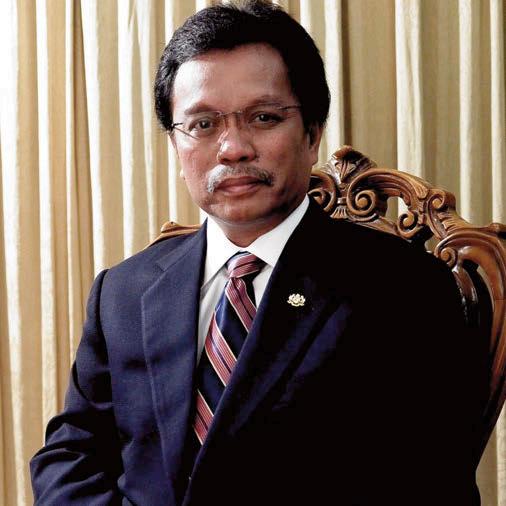
supported and under-written by local and national governments. To this end I am currently studying a number of ways in which we could generate new business activity and encourage wealth creating local entrepreneurs. As I have said before one of the manifestations of poverty is the debilitating loss of hope and self-confidence. Just to survive day after day is struggle enough and therefore we have to find new and innovative ways to re-energize people, restore hope, build appropriate infrastructures and raise confidence.
I was interested to read the recently published Open Budget Survey. This highly detailed survey was based on a questionnaire consisting of over 120 questions using best open budget practice criteria. The report states:
Apdal, MP Chairperson of the CPA Executive Committee and Minister of Rural and Regional Development in Malaysia.
“The Open Budget Survey 2008 is an independent and comprehensive analysis that evaluates whether central governments give the public access to budget information as well as opportunities to participate in budget formulation, implementation, and evaluation processes. The Survey also examines the ability of legislatures and supreme audit institutions (SAI) to hold their governments accountable.”
In my new ministerial portfolio1 I am urgently looking for ways to address what for us in Malaysia is a residue of hardcore poor. While the Malaysian government has managed to reduce poverty from over 50 per cent at the time of independence to fewer than 6 per cent, we are determined to eradicate the scourge in its entirety. Like many developing countries Malaysia has been witness to a drift of population from rural to urban areas and this has caused some of our rural communities to lose many of the younger generation and potential wealth creators. I am convinced that one of the ways forward is to develop small scale local business enterprises strongly
“The Survey shows that Commonwealth countries have an average score that is higher than the average score of all 85 countries in terms of the accessibility and comprehensiveness within these countries of the eight key budget documents that international good practice says all governments should publish.”
However, the Commonwealth countries did not do so well regarding the strength of their budget oversight institutions. One of the reasons for the overall low scores especially as they relate to the strength of their budget oversight institutions, and particularly amongst developing nations, may be due to the fact that as budgets become more complex the knowledge and skills required of Parliamentarians to read and make sense of them may be lagging

behind. I suggest that one of the reasons why the U.K. and New Zealand scored well is that they have ready access to a range of specialists within a budgetary process support infra-structure. This infra-structure takes time, expertise and resources to develop and I am of the view that many Parliamentarians need support and training if they are going to exercise effective scrutiny of executive budgets. Furthermore, if Legislatures are to hold executives properly accountable then there needs to be access to best budgetary practice criteria. It is for these reasons, amongst others, that I want to lead the CPA in a more proactive direction especially by providing practical support for Members of Parliaments. Perhaps we could all learn from Namibia and Sri Lanka, for example, whose Legislatures have unlimited powers to amend the budgets.
Whereas I generally support the work of the Open Budget Initiative I do sometimes wish that organizations such as this showed a greater understanding of and sensitivity to the pressures faced by Parliamentarians in the less well endowed and developing countries. For example, I would like to see not only the highlighting of problems in budget oversight and the role of Parliamentarians but efforts being made to provide practical help. Constructive criticism is fine but constructive support for development is even better.
Since I last wrote several of our member nations have held elections. It is an amazing fact that India conducted its recent election involving over 700 million registered voters, and South Africa, who only two decades or so ago did not even have universal suffrage, became role models for effective democratic and peaceful election management. In congratulating the winners and commiserating with those who lost we should not fail to recognize the contribution that election officers and many others make to the democratic parliamentary process. The sheer logistical task of organizing an election of 700 million people is mind boggling.
On a less happy note I am sure that Parliamentarians everywhere will join with me in the earnest hope that the strife in Sri Lanka and the conflicts in Pakistan are nearing an end. It is a very sad fact that many thousands of innocent men women and children are now homeless and impoverished in both countries.
Finally, let me end where I began. Bermuda is a lovely country and a sure therapeutic anti-dote to the troubles of global economics, political strife and internecine warfare that beset much of the rest of the world. It was a privilege for my wife and I to visit and enjoy the warmth of the welcome.
1 Dato Shafie Apdal was recently appointed to lead the Ministry of Rural and Regional Development in Malaysia.
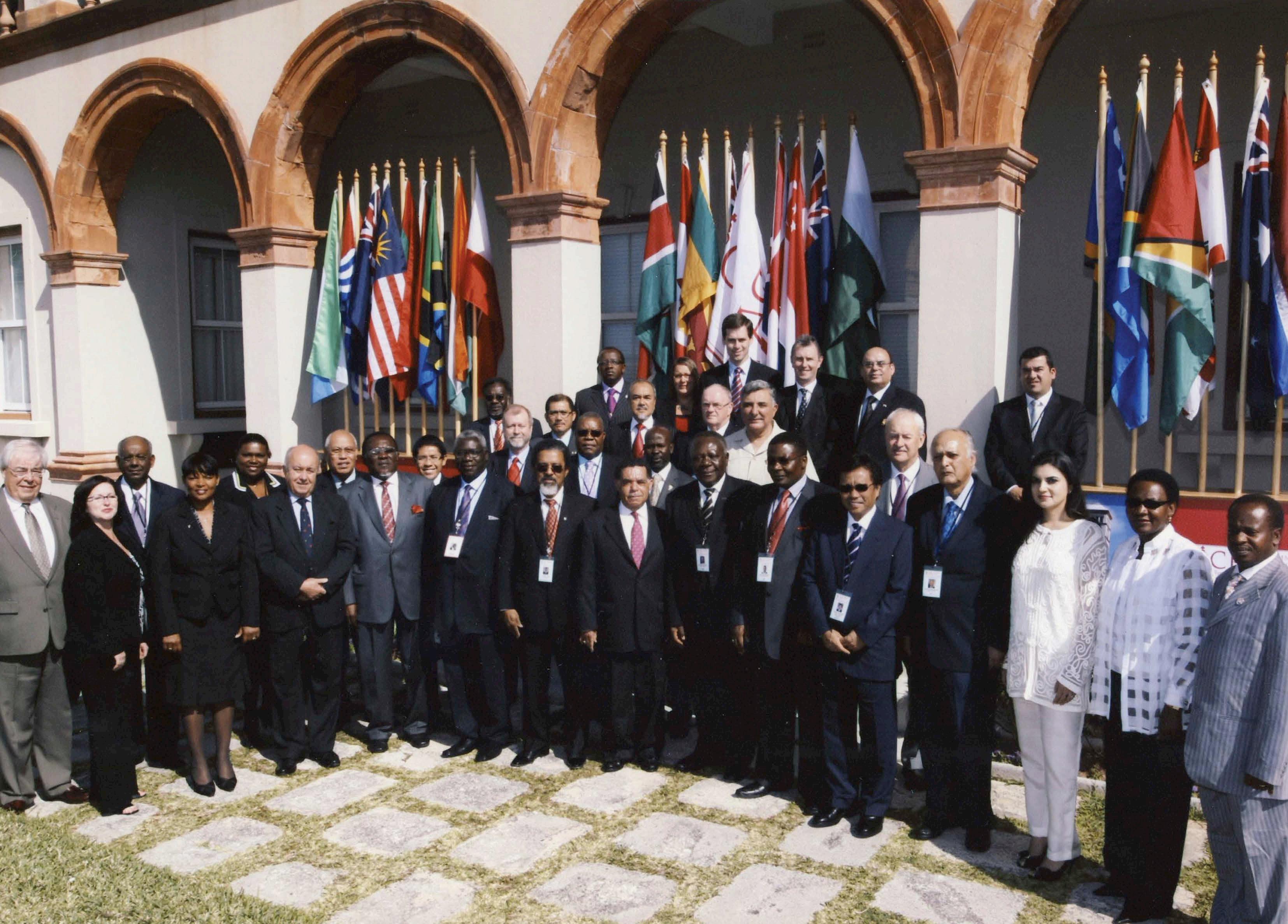

Since the 1980s, terrorism in Pakistan began primarily with the SovietAfghan War, and the subsequent war against Afghan communists that continued for at least a decade. The war brought numerous fighters from all over the world to South Asia in the name of jihad. These fighters, known as “mujahideen”, carried out insurgent activities inside the country well after the war officially ended.
At the end of the Afghan War, between 1990 and 1996, the Pakistani government and the U.S. abruptly withdraw its support from Afghan Mujahideen. Some settled in Afghanistan and some of in tribal areas of Pakistan. However, after the 9/11 attacks, the Mujahideen organized itself to fight in the same way as they fought against Russia when the U.S. attacked Afghanistan. Pakistan became a strong ally of the U.S. in fighting the war on terror.
The post-9/11 war on terrorism in Pakistan had two principal elements: the government's battle with jihad groups banned after 9/11, and the U.S. pursuit of Al-Qaeda, usually (but not always) in coordination with Pakistani forces.
Aid for Pakistan bill, as endorsed by U.S. Senator John Kerry, the country will only receive $1.5 billion annually while Pakistan is faced with transactional losses of $23 billion.

Ms Kashmala Tariq, MNA Chairperson of the Commonwealth Women Parliamentarians
In 2004, the Pakistani army launched a pursuit of Al-Qaeda members in the mountainous area of Waziristan on the Afghan border. Clashes there erupted into a low-level conflict with Islamic militants and local tribesmen, sparking the Waziristan War. A short-lived truce known as the Waziristan accord was brokered in September 2006.
The losses to Pakistan’s economy from the war on terror are multidimensional, affecting investment, exports, economic activity, revenue and increasing the number of people living in poverty. The estimated cost borne by the country was $10 billion during the 2008-2009 fiscal year. Pakistan’s economy reported losses of $34.5 billion in supporting the U.S. war on terror from 2001 to 2008, with the addition of $10 billion reported losses of last year.
About 70 per cent of the total budget of the country is attributed to debt servicing and defense expenditures while the remaining 30 per cent is insufficient to maintain law and order, administration, the social sector and other state expenditures. In view of this, the $1.5b annual aid could bring change for the social sector in Pakistan. As a result of the hearing on the
Pakistan is fighting the cheapest war that is being fought in the world at the moment. NATO’s army deployed in Afghanistan is 30,000, but Pakistan’s 1,300,000 soldiers are currently deployed in conflict areas.
The war on terrorism had a major impact on Pakistan, where incidences were reported to have increased twofold. The country was already gripped with sectarian violence, but after 9/11, it also had to face violence related to various secessionist movements, and the direct threat of Al-Qaeda and Taliban. Terrorists killed 907 people and injured 1,543 others altogether in Pakistan in 2006.
In 2007 alone, there were 3,448 casualties from 1,503 terrorist attacks and clashes according to the Pakistan Institute for Peace Studies (PIPS) security report. The report states that Pakistan faced 60 suicide attacks (mostly targeted at security forces) during 2007, which killed at least 770 people, as well as injuring another 1,574.
According to the same report, the total number of suicide blasts in Pakistan since 2002 increased to 140 (up to 21 December 2008) while 56 bombers had struck in 2007.
In 2008, suicide attacks surpassed the 2007 figures, with 61 attacks up to 21 December killing at least 889 people and injuring 2,072 others, a source in the investigation agencies disclosed. According to the same source, the total number of suicide blasts in Pakistan since 2002 rose to 140 (up to 21 December 2008) while 56 bombers had struck in 2007.
To counter insurgents, the Pakistan Army launched its latest offensive in May 2009 after the Taliban had gained control of large parts of Swat valley in the Northwest Frontier Province.
Hundreds of thousands of Pakistanis fled from their homes and took shelter in neighbouring districts and hundreds of spontaneous settlements have sprung up in sites such as schools, colleges, stadiums and parks.
The vast majority of the people are living outside of camps with host families or in rented accommodation, putting tremendous social and

economic hardship on their host. Soaring summer temperatures combined with a scarcity of water have made people especially vulnerable to dehydration, diarrhoea and skin infections.
The government of Pakistan has recently announced for people to return to Malakand but the question remains on how to rehabilitate them.
The scale of the displacement crisis in Pakistan is posing a huge challenge for the government and humanitarian organizations who are warning that the number of internally displaced people (IDP) is unlikely to stabilize as long as the fighting continues.
Most common health problems facing IDPs in camps are malaria, diarrhoea, acute respiratory infection and scabies, according to the Pakistan Red Crescent Society. In addition to diarrhoea and acute respiratory infection, some IDPs are also suffering from heat stroke. Persisting problems include the registration of IDPs, the arrival of the monsoon season, congested tents and the movement of the masses back to their home towns.
The concept of IDPs in Pakistan is totally different from other countries in the sense that they come across such situations in the case of natural disasters or war, but Pakistan is equally facing this problem not only in respect of war but due to natural calamity as well.
The problem is further compounded as the country not only lacks legal mechanisms for dealing with the issues of refugees, foreigners’ detention and asylum, but it also does not provide a disaster management institute as well. In order to formulate policy for rights and protection of IDPs, the following points should be taken into account: what rights do persons have once displaced? What rights and obligations do humanitarian organizations have? What help should IDPs expect on return, reintegration and resettlement? Are there any special provisions for women? Whose responsibility is it anyway? What is the way ahead?
Keeping in view the aforesaid factors, the issues of IDPs should be treated from institutional and legislative perspectives. The presence of a crisis management body is essential to deal with the situation arising out of natural disasters. Along with this, it is equally important that a legal mechanism or framework in accordance with the international conventions dealing with the issues of IDPs is made available.
The international community should:
•Urge a humanitarian pause in fighting to allow much-needed assistance to non-combatants in conflict zones, to permit them to flee and to account for civilian casualties, with the timeframe dependent on assessment of needs and available logistical and other resources and material support, as determined by the provincial government and international and local humanitarian agencies;
•Ensure that relief and reconstruction are civilian-led and empower displaced communities to determine their own needs and priorities;
•Prioritize the relief and rehabilitation of IDPs, particularly those living outside government camps, through cash transfer programmes that provide income support, payment of school tuition and paid vocational training;
•Support Pakistan civilian-led plans for return of IDPs to their communities with reconstruction programs that incorporate support for the provincial government and help build the capacity of civilian police and advance justice reform with new training, equipment and mentors; and
•Encourage long-term political and constitutional reforms in provincially administered tribal areas (PATA) and federally administered tribal areas (FATA) of Pakistan through support for comprehensive governance, stabilization and rural development programmes.
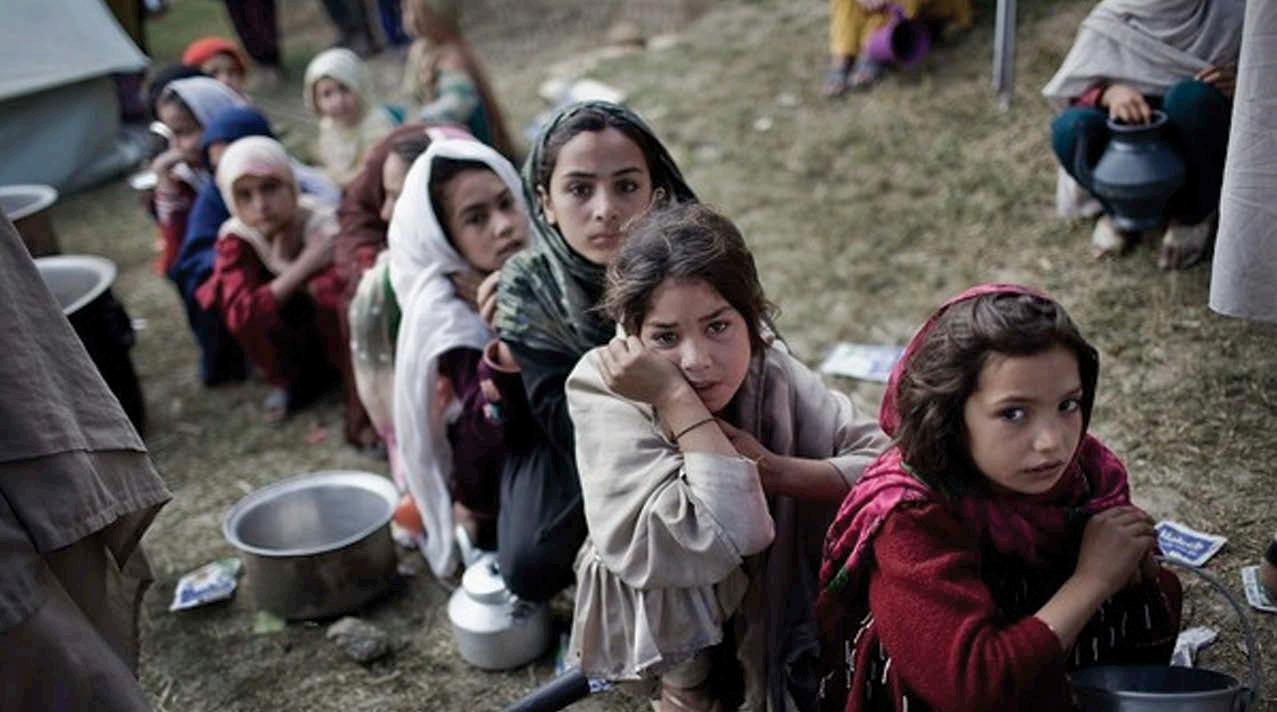

Children are born into this world and are expected to grow up and become adults. However, a significant number of children can encounter mistreatment at various stages and ages by parents and society in general. Children can be witness to violence, and be deprived of food, water, health and nutrition, education, security or protection, etc.
The parents of children belong to various geographical, social, economic and religious conditions that bind or limit the lives of children. Often than not children have little choice or voice to defend or express themselves against such odds.
In urban areas, children are often confirmed to limited space that denies them to freely play. Children normally need space, particularly away from adults, to engage themselves in physical, mental and other strengths they like to learn from their peers, argue and
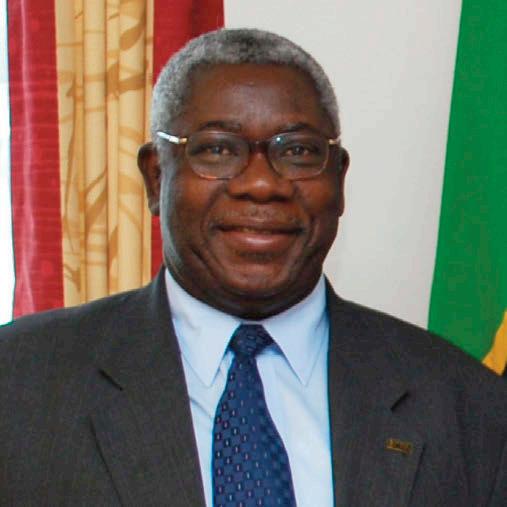
Dr William F. Shija Secretary-General of the Commonwealth Parliamentary Association
even fight, to test their growth potential. However, in most urban areas parents usually deny their children of those opportunities. In most cases, parents rightly argue the overprotection they provide for their children is justified because there have been many incidences of child abuse and exploitation. On the other hand, in countries with sufficient rural spaces, factors such as poverty result in the lack of proper programming of children’s activities for their freedom to play. These children are often overworked in daily chores such as fetching water, collecting firewood for cooking, and sometimes caring for their siblings.
In general, in both urban and rural areas children still suffer high growth inadequacies that require appropriate special policy and legal action.
Among the growth factors, the security service is the most crucial in the lives of children. It determines the
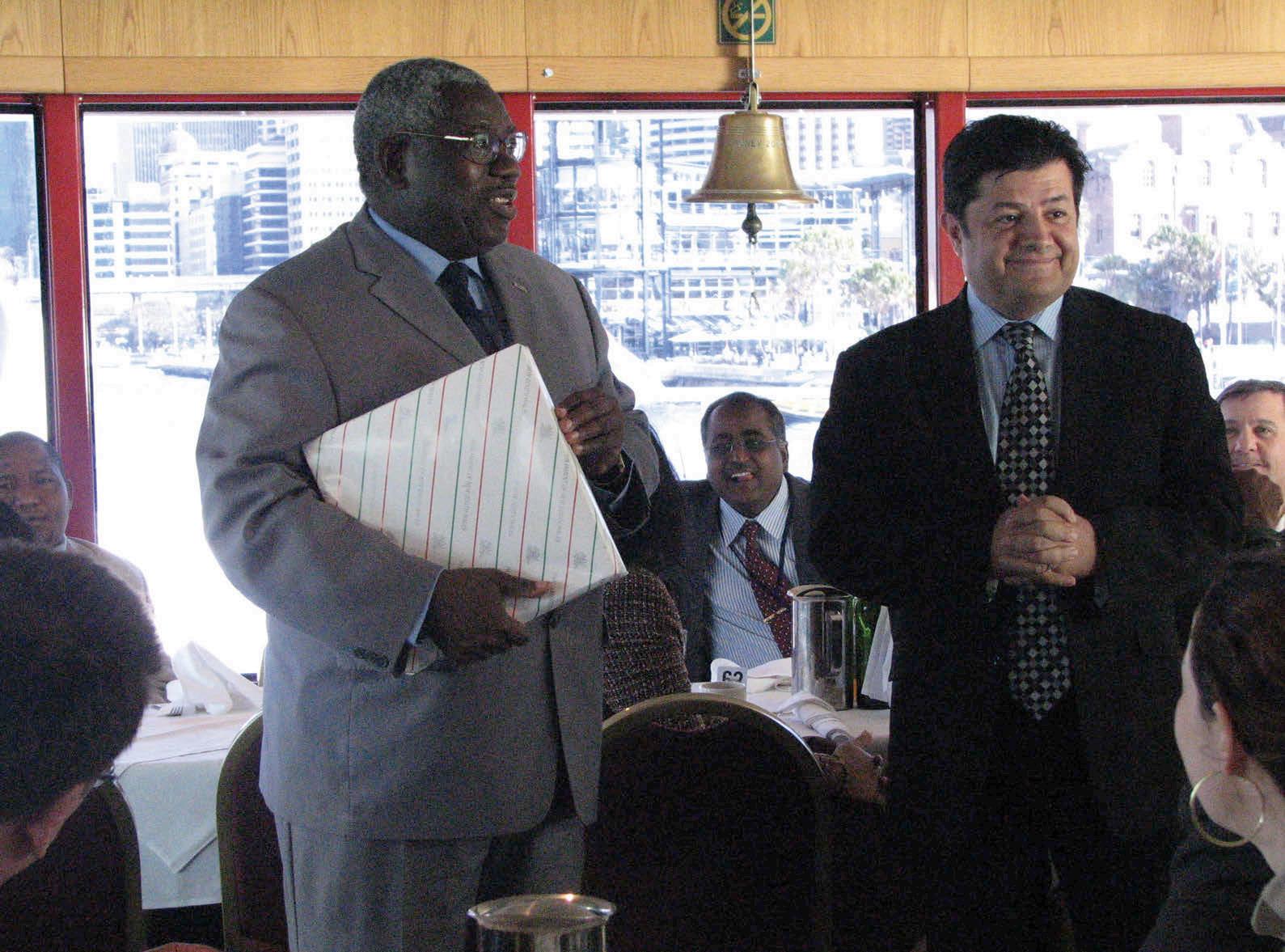
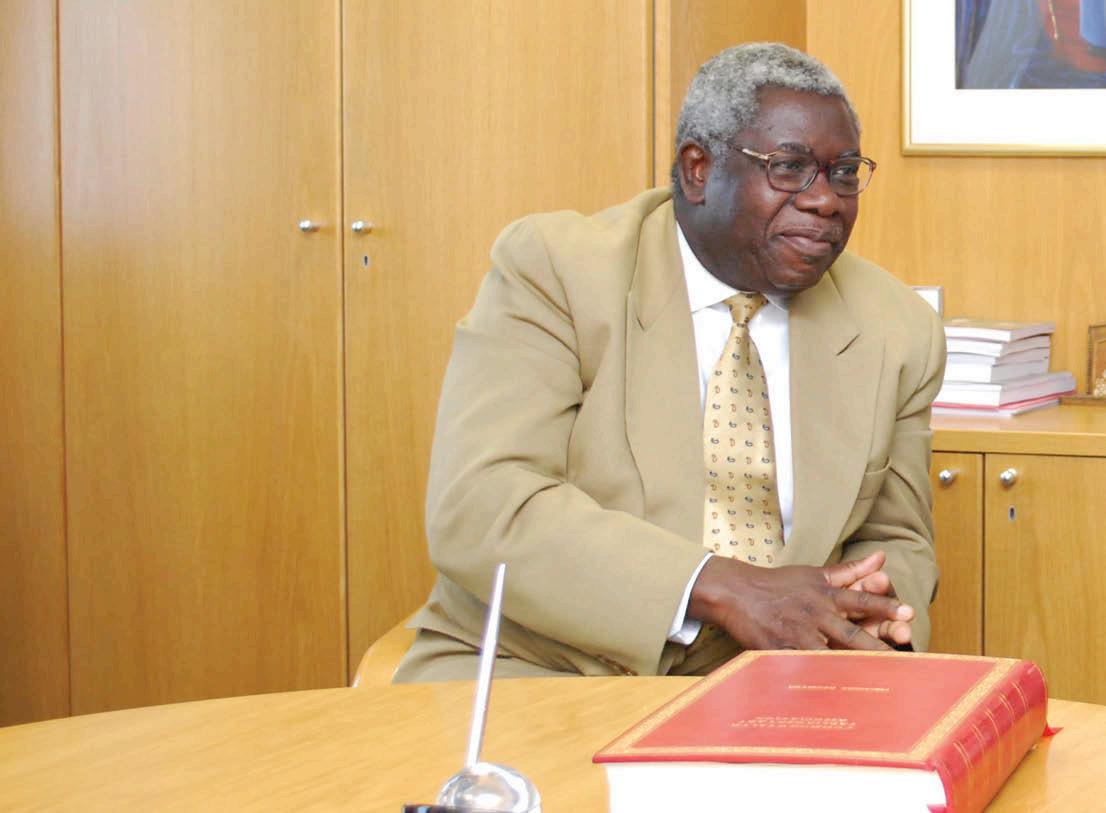

extent children can access basic needs such as food, education and health services.
One of the main goals of democratic governance in Commonwealth and non-Commonwealth societies is the application of principles that help to defuse violence and conflict for the welfare of people, particularly children.
The United Nations Convention on the Protection and Promotion of Children's Welfare has been ratified by several Parliaments to uphold the rights of children. Parents, teachers and politicians have generally recognized that children in society need full protection from the effects of abject poverty, violence, illiteracy and disease. The promulgation of the Millennium Development Goals in the 1990s largely aimed at building a better future for children.

I have observed that the provision of security services, or simply peace, is the most important service for children. For example, the violence that erupts in pre- or post-election times has often led to children's premature death, physical and mental disability, hunger, malnutrition, parental deprivation, poverty, and the lack of educational and health services. Several other social effects deprive children the opportunity to grow up normally. The children in conflictaffected and terrorized areas such as Iraq, Pakistan, Democratic Republic of Congo, Palestine, Israel, Zimbabwe, etc., have suffered because of adultcaused violence and war and in some cases, the children have been forced to participate in armed conflicts.
The plight of children in conflict situations has been exacerbated by reckless arms sales in the world. For quite some time now, the world has witnessed widespread sales of guns and other ammunitions, some of which have fallen into the hands of bandits seeking to dislodge democratic governments. Civil wars have in some places been prolonged by groups which receive, mostly illegally, arms from traders who benefit from such trade. This type of reckless arms transactions was witnessed in the case of the civil wars of Angola, Mozambique and others. The question we should ask is: who is behind the proliferation of the illegal arms trade?
It is my considered opinion that in order to make our world safer for the children, we must, among other things, highly regulate the sale of arms in the world, as we do in the case of health drugs.
Similar to the efforts being made to denuclearize the world, we must work to disarm our societies in which children suffer as a result of reckless arms sales. Democratic institutions and individuals such as Parliamentarians must lead in the fight against arms sales and acquisitions, particularly in countries where public funds are desperately needed for the welfare of children.
Indeed public servants, particularly Parliamentarians, are best placed to unite to remove the obstacles for peace by promoting the ideals of democracy to enable all our children to grow into adults and realize their full potential.
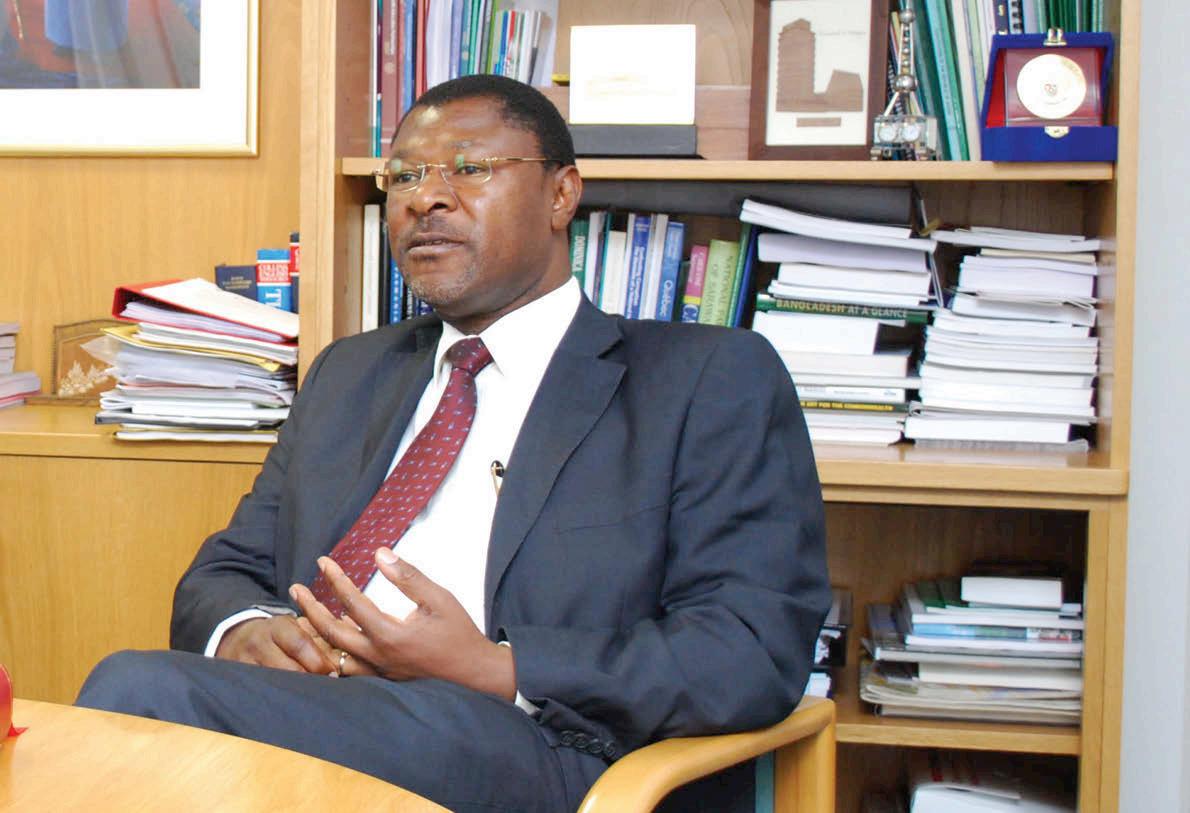
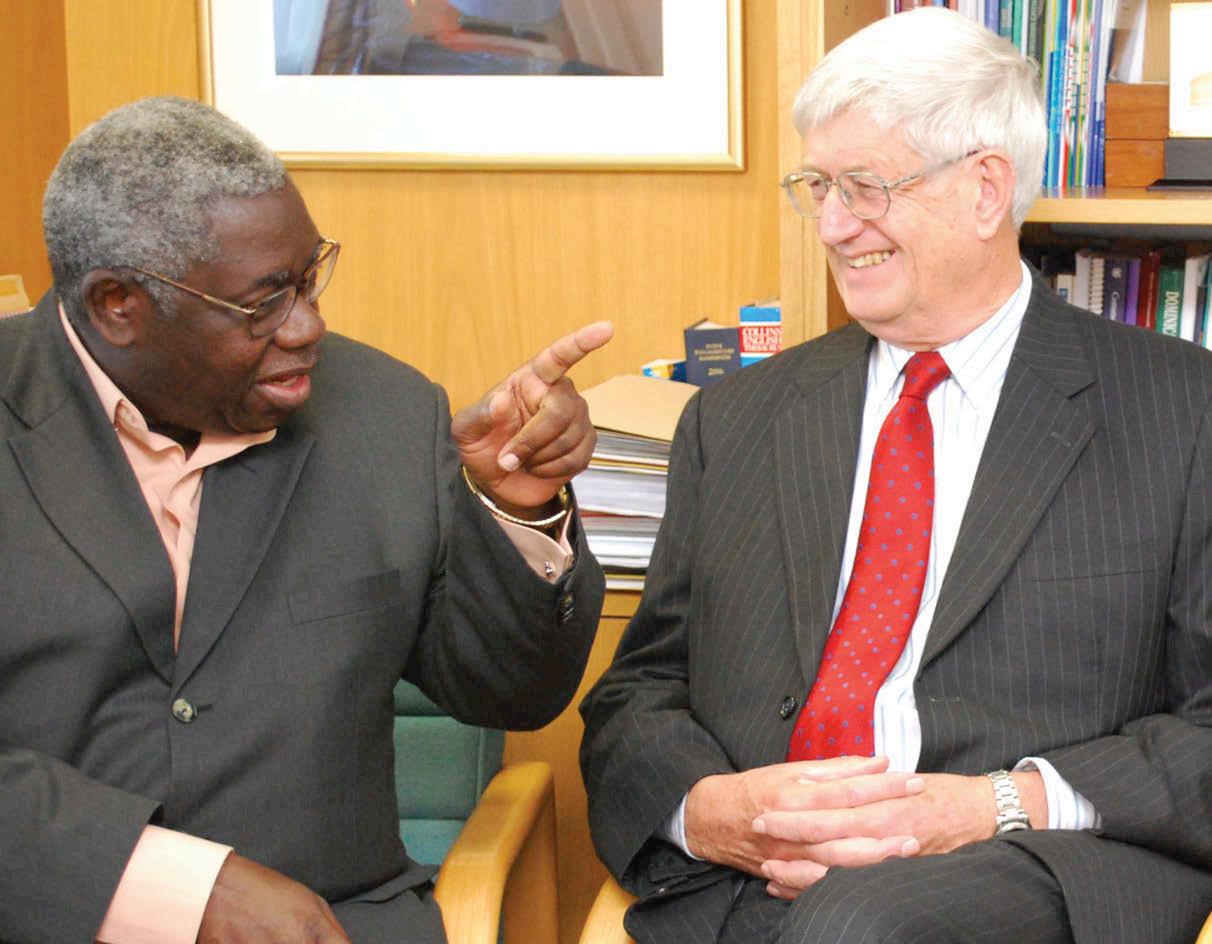

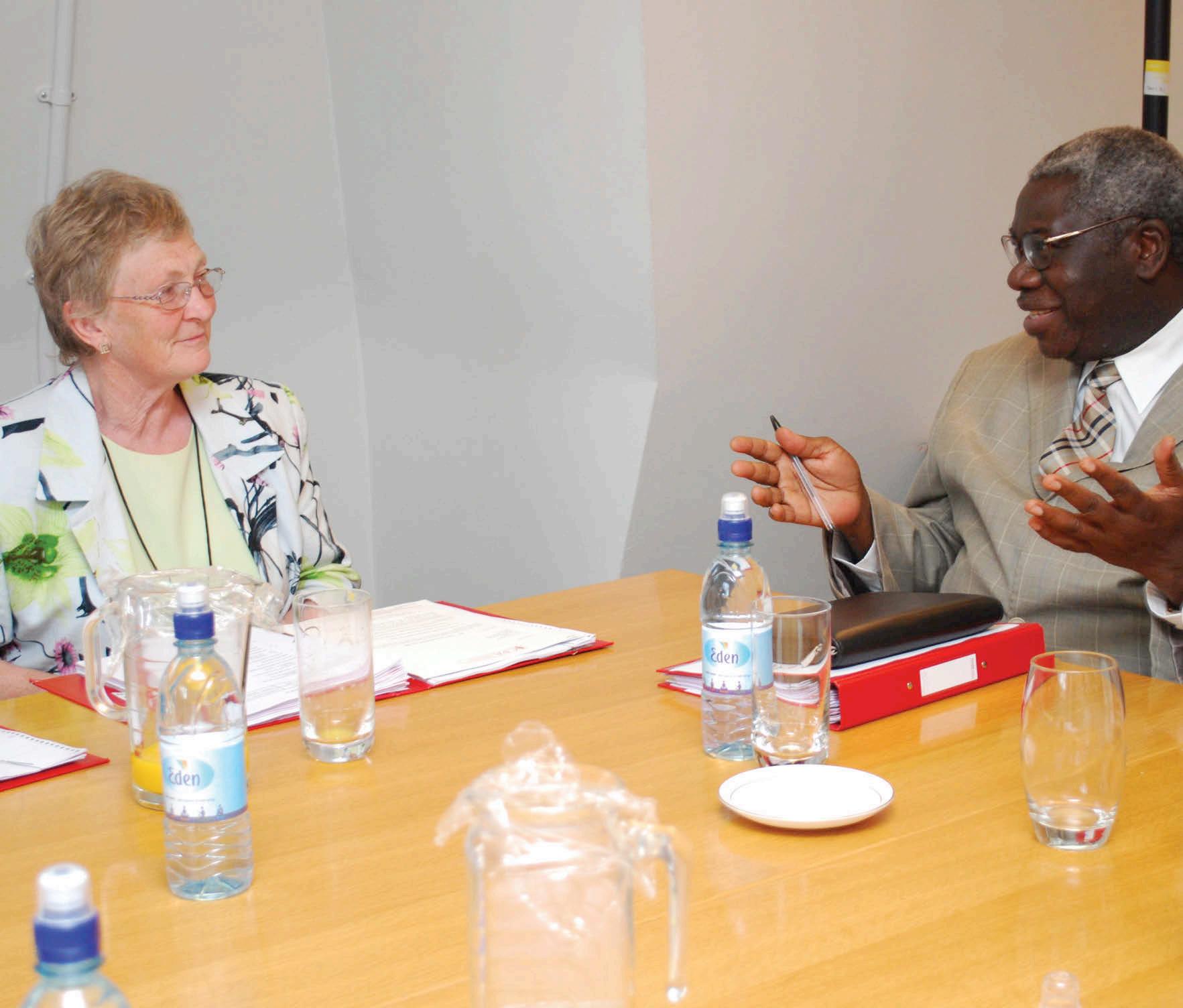
The Secretary-General talking to Mrs Clare Christian, MLC, (left) during the Trustees meeting in June.
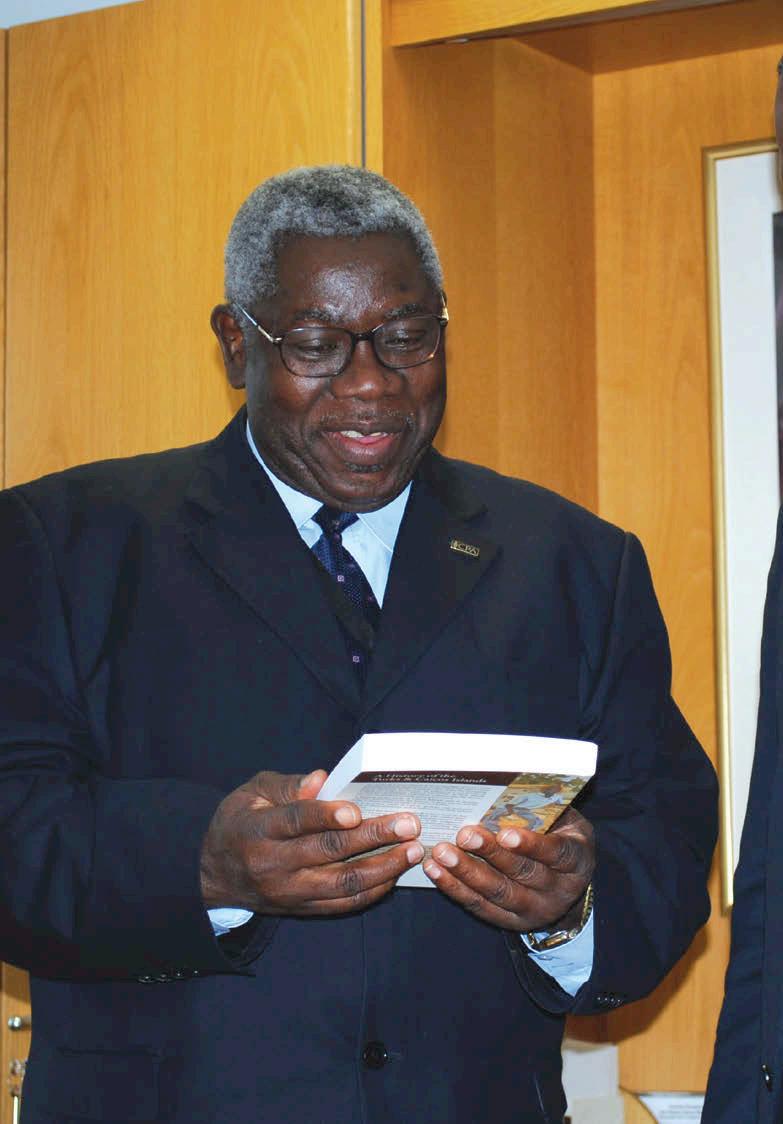
presenting a gift to the Secretary-General.
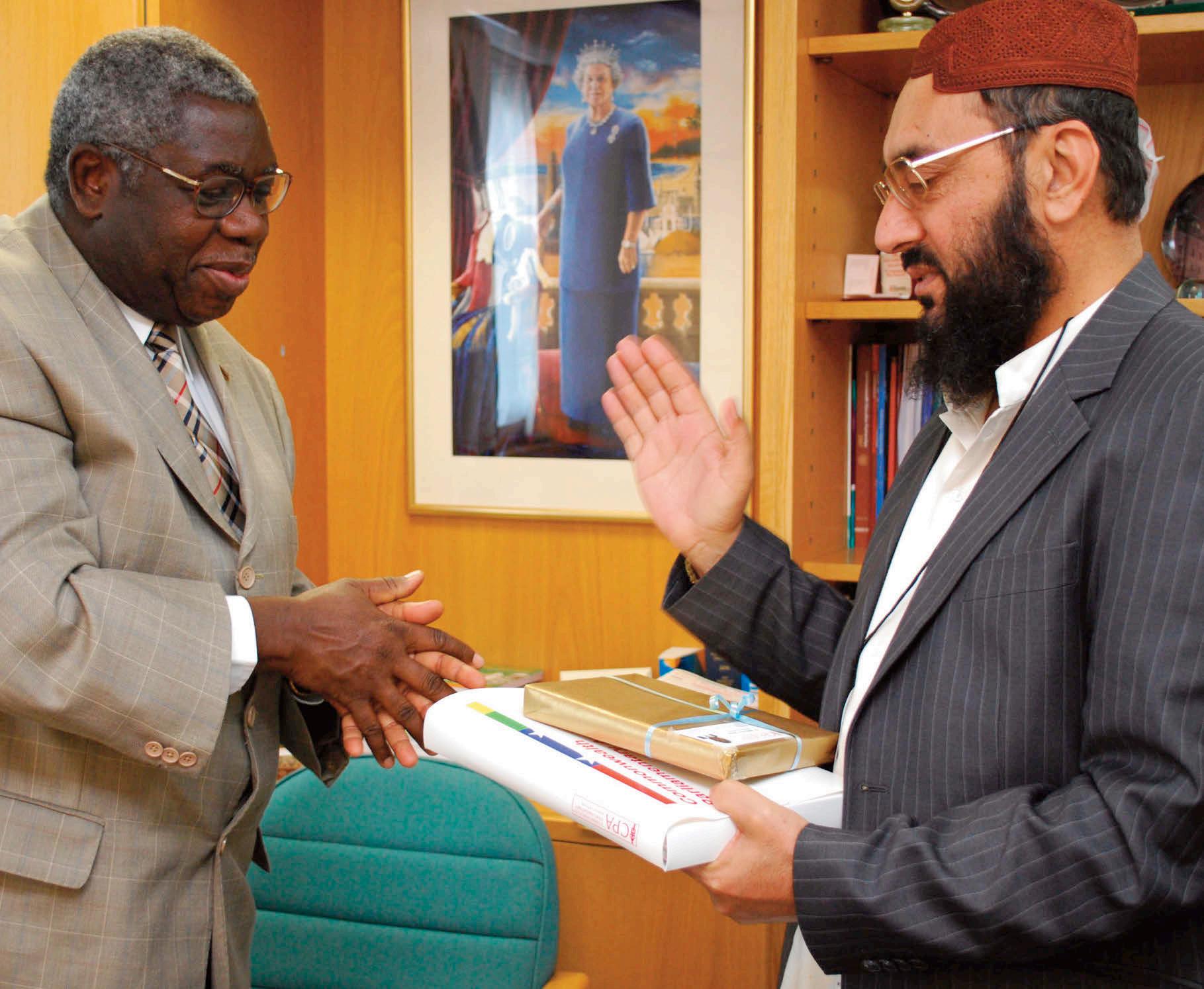
The Secretary-General handing a gift to Hon. Syed Matiullah Agha,
Vice President of the CPA Branch in Balochistan.
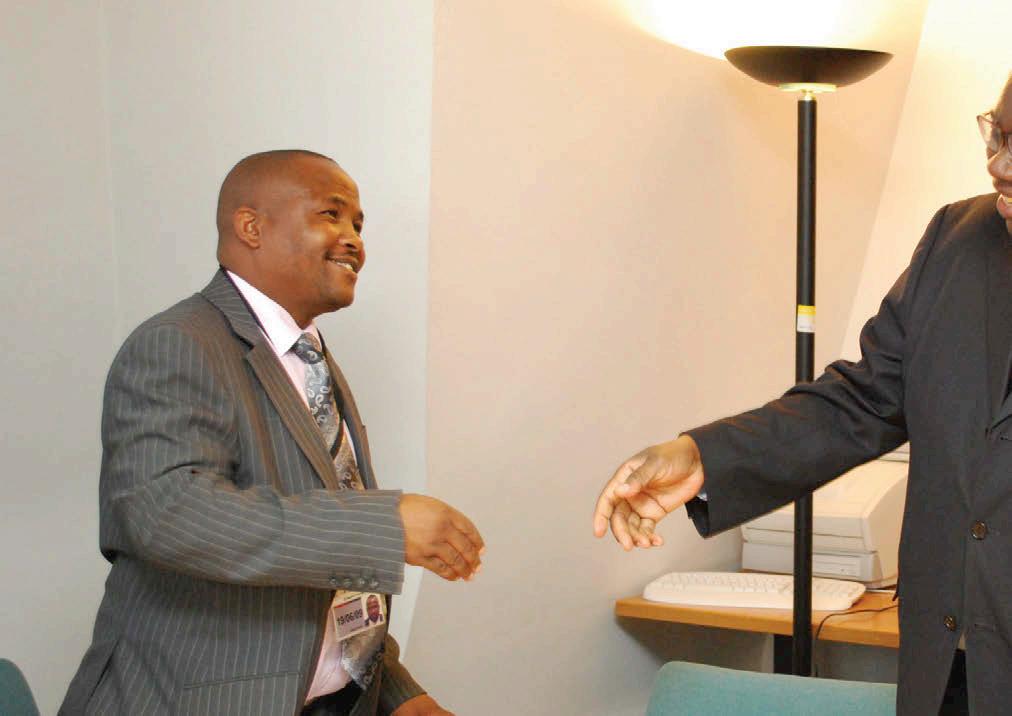

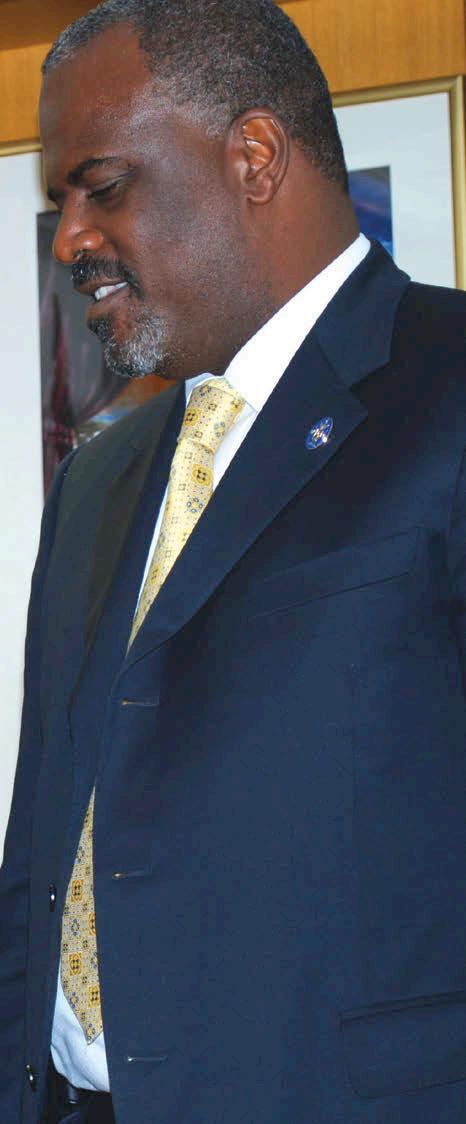
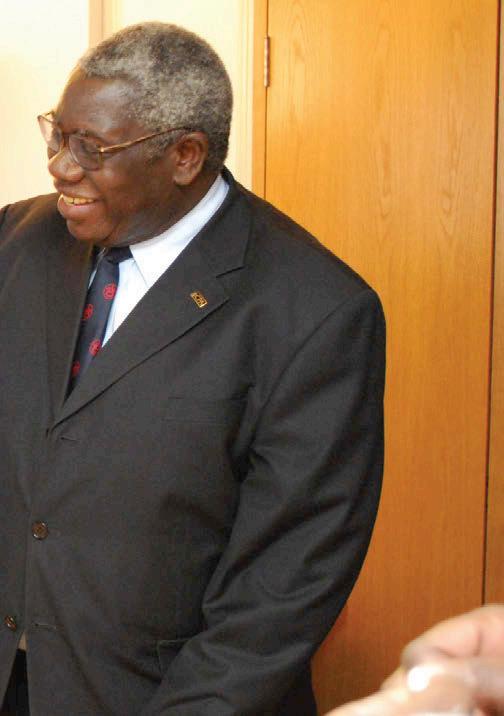
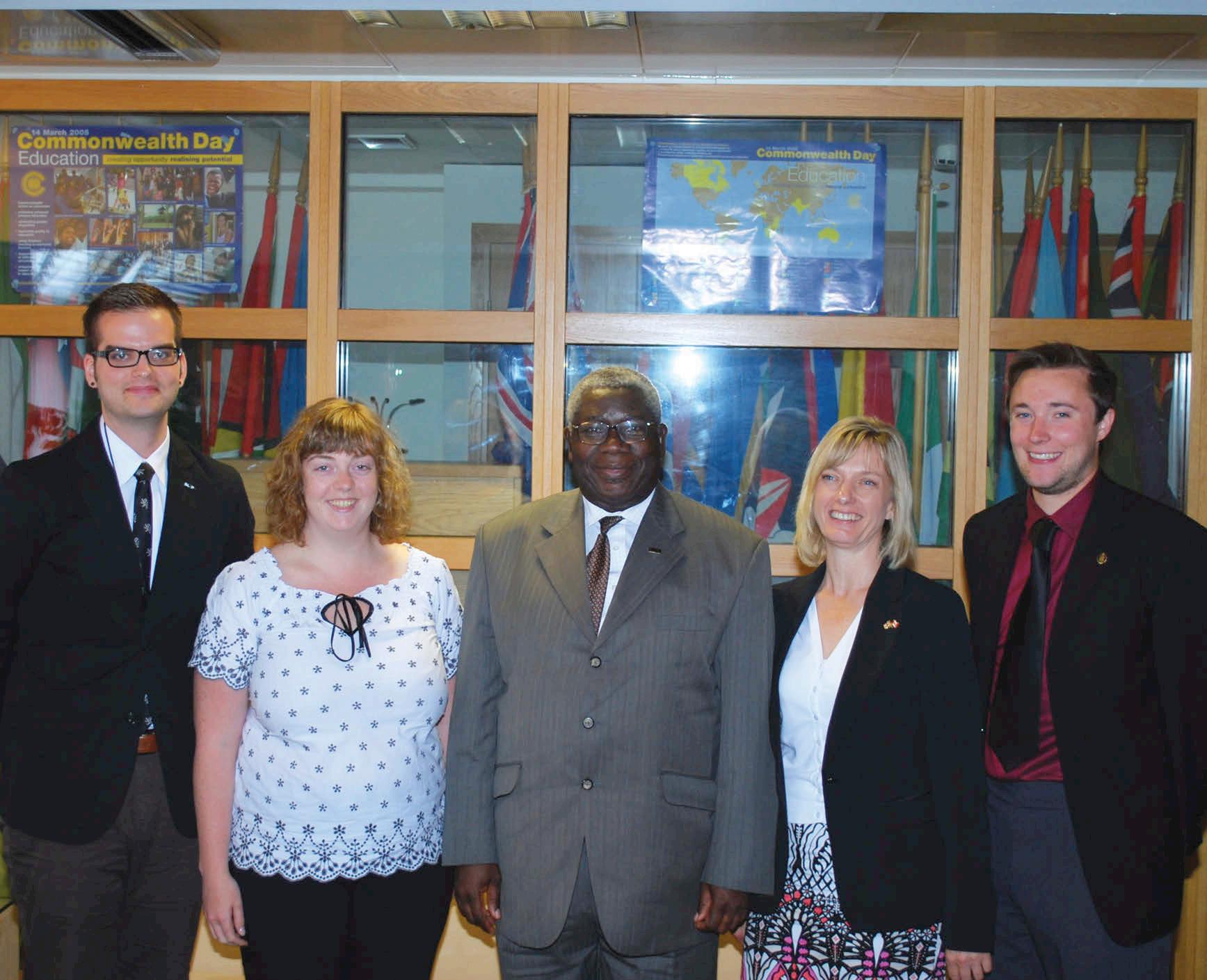
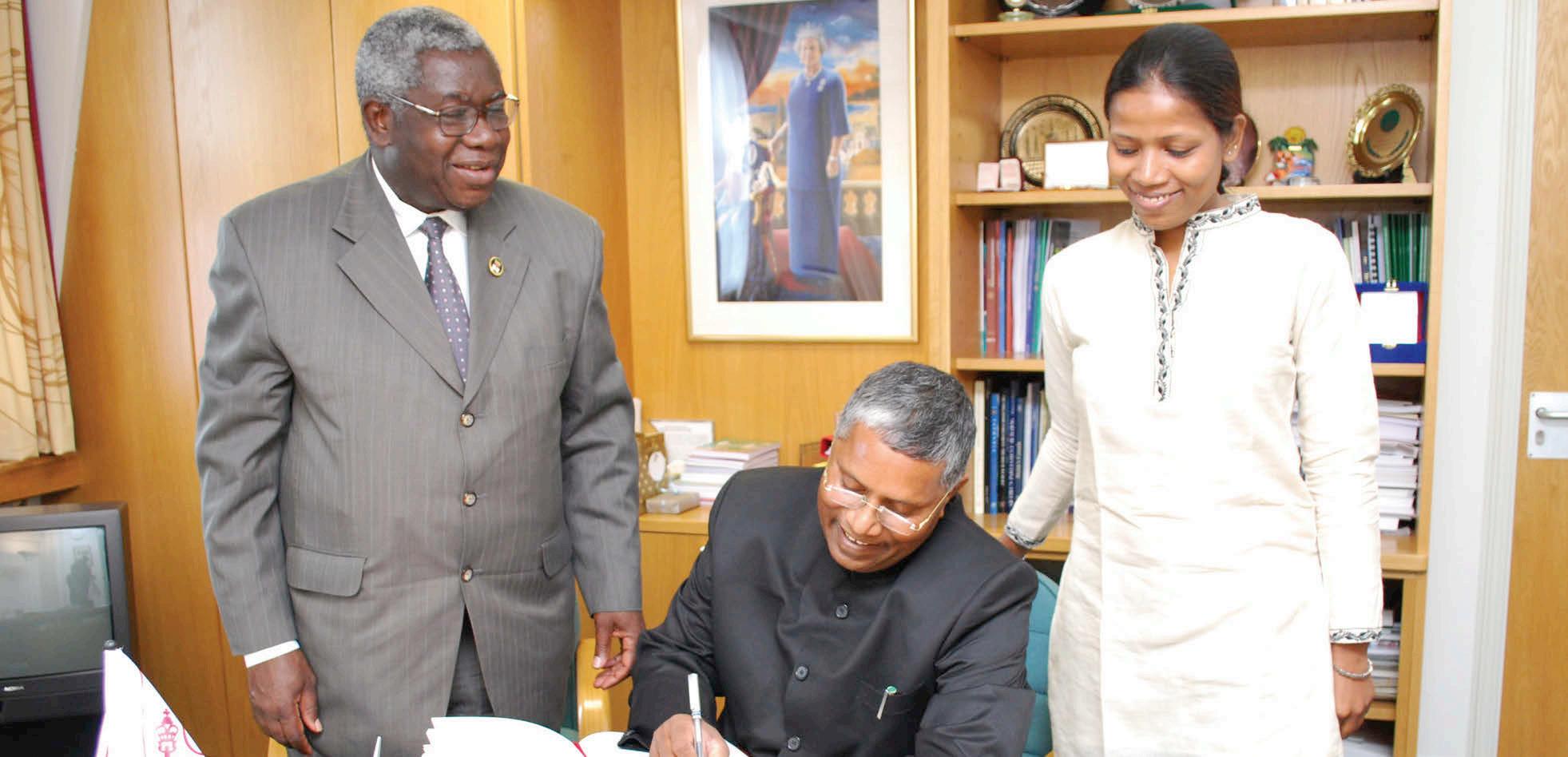

Malaysia’s Finance Ministry, under the direction of Prime Miniser Y.A.B. Dato' Sri Mohd Najib Bin Tun Abdul Razak, MP, reports on how the economic and financial crisis has imapcted his country and outlines the two stimulus packages that are being put in place to mitigate the impact of the global slowdown on the affected segments of the economy.
Finance Ministry of Malaysia in Kuala Lumpur.
Malaysia’s Minister of Finance is Prime Minister
Y.A.B. Dato' Sri Mohd Najib Bin Tun Abdul Razak, MP, who was sworn into both posts in April 2009. He had been Deputy Prime Minister since 2004.
The global financial crisis – which originated from the United States (U.S.) sub-prime mortgage defaults that started unraveling in September 2007 – has since evolved into an economic crisis, impacting the real sector of economies around the world. In the face of an unstable financial sector and plummeting global demand, more than half the major economies are now in recession and experiencing the most severe downturn since the Great Depression in the 1930s. Despite initial immunity to the financial turmoil affecting the U.S. and Europe, Asia started to feel the impact as demand for its exports plunged in late 2008 and worsened during the first months of 2009, impacting trade, investment and production activities in the region.
With the contraction in the advanced economies spilling over on to the emerging economies, the International Monetary Fund (IMF) in March 2009 forecast that global
growth would decline between0.5 per cent and -1.0 per cent in 2009 (2008: 3.2 per cent), before gradually recovering in 2010. The advanced economies are expected
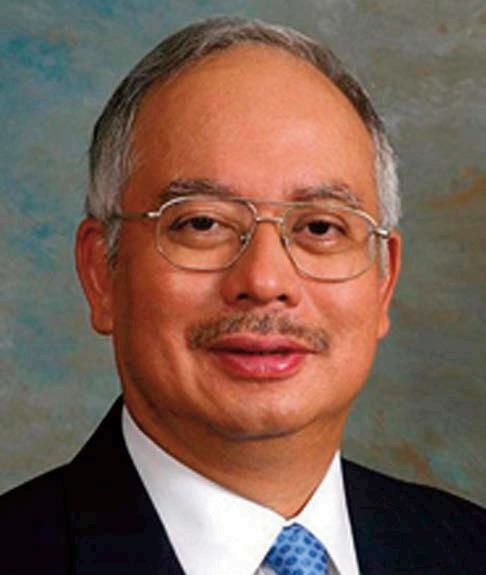
to contract 3.3 per cent (2008: 0.9 per cent), while growth in emerging and developing economies is anticipated to slow significantly to 2.0 per cent (2008: 6.1 per cent). Likewise, growth in ASEAN-51 economies is also expected to decline from 4.9 per cent in 2008 to 0.7 per cent in 2009. The rapid
deceleration of growth in the region is largely transmitted through the drop in world trade, which according to the World Bank, is likely to record its largest decline in 80 years, with East Asia experiencing the sharpest losses.
Malaysia, one of the world’s most trade-based economies, has not been spared from the effects of a sharply deteriorating global economy. The first signs of the impact were apparent during the fourth quarter of 2008 when the Gross Domestic Product (GDP) recorded a significantly lower rate at 0.1 per cent compared with an average of 6.3 per cent during the first nine months of the year. The lower growth rate was mainly due to the contraction in external demand, which impacted exports of manufactured goods and commodities, investments and industrial output, and subsequently affected income and domestic demand. Having recorded 4.6 per

cent growth for the year (2007: 6.3 per cent), the economy is expected to experience the full impact of the global downturn in 2009.
The precipitous decline in the global economy impacted the domestic economy through the following factors:
i.Contraction of exports: – In line with deteriorating world demand, gross exports contracted 15.9 per cent in February 2009, while the Industrial Production Index
(IPI) dropped 14.7 per cent;
ii.Falling value of primary commodities, particularly crude oil and palm oil: In the first quarter of 2009, the price of Tapis crude oil averaged USD48 per barrel (highest price was USD143.11 in July 2008), while palm oil averaged RM1,900 per tonne (highest price was in March 2008: RM3,674);
iii.Decline in foreign direct investment (FDI) inflows: FDI
is estimated to be half the RM51 billion received in 2008;
iv.Rising retrenchment: For the period October 2008 to 10 April 2009, total retrenchment reached 30,000 workers (2007: 14,035 workers);
v.Significant decline in the stock exchange: Bursa Malaysia dropped in tandem with the global meltdown in equity

markets which has, in turn, adversely impacted investor and consumer sentiments as well as the performance of the services sector. Bursa Malaysia fell to 872.55 points as at endMarch 2009, as compared with 1,519.22 points on 11 January 2008.
Nevertheless, the Malaysian economy continues to face the ongoing global economic and financial crisis from a position of strength. This is largely due to the sound financial system that has been strengthened since the Asian crisis a decade ago, as well as the more balanced and diversified economic structure. The country’s external position is healthy, with low external debt, a large current account surplus and high international reserves. The financial sector remains robust, with a wellcapitalized banking sector, relatively low indebtedness among individuals, businesses and government, as well as high domestic savings that are financialised. Furthermore, the sector remains capable of weathering the challenging environment supported by a high degree of systemic and institutional resilience, as well as strengthened risk management practices and capabilities that are reinforced by strong governance and internal control.
Given the continued uncertainty in the external environment, the government focused on supporting domestic demand by ensuring that there will be continued expansion in private consumption and public spending, as well as creating job opportunities. Essentially, the policy response has been in the form of fiscal stimulus and monetary easing measures to ensure credit flows for private sector activities and to stimulate growth.
Malaysia’s response to the economic crisis
Recognizing the need to further strengthen domestic demand to
mitigate the impact of the global slowdown on the affected segments of the economy, the government announced two stimulus packages, namely, the First Economic Stimulus Package on 4 November 2008 and the Second Economic Stimulus Package on 10 March 2009. These packages focus on strengthening the domestic economy through facilitating private sector activity, reducing unemployment and increasing employment opportunities, ensuring access to credit, as well as building capacity for the future.
Worth RM7 billion, the first Stimulus Package focuses on three main strategies aimed at strengthening the resilience of the economy, as follows:
Strategy 1: Ensuring the well-being of all Malaysians
Under this strategy, various measures were introduced to ease the burden on Malaysians and ensure none are marginalized. In this regard, a total of RM2.6 billion was channeled for:
i.Upgrading and maintenance of public transportation as well as expediting the implementation of public transport projects;
ii.Building additional low- and medium-cost houses;
iii.Reviving abandoned housing projects;
iv.Implementing small maintenance infrastructure projects; and
v.Providing additional business premises for small and medium enterprises.
Strategy 2: Developing Quality
The second strategy emphasized building quality human capital towards achieving a knowledgebased economy. A total of RM1 billion was allocated for this

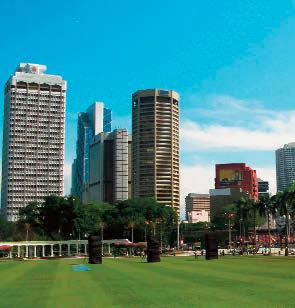
purpose. Measures include:
i.Enhancing training and employment opportunities;
ii.Training of youth in private training institutions;
iii.Enhancing youth programmes and pre-school education; and
iv.Providing financial assistance to government-aided religious schools, national-type Chinese and Tamil schools, as well as mission schools.
Strategy 3: Strengthening the Nation’s Resilience
The government also focused on enhancing the private sector contribution and creating a
conducive business environment to remain competitive. A total of RM3.4 billion was allocated for this purpose. Specific measures in this strategy are as follows:
i. Establishing an investment fund to attract private investment;
ii.Upgrading and maintenance of social infrastructure and public amenities such as roads in rural areas, schools, hospitals, police station, as well as army and police quarters; and
iii.Accelerating the implementation of the High Speed Broadband (HSBB) project as a catalyst to
spearhead private investment and reduce the cost of doing business.
Other measures introduced under the First Economic Stimulus Package include:
i.Ensuring the effectiveness of government expenditure – this entails re-prioritizing government projects to focus on those with a high multiplier effect and low import content;
ii.Providing a conducive business and investment environment as well as creating more sustainable job opportunities in the private sector, including:
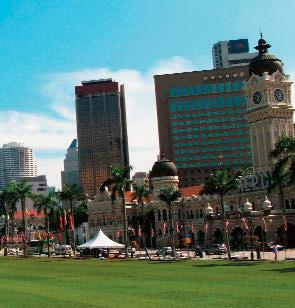
•Abolishing the import duty on cement and liberalizing imports of long iron and steel products;
•Allowing the purchase of commercial properties above RM500,000 by foreigners;
•Providing micro financing to commercial banks and Amanah Ikhtiar Malaysia (AIM);
•Issuing work permits directly to knowledge workers in critical fields;
•Facilitating the development of health and education tourism, particularly through injecting human capital by simplifying immigration procedures;
•Encouraging the employment
of professionals and skilled Malaysians affected by the global financial turmoil through the Graduate Employability Management Scheme (GEMS) implemented through the Government-linked companies (GLCs); and
•Extending business hours for shopping malls and hypermarkets; and
iii.Ensuring higher disposable income and sustaining domestic demand through:
•Allowing the voluntary reduction of the Employees Provident Fund (EPF), where employees’ contributions could
be reduced from 11 per cent to 8 per cent for a two-year period; and
•Allowing government loans to be used for the purchase of properties in the secondary market without strata titles.
As the global economic crisis continues to unfold with no clear indications of stability in the global

financial sector or recovery in the advanced economies, the Malaysian economy is braced to experience the full impact of the global downturn in 2009. The government announced the Second Economic Stimulus Package amounting to RM60 billion in March 2009, primarily focused on supporting domestic demand and mitigating the impact of the global slowdown on the affected segments of the economy.
At 9 per cent of GDP and almost nine times the size of the first package, the second package is significantly larger and more comprehensive, encompassing various economic sectors and target groups. The measures outlined not only focus on boosting the economy in the short-term, but also strive to balance short-term requirements with building capacity for the future.
The package will be implemented over a two-year period, that is, 2009 and 2010. It comprises RM15 billion in a fiscal injection, RM25 billion guarantee funds, RM10 billion equity investments, RM7 billion private finance initiative (PFI) and offbudget projects, as well as RM3 billion in tax incentives. Its unprecedented size is expected to widen the federal government budget deficit from 4.8 per cent in 2008 to 7.6 per cent of GDP in 2009.
The package focuses on training and job creation, easing the burden of the populace, in particular the vulnerable groups, sustaining credit flows to support the private sector and building capacity for the future. It aims to ensure that Malaysia is well placed to seize the ensuing opportunities when the global economy recovers. Taking into account the full implementation of the measures to support domestic demand, the GDP growth is expected to be in the range of -1 per cent to 1 per cent for 2009.
The package is based on four thrusts, as follows:
•First: Reducing Unemployment and Increasing Employment Opportunities;
•Second: Easing the Burden of Malaysians, in particular, the Vulnerable Groups;
•Third : Assisting the Private Sector in Facing the Crisis; and
•Fourth: Building Capacity for the Future
Thrust 1: Reducing unemployment and increasing employment opportunities
The government is concerned about the difficulties faced by retrenched workers and unemployed graduates in securing jobs. To assist this group, the government will create a total of 163,000 training and job placement opportunities in the public and private sectors to enhance skills to meet industry requirements as well as employability. Among the measures include:
i.Joint provision of 100,000 training and employment opportunities by government agencies, including the GLCs and the private sector;
ii.Provision of financial incentives for those who want to pursue post-graduate studies;
iii.Doubling the levy imposed on foreign workers to reduce the dependency on foreign workers; and
iv.Provision of double deductions to employers on remuneration paid for workers.
Thrust 2: Easing the burden of Malaysians, particularly vulnerable groups
Efforts have been made to increase household disposable incomes as well as extend the social safety net programme. The assistance given is in the form of subsidies, incentives and assistance for fuel consumption, food security, scholarships and educational assistance as well as

social welfare programmes. The measures include:
i.Provision of subsidies to mitigate the effects of price increases of daily food staples, such as sugar, bread and wheat flour, as well as subsidies for toll rates;
ii.Increasing home ownership by accelerating the implementation of new housing projects, as well as providing tax relief for new house-buyers;
iii.Issuing syariah-compliant government savings bonds with an annual return of five per cent, available to all citizens aged 21 and above;
iv.Improving public infrastructure by accelerating the implementation of the Ninth Malaysia Plan (covering the period 2006 – 2010) projects with high local content and multiplier effect. Additional allocation is provided for the repair, renovation and maintenance of drains, roads, and surroundings of public flats, welfare homes, hospitals and schools, as well as fire and rescue stations;
v.Provision of basic amenities in rural areas, including roads, electricity and water supply, particularly in Sabah and Sarawak;
vi.Implementation of infrastructure projects in Sabah and Sarawak, including the expansion of the Sibu airport and deepening works at Miri Port;
vii.Improving school facilities as well as building and upgrading of schools, particularly in rural areas, including Sabah and Sarawak;
viii.Provision of microcredit programmes to assist farmers and agro-based businesses in rural areas;
ix.Establishment of the Fishermen’s Welfare Fund to assist fishermen affected by disasters at sea;
x.Assistance to the less fortunate by improving facilities of daycare centres -for the elderly, shelters for women and childcare centres;
xi.Ensuring the welfare of retrenched workers by increasing the tax relief on compensation paid; and
xiii.Provision of incentives for banks to defer repayments of housing loans for a year.
Thrust 3: Assisting the private sector in facing the crisis
Under this thrust, the government has undertaken measures to enhance investor confidence as well as ensure continuous access to credit, while minimizing the impact of the economic downturn on affected groups. These measures include:
i.Establishment of the Working Capital Guarantee Scheme and Industry Restructuring Loan Guarantee Scheme to provide working capital and encourage investments by businesses;
ii.Facilitation of access to the capital market by establishing the Financial Guarantee Institution to provide credit enhancement to private companies that raise funds from the bond market;
iii.Reduction of the cost of doing business by lowering the Human Resource Development Fund (HRDF) levy payment for all employers;
iv.Promotion of the automotive sector by providing an additional allocation for the Automotive Development Fund as well as introducing the auto-scrapping scheme for cars that are at least10 years old to purchase new national cars;
v.Promotion of the aviation industry by providing rebates of 50 per cent on landing charges for all airlines operating in Malaysia;
vi.Encouragement of
investments through the Accelerated Capital Allowance for expenses on plant and machinery and expenditure incurred on renovation and refurbishment;
vii.Allowing company’s current year losses to be carried back to the immediate preceding year to improve the cash flow;
viii.Provision of a higher threshold windfall profit levy on crude palm oil;
ix.Promoting the tourism sector by diversifying tourism products, upgrading infrastructure, improving the homestay programme as well as organizing more international conferences and exhibitions. In addition, work permits can be issued to skilled spouses of Malaysia MySecond Home Programme participants; and
xi.Attracting high-net-worth and skilled individuals by relaxing existing requirements for permanent resident status.
Thrust 4: Building capacity for the future
In order to ensure the economy is well placed to optimize opportunities that would emerge when the global economy recovers, the government has undertaken measures to strengthen and expand the nation’s economic capacity. The measures focus on stimulating new growth areas as well as restructuring industry towards high productivity and value-added activities. Among them are:
i.Increasing the investment funds of Khazanah Nasional Berhad, the government investment arm, for domestic investments over two-years in strategic sectors, including telecommunications, technology, tourism, agriculture, life sciences and projects in the southern regional development area, Iskandar Malaysia;

ii.Implementation of off-budget projects such as the low-cost carrier terminal at KLIA, expansion of Penang airport, construction of sky bridges and covered walkways between buildings as well as improving telecommunication infrastructure, including broadband;
iii.Provision of funds for PFI projects in strategic sectors such as education, health and tourism for industrial parks, bio-technology clusters and traffic infrastructure systems;
iv.Liberalization of the services sector which, in recognition of its potential to expand rapidly and contribute significantly to economic growth, will focus on attracting more investments, professionals and technology as well as strengthening competitiveness in line with commitments made under various trade agreements;
v.Adoption of a more liberal approach in formulating new policy guidelines by the Foreign Investment Committee (FIC) in an effort to attract more investment; and vi.Ensuring the effective management of public financial resources through strengthening government procurement and mandating the use of local materials, products and services.
Although Malaysia’s financial institutions are well capitalized with ample liquidity, the central bank, Bank Negara Malaysia (BNM), also undertook pre-emptive measures to enhance the financial safety net and boost confidence in the market. In an effort to maintain the stability of the financial system and stimulate growth, various measures were implemented, as follows:
i. Fully guaranteeing, until December 2010, all ringgit and foreign currency
deposits with commercial, Islamic and investment banks as well as development financial institutions (DFIs) through the Malaysia Deposit Insurance Corporation;
ii.Extension of the guarantee to all domestic and locally incorporated foreign banking institutions;
iii.Extension of BNM’s liquidity facility to insurance companies and takaful operators;
iv.Injection of an additional RM5 billion into ValueCap Sdn Bhd, the government specialpurpose vehicle, to invest in undervalued companies and thereby boost the stock market;
v.Reduction of the Overnight Policy Rate (OPR) by 150 basis points to 2.0 per cent to stimulate loan growth;
vi.Reduction of the statutory reserve requirement (SRR) by 300 basis points to 1.0 per cent to further reduce the cost of intermediation of banks;
vii.Introduction of an enhanced corporate debt workout mechanism for corporations to
restructure borrowings with multiple lenders as well as debt securities issued by them;
viii.Strengthening the regulatory framework by striking a balance between principles and rules-based regulations;
ix.Heightening the surveillance with intensified focus on key risks; and
x.Pursuing long-term developmental strategies to enhance the capability and capacity of the financial sector as well as reinforce Malaysia’s position as an international hub for Islamic finance.
The government will continuously monitor the implementation of the Stimulus Packages to ensure their expeditious and effective execution and, more importantly, that the desired results are realized.
In this context, a high-powered steering committee chaired by the Minister of Finance has been established. This committee is responsible for providing immediate policy decisions to ensure the timely implementation of the various programmes and
The government is confident that the measures under the two stimulus packages are sufficiently comprehensive to prevent the economy from slipping into deep recession. Going forward, there remain, however, significant uncertainties regarding the global economic outlook. Nevertheless, the strength of the Malaysian economy in terms of its fundamentals, namely, the sound banking sector, strong international reserves, high savings and diversified sources of growth, provide flexibility for the economy to ride out this challenging period and recover once the global economic and financial conditions stabilize. While supporting international efforts to reform the international financial architecture and avert trade protectionism, the government will continue to closely monitor developments in the global economy with a view to undertake further pre-emptive measures to alleviate the impact of the crisis on the domestic economy, as and when deemed necessary.
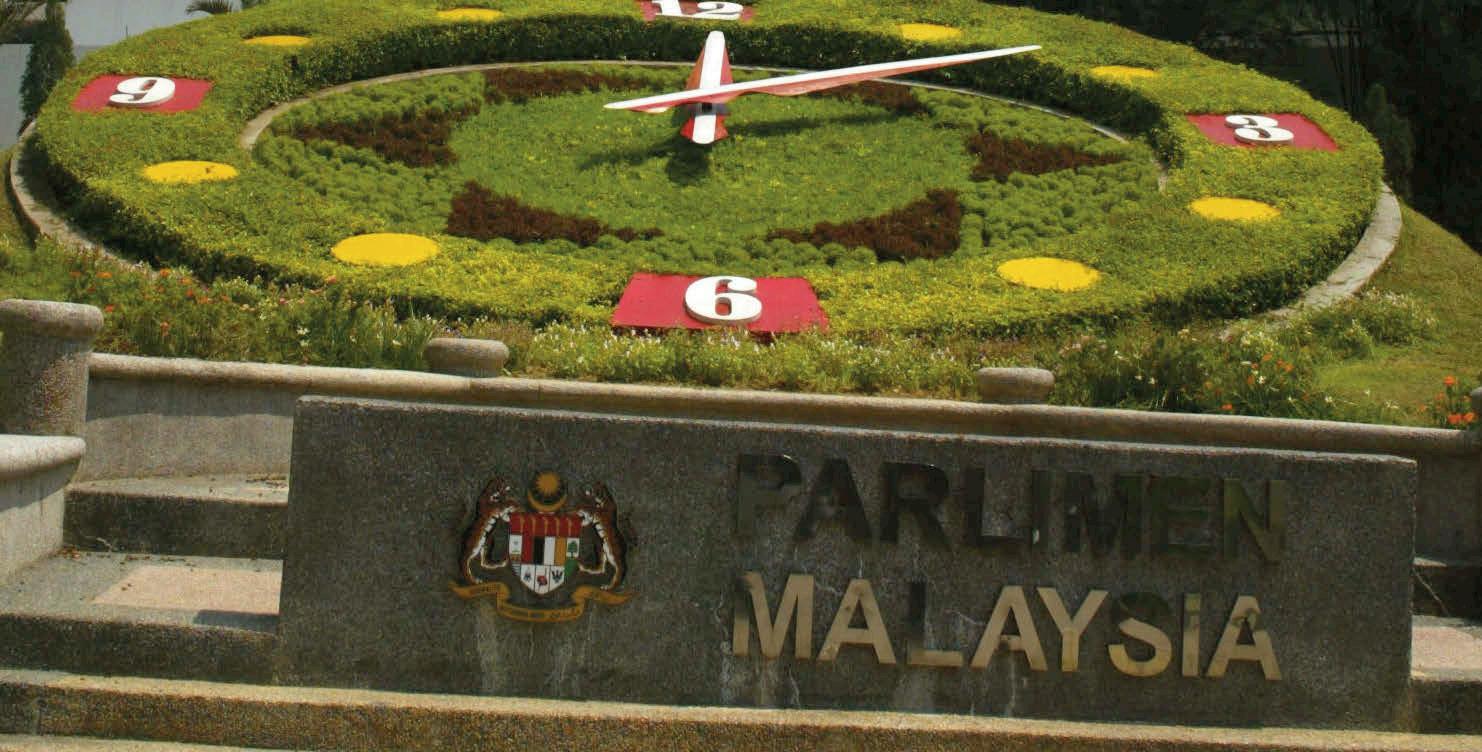
projects. The government has also set up a special website under the Ministry of Finance to monitor and enlighten the public on the progress of programmes and projects under both the packages.
References
1. ASEAN-5 countries comprise Indonesia, Malaysia, the Philippines, Singapore and Thailand.


While many developed countries may be struggling during the global recession, the Finance Minister of Pakistan’s Northwest Frontier Province highlights how smaller economies, particularly his country, Pakistan, are faring much worse.
Mr Khan is a Member of the Pakistan People’s Party Parliamentarians. He was first elected as District Nazim from Malakand and later contested the General Election in 2008 eventually winning the election from PF-99 Malakand Protected Areas-2.
In macro-micro economics, the terms “recession” means “The reduction of a country’s Gross Domestic Product (GDP) for at least two quarters; or in normal terms, it is a period of reduced economic activity”. To be termed as recession, the International Monetary Fund (IMF) regards periods when global growth is less than 3 per cent. On October 8, 2008, IMF released its World Economic Outlook, according to which the world economy was predicted to experience an all time low. While many economists and brokers alike, panicked; some shook their heads in dismay; some just planned on waiting to see what
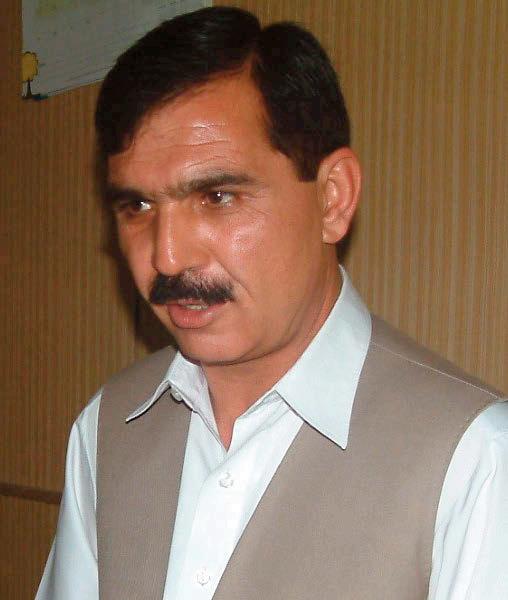
twisted fruits this might reap. This warning went unnoticed in Pakistan, and many of us just overlooked at the naivety of the IMF, for this prediction did not apply
to us at all – we were already kneedeep in it, and had been so for over a year!
Unfortunately, such predictions barely held any ground for the once 26th largest economy in the world, and 47th largest in terms of the dollar. It is sad to see our economy like this now, for Pakistan is actually a very economically diverse country, boasting industries of textiles, agriculture, sports goods, chemicals, food processing, and fishing, to name a few. We were, at one point, one of the top exporters of fish and shrimps to Europe. In 2005, the World Bank named Pakistan as the top reformer in the region; and by

2006 we had managed to decrease our poverty level by 21 per cent.
In the prevailing global economic melancholy, regrettably, now all these are tales of yester year. For right now is no better than that of any other under-developed country. The major reasons are not only the global recession; the icing on the cake of this grave slump has also been due to political instability over the past few years; no proper economic policies were implemented to cater for the potential economic sprawl; at least none that succeeded due to the lack of planning and approach. This caused a very high rate of inflation, which, in 2008, had increased to 25 per cent as compared to 7.9 per cent in 2006. In addition to this, we already had a negative balance of repayments, with the quantity of imports outstripping the quantity of exports. The result was that our main stock: the Karachi Stock Exchange became stagnant for the first time and then declined drastically. On the top of that, Pakistan’s GDP dropped to 4.9 per cent.
The value of the Pakistani Rupee crashed from 68-1 USD to 80 plus-1 USD in only months, the prices of commodities soared through the crown, the number of people living below poverty line increased from 60 million to 77 million, and consequently, the working class layman became virtually deprived from the very basic necessities like water, wheat, electricity, natural gas, and cooking oil; add to all this, the preposterous
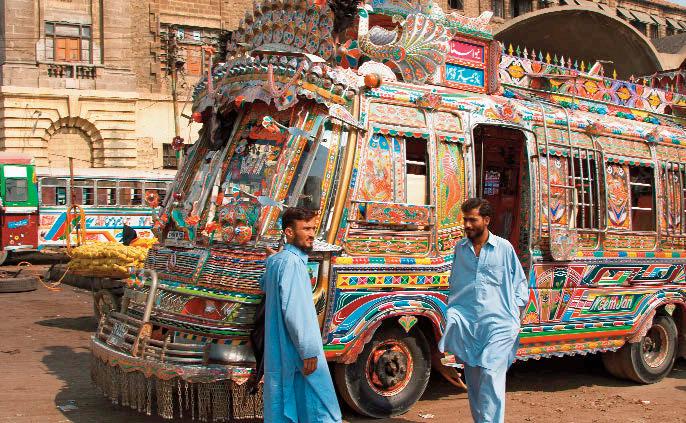
amounts of load-shedding, and what we get is a nation in need of global attention.
What occurred afterwards is what we call the domino effect.
The saga is that most of us live through this everyday. The privileged few of the population can keep small amounts of petrol at home, but all the others have to roam around the city, usually on foot, desperately seeking a petrol station that actually supplies petrol. We have been pushed to the cullsd’-sack by the recession to the status of a country where our most cultivated crop, wheat, is no longer available to the masses, and an average man on a minimum wage considers himself the luckiest man alive if he manages to get only one proper meal a day.
The bad luck has also gathered
mosses through other deteriorating factors such as floods, epidemics, earthquakes and security related issues. This accumulated to the phenomenon that we have reached a point where rebuilding our worsening economy will take time, constant vigilance, a lot of risks and of course, vast amounts of moneycum-moral-support from the national and international thinktanks-and-cannons. Thankfully, we have taken steps, like a loan of $9 million USD from the IMF, which will not only help us to bear the shocks of the recession but will also help us energize well to improve the situation. Bigger economies, like that of the United States, will survive this; our chances of making it unscathed, with our dignity and economy still intact, are extremely slim, it is, after all, survival of the fittest.
It has to be appreciated that some of the problems are related to the global financial crisis, but
many of the issues are the result of our lack of awareness of the economic crises and due to be short of our own good governance. It is believed though that the developed nations, particularly the U.S., Germany and Japan, are the worst affected from this financial crisis whereas the developing nations like Pakistan, India, Brazil, etc., – though affected to some extent – have been largely immune from it.
About the impact of this global phenomenon on Pakistan, it can be pointed out that some of the areas of the local economy would be affected the most. These areas can be identified as four domains, which would probably be the victim of this situation. First, our exports, particularly those of textiles and clothing, will go down because of shrinking purchasing power of customers in the developed countries. Second, remittances are also likely to decline with the return of skilled and unskilled labour forces from abroad owing to the depressed jobs situation. This heavy loss is because due to the fact that remittances contributed significantly to the national economy over the years. Third, poverty levels would increase in the coming days as dependence on the IMF would hurt the economy, ultimately pushing more and more people below the poverty line. And finally, financial aid from the developed nations would not be coming in as they would find it hard to assist Pakistan owing to the economic crisis of their own.
The dollar factor of causing world financial crises
Over the last couple of months we have seen the world go through its worst financial and economic crisis. The icons and giants of banking have gone bankrupt and there is uncertainty in the financial markets of the entire world. Stock markets have been crashing one after another reaching their lowest in decades. Investors and public have lost trillions of dollars. We, the poor

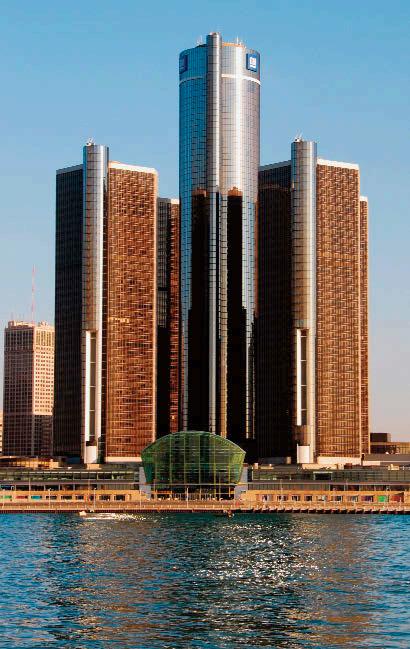
recipients of this yarn are just mere onlookers with and trying to figure out the reasons of this fiasco. The dollar has contributed significantly in the entire crisis. The
fact is that the U.S holds the world to ransom by controlling the international currency of exchange, and while the exchange rate mechanism has never broken the
shackles, the common currency strategy adopted by European countries is making a slight difference, but the third world is far behind in gaining substitute support.
After the Brettonwoods Conference in 1944, it was decided that the dollar would be used as the international currency of exchange and trade. This meant that all currencies would be pegged against the dollar. As time went by, the U.S. became the single largest consumer in the world accounting for 30 per cent of world consumption. Therefore, it also became the largest consumer of the dollar. This means that today, the U.S. controls both the supply and demand side of world money.
If one analyses the events of the last few months, we can find some startling findings. The crisis was caused “may be unknowingly” by a mix of American willingness and esteem to lead the world economy and the consequent failed policies in the banking sector which resulted in the collapse of Wall Street. However, if we look more carefully, the dollar since then has become stronger while other currencies have reduced up to 20 per cent of their value. This means that the rest of the world will have to pay more for their imports and purchases from now on while their Exports are exposed to low return due to stronger dollar value at the cost of inflated local currencies.
The strange and sad side of the issue is that whether or not the U.S. does anything to support the dollar, the world will not let the dollar fall. The reason is simple. All the foreign exchange reserves of the world are in dollars. So if the dollar drops in value then in effect everybody loses money. Therefore, countries will continue to make efforts to keep the dollar strong or at least sustain it due to the perpetual strength we all bestow upon the dollar without getting anything back in return.
If the U.S. dollar collapsed, it would bring the world economy to
a grinding halt. Not only would the small economies vanish but even countries like China – which has the capacity of being the largest buyer of the dollar in the world –would greatly suffer. China buys the dollar to keep the Yuan low to promote its exports; 1.8 trillion dollars of forex reserves being the largest stakeholder in Freddie Mac & Freddie Mae and America owes 30 per cent of its debt to China. Therefore, if the American economy collapsed, it would take China down along with it. In the prevailing situation, the U.S. has instituted the 700 billion dollar bail out package for its banking sector. Where did that money come from? It was “Fiat Money”. Fiat money is “money which has no intrinsic value and cannot be redeemed for specie or any commodity, but is made legal tender through government decree.” In the normal scenario all currency issue has to be backed by gold. However in the case of the 700 billion dollar package the money was just created out of thin air without any backing of gold. Now, issuing fiat money reduces the value of the currency, in this case the dollar and also cause inflation. Promoting inflation is one of the ways for an economy to avoid going into recession and this to some extent is working for the U.S. However the dollar did not become weaker but instead is growing stronger. Therefore, America never faced the REAL downside of issuing Fiat money.
The
We should not think that the recession was a tsunami that came, did its damage and passed by. The worst is yet to come. This time it will be bigger and accompanied by many more people losing their jobs and livelihood. Earlier, it was the collapse of Lehman Brothers – the long standing banking firm in the U.S. – that took the world by a storm, and now it is predicted that the American automobile
company, General Motors, could follow suit.
From the outset, it seems that three of the biggest American automobile companies are in trouble. GM, Ford and Chrysler are struggling to survive. With sales falling at an alarming pace due to drop of demand, the companies are taking drastic and desperate measures in saving their sinking ships.
The crisis is not just limited to the U.S, what now with Volkswagen being bought over by Porsche. There is likely to be further consolidation in Europe with companies like Fiat being bought over. Toyota is likely to buy out most of the Japanese and Korean manufacturers.
The aforementioned facts are not just to hurl over the U.S. or Chinese economies, but being giants in the international markets, any small shock to these economies can cripple the economies of small and underdeveloped nations.
People believe that poor countries don’t feel much impact of the global economic recession as they already don’t have much to lose. The people of these countries are not much affected as they already don’t have jobs to be fired and businesses to be slashed. These people are hardly managing to get two meals a day, just enough clothing and flimsy shelters. However, the current global recession could worsen the situation for the poor people of countries like Pakistan. The two per cent of the population who make up the elite of Pakistan would remain oblivious but the same cannot be said for the common man.
The International Labour Organization in its 2009 report has expressed concern that under the present label of global recession, 20 million jobs would be wiped off by the end of this year. However, if
the recession further deepened, in the worst case scenario, the reduction in jobs could touch 50 million, an eye opener for counties like Pakistan whose GDP is strongly correlated to its labour force sending millions from around the world. Savings should start on emergency basis against the spending to be curtailed and we should accumulate for the very tough times ahead.
“We should not think that the recession was a tsunami that came, did its damage and passed by. The worst is yet to come.”
The impact of global recession on terrorism
There are two important reasons why the threat of global terrorism is growing. The first is long-term and structural. The second is more directly tied to the global financial crisis. Both have every thing to do with what’s happening in Pakistan and in the North West Frontier Province particularly.
First, a report released in December from the U.S. Commission on the Prevention of Weapons of Mass Destruction, Proliferation, and Terrorism hints at both sets of problems. The report notes an increasing supply of nuclear technology and material around the world and warns that "without greater urgency and decisive action by the world community, it is more likely that a weapon of mass destruction will be used in a terrorist attack somewhere in the world by the end of 2013." It may be a hypothesis, but what if it happens?
Destructive (and potentially

destructive) technologies are now more accessible than at any time in history for small groups and even individuals. This will dramatically increase the baseline threat of disruptive violence from non-state actors over time. It’s not just biological and nuclear material. GPS tracking devices helped pirates operating off Somalia’s coast venture further from shore and undertake increasingly ambitious attacks on private and commercial vessels.
Second, it’s unlikely that we'll see the "greater urgency and decisive action by the world community" that was called for. For the moment, political leaders around the world are too busy wrestling with the effects of the global financial crisis on their domestic economies (and their political standing) to coordinate action against such a diffuse threat. There is another reason why the financial crisis heightens the risk of global terrorism. Militants thrive in places where no one is fully in charge. The global recession threatens to create more such vacuums and put the world more vulnerable to terrorist activities.
The think tank in Pakistan has termed the existing tariff structure as anti-export and has emphasized for putting in place an export friendly tariff structure in the country. In a presentation given to the government, it was informed that export growth is not possible through trade policy alone as its growth depends on overall economic policies – fiscal, monetary and industrial. Export growth policies include rationalization of tariff structure, which currently has an anti-export bias and induces investment in production for a highly protected local market.
The current exports situation in Pakistan in the year 2008-09 started very well for Pakistan with a

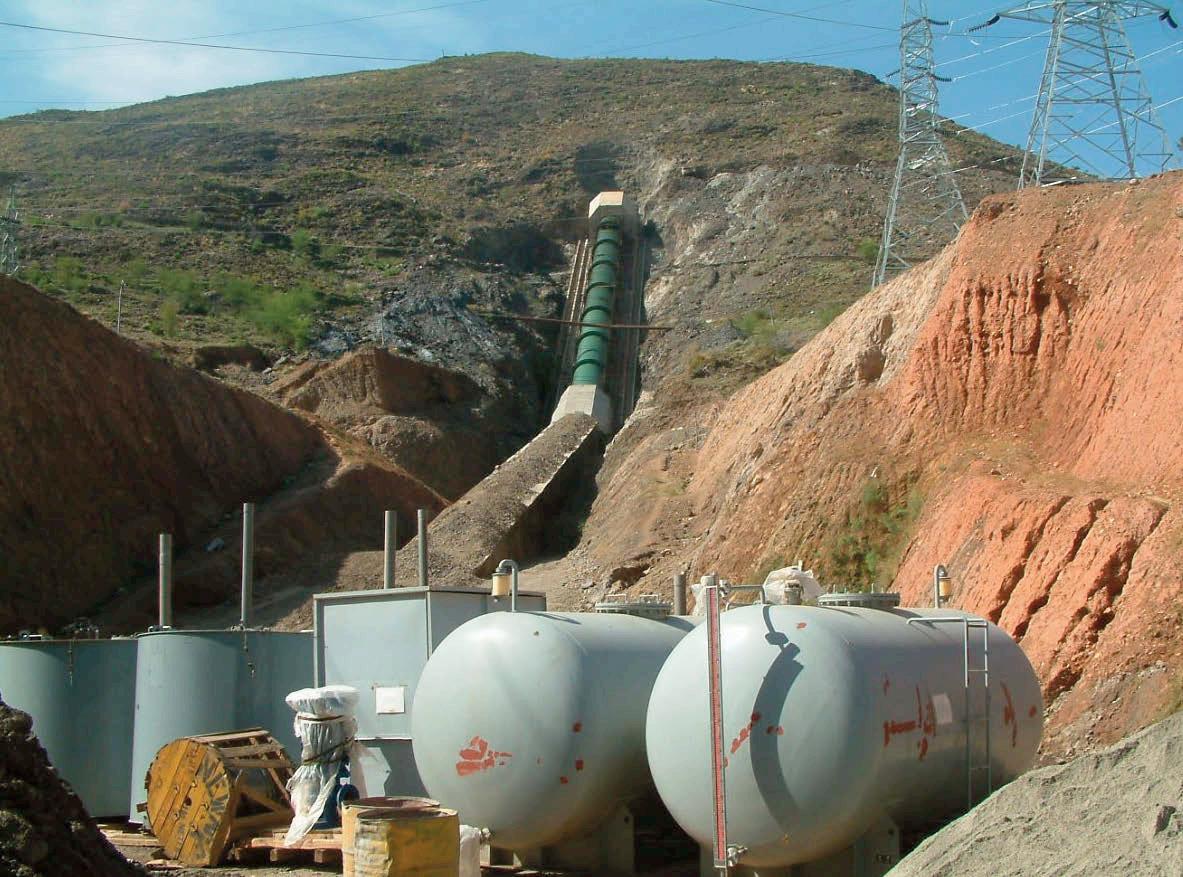
good growth in exports from July to October. However, power outages and gas load shedding have had affected production, enhancing production cost and retarding exports. Growth in “miscellaneous” and in sub-sectors of good growth of cement exports mean less dependence on textile in future. Other constraints inhabiting exports were identified as a higher markup rate, energy crisis and global recession.
It is believed that Pakistan’s import basket is dominated by petroleum, agriculture and machinery. All types of machinery including telecommunications, textiles and raw materials like raw cotton and synthetic fiber, make up
44 per cent of the import basket of the country. Petroleum accounts for 29 per cent and agriculture at 10 per cent. The remaining 14 per cent is made up of transport, six per cent, and other items at eight per cent.
The global financial crisis originated in the U.S. sub-prime mortgage sector in 2007 owing to concerns about the high proportion of bad mortgage loans. This resulted in a rapid credit contraction and negative investor sentiment leading to a major downturn in the Dow Jones and Nasdaq beginning in mid-2007. This knock-on global effect led to swift declines in Asia Pacific bourses, such as in Hong Kong,
Singapore, India and Pakistan. Consequently, negative global investor sentiment led to a decline in foreign direct investment to the region slowing economic growth. In addition, slowing demand in the U.S. (a major export destination) as well as the EU will reduce export revenues in export-facing countries across the region. While slowing global commodity prices will offer some inflationary relief, it will damage revenues for commodity-reliant countries such as Bangladesh and Pakistan. The overall economic growth in Asia Pacific will slow in line with the global economic slowdown, although growth in leading economies such as India and
Above: raw materials such as cotton and petroleum constitute a large proportion of Pakistan’s imports.
Right: pottery and marble production at Shabqadar Fort.
China may remain stronger or at least hold back the crunch of the crises for a while.
Recession sans mercy; poor or rich
The idea that emerging economies had decoupled sufficiently from developed economies has proven not to be the case.
Of the Asian economies, Japan will be the worst affected, owing to
the fact that its export-oriented economy has been badly hit by the global slowdown, as well as historical problems with economic growth and deflation;
The export-orientated economies of Hong Kong, Singapore and South Korea will also be badly affected, all expecting growth of only 2.0 per cent in 2009.
The shocks and aftermaths
Commodity prices declined unexpectedly and rapidly and developed countries are enveloped in a recession that is considered to be the worst since the Great Depression of the 1920s and 1930s. This affected Pakistani exports, both agricultural exports like cotton and rice and manufactured exports like garments and sports goods.
The reduced prices of imports, especially of oil imports have given significant relief to the trade balance but inadequate to turn the persistent trade deficit into a surplus. Even though this year’s trade deficit is likely to be lower than last year’s, it would still be a strain on the balance of payments. Export growth is likely to be modest or even negative and therefore a detrimental factor in the trade balance.
owing to the lower incomes in West Asian countries. Already significant numbers of workers have returned from these countries due to the shut down of construction and other service industries.
The second feature in the balance of payments has been
more from it. Once again the poor countries must respond to it through economic policy measures that mitigate the ill effects of the global recession.
In this situation, we in Pakistan propose a common strategy to embark upon the
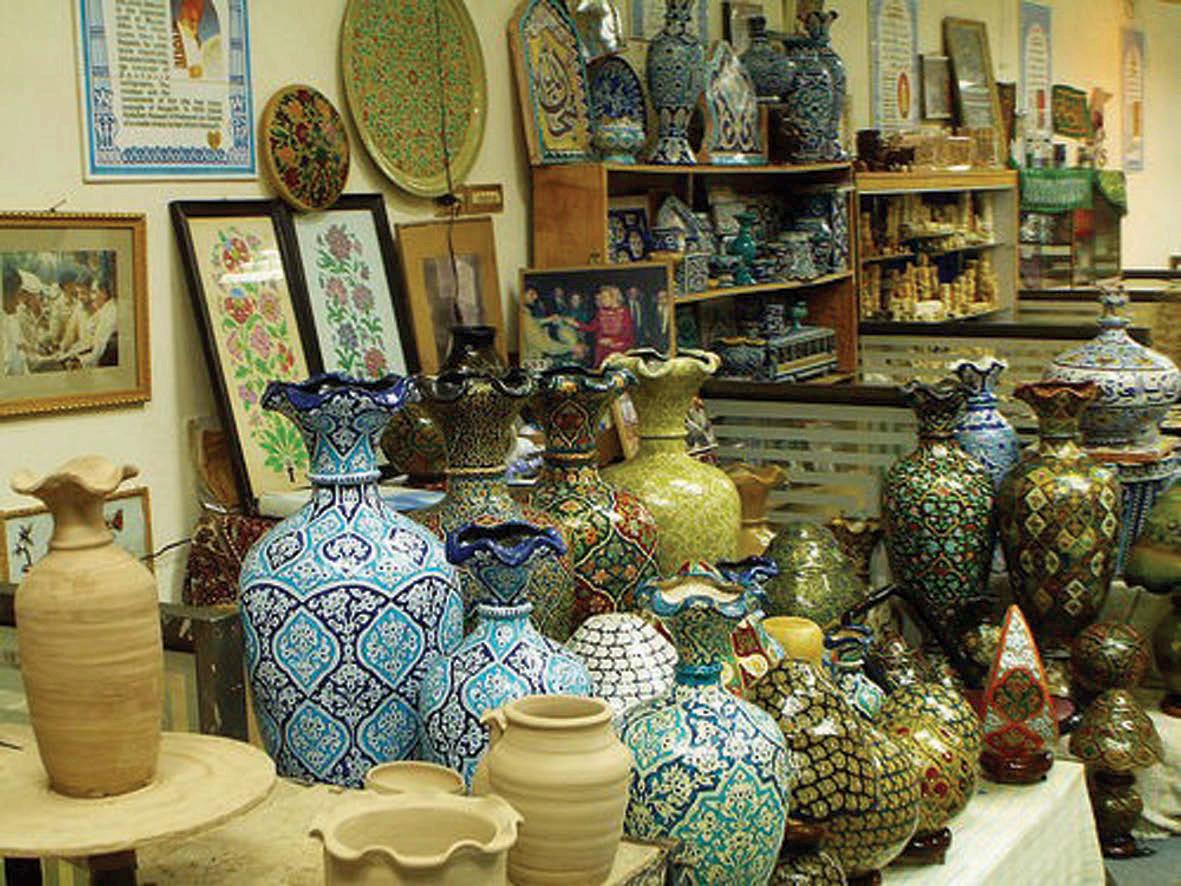

recession with the able support of international donors such as the IMF, the USAID, the OPEC, EU, Asia Foundation etc. With the current support of IMF, the immediate danger we might have avoided but the very repercussion of the loan and its after effects can hit twice as hard than the original
Two other features need to be illustrated. The country has been able to sustain large trade deficits and in fact have small balance of payments surpluses owing to two main reasons. First, remittances from Sri Lankans abroad have financed over a third of import expenditure.
The increase in private remittances especially in 2007 and 2008 are attributed to the higher incomes of oil producing countries in West Asia. This adds a complication to the current situation as it is feared that remittances may decline this year
borrowing. What one borrows today has to be returned tomorrow. Similarly the financial investments that come in today will be taken out tomorrow. This happened last year when the government repaid loans and investors took their money out. These were contingent liabilities that give relief in the current year but cause strains later on. In this context one must note that the IMF borrowing would be quite different in that it is likely to be a long term loan at low rates of interest.
Pakistan is the other country in the region that is in economic commotion. The global recession that is occurring in developed countries is not an intentional creation of their own. Yet it is a fact that the less developed countries were not responsible for it, they will suffer
effects of recession. It would be a good idea to develop a common consortium/economy or at least a common podium for our imports and exports through a unified currency, fixing its exchange rate mechanism with the U.S. dollar.
Others solutions may include, the redefinition of trade, taxation and free markets among the member nations of the Commonwealth. It is also advisable to closely watch and peruse the model of the G-20 London summit which pledged for a sum of more than $1.0 trillion to the International Monitory Fund (IMF) and other international bodies to help the poor developing countries counter the effects of the ongoing global economic crisis and to curb the tax havens in order to make the economy transparent and accountable for.
The government in Pakistan is striving hard to combat the
Therefore, the government of Pakistan has planned to streamline its governance behavior, maintain a better collection of taxes and control corruption. It is also plans to extend subsidies and subvention on the indigenous industries of sports goods, surgical appliances in Syalkot, Punjab manufacturing plants as well as encourage the agriculture sector in Pukhtoonkhwa , Punjab, and some parts of Sindh valley. In particular, farmers need to be encouraged by extending subsidies on their production on crops (wheat, sugarcane, gurr) in most parts of Punjab, Sawabi, Mardan and Shabqadar (Attaki). The Chagharmatti in Peshawar valley is a natural venue to address both the tribal belt and urban areas where industries like marble, natural gas and sugarcane mills are present.
There are so many natural resources found in Mohmand Agency adjacent to Shabqadar Fort, Swat, Nathyagalli and elsewhere in the country that need a systematic approach and government support. Areas, like Shabqadar Fort is splitting the settlement areas of Peshawar, Charsadda and Mohmand in Fata. It is also a threshold to major routes leading to Afghanistan and the rest of Central Asia.
Sponsoring good projects in such areas help to encourage development and discourage terrorism by creating jobs and promoting self-esteem in the people of the region.

The former Speaker of the Lok Sabha in India steps down after five years as Speaker and nearly four decades as a Parliamentarian. His farewell speech is presented in this article.
Shri Chatterjee was the Speaker of the Lok Sabha from 2004 to 2009. He began his career as a lawyer and joined active politics in 1968, when he became a member of the Communist Party of India (Marxist). In recognition of his immense and invaluable contribution in the strengthening of India’s parliamentary system, he was conferred the “Outstanding Parliamentarian Award” in 1996.
Honourable Members, I take this opportunity to express my profound gratitude to all sections of the House for the support and cooperation extended to me in the course of the discharge of my duties as the Presiding Officer of this great Institution. At the end of the last session of the 14th Lok Sabha, I feel that now is the appropriate time to take stock of what this House has been able to achieve in the last five years and make a dispassionate introspection.
Iwish to express my sorrow that Hon. Prime Minister Dr Manmohan Singh and Shri Atal Behari Vajpayee were unable to attend due to their indisposition. On my behalf and on behalf of the House I wish a speedy recovery to both the Prime Minister and to Shri Vajpayee. I also convey my very best wishes to my dear and young friend Shri Priyaranjan Dasmunsi for a speedy recovery.
The 14th Lok Sabha was constituted on 17 May 2004 and the House met for the first time
on 2 June 2004. In all, the House had till today, 332 sittings.
On 4 June 2004, the House bestowed upon me a great honour by unanimously electing me to the August Office of the Speaker. My colleague, Shri Charnjit Singh Atwal was also unanimously elected as the Deputy Speaker on 9 June 2004. It has been our endeavour to conduct the proceedings and the deliberations of this House to the best of our abilities and in an impartial manner and uphold the dignity of the House. I also express my deep gratitude to the distinguished Chairpersons on the panel for the most conscientious and able manner in which they conducted the proceedings of the House.
As the Presiding Officer of this August House, I have always tried to promote quality debate on all issues by giving opportunities to each section of the political spectrum in the House and to facilitate a smooth and orderly
transaction of the business in the House. To this end, I initiated several procedural reforms such as daily meeting with the Leaders of Parties and groups before the start of the day’s proceedings to seek cooperation and support in obviating disruptions and disturbances in the House. As time is precious, I started making a weekly statement every Tuesday on the business transacted by the House to make every Member aware of the time which was well spent and the time which was wasted in the House.
As Members are aware, much of the work of the House is now done by Committees. The Parliamentary Committees have, during the past five years, done excellent work. The Departmentally Related Standing Committees have been restructured and their number has been increased to 24 and their jurisdiction defined. This restructuring intended to bring about an improvement in the examination and scrutiny of the Demands for Grants of the
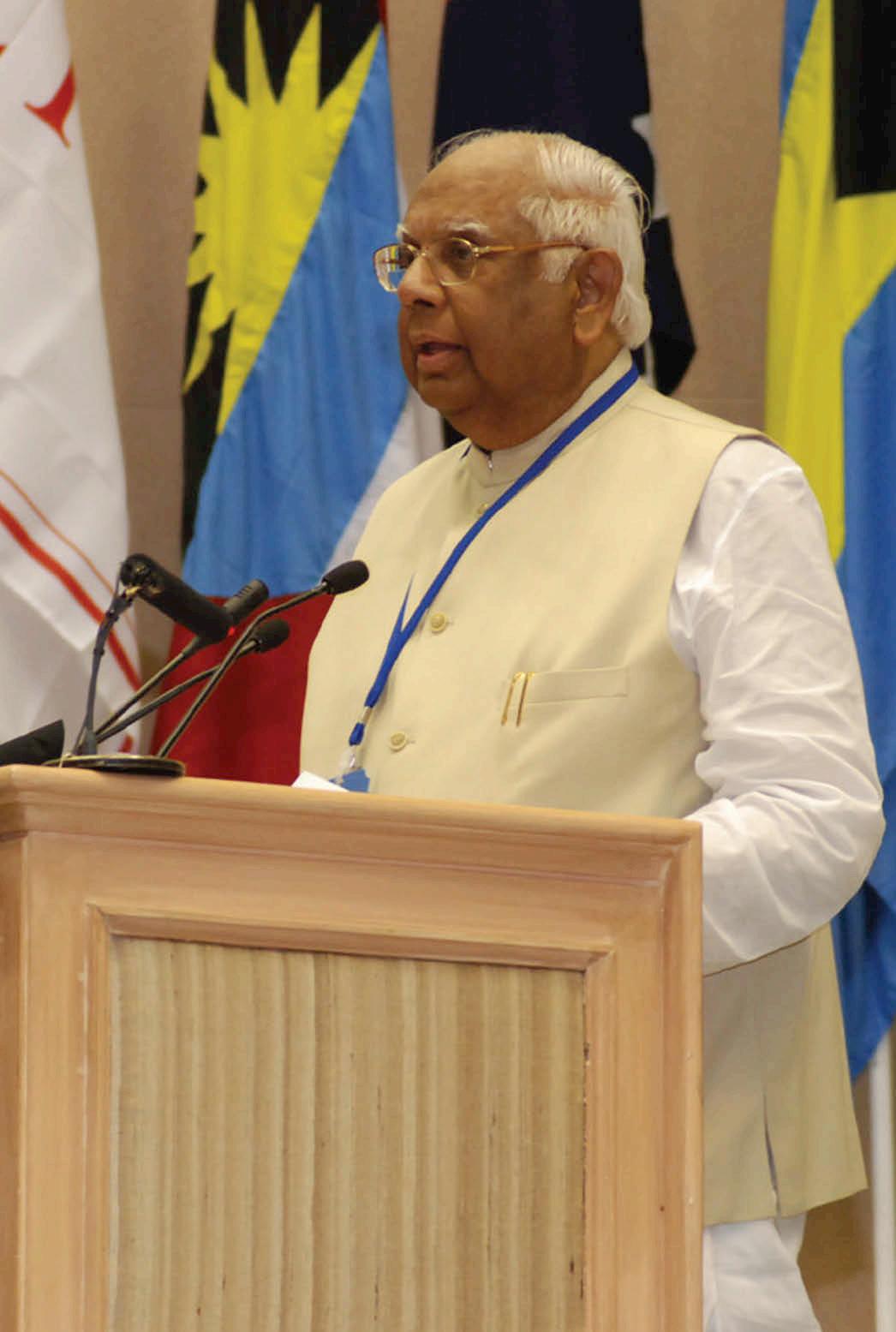

Parliamentary Committees functioned effectively and efficiently during the present Lok Sabha and made many important recommendations. The Standing Committees of Lok Sabha presented as many as 626 reports. I am happy to record that the Members almost on all occasions considered the issues and problems which came before the committees in a non-partisan manner. As Members are aware, a new Direction 73A was incorporated in the Directions by the Speaker which made it incumbent on all the Ministers to make a statement in the House, on the status of implementation of the various recommendation/observations made by the Standing Committees in their reports within six months of their presentation in the House. In this context, the Ministers made 388 statements regarding the status of implementation of the recommendations/observations contained in the Reports of the Standing Committees.
Asking questions is an important instrument for Members to scrutinize the functioning of the executive. In the 14th Lok Sabha, 6,218 starred questions were listed, out of which 963 questions were answered orally. I tried to give an opportunity to Members belonging to different parties, large or small. Written replies to the remaining starred questions along with 60,419 unstarred questions were laid on the table. Fourteen 30 minute discussions were also taken up. Five short notice questions were also answered.
Ministries and Departments has served its purpose towards ensuring effective parliamentary scrutiny of executive actions as envisaged in our constitutional scheme.
The Parliamentary Standing Committees and the
The 14th Lok Sabha enacted 258 Legislations including: the Right to Information Act, 2005; the National Rural Employment Guarantee Act, 2005; the Protection for Women from Domestic Violence Act, 2005;
the Disaster Management Act, 2005; the Commission for Protection of Child Rights Act, 2005; the Scheduled Tribes and Other Traditional Forest Dwellers (Recognition of Forest Rights) Act, 2006; the Unorganized Workers’ Social Security Act, 2008; the National Investigation Agency Act, 2008 and the Rehabilitation and Resettlement Bill, 2009.
Personally, it is a matter of great regret to me that we have not been able, during my tenure, to pass the Women’s Reservation Bill which to my mind would have gone a long way towards genuine and effective empowerment of 50 per cent of our population. The Women’s Reservation Bill has now been introduced in the Rajya Sabha during the 2008 Budget Session to ensure that the Bill does not lapse with the dissolution of the 14th Lok Sabha. I am hopeful that all political parties will reach unanimity to evolve a clear consensus on the issue in the next Lok Sabha.
Coming to Private Members’ Business, 327 Private Members’ Bills were introduced during the 14th Lok Sabha. Nine Private Members’ Resolutions on important subjects were moved. During this Lok Sabha, 3,444 matters of urgent public importance were raised by Members after question hour and at the end of the sitting for the day. Members also raised 3,485 matters under rule 377. As the Presiding Officer, I had tried to allow Members maximum opportunity to raise matters of importance. As a part of this approach, I allowed a larger number of matters under Calling Attention as compared to the number in the earlier Lok Sabha, which helped Members in getting response from the Ministers to the matters raised by them. In fact, 115 Calling Attention matters were raised

during this period. Ministers made 266 statements on various important subjects, which also included statements made by the Prime Minister.
In recognition of the right of the opposition to move adjournment motions on urgent issues, I allowed a number of them consistent with the provisions of the rules, many more than allowed earlier. In this context, I would like to recall some landmark decisions that were taken during the 14th Lok Sabha.
I had to make difficult decisions as the custodian of the rights and privileges of the House and with a view to maintaining the dignity and authority of Parliament. Ten Members had to be expelled for their involvement in the cash-for-query scam. Another four Members had to
“Personally, it is a matter of great regret...that we have not been able, during my tenure...to pass the Women’s Reservation Bill.”
trust vote in July 2008. Some other Members had to face expulsion through disqualification under the AntiDefection Act. In all such actions, this House has shown exemplary commitment to cleanse itself of its erring Members and a firm resolve to adhere to the code of conduct expected from people’s representatives, and this process of self-cleansing must continue whenever there arises any such occasion in the future also.
India and abroad shared their perspectives with Members. It was extremely positive to see Members’ interest.
I proposed the idea of an autonomous Salaries Commission for Members of Parliament which was accepted, in principle, by the government.
face suspension for a certain period for irregularities in the implementation of the MPLAD Scheme. I also had to constitute several committees to inquire into alleged misconduct of Members as in the alleged human trafficking case and the alleged bribery scam prompted by the display of wads of currency notes in the well of the House during the debate on the
Outside the procedural plane, several other initiatives were taken during the 14th Lok Sabha. The constitution of the parliamentary forums on different topical issues was one such significant development. We now have five parliamentary forums. One each on water conservation and management; youth; women and children; population and public health; and global warming and climate change. The underlying idea has been to provide Members an important platform to interact with subject experts and key officials of the Ministries concerned. These forums have been useful in equipping Members with information and knowledge on specific issues and in helping them to adopt a result-oriented approach in dealing with particular issues. Member-Conveners have been appointed for each Forum and they have been very active in organizing several programmes of interest to Members during sessions of Parliament.
During the 14th Lok Sabha, a lecture series was instituted for Members at the Bureau of Parliamentary Studies and Training to sensitize them on issues of topical concern and contemporary problems having a bearing on our socio-economic situation. So far, 24 lectures on various issues have been organized in which experts from
A prestigious annual parliamentary lecture was instituted in memory of one of India’s most outstanding Parliamentarians, Prof. Hiren Mukerjee. The inaugural lecture on the theme ‘”Demands of Social Justice” was delivered by the Nobel Laureate and Lamont Professor at Harvard University, Prof. Amartya Sen, in the Central Hall on 11 August 2008. I believe all these initiatives have been well received and with good results and hope that Members in the future will continue to hold the same for which eminent persons will be invited to speak on important subjects.
Two round table discussions involving major stakeholders were also organized by the Lok Sabha on the theme “Strengthening Parliamentary Democracy”. The first round table was held on 4 September 2008 and the second one on 1 November 2008. Both the round table discussions were interactive and addressed by very distinguished and eminent Parliamentarians, jurists, journalists and civil society leaders. The deliberations were stimulating and thought provoking with the distinguished participants sharing their informed viewpoints on the state of our parliamentary democracy.
Parliament and the people To take the institution of Parliament to the people, I was immensely satisfied in being able to launch the Lok Sabha Television Channel (LSTV). With the introduction of the 24-hour TV channel exclusively devoted
to telecasting all live proceedings of the House, the public would be able to see the way their representatives discharge their responsibilities inside the Chamber of the Lok Sabha, and find it as an effective interface among the people, Parliament and the government. Besides the coverage of parliamentary proceedings, several value-added programmes are telecast whereby Parliamentarians participate in various programmes on contemporary topics and articulate the stand of their respective Parties on important political, economic and international issues. The channel also telecasts plays, cultural programmes, films and documentaries on our heritage, beliefs, traditions, music and dance. We feel proud that this is the only TV Channel in the world which is owned and operated by Parliament, without any executive control or even intervention. I conceived the idea of starting a TV Channel for bringing the public close to Parliament and also to extend the space for the visitors’ gallery to every home to let the country see what Parliament is doing. The people have the right to know how their representatives are serving them and the nation as a whole.
Recognizing the important role of the media, I had regular interactions with the editors and senior journalists during the session of Parliament and exhorted them to improve the coverage of the proceedings of the House. I do believe that as a result of these interactions the coverage has improved, though it is not yet in ample measure. A Panel of Experts was also constituted comprising among others media personalities to advise me on these aspects. Another important initiative has been the setting up of the state-of-the-art Parliament
museum. The museum, which was inaugurated by our then Rashtrapatiji Dr A.P.J. Abdul Kalam on 14 August 2006 and is open to the public, has been designed to serve as a hi-tech, story-telling museum, depicting the continuum of democratic ethos and institutional development in India. LSTV and the Parliament museum have been lauded as important initiatives that would help to strengthen our parliamentary system.
Yet another important initiative has been the widening access we have facilitated to the Parliament library. I have tried to ensure that the rich reservoir of knowledge we have in the library is also utilized by genuine research scholars from Universities and institutions of repute, journalists, heads/Members of educational institutions and others. We have also set up a children’s corner to cater to the information and knowledge needs of children. It provides them an opportunity to know our parliamentary framework and about the country’s progress and development, especially matters relating to children and youth people.
With a view to promoting knowledge about parliamentary democracy among the younger generation, we have for the first time started the Lok Sabha internship programme. It is a year-long programme which provides an opportunity to five young post-graduates with outstanding academic records to acquaint themselves with the working of parliamentary democracy and democratic institutions, and especially about the Indian parliamentary system.
During the 14th Lok Sabha, we also observed two memorable occasions, namely, the 150th anniversary of our First War of Independence and the 60th Year of our Independence, in the Central Hall, both which were extremely successful.
Initiated schemes
I would also take this opportunity to mention that I have initiated a Scholarship Scheme for the wards of Group ‘C’ and ‘D’ employees of the Lok Sabha Secretariat who have been admitted in professional courses in the disciplines of medicine including ayurvedic and homeopathic medicines, disciplines of engineering, chartered accountancy, MBA, LL.B and architecture.
“I must gratefully acknowledge the fact that I received unstinted cooperation and support from all sections of the House, the Treasury as the opposition benches.”
Under this scheme, six wards, one in each field mentioned, above shall be granted the sum total of the tuition fee of the course charged by the institution/ college wherein the ward has been selected for pursuing his/her studies.
On this occasion I would again recall the supreme sacrifice that an official of the Hindustan Petroleum Corporation, Shri Rajeev Saraswat, made while working as in-charge of the control room for the Parliamentary Committee on Subordinate Legislation at the Taj Mahal Hotel, one of the several places attacked during the terrorist assault in Mumbai.
On behalf of the House, I had communicated our deepest condolences, to the Chairman and Managing Director of Hindustan Petroleum Corporation and to the bereaved

family. In this context, I would like to inform that the Lok Sabha Secretariat has given ex-gratia amount to the family of the deceased and I have recommended to the government to allot a petrol pump to his family to secure their future.
These are some of the humble initiatives which the Presiding Officer took during this Lok Sabha with a view to strengthening the institution of Parliament. I must gratefully acknowledge the fact that I received unstinted cooperation and support from all sections of the House, the Treasury as well as the opposition benches, in the discharge of my duties as the Presiding Officer of this House and for the new initiatives.
I will only be betraying my emotions if I do not refer to what I would painfully call certain aberrations and avoidable situations during the life of the 14th Lok Sabha, which has somewhat lowered the esteem of this August institution in the eyes of the people. I am pained to say that politics of intense confrontation has gained upper hand with the result that disruptions of the proceedings of the House through sloganeering, coming into the well of the House, walk-outs, etc., have greatly eroded people’s faith in the efficacy of this great institution. As we know now, this Lok Sabha spent a total of 1,738 hrs 45 minutes on actual sittings and wasted 423 hrs at the end of the 15th Session. The time wasted in disruptions and adjournments due to disorderly scenes amounted to a total of about 24 per cent of the time of the House which is very alarming.
The very edifice of parliamentary system of government is grounded in the clear delineation of powers and functions of the three different organs of the government – the
Legislature, the Executive and the Judiciary. As such, Parliament is the supreme lawmaking body which has exclusive powers to regulate its own proceedings and to discipline its Members. As the custodian of parliamentary rights and privileges, it fell upon me to defend and safeguard the rights and privileges of Parliament, and Legislatures across the country. Members will recall that in March 2005, on a dispute that arose over the decision of the Jharkhand Governor in appointing the Chief Minister, the Supreme Court passed an interim order which inter alia contained directions to the Presiding Officer on fixing of agenda of the House, maintenance of order and video recording of the proceedings in the House. Such matters fall under the exclusive jurisdiction of the Presiding Officer of every Legislature under the constitution, the Rules of the House and even by convention. I had to assert the supremacy of the Legislature in its exclusive domain, and in all this, I had ultimately the concurrence and support of all the Leaders of Parties in Parliament and the Conference of Presiding Officers of Legislative Bodies in India, for which I am grateful for.
Another such occasion arose when the expelled Members in the cash-for-query scam filed writ petitions in the Supreme Court challenging their expulsion. As the Presiding Officer of the Lok Sabha, I had to defend the rights of this House to deal with all matters relating to discipline and misconduct of the Members and to make it clear that the votes given by the Members inside the Chambers of Parliament cannot be questioned in a court of law. The Supreme Court subsequently dismissed the writ petitions and recognized

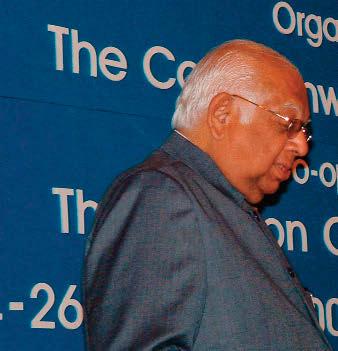
the position that I took, that was endorsed by all sections of the House as well as the Emergency Conference of Presiding Officers of Legislative Bodies in India.
As we adjourn sine die today, it is a mixed feeling that I have –I have a feeling of quiet satisfaction, which I share with you in all humility, that I have honestly tried to uphold the dignity and prestige of the high constitutional office of the Speaker in regulating the proceedings of this House in the highest parliamentary traditions and in affording all opportunities to Members to participate in the
proceedings and express their voices. In discharging my duty, it has been my endeavour to protect to the best of my ability the rights and privileges of the House and Members irrespective of their political affiliations and to further enhance the functioning of our parliamentary system.
Once again I would like to express my gratitude to all sections of the House for their support and cooperation, notwithstanding the unkept assurances, frustration and disappointments at times, in
discharging my duties and responsibilities as the Presiding Officer of this August House. I thank the Chairman of the Rajya Sabha, Shri Md. Hamid Ansari, for his active co-operation in coordinating the works of the two Houses of Parliament; the Prime Minister, Dr. Manmohan Singh; the Leader of the House, Shri Pranab Mukherjee; the Leader of the Opposition, Shri L.K. Advani, for their support and cooperation in running this House; the Deputy Speaker, Shri Charnjit Singh Atwal, and the Members of the Panel of Chairmpersons for sharing the onerous duty of the Presiding
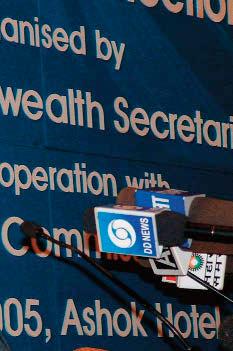
Officer of this House; the Deputy Chairman of the Rajya Sabha, Shri K. Rahman Khan; the Leaders of all Parties and Groups and each and every Member of Parliament for their contribution in making our parliamentary democracy work. I shall be failing in my duty, if I do not express my sincere thanks and gratitude to the Chairpersons of the UPA and NDA for all the respect shown to the Chair and for their kind help and co-operation.
I also extend my gratitude to the Secretary-General of the Lok Sabha, Shri P.D.T. Achary, for being a constant source of
of the Watch & Ward Staff, CRPF, Delhi Police and other security agencies who are vigilantly protecting the Parliament House Complex. I also thank the CPWD including the Horticulture Department and other allied agencies which have rendered their valuable support.
Honourable Members, along with the 14th Lok Sabha which for all effective purposes is coming to an end today, I am also reaching my journey’s end and in a short while I shall be leaving this Chamber for the last time. I seek your kind indulgence for referring to my feelings on this occasion, when I shall be finally dissociating from this great Institution.

particularly Comrade Jyoti Basu. I am grateful to the Indian Parliamentary Group that selected me for the conferment of the Outstanding Parliamentarian Award in the year 1996.
I respectfully submit that as the Presiding Officer, I tried honestly and sincerely to uphold the highest traditions of the parliamentary institution and discharged my duties to the best of my ability. I totally dissociated myself from any political activity whatsoever, in keeping with the essence of the constitution of India, which demands discharge of duties with total impartiality and treat all Members as equal.
strength and support in running this August House, and his team of officers and to all the staff of the Lok Sabha Secretariat as well as in the Speaker’s Office for their committed efficient and professional handling of all works related to the Lok Sabha. I also put on record my thanks to all the media persons accredited to covering the work of Parliament and the media in general for being a vigilant watchdog of democracy.
I also appreciate the services
As a humble servant of the House of the People, I have had the great opportunity to serve the nation through this great institution for nearly 39 years with a short break of eleven months. I recall vividly that in the Fifth Lok Sabha I was allotted seat No. 512 from where I had the privilege to listen with awe and admiration and as attentively as possible some of the memorable speeches delivered by the outstanding Parliamentarians. I had the great opportunity to serve the people of the country as a Member of this August House from the 5th to 14th Lok Sabha. I was the Leader of the Party in the Lok Sabha for 15 years till my election as Speaker. As the Leader it was my duty to see that issues of the working class and vulnerable sections of the society were duly raised in the House. Lok Sabha provides the most important forum for articulating the urges and aspirations of the people and for raising matters of concern for the peasants and workers and for the common people of the country. I cannot but recall the great guidance and encouragement and affection that I received from my leaders,
In consonance with the spirit of the constitution, I took a considered decision to stand by the constitution of India and did not allow myself to take a course of action, which would have, in my view, seriously compromised my position as Speaker of the supreme Legislature of the country. I was however completely overwhelmed by the tremendous outpouring of support and appreciation that I received from not only the citizens of this country but also from the Indian diaspora, on what they acknowledged as my principled stand on a very vital issue on the role of the Speaker, keeping the dignity of the institution and upholding the fundamental principles of the constitution. I could not compromise on the role and expectations of the Speaker as enshrined in the constitution.
I wish to sincerely thank all of you once again for the great opportunity that you gave me and during the short time I am left with, I wish to closely follow the functioning of this great institution for all its glory and greater success. I beg to convey my best wishes to each one of you for your success in the coming event.
Thank you.

Workshops teaching women valuable political skills aid the process of increasing the number and diversity of women running for office, says the woman who until recently was responsible for the Advisory Council on the Status of Women.
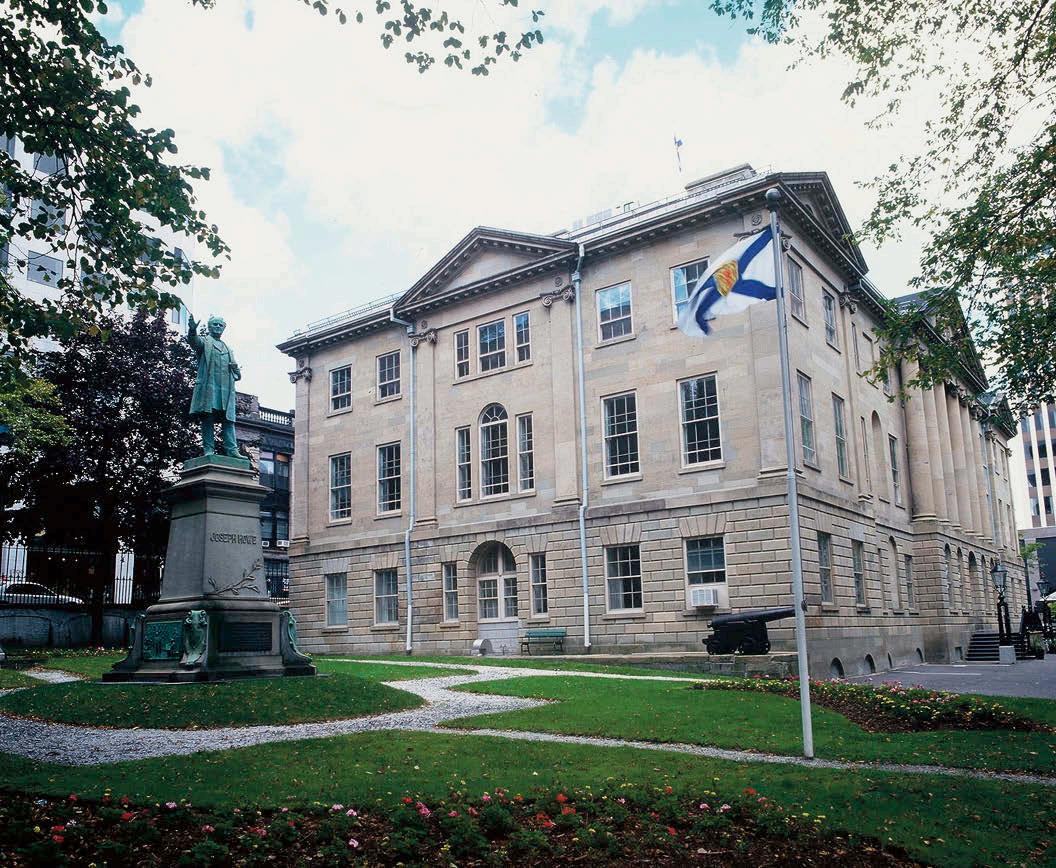
Ms Carolyn Bolivar-Getson, in Halifax.
Ms Bolivar-Getson was Nova Scotia’s Minister responsible for the Advisory Council on the Status of Women and Minister of Natural Resources until the June 2009 provincial general election. She was a Progressive Conservative Member of the Legislative Assembly from 2003 to 2009. Prior to the election, she was one of three women in the provincial cabinet and one of 10 women in Nova Scotia’s 52-Member Legislative Assembly.
When I was first elected as a Member of Nova Scotia’s Legislative Assembly in 2003, it didn’t take long to count the number of women representatives: six had won seats. Thirty-six had run, 13 fewer than in 1999. That was the year that Nova Scotia had the dubious distinction of having the lowest female representation, at eight per cent, in a Canadian Legislature.
At the time of writing just before the 2009 general election, there are 10 women in the House, a record number yet fewer than most other provinces or territories. Indeed, in Nova Scotia’s 250 years of democracy just 27 women have held provincial office.
Certainly the low number of women running and winning seats in the 1999 and 2003 provincial elections caused all of Nova Scotia’s political parties to ask: “What can we do about it?” I
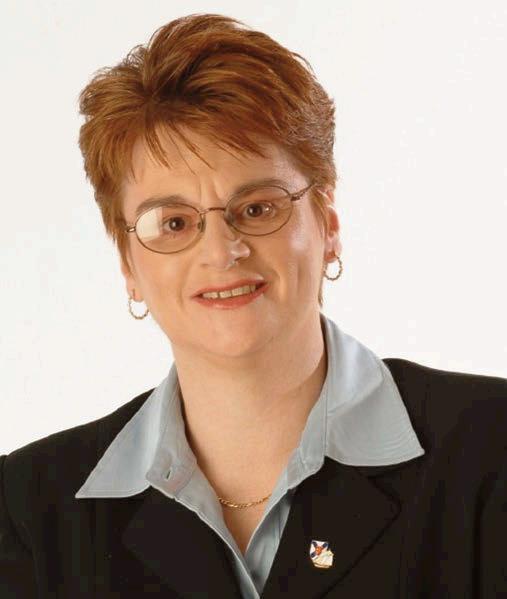
wanted to address that issue as part of my contribution as Minister responsible for the Advisory Council on the Status of Women. From Wales to Rwanda, experts and experience dictate that at least 30 per cent of elected representatives need to be women for a nation’s plans to reflect their perspective. We’re not there yet.
The proportion of women at all levels of government in Nova Scotia hovers around 20 per cent.
The 2008 federal election saw women win 22 per cent of the seats. Recent municipal elections in Nova Scotia saw women win 21 per cent of positions. The provincial Legislature has a record number of women at around 19 per cent.
Aboriginal women in Nova Scotia comprise 31 per cent of First Nations Chiefs and 23 per cent of Band Councillors.
I am deeply committed to increasing the participation of women in decisions that affect their lives, families and communities. Advisory Council members and staff work hard to include women who face discrimination because of race, age, language, class, ethnicity, religion, disability, sexual orientation, or various forms of family status. The council has

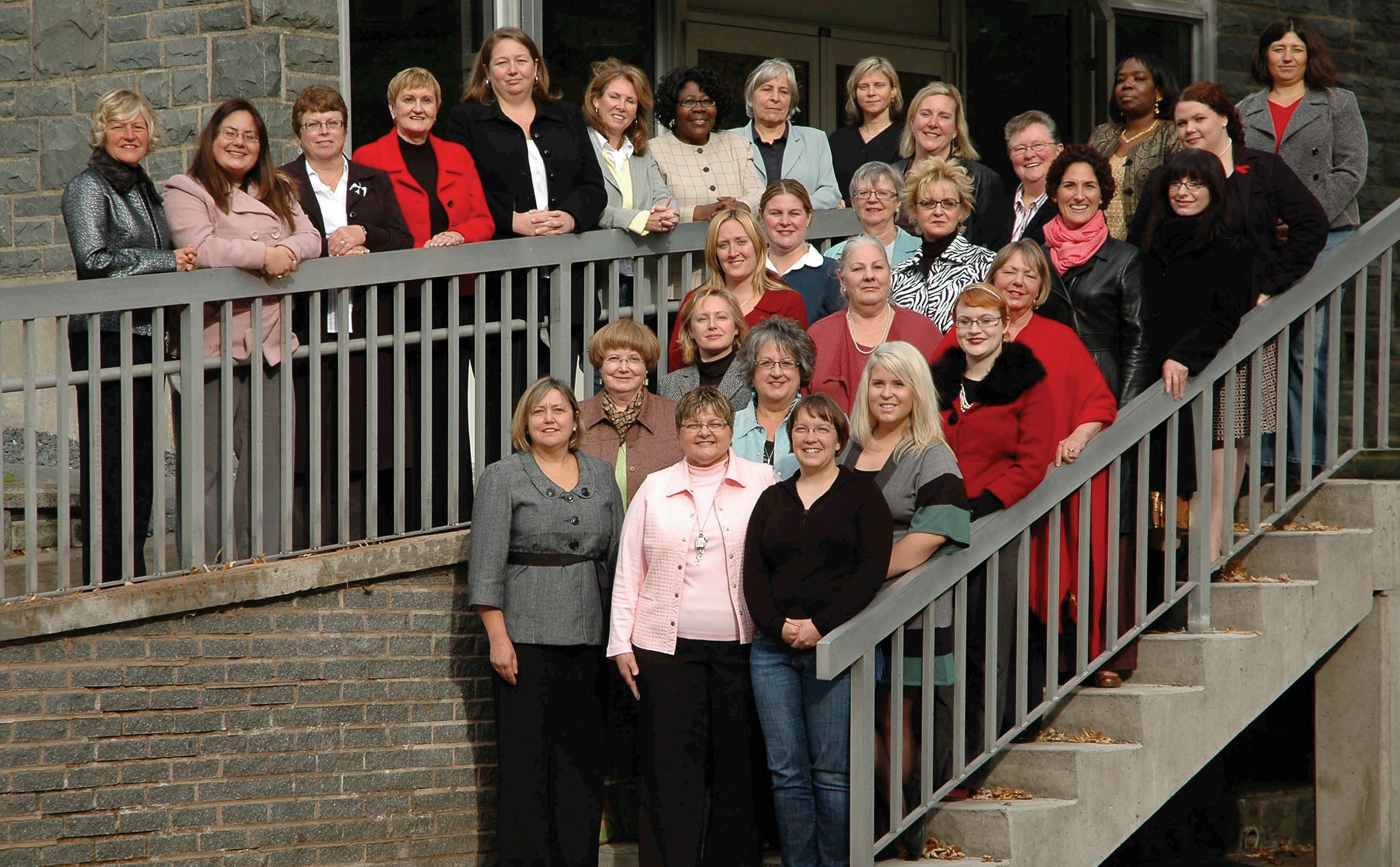
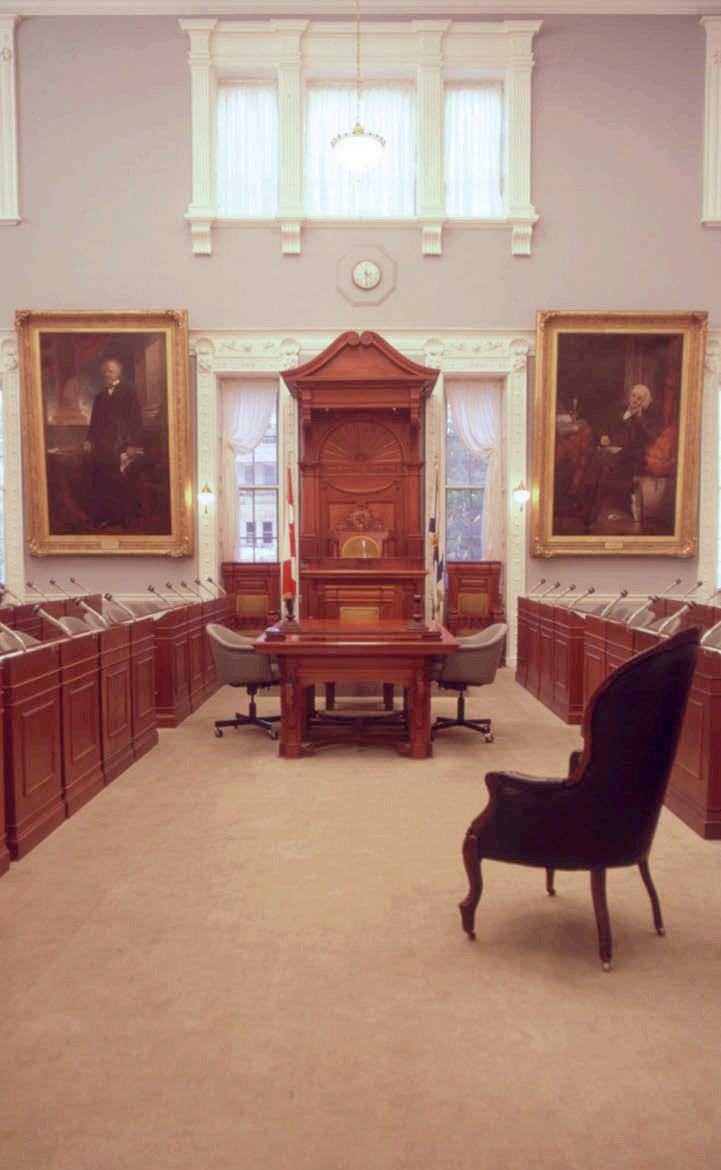
encouraged women to get involved, to run as elected officials, join agencies, boards and commissions, to vote, contribute to public consultations, to work for the
political party of their choice.
Our publication Votes for Women was first published in 1990 as a guidebook for women considering political office. It has been recognized as “the ultimate handbook” for women wishing to learn more about running for office.
By the fall of 2008, we were holding our 4th annual Nova Scotia Campaign School for women. Throughout that year, we celebrated the 250th anniversary of democracy in Nova Scotia, so it was a particular pleasure to welcome a delegation of Commonwealth Women Parliamentarians to take part in the school.
The origins of the campaign school lie in the work initiated at the Advisory Council on the Status of Women, where a series of wellattended workshops on political skills introduced the topic to eager audiences throughout Nova Scotia.
It became clear that it was not a lack of interest that kept many women from coming forward!
The women who did attend those workshops, in both urban and rural parts of the province, let us know that what they wanted was a “nuts and bolts” introduction to politics. They wanted to learn what was involved in becoming a candidate. They wanted to know how to organize and finance a political campaign, any pitfalls, and how to feel comfortable speaking to the public and to the media.
In my experience, political parties were holding sessions for their Members who were going to be candidates for elections – men and women. However, many of the women taking part in the political skills workshops had not yet committed to a political party and were hesitant about the process for doing so. Little did they know that any party would welcome
them with open arms! However, we decided that we would hold an intensive, non-partisan campaign school, open to women who were

Political experts are part of panels and workshops. Sessions are non-partisan, with representatives from all parties and
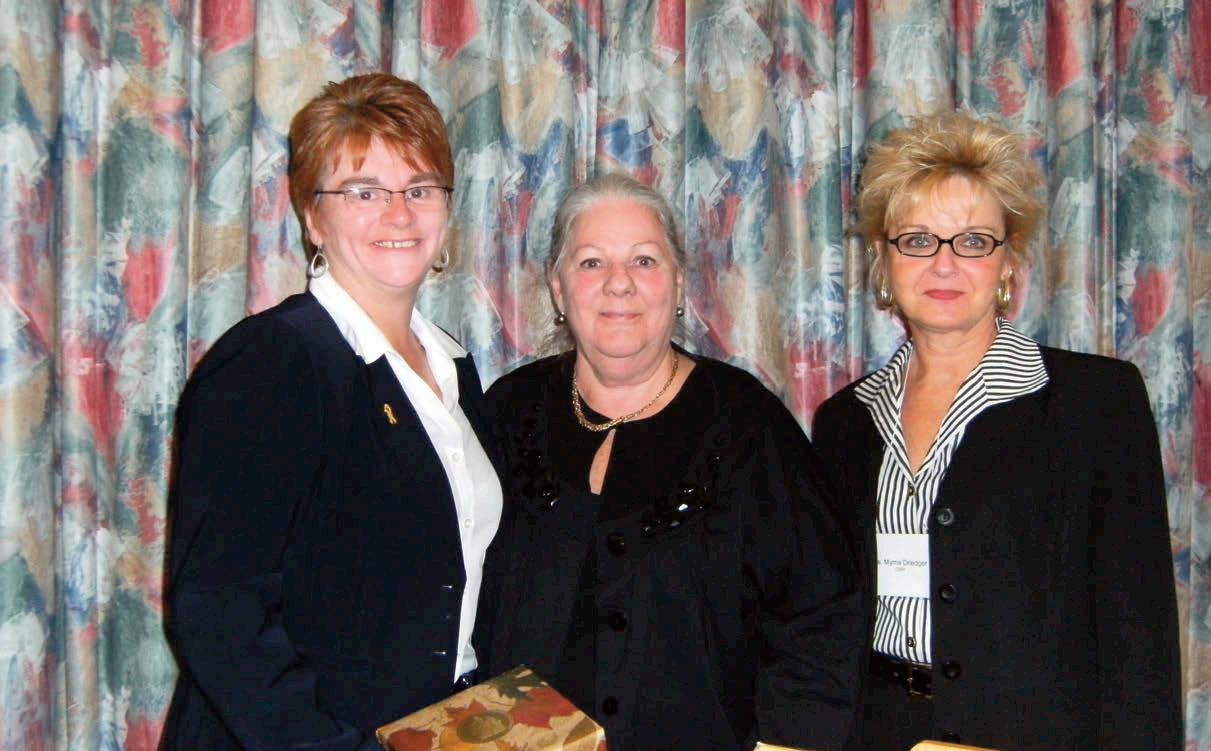
at various stages of political choice and commitment.
In preparation, we looked at existing material on campaign schools, and staff and I attended the excellent campaign school already operating in British Columbia. We then adapted that model to our own province, and proceeded to recruit participants from all parts of Nova Scotia.
Our first non-partisan Nova Scotia Campaign School for Women took place in 2004. We have since made minor changes to reflect needs identified through participant evaluations. As many as 30 women can participate, and once we announce the campaign school, spaces fill up rapidly. From the beginning, we have had the support of Mount Saint Vincent University, which provides its beautiful campus as a venue.
Participants come from diverse backgrounds in rural and urban communities. It doesn’t matter whether their interest lies in running for the municipal, provincial, federal or First Nations orders of government, or if they want to help organize or manage a campaign. No matter what their motivations, they will develop the skills and knowledge to run a successful political campaign during the intensive weekend.
Participants also learn elements of successful campaigns by working through the “Mock Campaign Exercise” on small teams over the weekend. The exercise includes background on constituencies, outlining population profiles and community issues. Then the teams present their plans to the entire school for feedback, including from elected representatives, the “campaign critics”.
October 2009 campaign school for women.
“Ready to Run”
all orders of government, as well as women with no political affiliation. The Chief Electoral Officer explains the legal and regulatory framework for candidates and elections. Other presentations discuss the nomination process, the roles and responsibilities of different members of a campaign team, fund-raising and campaign literature. One session focuses on campaign ethics, about taking the high road, and that always leads to lively discussion.
Participants take communications and media relations training, to learn to present their positions on issues of public concern and how to focus on key messages. There are oncamera interviews and media “scrums” with “reporters” asking on-the-spot questions. There is a panel discussion on understanding and building a working relationship with the media. The door-knocking exercise is an eye-opener as participants face surprising characters and issues. Local actors play the door-openers to the would-be candidates!
At the end of the three-day workshop, the women are armed with new skills and confidence, a large three-ring binder of resources – with the Advisory Council’s book Votes for Women, A Political Guidebook – and new contacts and friends. Participant evaluations reveal that they value training in door-to-door campaigning, public speaking and media relations, campaign organization, and feedback from politicians. Here are some of the comments:
“This was a great step-by-step of how to build a team … with a clear distinction of roles. Excellent.” “Great to have input from the two individuals who work directly with the municipal and provincial elections.”
“Thank you for the inspiration and many new role models.”
“The school far exceeded my expectations! I enjoyed it and learned so much.”
“I know when I mount my campaign or work on someone else’s I have the tools to do it effectively.”
The evaluations also reveal that many participants would like to learn more about using technology during election campaigns. How could digital campaigning affect their election prospects? President Barack Obama is a well-known success story, while Prime Minister Gordon Brown’s website www.number10.gov.uk/ displays in-the-moment digital democracy. It appears social computing is producing a more inclusive society and that’s worth discussing at the
That’s what the seasoned politicians at the 2008 session said about campaign school participants. Members of the Commonwealth Women Parliamentarians from across Canada attended as experts, critics, and honoured guests. They shared their passion and knowledge about politics and they coached and networked. Most importantly, they relayed their many rewarding experiences as politicians, from seeing their legislative initiatives succeed, to helping their constituents navigate the bureaucracy, to meeting Parliamentarians from other countries.
The province of Nova Scotia, through the Advisory Council and Democracy 250, provided funding for the 2008 school. Mount Saint Vincent University once again provided the space and conference services. Politicians, party officials and Members, communication trainers, and pundits came from far and wide to share their experiences and expertise, and the school’s success depends on this generosity.
The campaign school and other initiatives under the Advisory Council’s Women in Leadership programme help increase the number and diversity of women in public and political life. Of 130 graduates, six ran in provincial elections, two in the federal election, and four won seats in the last municipal elections, and many more women ran and filled important roles as campaign managers and volunteers.
I’d like to end at the beginning of the road to representation for Nova Scotia women. In 1758, there were no women in North America’s first democracy. I see a day when 50 per cent of elected representatives will be women in all their diversity. And that day will be long before we celebrate Democracy 300.
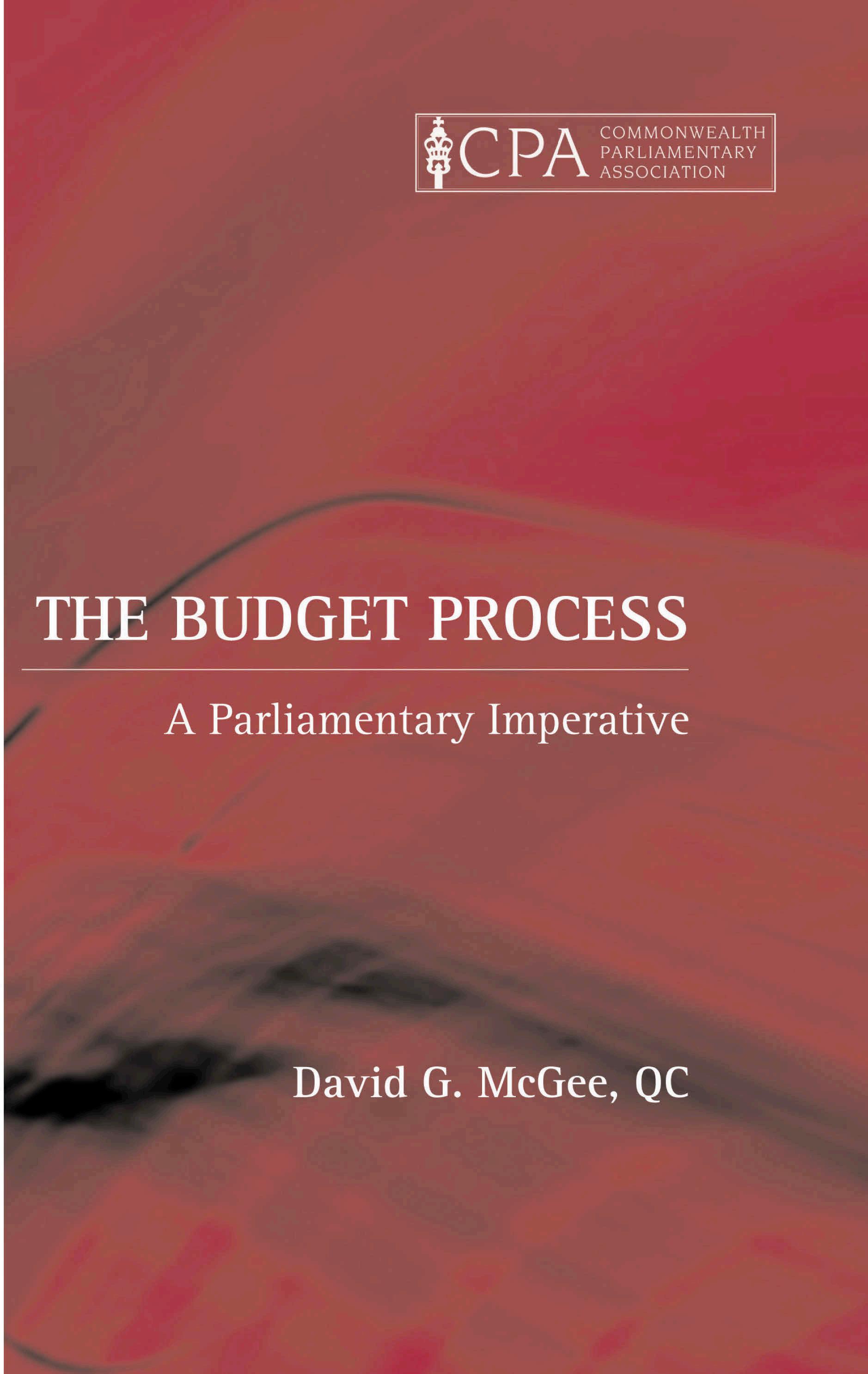

The Speaker of the House of Assembly in Tasmania details the restoration of the House of Assembly’s Chamber and highlights it newest features.
Hon. Michael Polley, MP, in Tasmania.
Mr Polley was first elected to the House of Assembly at the age of 21 in 1972. His previous role was that of Minister for Welfare, Land, Mines, National Parks and Wildlife from 1976-1981. He is currently the Speaker of the House of Assembly in Tasmania.
When I was first elected to the House of Assembly in the Parliament of Tasmania in 1972 at the age of 22, I could not imagine that one day I would become the only present Member to sit in the Chamber in its three different layouts. When it was founded in 1856, the House of Assembly sat in the old Legislative Council Chamber from then until 1940. It seems that the decision to build another Chamber came about as a result of overcrowding in the Georgian style Chamber and chronic ventilation problems.
The present Chamber was constructed in the late 1930s as one of a number of Tasmanian Great Depression relief projects to a design by Government Architect, S W T (Sid) Blythe. The Chamber was opened in 1940. Built in the prevailing art deco style, the proportions of the Chamber combined beauty with functionality. This was the Chamber I entered in 1972. In late 1977 the House of Assembly Chamber underwent a major refurbishment, ostensibly for the introduction of an electronically
recorded Hansard service. Most of the attractive art deco features, which at that time were regarded as rather passé, were swept away with the renovations. The result
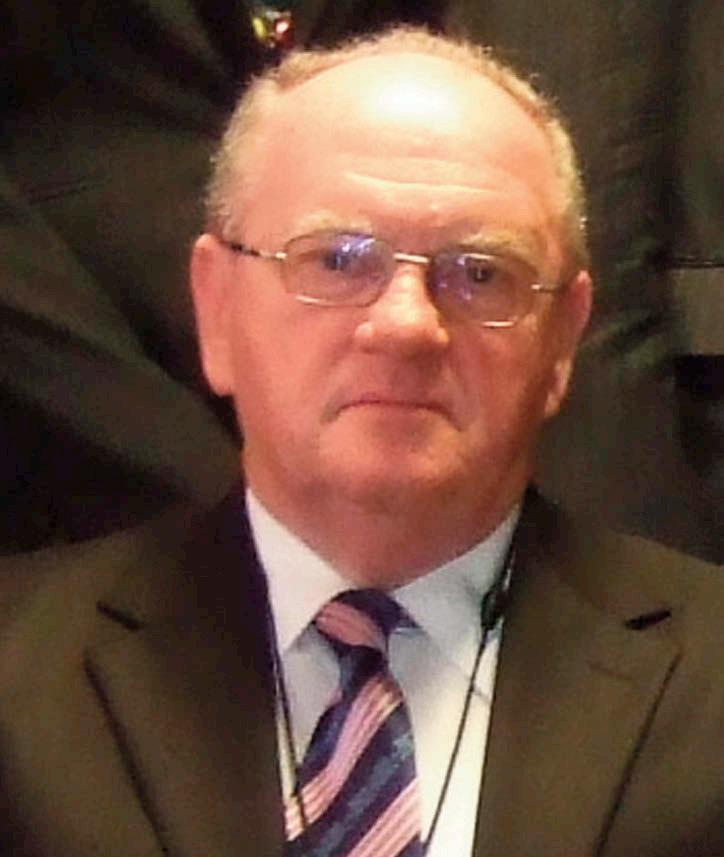
could be described as “all the worst of 1970s design and taste” and was so disappointing that I soon harboured a secret desire to restore the Chamber to its former glory. Little did I know that it would be 30 years before that opportunity would be realized.
The first steps in the process of restoration were taken in the early
1990s when conservation architects, Freeman Firth, were commissioned to undertake a full systematic assessment of Parliament House buildings. That framework is provided as follows: -
•Curtilage study;
•Schedule of existing accommodation;
•Conservation analysis of the parliamentary buildings containing assessments of the fabric, engineering and other services;
•Access plan for people with disabilities and a fire safety plan
•Initial schedule of works
•Overall conservation management plan
•Strategic asset management plan
•Staged funding strategy
This methodology became the basis for a staged conservation and restoration of the 1830s
Georgian style and 1930s art deco areas of Parliament House. The staging was divided into three

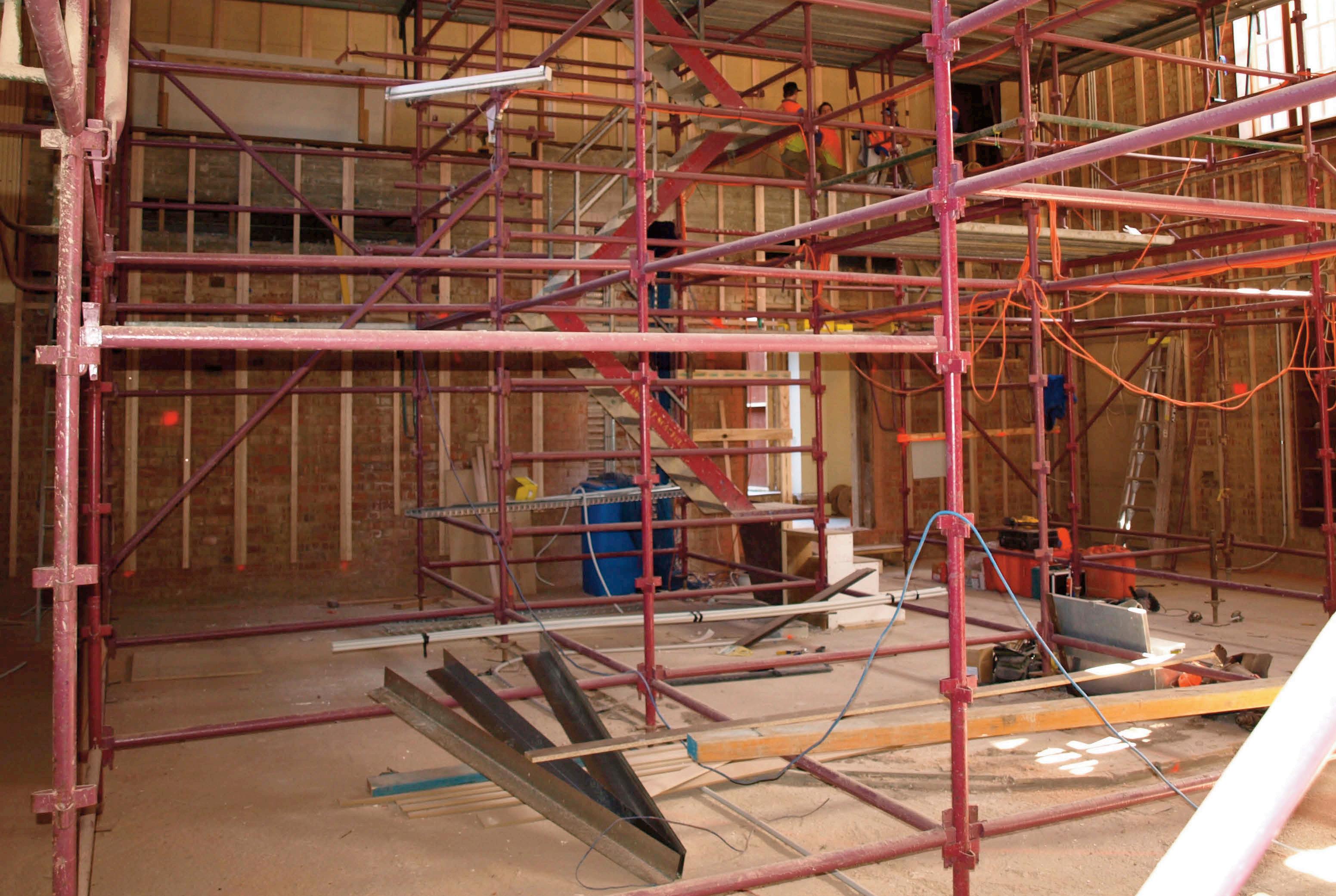
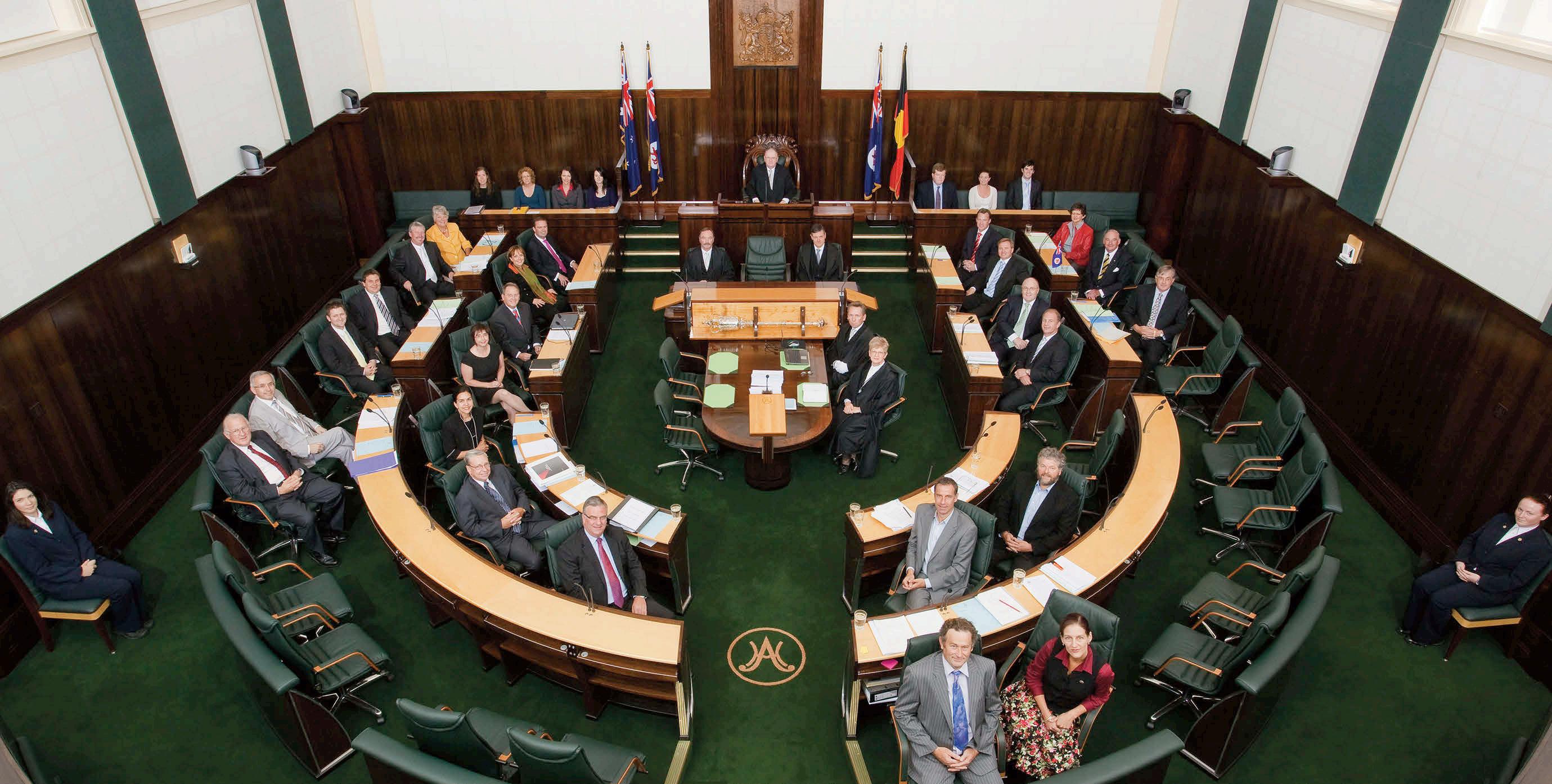
categories, i.e. (a) those areas requiring conservation repair (that is, immediate action to halt damage to building fabric), (b) areas requiring conservation maintenance (such as, those spaces requiring attention as part
of major projects) and (c) routine ongoing conservation maintenance works. The House of Assembly Chamber fitted within category (b).
Each zone of the building was given in-depth assessment
through individual conservation management plans (CMP). As a result much work was undertaken by the Parliament in consultation with Freeman Firth through various conservation projects to rectify other unfortunate excesses
Above: The Chamber after internal demolition in July 2008.
Below: The first official picture of the newly-refurbished Assembley Chamber in February 2009;
created by the 1970s renovations. These included removing many false ceilings and air conditioning ductwork as well as restoring offices and public spaces in the 1830s portion of Parliament House. The CMP for the House of Assembly Chamber was completed in 2005. The plan highlighted items which required urgent attention. These issues became the main “drivers” of the restoration and were: the lack of access for people with disabilities, occupational health and safety issues, the need to rewire the Chamber giving MPs lap top computer access, replacement of obsolete Members seating and upgrades of the Press and Public Galleries. To these were added the requirement for television broadcasting of debates. An added complication was the necessity of implementing these requirements in the context of reintroducing the 1930s art deco theme to the Chamber.
The CMP was considered in conjunction with the overall Strategic Asset Management Plan (SAMP) and the decision was made that restoration of the Chamber would have top priority should any funds become available. A staged funding strategy was prepared and early in 2007 a meeting was held with the former Premier, Hon. Paul Lennon. At that meeting the Premier decided that the project should go ahead and that a television system should be installed to televise debates of both House of Parliament and Committees. The estimated cost for the project was A$4.5 million (A$2.6 million for restoration of the House of Assembly Chamber and A$1.9 million for installing the television broadcast system). The monies were allocated in the financial years 2007-08 and 2008-09. Planning and design based on the CMP were commenced at once and later in 2007 the project was submitted to the Parliamentary Standing

Committee on Public Works and the Parliament’s Joint House Committee. Both Committees approved the proposal. Approvals were also sought and obtained from external bodies: - the Cabinet Budget Sub-Committee; the Tasmanian Heritage Council and the Sullivan’s Cove Waterfront Authority (the latter for building permission). Other organizations such as Tasmanians with Disabilities and ParaQuad Tasmania were consulted to ensure that access issues were addressed to their satisfaction. Prototypes of new Members front and backbench desks and ergonomic chairs were displayed for Members’ feedback, with positive comments being received.
The building works and televising projects were then put out for separate tender. A good response was received and following analysis by independent tender panels, the Assembly Chamber building works tender was awarded to a well known and respected local construction company Fairbrother P/L. The television contract was awarded to Sydney firm Techtel P/L in association with Tasmanian firm K W McCulloch P/L. It was soon clear that Fairbrother had been attracted to the project by the need for extensive top quality joinery manufacture. Fairbrother has a joinery factory in the North-West of Tasmania.
Actual construction work began at the beginning of July. The House sat in the 1970s manifestation of the Chamber for the last time on 3 July 2008. A hole was cut into the rear wall of the Assembly Chamber to allow access to it from a rear laneway and demolition work began. Apart from the external walls and roof the entire House was demolished and rebuilt.
While the construction works were underway provision had to be made for sittings of the House. Out of town sittings of the House of Assembly were held in August 2008 in Launceston (two sitting
weeks) and Burnie (one week) during September. The House resumed sittings at Parliament House in mid-October by which time most of the noisy construction activity had been completed. A temporary Chamber was set up in the Reception Room immediately under the Assembly Chamber. This proved to be a rather cramped affair and there was still some construction noise, which Members tolerated with good humour.
During design, construction and joinery manufacturing stages the pride taken by workers in showcasing the best of Tasmanian workmanship was a highlight of
“Members were... impressed with the outstanding quality and workmanship of the furniture and fittings of the new Chamber.”
the project. Only the finest timbers have been used in the new Chamber. These include specially chosen and matched Tasmanian Blackwood veneer panelling on the walls and Tasmanian Blackwood and Huon Pine Members desks. The original ebony art deco highlights appearing in the Table of the House and the Speaker’s desk have been emulated in the new furniture through the use of a bog oak which lay covered in a swamp for 1000 years until it was retrieved for use in the Chamber in mid 2008.
The main works were completed by Christmas 2008 and all that remained into this year was for the finishing touches to be made. The televising project continued well into 2009, but was ready for operation on the first day of sittings in 2009.
The reality
My dream became a reality when I was privileged to reopen the restored Chamber on Thursday 26 February 2009 – 69 years after it was first opened. A short half hour ceremony was held preceding the usual sitting day to resume sittings in 2009. It was a pleasure to welcome to the ceremony distinguished colleagues from New South Wales, South Australia, Western Australia and the Northern Territory. Members were immediately impressed with the outstanding quality and workmanship of the furniture and fittings of the new Chamber. Many have commented on how much lighter and brighter the new Chamber is. Wherever possible, Tasmanian products have been used to create the restored space. The overall conservation and restoration plan was drawn up by Architect Mr Stephen Firth. Tasmanian Designer-maker Mr Brendan Sharpe was principal designer of the Chamber furniture. Some of the highlights of the new Chamber include:
∙A Chamber which complies with contemporary national building codes and OH&S standards.
∙A two level floor in the Chamber with a ramp to allow access for the disabled to the front and back bench seats.
∙Two new doors have been provided to give access for the disabled to the floor of the House.
∙A wheelchair lift to give members of the public access to the Speaker’s Reserve.
∙New ergonomic desks and chairs for members. Provision has been made for 35 Members should a decision be taken in the future to increase the number of Members of the House (at present it is 25).
∙Electrical and data outlets and a pull out desk top for each Member’s place.
∙Acoustic upper wall panelling

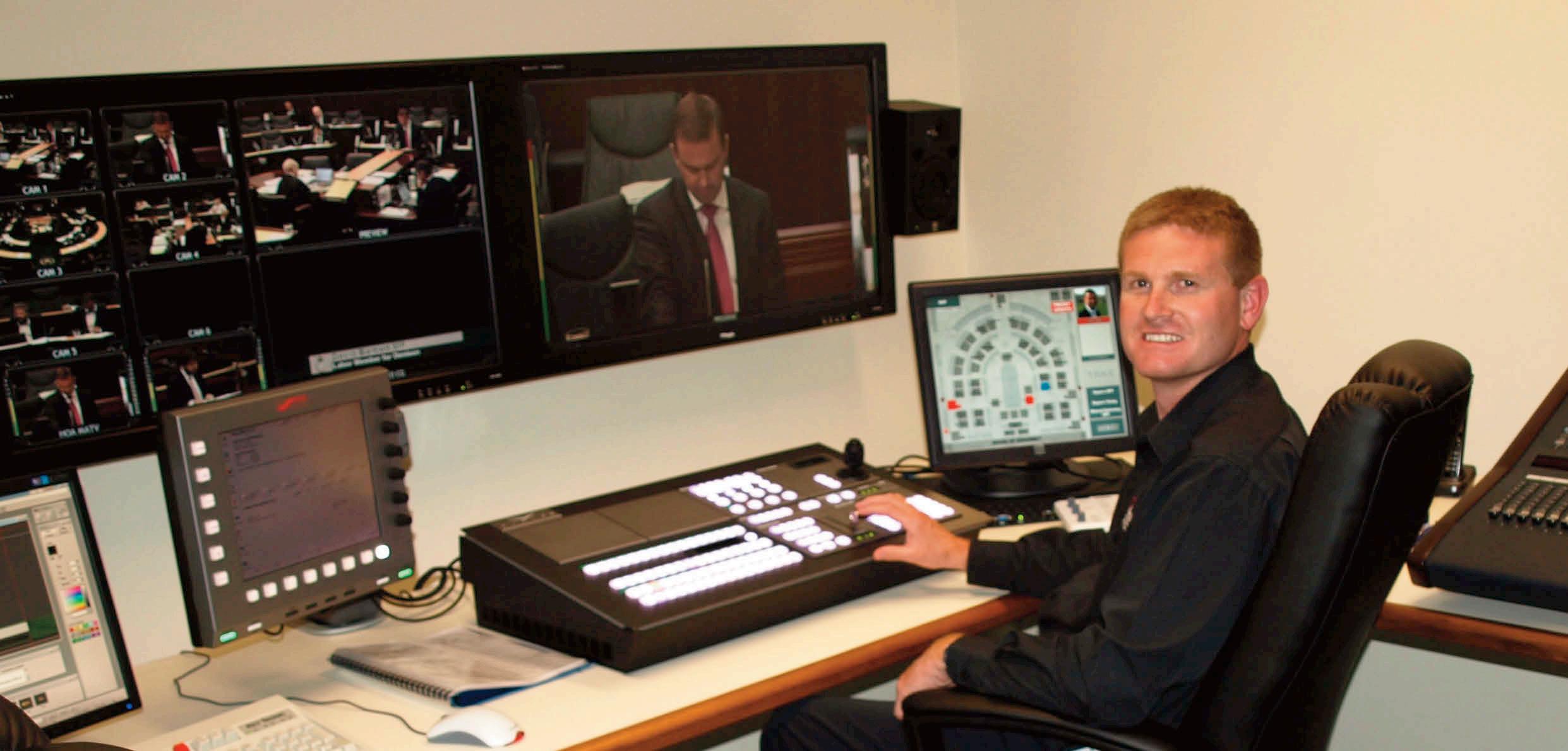
to assist with the Hansard recording and televising of the debate.
∙Reinstatement of the original Speaker’s desk and Table of the House from the 1940 Chamber. The former was found in a local auction house and purchased for $100.
∙Conservation of the 1840s Speaker’s Chair with the removal of unattractive alterations made in the 1890s to bring the Chair back to its original condition. This is the only piece of furniture which has been used throughout the 153 year life of the House of Assembly.
∙New skylights have been installed which replicate the original art deco ones and provide television quality lighting.
∙Built-in pull-out seating for Members of the Legislative Council for the occasions when joint sittings are required is now available.
∙Three television monitors have been placed in the Public Gallery so that visitors sitting at the rear of the Gallery will be
able to view all areas of the Chamber. Hitherto views were quite restricted.
The installation of television equipment was quite challenging. The House of Assembly Chamber sector was the most straightforward zone as work started from scratch. However, in a building dating from 1835 the chasing of television cabling was achieved with great difficulty. Likewise, camera placement in the 1855 Victorian heritage fabric of the Legislative Council Chamber was not a simple task.
A new Television Control Room has been constructed and contains four control booths. Two of these are for the House of Assembly and Legislative Council and the remaining two are for the coverage of Parliamentary Committee Rooms. State of the art High Definition television cameras have been installed in the House of Assembly (five cameras); Legislative Council (five cameras); Committee Rooms 1 and 2 (three cameras each); the Reception Room and Long Room (two mobile camera units each). The audio and television signals are processed by
the most up-to-date equipment and the final signal is supplied in the following formats: (a) web stream; (b) In house television broadcast via dedicated channels; (c) untitled signal for recording by television stations; (d) signal showing names of Members at the bottom of the screen; and (e) signal to Hansard. Early experience shows considerable interest from the public and media outlets in watching or recording the debates. A cable television channel has also expressed an interest in broadcasting some footage each day.
The decision has been taken to appoint an independent television company to operate the TV equipment. After an open tender process, Tasmanian film production company, Winning Post Productions, has been awarded the contract to operate the service for a two year period with an option to extend the life of the contract for one further year. Members are still coming to terms with “gavel to gavel” TV coverage, but they are adapting to the new environment quickly.
In conclusion, the restoration of
the Tasmanian House of Assembly has been a complex and challenging task. The success of the project rested on detailed planning and design, strong team work through the project management group and contractor’s sub-committees and strength of commitment by the contractors and sub-contractors alike. The finished product showcases the best of Tasmanian skills and materials in a unique environment. It has been a pleasure to be associated with such a successful project and to know that Members have come together unanimously to congratulate all those involved and appreciate their new debating environment.
The web stream coverage of proceedings of the Tasmanian Parliament can be found at the following at: http://www.parliament.tas.gov.au/ Parliament/InParl.htm then select “webcast of proceedings”.

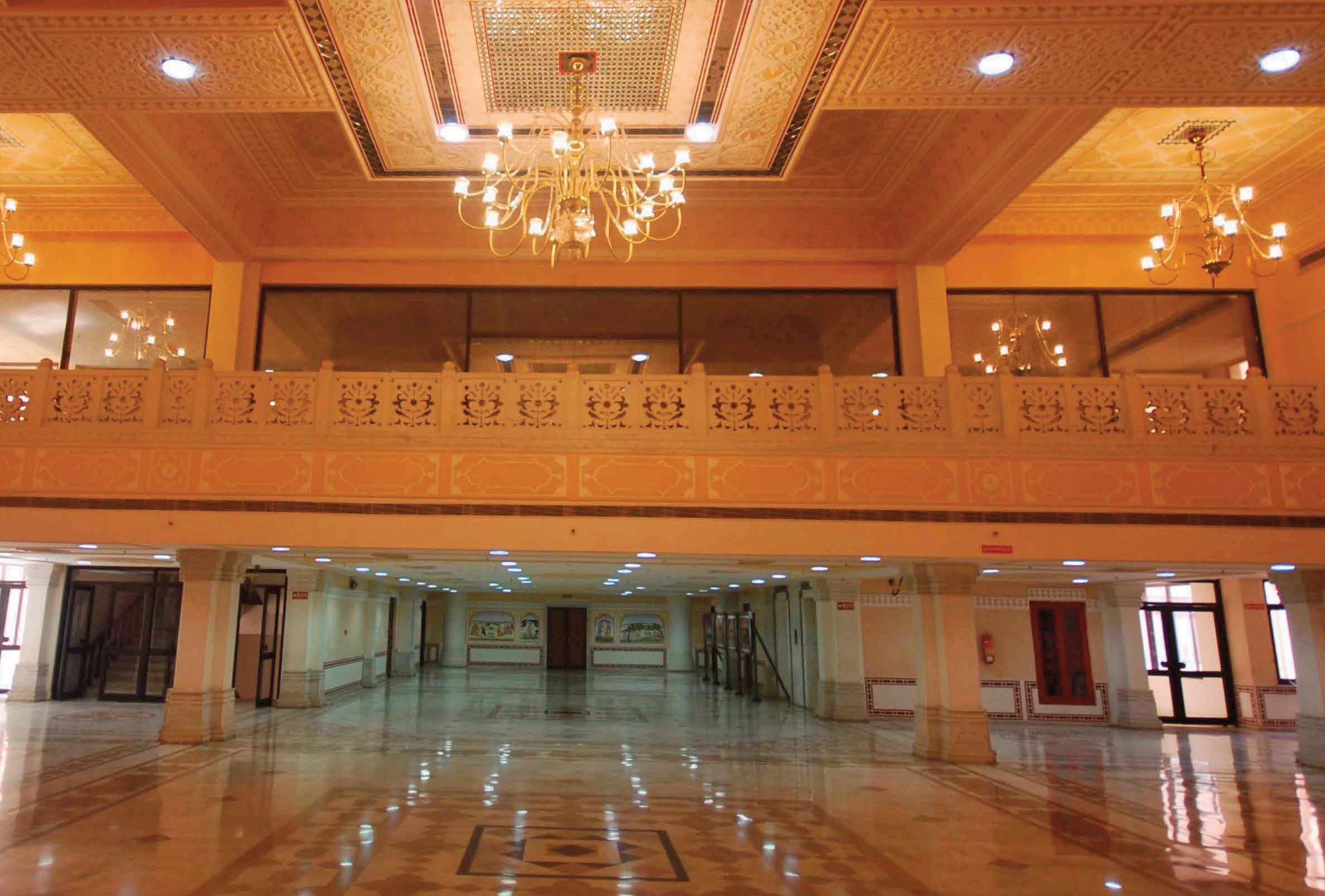
The Speaker of the Rajasthan Legislative Assembly recounts how the new Legislative Assembly was constructed to cater for the next 100 years and also describes the aweinspiring detail which is evident in the decor, derived from Rajasthan’s colourful history.
Shri Shekhawat is the Speaker of the Rajasthan Legislative Assembly. He was the State Minister of Planning, Manpower, Information Technology, Education and Gazetteers from 1999 to 2002, and State Minister of the Department of Technical Education from 2002 to 2003.
The present day Rajasthan is a unified form of 22 princely states, each vehemently independent and deservedly proud of its lineage, history and distinct culture. Though related on account of hostile geography, ruling Rajput class and matrimonial alliances, these principalities avowedly maintained their identity, rarely aligned and never subjugated themselves to each other. However, at times of foreign invasions and their rule in India, realising their puny size vis-àvis foreign aggressors, the states preferred to enter into sovereignty arrangements with them and worked in harmony. As such, the present architectural heritage is a great fusion of Rajasthan’s own designs enriched by the adoption of Mugal and British styles. After India gained
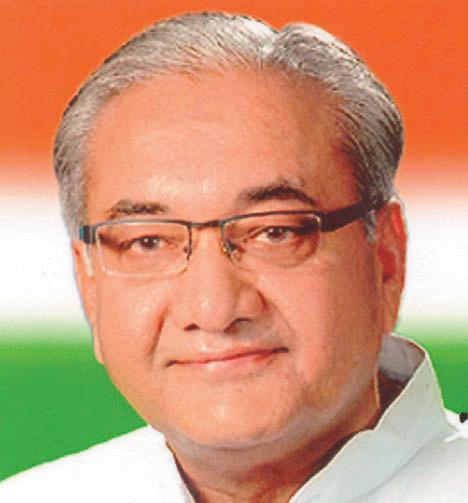
independence in 1947, the process of unification of princely states spread across the country. In Rajasthan, all the 22 states merged themselves in a greater entity by 1952 to form the State of Rajasthan. When the first Rajasthan Legislative Assembly was constituted after elections in
1952, the historical Sawai Man Singh Town Hall was chosen as the seat of this institution, which was quite an apt and best suited choice given its central location, sizeable assembly hall and enough surrounding space to accommodate various government departments. However, later with the increasing strength of the Rajasthan Legislative Assembly and the number of its committees, as well as the need for proper space to house its secretariat staff, the location was deemed inadequate in many respects. Additionally, rapid urbanization, burgeoning increase in population, traffic and commercial activities associated with a capital city in a period of about five decades started to inconvenience the general public during session time
periods. As such, work on the new Rajasthan Legislative Assembly building commenced in late 1994, was completed in 2000, and was ready in time for the sixth session of the 11th Rajasthan Legislative Assembly in March 2001. The new building was dedicated to the public by H.E the President of India, Hon. Shri K.R.Narayanan on 6 November 2001.
northern side which is preceded by an open air elevated porch. The northern entrance has a 75ft high imposing wooden door which is covered with a thick embossed brass layer. This main gate is reserved for VVIPs and opens only at the time of Assembly sessions.
On entering the building from the north gate, there is a lounge dedicated to the Jaipur style of
democratic institution, every available space has been used to showcase the cultural heritage of Rajasthan in an aesthetic, nonintrusive, unoffending and tasteful way. The façade and exterior of the Assembly building has been designed to recreate a Rajasthani style of architecture i.e. stone lattice work, landscaped gardens, stone carved elephants, and
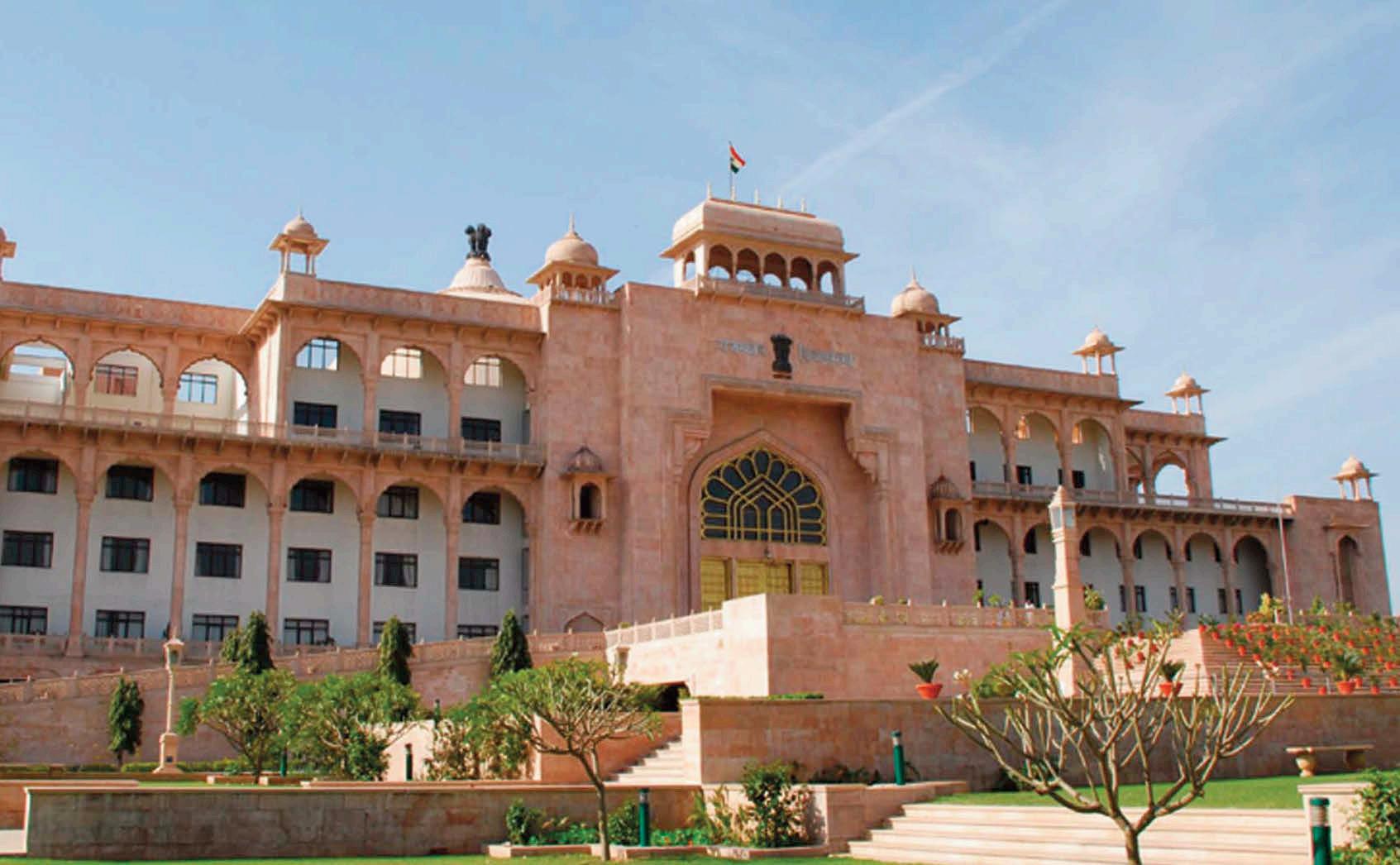
The new building of the Rajasthan Legislative Assembly was designed and constructed bearing in mind the prospective requirements for the next 100 years. Spread over an area of 16.96 acres, the main building has a covered area of 5.89 lakh sq. ft. This building is a seven storey structure with the combined height of 145ft. On top of the building, there is a huge dome measuring 31.70m in diameter, over which a 12'6" four faced statute of Ashoka Stambha, the National Emblem, has been installed. Another front facing 7'6" sized statute of Ashoka Stambha has been affixed above the main porch on the northern façade.
There are four entrances on all sides which are unique in their own way. The main entrance is on the
art, craft and culture. The frescoes, patterns on the walls, floor and ceiling with in-laid mirror work make visitors aware of the rich crafts of Jaipur, traditionally known as “dhudhar”. The remaining three gates of the Assembly building are covered by porches over 60ft high. Like the main northern gate, there are also lounges accompanying the other entrances too. The eastern, southern and western lounges depict the unique crafts of other prominent regions of Rajasthan i.e. Shekhawati, Marwar and Mewar. The frescoes, carved stones, patterns on floor, walls, ceiling and integrated mirror work, colour combination, reflect the rich and diverse cultural heritage Rajasthan is renowned for. Despite being the work place of a
above all, the use of local stone excavated at Jodhpur, BansiPaharpur and Karauli to give a pink hue to the building.
Despite being a seven-storeyed structure with a height of 145ft, it has been designed in such a manner that artificial lighting is not required during the day.
The Assembly Hall is one of the most lavish rooms in the building. As well as modern amenities, traditional Rajasthani handicrafts have been used profusely in its furnishings. An oil painting of the father of the nation, Mahatma Gandhi, adorns the wall just above

the podium of the presiding officer. Engrossed in weaving threads on his beloved charkha, this picture of Bapu keeps the legislators ever conscious of the virtues associated with a life of simple living and high thinking. A huge 12ft chandelier measuring 7ft in diameter comprised of Belgian cut glass is another distinguishing feature of the hall.
Realizing the potential of upward revision in the membership of the House, the hall has a seating capacity of 260 Members, but presently seating arrangements for only 244 Members has been made. The visitor's gallery of the House has a seating capacity for 732 persons; the Officers’ gallery, 48 persons; and the Governor's gallery, 21 persons. Two lobbies outside the hall – one for Members of the Treasury Benches and another for Opposition Benches (as well as second chambers of Speaker, Chief Minister, Deputy Speaker, Secretary of the Assembly) – have been provided for.
The main chambers of the Speaker and Chief Minister are very spacious and beautifully done and decorated. As per the Rajasthani style of interior decoration, artistic vine designs have been put on the lower 2.5ft of the wall. Interestingly, similarly along the lines of the City Palace of Udaipur, engraved mirror work on a 5' x 8' sized peacock has been done in both the chambers where the use of innumerable normal and coloured reflective glass enliven the dancing peacock.
The Rajasthan Legislative Assembly has a total 339 number of rooms. In addition to chambers of the Speaker, Deputy Speaker, Leader of the House, Leader of the Opposition, Government Chief Whip, Government Deputy Chief Whip, 34 chambers for Ministers of the government and 16 committee rooms for the Assembly Committees have also been provided.
Designed and constructed by

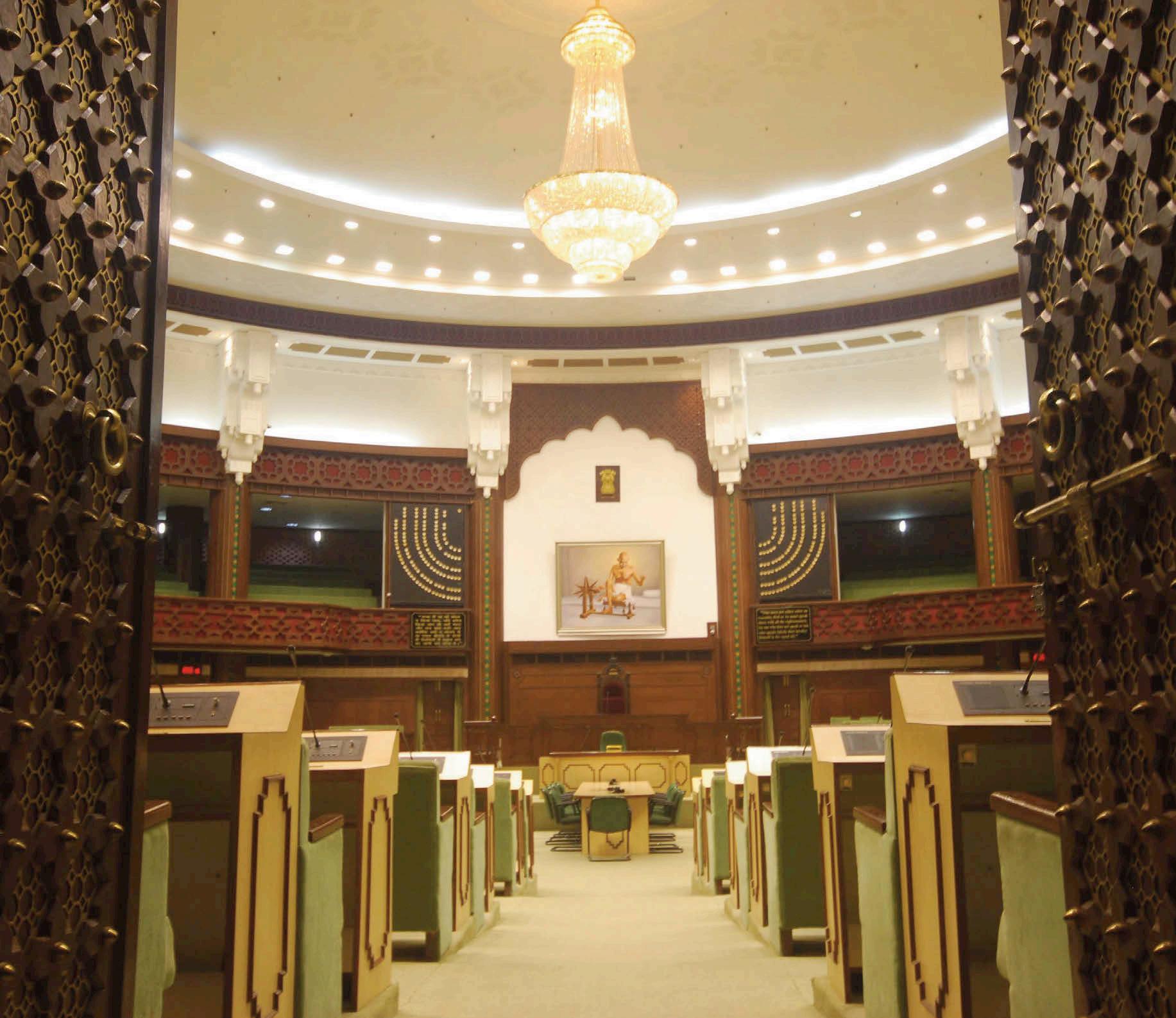
information pertaining to other Branches.
Web portal: The Rajasthan Legislative Assembly has developed a web portal at rajasthanassembly.nic.in where information of all conceivable nature pertaining to it has been given in a user friendly manner. To allow access to the general public about the business and proceedings of the Rajasthan Legislative Assembly, the list of business and lists of starred and unstarred questions are made available before the scheduled sitting of the House, whereas the proceedings of the sittings of the Rajasthan Legislative Assembly are put on the website either on the expiration of the day’s sitting or the next day.
CCTV surveillance system: 38 cameras have been placed at all strategic places.
the different wings of the Public Works Department of the Government of Rajasthan at a cost of around Rs. 100 crore, the Rajasthan Legislative Assembly building is counted among the best Legislature buildings in India.
Special features of the Assembly building
In the new building of the Rajasthan Legislative Assembly following modern facilities have been provided for:
Telecast of the Proceedings of the Rajasthan Legislative Assembly: The telecast of the proceedings of the Rajasthan Legislative Assembly is available
within its precincts. Making use of the latest technology, five small highly sophisticated remote controlled video cameras have been placed inside the House covering all angles. Professionals sitting in the control room get live feed from all the cameras and allow the best footage on the telecasting network.
Conference system: To receive the best electronic propagation of the speeches of the Members, a digital audio technology-based conference system has been put in place to hear the Members from anywhere in the House.
Electronic voting system: Speakers of the public address system also have an electronic voting panel, which members can cast their votes at the time of divisions in the House. To display the result of the votes cast, two geographical display boards have
been hung at the back wall of the Speaker's podium which show the status of the member-wise voting pattern. The cumulative result of the division is displayed on the two alpha-numeric display boards at the back wall of the ruling and opposition benches.
SMATV system: Under the Satellite Master Antenna Television (SMATV) system, terrestrial and satellite channels can be watched in all the rooms situated within the precincts of the building. However, only news and current affairs based channels are available on the system.
Local area network: To connect computer systems available in all the Branches of the Assembly Secretariat, Local Area Network (LAN) has been installed. Utilizing this LAN system, every Branch sitting at its workplace can access the
Lifts: Four lifts have been installed, out of which three are available for use by persons at the VVIP Northern Gate, Members’ Western Gate, staff and officers’ Eastern Gate and one near the canteen as a service lift.
Air-conditioning: All the five storeys in the building are airconditioned.
Safety: Fire alarm systems and automatic sprinkler technology has been put in place. In addition, manual fire fighting cylinders have also been placed at different places on all the floors of the building.
Tele-communication: While the offices of the Speaker, Deputy Speaker, Chief Minister, other ministers, Leader of Opposition, Government Chief Whip, Secretary, Special Secretary and Deputy Secretaries have been provided with direct telephone and fax lines, to cater to the needs of the Assembly Secretariat, wherever warranted, an APBX has been established on the lowest floor

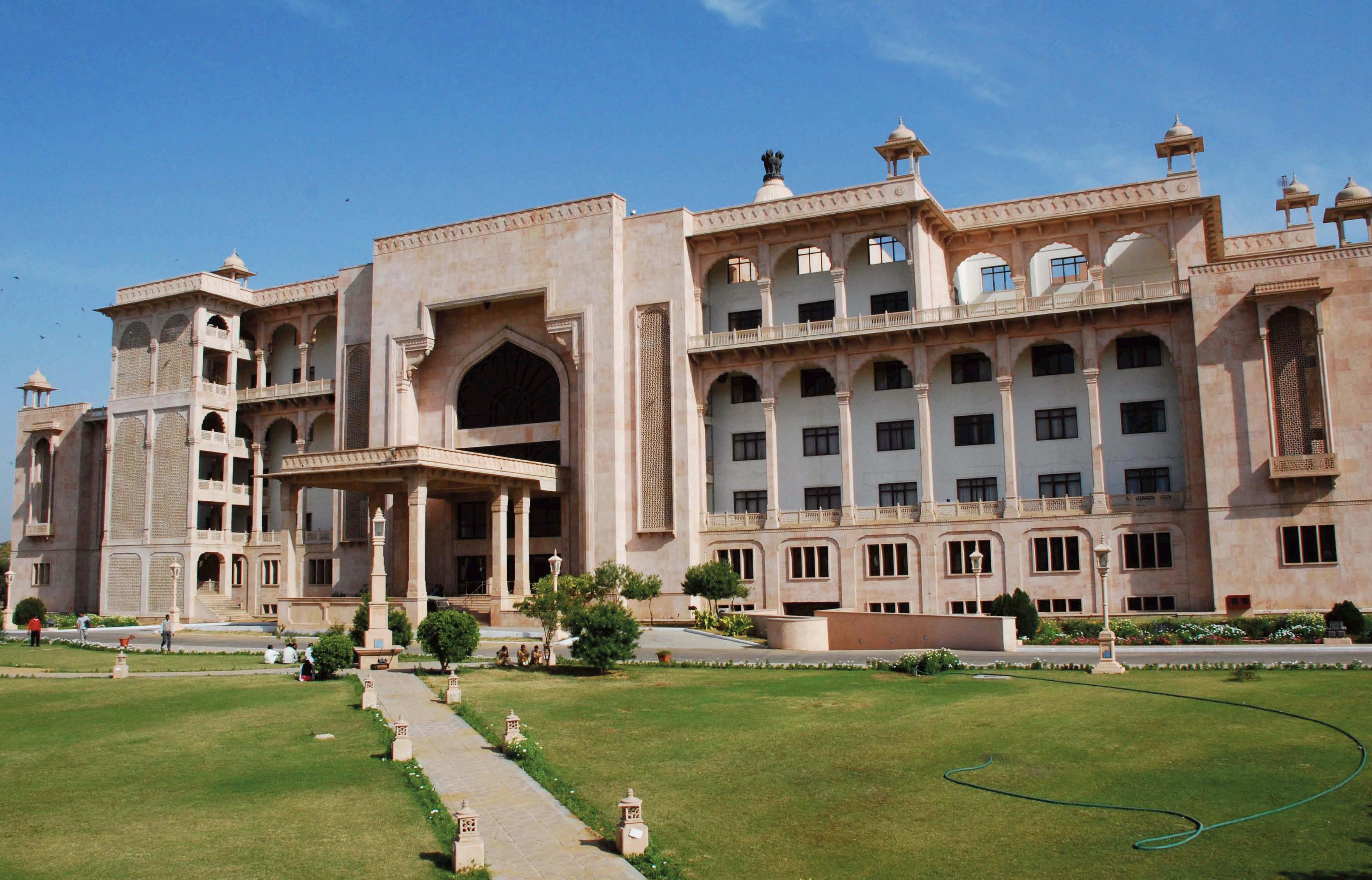
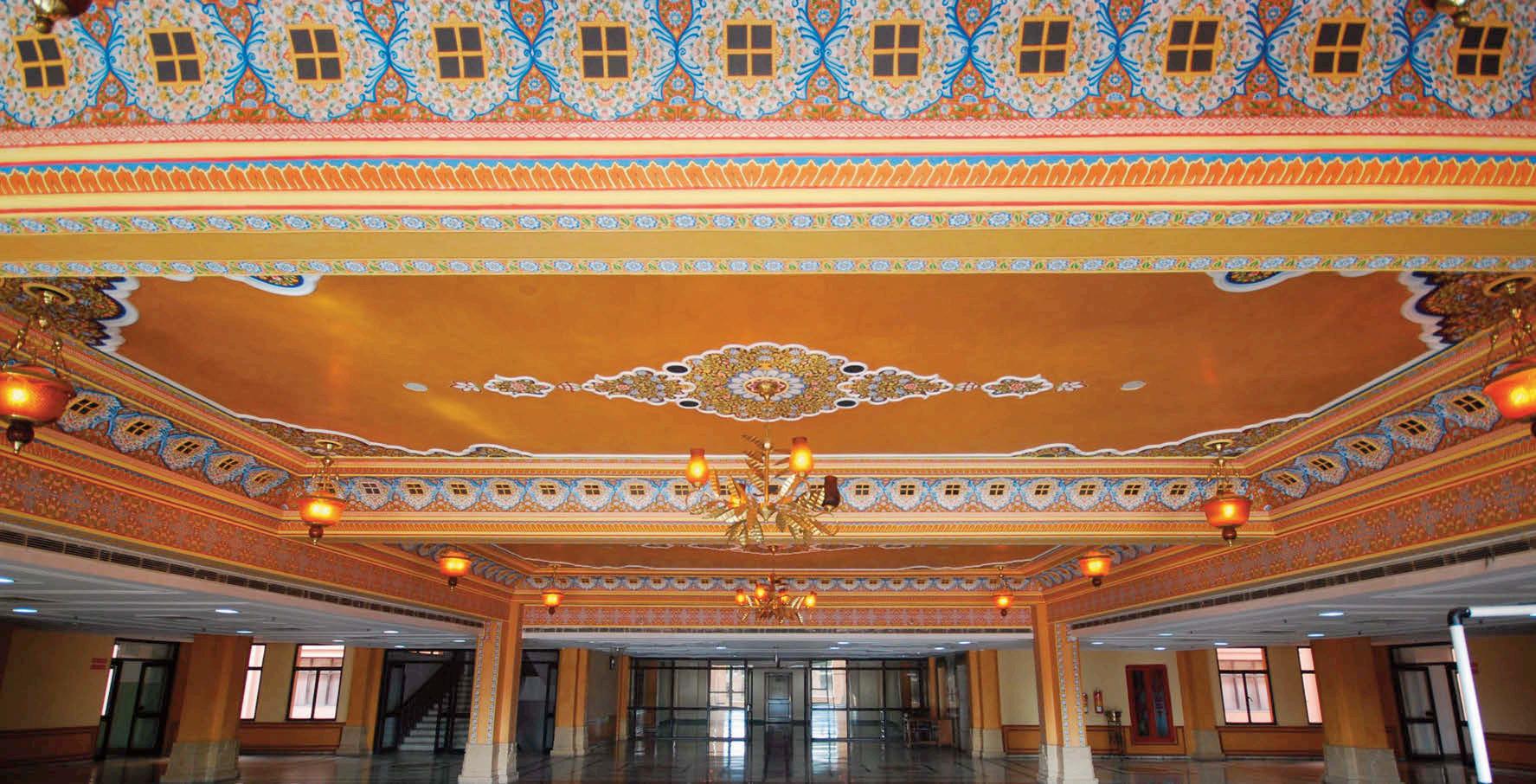
of the Assembly building. This APBX has been provided with 20 direct telephone lines and has the capacity of 300 internal exchange lines.
Water harvesting system: With the objective of harvesting the rain
water falling on the Assembly building, two bottomless multilayered tanks have been constructed on the western side of the building. The entire amount of rainfall on the 14,500 sq. yd. of the Assembly building reaches these
water tanks through pipes where the different layers of gravel, pebbles and sand purify it, add minerals and recharge the water level in the area.
Solar electricity generation system: A 25 kilowatt grid
interactive power plant has been laid on the roof of the Assembly building which generates electricity in the presence of ample sunlight throughout the year.
The new building of the Rajasthan Legislative Assembly is a welcome addition to the rich heritage of the State. It mirrors the architectural features Rajasthan is renowned for, has become an important part of tourist itinerary on account of its inherent multi-dimensional qualities and, above all, urges its constituent legislators to be ever conscious of the needs and aspirations of the people and rise to their expectations.

The
Secretary of the Rajasthan Legislative Assembly provides a detailed study on the growing number of women elected to the Assembly from 1952 to
puts
forwards his own suggestions on improving the situation.
Shri H.R. Kuri in Jaipur.
Shri Kuri joined the Rajasthan Judicial Service in 1976 before being promoted to Higher Judicial Services in 1993. In 2002, he was appointed Special Secretary of the Rajasthan Legislative Assembly before being promoted to his current position as Secretary in 2008.
Women constitute 50 per cent of the world’s population, and there is no reason why they should not participate and have a say in every activity in equal measure. Having said this, we need to deliberate what went wrong where, what were the causal and precipitating factors, do they hold still true and how can we reach the goal of an egalitarian society devoid of any gender discrimination?
Looking back, we see that India has been a country bound by tradition, attaching not much importance to the education of women. The class division of Brahmins (priests), Kshatriyas (warriors), Vaishyas (merchants) and Shudras (menials) ordained that only men were required to be outdoors given their professions, whereas women were in charge of the household affairs.
Frequent and regular invasions further confined women to the safety of the four walls of their homes. In such a scenario, it was indeed a Herculean task to bring women to the forefront of society and make them confident and
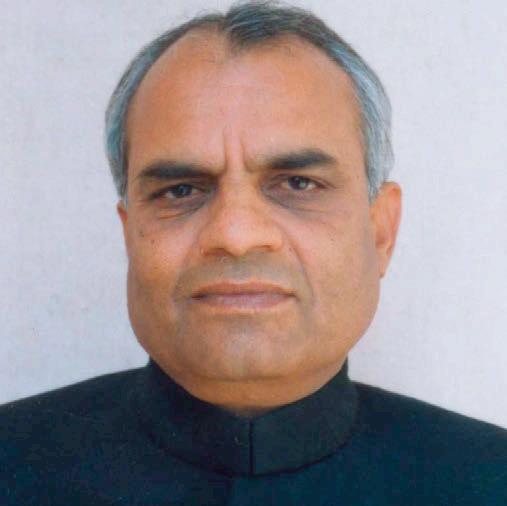
the present day, and
equal partners in human affairs.
However, with social reform movements led by Raja Ram Mohan Roy, Swami Dayanand Saraswati and the women oriented policies that were introduced under British rule, the situation changed and women started to come out in the open and make themselves heard. We have since witnessed greater participation of women in public affairs since then.
With independence in 1947, governments in India, both at federal and state levels, actively sought to set right the ills plaguing the society by constitutional and statutory means and evolved
policies accordingly. While this led to significant developments in society, in general, women were not joining the political mainstream as expected, in comparison to the scheduled castes and tribes whose participation was mandated through constitutional means. An analysis of Lok Sabha and different Legislative Assemblies revealed that the presence of women remained a minority and stagnant at single digit percentages. To improve this state of affairs, places for women were reserved at onethird of the strength in the third tier viz. Panchayats and municipalities through constitutional amendment, expected to see an increase in the number of women at the Legislative Assemblies at state level and Parliament at the central level, but regrettably, such expectations are yet to be fulfilled. In light of above, it is useful to analyze the sudden and sharp increase in the number of women legislators in the 13th Rajasthan Legislative Assembly wherein women have come to constitute 14 per cent of the strength as against
Table 1: Strength of women in different Rajasthan Legislative Assemblies (1952-2008)
*Elected in bye-elections
6 to 7 per cent prevailing till then.
Table 1 highlights the position of the strength of women members in different Rajasthan Legislative Assemblies from 1952 to 2008.
An analysis of Table 1 reveals that till the 7th Rajasthan Legislative Assembly (1980-85), the number of women legislators was in single digit percentage at or less than five, with the exception of the 5th Assembly but subsequent
Assemblies till the 12th one saw fluctuation between a minimum of 5 per cent to 8.5 per cent. However, the election to 13th Rajasthan Legislative Assembly saw a pleasant surprise by placing 28 women candidates out of 154, which constitutes 14 per cent of the total strength of the House. It would be interesting to juxtapose the dismal figures of the 1st to 12th Assembly with the position obtaining in Table 2 wherein major
political parties have been shown allocating tickets to its women candidates. We find that women candidates have been given tickets in the range of zero per cent to 11.5 per cent only.
In addition to the above position in Table 1, it would be equally useful to go through the number of women candidates fielded by different political parties at the time of general elections to the different Rajasthan Legislative Assemblies,

which is shown in Table 2.
Further participation of women in governance has been ensured by all governments, barring 2nd Assembly, in Rajasthan by including them in the Council of Ministers, which is reflected in Table3.
While appreciating the limited number of women ministers in different cabinets, it is worth noting that only a certain number of women legislators are eligible for inclusion in the Council of Minister as belong to a ruling party or coalition.
Though lower number of female representation exists in different Assemblies, it is quite comforting that once they are elected and cast responsibility, women legislators have shown great abilities and left indelible imprints on the public’s minds, which is reflected in their further elections to ensuing Assemblies. Dr Kamla, Mrs Sumitra Singh and Mrs Vasundhara Raje are a few examples that come to mind.
Another feature of elected female Members is their educational background which greatly varies. Out of the 68 individual women elected to
Table 2: Women participation in general elections in the Rajasthan Legislative Assembly since 1952

different Houses till the 12th Assembly (complete data for the 13th Assembly has yet to be received as Members are busy with electioneering for the ongoing parliamentary elections), 24 Members had received education till school level, 24 were graduates, law graduates or equivalent professionals, while 20 were postgraduates or PhD level educated persons better placed to raise issues of importance on regular basis through diverse means, yet less educated women Members also contributed to the debate and raised issues pertaining to their constituencies. However, it goes to the credit of electorates that they reposed their faith in candidates who were less educated but were more of a match in other respects. It also shows that good education is a welcome feature but lack of it is not at all a hindrance in the due discharge of a public representative's functions. In other
the election of 28 women Members
Electoral reforms and effective curb on poll malpractices have led to greater participation of people in elections. Each election reflects a higher number of independent candidates and ever increasing polling percentages which includes equal participation by women.
women in equal measure (Table 4), then women visualize fulfillment of their aspirations in a candidate of their own gender. I believe that this healthy percentage of women legislators is the result of active canvassing by women leadership from both parties.
In addition, I believe the parties themselves realized the need of
32 by Bhartiya Janata Party and 23 by the Congress, resulting in the election of 13 candidates from each party to the 13th Assembly. Another factor for this significant increase is the latent one in each election i.e. respected lineage. In a country of India’s size where constituencies are quite large and the number of
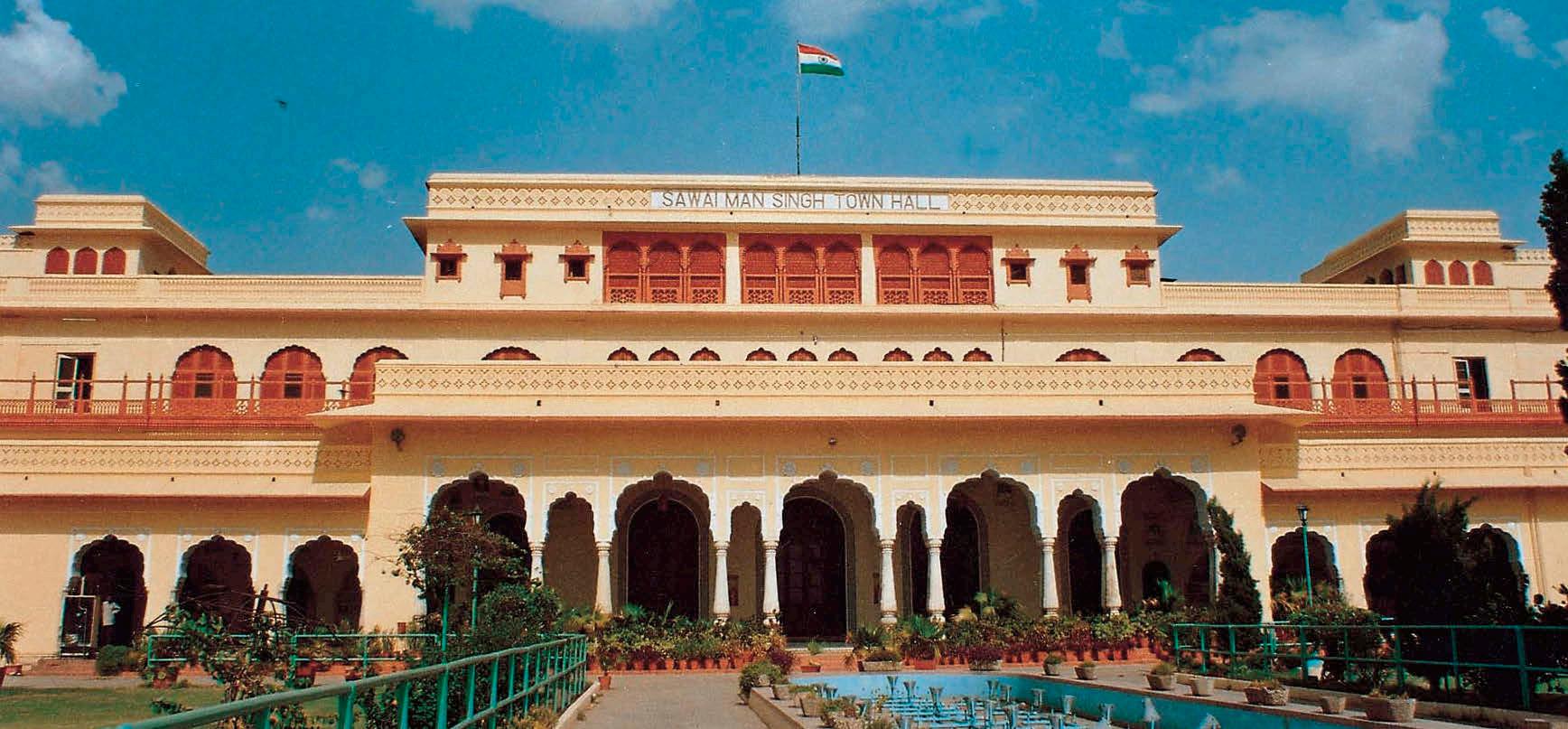
words, literacy needs to be spread on a wider scale but illiterate people or those less educated should not be shunned in any way.
Analysis of the reasons behind
Under such circumstances, if an articulate female leader with a great reputation for effective administration comes in the middle of electorates which consist of
greater participation of women in Legislative Assemblies and despite immense constraints, handicaps and opposition, fielded higher number of women candidates e.g.
Table 4: Turnout of women voters per thousand men since 1972
electorates too big, people readily identify themselves with families which are known to them and whose integrity and credentials are beyond reproach. In the case of 13th Rajasthan Legislative Assembly, there are quite a sizeable number of women Members who belong either to previous royal families or families with impeccable political backgrounds. However, it does not detract from other less endowed women legislators who were backed by organized cadre and dedicated followers who stressed their reputable image, dedication to public causes, honesty and sincerity quite effectively.
Improving the situation
While reserving seats for women is the easiest way to ensure presence of women in Parliaments and Legislative Assemblies – which is being tried through constitutional amendment bill – I wish to voice my own suggestions that can themselves be effective in bringing women to institutions of political reckoning where they can champion the cause of not just their own gender but ensure an equitable atmosphere in society based on their innate wisdom to resolve very complex and intricate family and social issues.
1. Make the Parliament/Legislative Assemblies functional Rules of Procedure provide ample
scope to bring issues to the notice of the government but further pressure to obtain the desired results has to be created through imaginative means which do not contemplate stalling the proceedings of the House. Serious and sincere candidates are only attracted to functional legislative bodies.
2. Make Parliament/Legislative Assemblies welfare oriented institutions
Of course, Parliament/Legislative Bodies are intended institutions of public welfare but if such efforts are made more tangible and their inherent potential becomes part of public perception, I believe women can think in terms of choosing politics as a serious vocation as opposed to free-time indulgence.
3. Make the proceedings of Parliament/Legislative Assemblies accountable
I believe that every issue brought before the House should be promptly attended to, with seriousness and sincerity. Of course, it is not possible to act in accordance with each wish of every Member, but such opportunities can be utilized to fine-tune the inadequacies of the administration in meeting the aspirations of general public. Simultaneously, responding to Members’ views, however subsequently through letters, apprising them about the constraints/practical
difficulties/counterpoints/sincerity of the government to address the issues raised in future will significantly satisfy the Members and nip in the bud the possibility of accumulation of pentup feelings. The objective of this suggestion is to make every Member –including women –aware that their efforts in raising public issues are not in vain.
4. Nurture talent
Literacy has reached every corner of the country and girls are enrolling themselves in schools, colleges and universities for academic and professional courses in ever increasing numbers. The curricula of them, at least in the early and middle part of this education, may be oriented in such a manner that girls realize the virtues of leadership, their
“...the prospects of women candidates winning become greater if they are fielded by national parties or important regional parties.”
ability to change their destinies and think of politics as a career option.
To make use of the opportunity, political parties can also think in terms of grooming the right kind of women candidates suitable to public life and extend all kinds of support to nurture their talent. They can institute separate cadres for girls and women whom then can bank upon in addressing women-related issues and, whenever need be, nominate as well for election to panchayats, municipalities, Legislative Assemblies and Parliament.

5. Expect major parties to field women candidates in greater numbers
We have experienced through discussion in this paper that the prospects of women candidates winning become greater if they are fielded by national parties or important regional parties. As such, instead of paying lip sympathy to the cause, if national parties or important regional parties develop an understanding to field a certain percentage of women candidates, the avowed goal of women participation in public life can be easily attained. Here it needs to be stressed that doing so would not result in compromising with the strengths of the existing Houses in any way but, on the contrary, it would bring to them a new lease of life, fresh candour, sobriety to the proceedings, innovative perspective and also do justice to skewed situation arising out of gender discrimination.
6. Allow private Members’ business equal space
Nothing is more rewarding than contributing policies to society that result in the improvement of its affairs. This philosophy applies more so to women, who have a greater understanding of the anxieties of society and remain restless till the situation is improved.
Honestly speaking, while government business has to be mandatorily disposed of in accordance with the List of Business and the scheduled programme, private Members’ business does get the priority and importance it quite legitimately deserves. If the situation is rectified to an extent, people, particularly women, will realize the immense potential to improve the lot of society through the institutions of Parliament and Legislative Assemblies, and I think a greater number will be attracted to stand and with greater zeal.

The National Assembly for Wales’ Chief Executive and Clerk of the Assembly outlines how a commitment to sustainability underpins the Senedd – from the design of the building itself to the way Assembly Members conduct their business.
Ms Claire Clancy in Cardiff.
Ms Clancy took up the post as Chief Executive and Clerk of the Assembly in 2007. Before she joined the Assembly, she was Chief Executive of Companies House and Registrar of Companies. She joined the civil service in 1977 and has worked in the Manpower Services Commission, the Department of Employment, the Government Office for the South West and was Chief Executive of Powys Training and Enterprise Council.
The National Assembly for Wales represents the interests of Wales and its people, creates laws for Wales and holds the Welsh government to account, and, almost uniquely for a Parliament, it aims to do so based on the principles of sustainability.
In 2009, the Assembly is marking ten years of devolution –ten years that have seen some significant milestones, for example the first Welsh law since the 10th century was passed in 2008.
The Senedd, the seat of Welsh democracy was built and opened in Cardiff Bay in 2006 and rapidly became one of the most widely recognized and visited buildings in Wales, as well as a beacon of sustainable architecture. This was recognized when the Senedd achieved the highest rating ever awarded in Wales under the Building Research Establishment Environmental Assessment Method.
Within the Senedd, the Siambr (the debating chamber) is primarily illuminated using natural daylight and warm air is extracted through
the use of a cowl on the roof. To reduce the building's overall

energy consumption, natural ventilation has also been incorporated as the primary source of ventilation to virtually all areas of the building. The components of the building are also used to best effect, with the thermal mass of the exposed concrete slabs allowing for the elimination of airconditioning to all the offices and other public spaces. In these areas, air is introduced into the building through floor outlets and is allowed
to escape either through roof vents or windows.
So far, so sustainable. However, what is remarkable about the Assembly is the fact that Assembly Members are serviced by intelligent information systems in the Siambr and in their regional and constituency offices, that offer them the potential to work paperfree.
The circular Siambr has desks for the 60 Members, each equipped with the latest computer and voting technologies and simultaneous translation facilities, allowing the Assembly to operate bilingually at all times. Members log on and access all of the information they require for the day’s debate from their touchscreen computers.
The Medialon system installed in the Siambr acts as a single portal for all Assembly Members’ information. The system links to documents and information on the Assembly network as well as to publicly available information from the Assembly’s own website and other sites.

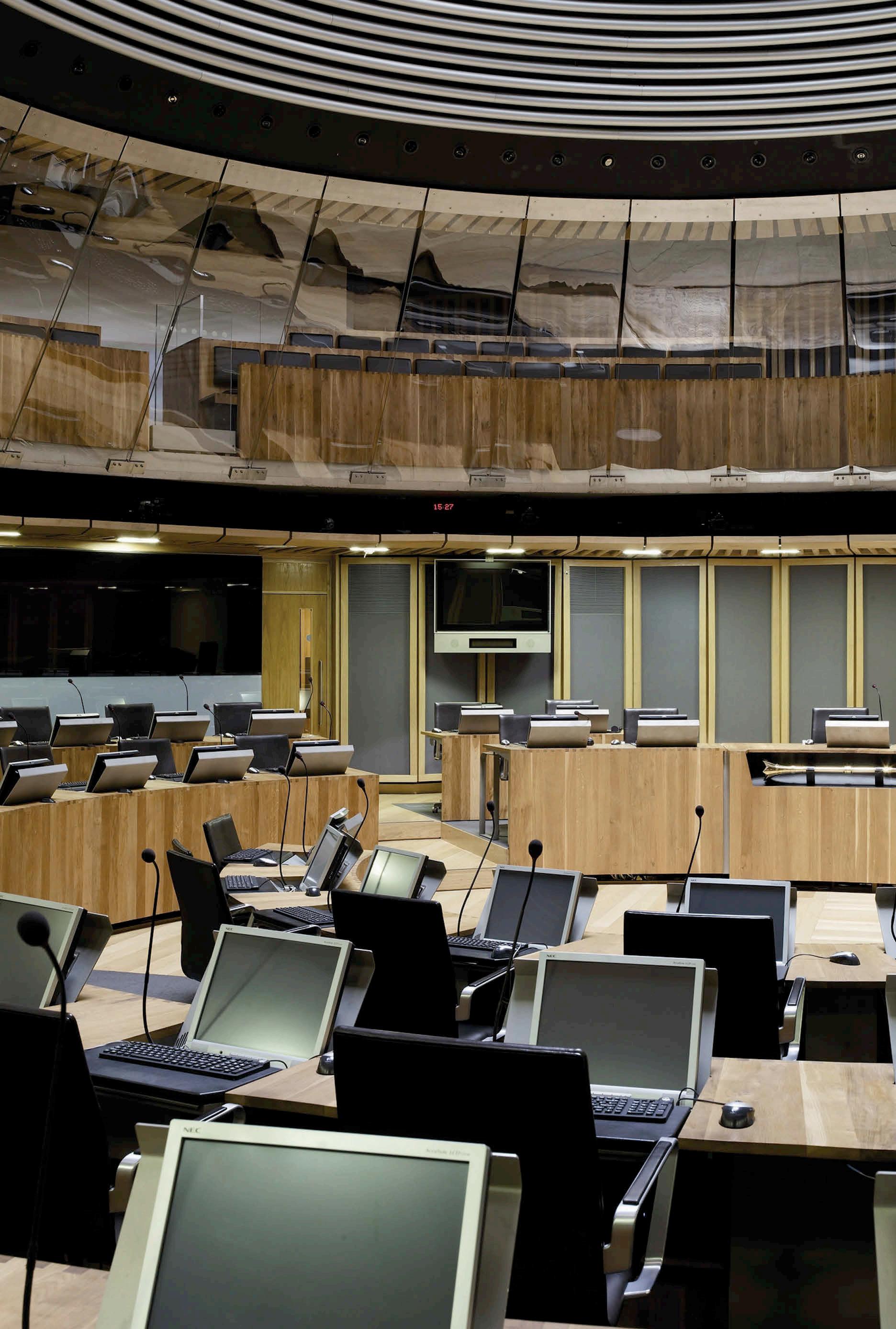
The technology offers a high level of security, while also providing easily accessible information. Assembly Members
log on to the system when taking their seat in the Siambr, and are provided with secure access to their personal email accounts,
calendars, shared data drives and information relevant to Plenary. Additionally, internet and Intranet access is provided.
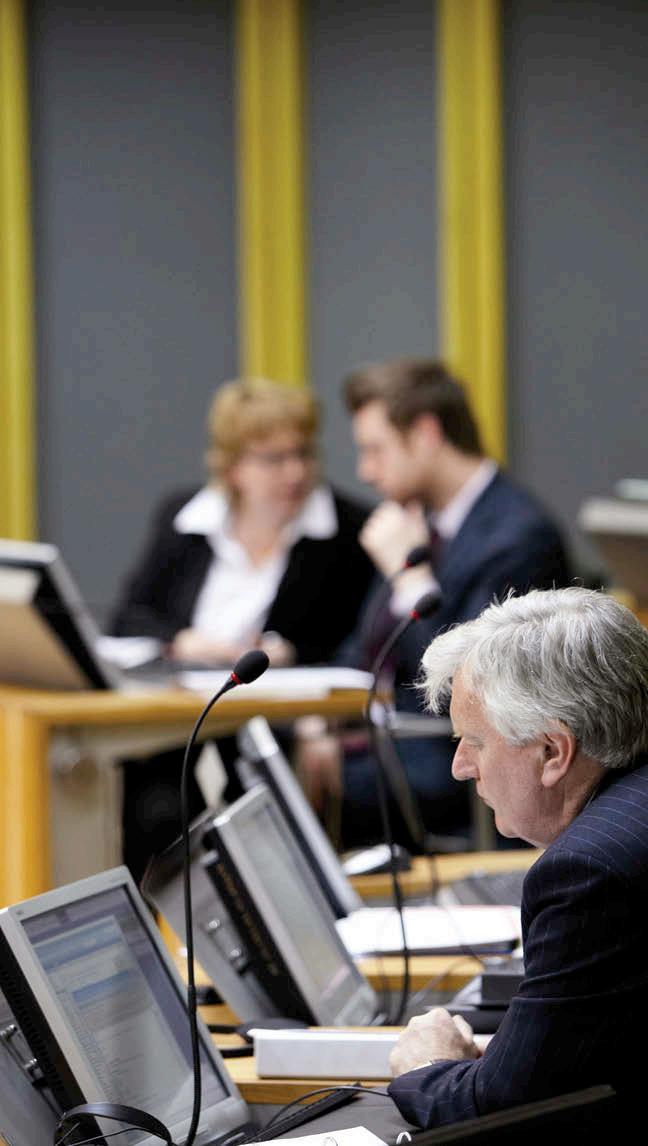
Additional benefits In addition to providing access to personal email accounts, the system in the Siambr offers a simple instant-messaging application, allowing for easy communication between individual Assembly Members as well as messaging larger party groups. Members use an icon-driven screen to select and message a seat position or fellow Assembly Member. The Llywydd (Presiding Officer) and his team electronically process requests to speak into a speakers list, avoiding the appearance of chaos common to many Parliaments, allowing calm, balanced and organized debate…most of the time.
A centralized document management system enables changes to be made to documents which immediately updates on all Assembly Members’ screens during Plenary, without the need for Members to log in and out. The system includes a private area for Assembly Members to store data as well as access to Assembly documentation such as Standing Orders.
The technology installed within the Siambr allows Assembly Members to use standard multimedia technology (video, audio, broadcast and electronic presentations) when taking part in debates. The information can be displayed on Members’ individual screens as well as on display screens located in the Siambr and in the public areas of the Senedd.
The Siambr is equipped with an electronic voting system, with the Llywydd and Assembly staff able to monitor the votes in real-time. At the end of each vote, the results are displayed on four display monitors located around the Siambr. The data is automatically made available to the Assembly website and also to the authors of the Assembly’s record of proceedings. A fully bilingual transcript of Plenary is published on the National Assembly’s website within twenty four hours.

No paper versions are kept. So how have Assembly Members adapted to an increasingly paperless working environment? It varies from Member to Member of course, but because so much of the Assembly’s day-to-day business is done electronically (Assembly questions, motions, amendments, requests to speak, publication of the record of proceedings and the distribution of committee papers and agendas etc), it has quickly become second nature to Assembly Members and staff. And, because there is no formal requirement for signatures (except when signing off legislation when complete), electronic communication is an accepted norm.
The Llywydd sets a particularly strong example. He undertakes his role in an entirely paperless environment. All his work in the Siambr, including the speakers list and script are taken from his computer screen, and during meetings such as the Business Committee and Commission meetings, all of his notes are accessed through a laptop, and emails are received through a mobile device. Every letter received is scanned, and given to him in electronic form.
However while it would be fair to say that electronic distribution of documents and papers has displaced printing in most cases, in some instances, hard copies are preferred. It makes for easier annotation, and in some instances – especially scrutiny and legislative committees, a tactile sheaf of papers is less intimidating when taking evidence than a bank of faces peering over computer screens. That is one of the reasons that while the Assembly wholeheartedly encourages paperfree working, it has stopped short of enforcing the practice.
Therefore, as the National Assembly approaches its tenth anniversary, it is necessary for us to continue to look to the future to
ensure that improved working practices and a commitment to meaningful engagement with the people of Wales remains constant.
As technology advances, we will need to ensure that we are using technology to best effect, and not being hamstrung by any systems that are modelled for a particular process rather than on the natural rhythm of the flow of people’s work. Similarly, if we are to increase the people of Wales’ engagement in the democratic process, our systems must be intuitive for general users rather than being confined to the specialised needs of our business. In short, we must ensure that
“the Assembly now produces bilingual audio interviews... to ensure that we are catering for the needs of local radio stations. “
communicate effectively and purposefully with the people of Wales, and especially technologically-savvy young people.
We are also aware that the media landscape in Wales is changing. There are fewer journalists than there were five years ago, yet media consumption has increased, with journalists now working for online as well as printed editions of newspapers. The need for multimedia content is greater than ever, which is why the Assembly now produces bilingual audio interviews with Assembly Members to accompany every electronic media release, to ensure that we are catering for the needs of local radio stations. Later this year, this offering will be enhanced by the provision of video interview packages, which can be placed as additional content on media outlets’ websites.
technology makes things simple for people, rather than having idealised systems that alienate those whom we seek to represent.
In order to achieve this, we will be keeping a clear focus on how society is evolving, and how new technology have an impact on all of us.
Mr Peter Black AM, Commissioner for the Assembly and the Citizen has a portfolio which includes responsibility for communications technology. A prolific blogger and self-confessed early adopter of emerging technologies, Mr Black ensures the Assembly places a robust emphasis on new technological innovations. Not for their own sake, but to ensure that the Assembly and all its Members are able to
Our IT department has recently initiated a major review of our technology and business processes to ensure that the National Assembly is ready for more structured and consistent application of new methods of working, to secure better and faster connectivity which will allow people to work remotely in a more effective way, which is, of course, a requisite to ensure that we have a 360-degree adherence to the principles of sustainability.
The National Assembly for Wales does not intend to rest on its green laurels. Yes, we have a head start by working in a building that was built and designed with sustainability as its cornerstone. But to ensure a truly sustainable democracy, Assembly Members and staff will need to constantly evaluate how we work, be willing to learn from other organisations and, perhaps most importantly, be ready to embrace any change for the better.
The National Assembly for Wales’ website can be accessed at www.assemblywales.org.
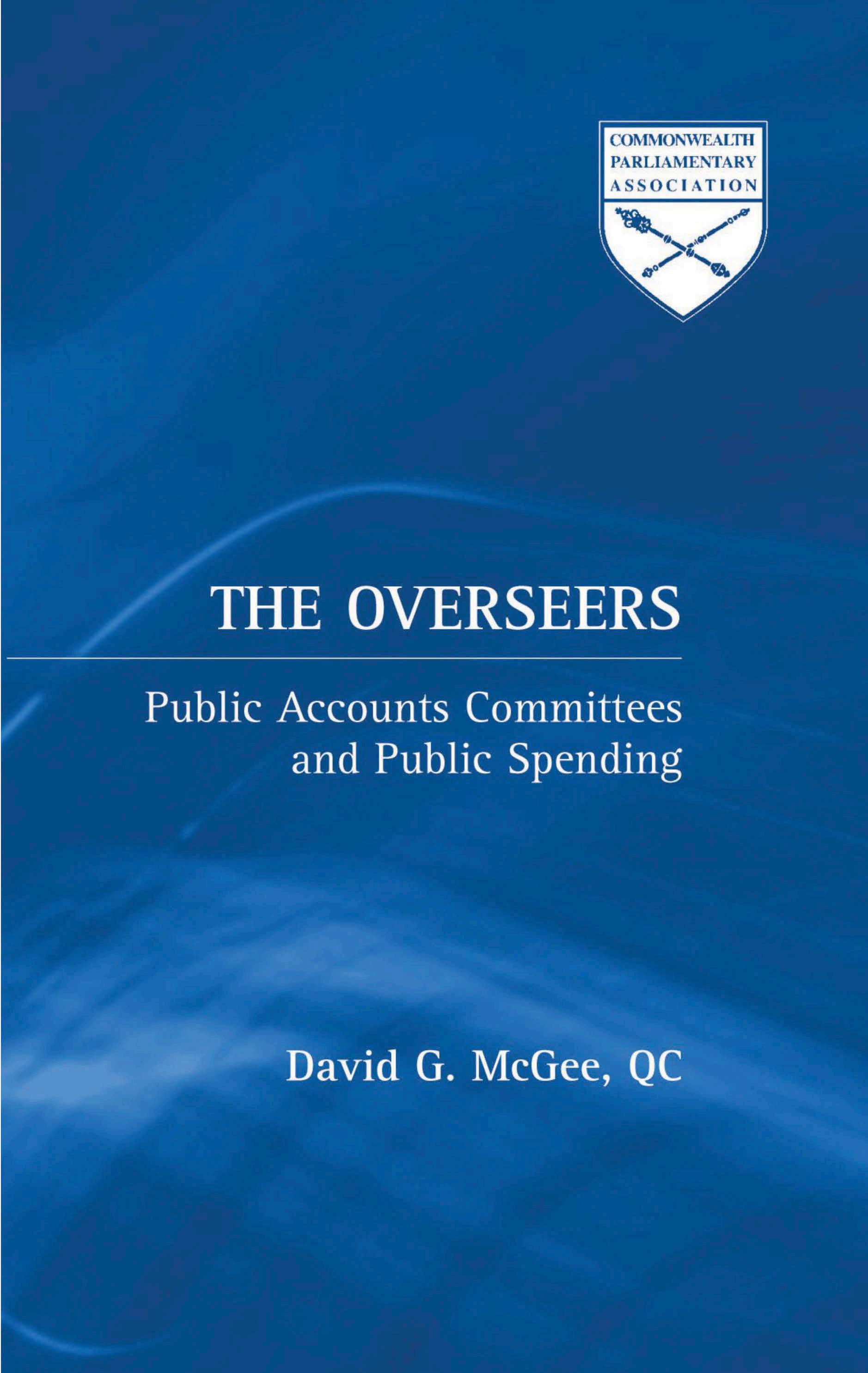

The former Commissioner of Lands and the former Chief Government Valuer in Uganda discusses how a lack of planning has resulted in many varied problems for the country’s capital city, leaving him doubtful as to whether Kampala can truly be transformed into a modern city centre.
Hon. J.L. OkelloOkello MP, in Kampala.
Mr Okello was an MP for the Chua Constituency, Kitgum District from 1996 to 2001.
He was previously Commissioner of Lands, Ministry of Lands and Surveys from 1991 to 1996, and Chief Government Valuer, Ministry of Lands, Water and Natural Resources from 1981 to 1991 . He is currently a consultant valuer for a property consultancy firm.
The hotel industry is perhaps, the most standardized industry in the world. It’s set standards of grading hotels into categories of 5- stars, 4 -stars, 3- stars and so on, entails that a 5 -star hotel in Kampala will be similar to one in Hong Kong, New York, London, Sydney or elsewhere.
The facilities provided by each category of hotel such as plot acreage, swimming pool, the number of VIP rooms and other rooms etc, must fulfill some minimum standards.
It is unfortunate then that the same set of standards which are applied to hotels does not apply to cities, particularly when some countries can suddenly declare any of its urban centers a city.
The genesis of Kampala mess
Kampala is the only city I know where over 90 per cent of its dwellers do not have home addresses. A great majority of
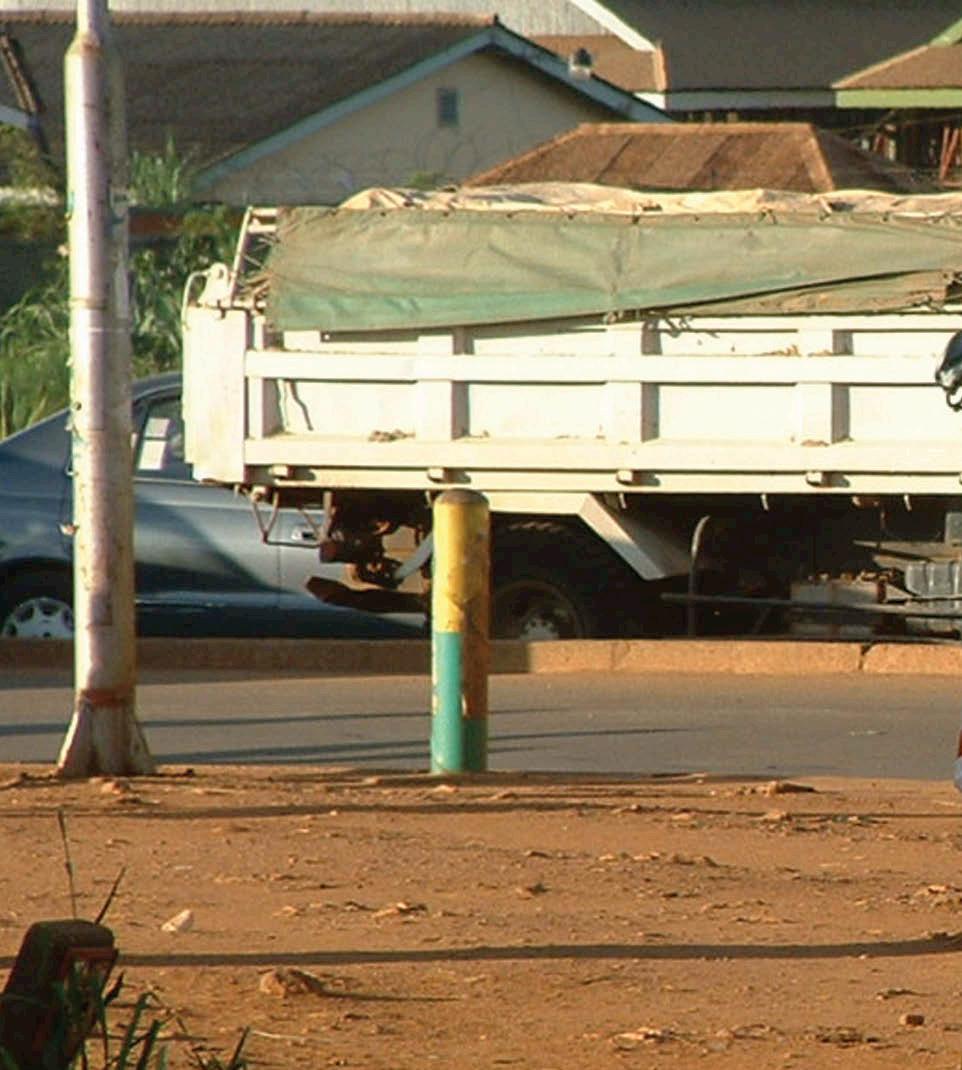
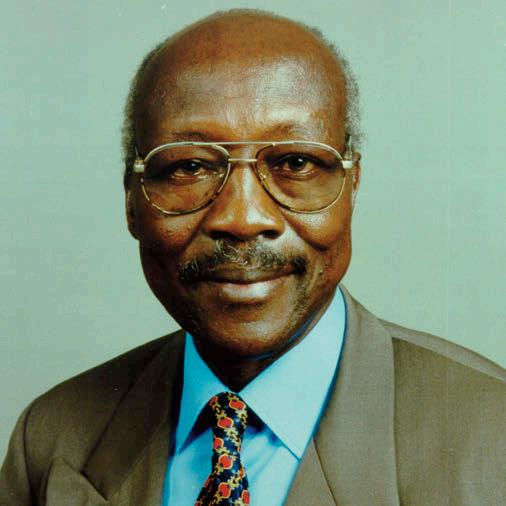
Kampala city dwellers do not even know the numbers of the plots on which they live. This is why during a population census the doors of family units are marked /numbered with indelible ink, because, sometimes, as many as five or more family units are living on one plot.
This lack of information even complicates the work of security personnel, especially the police. As the government does not know
where the people in its constituent reside, security personnel have to be guided by someone in order to reach a troubled spot. One can even be attacked by thugs in parts of Kampala and the police usually fail to reach the spot in good time.
The only planned areas of Kampala consist of the central business district (CBD), Nakasero, Kololo, Bugolobi, Mbuya (partly), Naguru Hill, Ntinda (partly), Makerere Hill, Namirembe Hill and Rubaga Hill. This accounts for less than 25 per cent of the total city area. These areas were planned by the colonial administration and the first UPC Government (19621971). Physical planning on a significant scale was scrapped with the overthrow of the UPC government. The causes of lack of planning within the boundaries of Kampala city are many and varied, and only three can be illustrated for the purpose of this article.
In 1969, after Kampala was
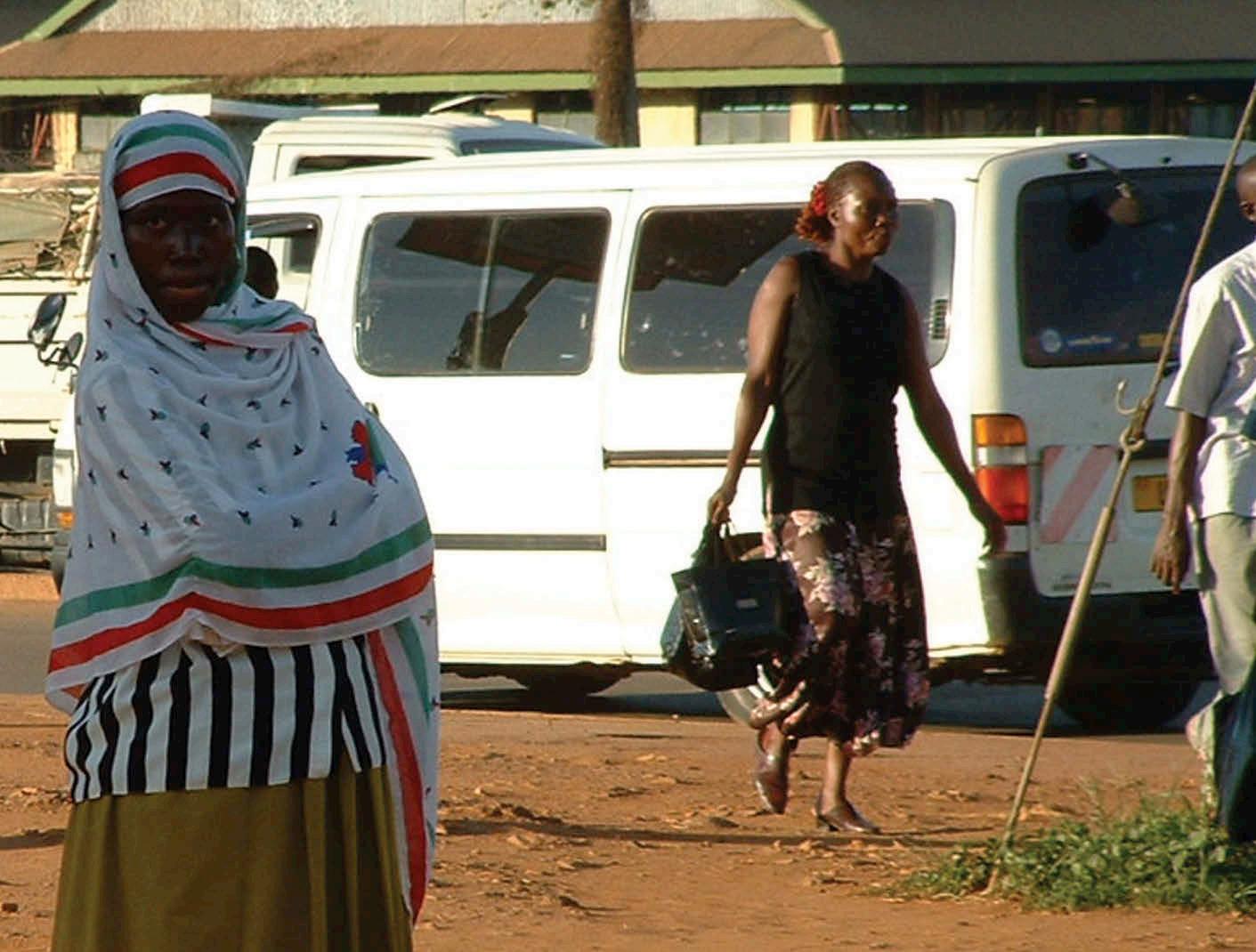
extended to its current size, which became known as Greater Kampala, all the properties within had to be assessed for rates. The project was spearheaded by the Planning and Development Committee of Kampala City Council (KCC), but the leading expert/professional was the government valuer (the title which was later changed to Chief Government valuer), then Mr J.S. Dean.
In the same year, while working as an apprentice in the valuation division of the then Ministry of Lands, Minerals and Natural Resources, I attended one of the meetings of KCC’s Planning and Development Committee meetings with Mr Dean, who proposed to the City Council Authority that buildings within Greater Kampala ¬– which were just brought on board by mere extension of the city boundaries –should not be assessed for rates, but should instead be demolished and the areas properly planned
before the owners could put up buildings of the required standards. KCC rejected this proposal, arguing that it would deny the council colossal sums of money in forgone rate revenue. All buildings were assessed, giving legitimacy to illegal structures, (defined as buildings put up without approved building plans or did not conform to standards set by KCC). This decision of KCC subsequently, gave rise to many, many more illegal structures.
The second reason, worth mentioning, is that after the late, Dr Okullo Epak Yefusa, as the Chief Planner, left the Department of Physical Planning, the Department went into disarray. Those who took over became corrupt and started “piece-meal” planning. One would find a piece of empty land and go to the Physical Planning Department to plan a plot for one to submit an application for a lease. Some of us fought this practice, but to no avail.
Third, the existence of Mailo
Land with Greater Kampala comprising of approximately 75 per cent of the total city land, was (and still is) responsible for the mushrooming of slums in Kampala. Mailo owners somehow assumed that only public land could be planned by the Chief Planner. Yet the Town and County Act is very clear – all land within a planning area must be planned. This category of land owners went on sub-dividing their plots into smaller and smaller pieces as if there was no one in-charge of planning. Some of the plots are now as small as 0.010 hectares. Of course in most cases this was done with “no planning object”, from the Department.
The roads within Kampala City are not worthy of being called city

roads. They are narrow, full of potholes and overwhelmed by “rotten” vehicles. Few roads are sealed or tarmac ked and the rest are murram or just mud. Most roads do not have proper drainage along the sides and are in total darkness at night. Traffic jams can occur at any time, and many man-hours are spent on the roads in “stationery” vehicles. Washing a car has become an unaffordable luxury, while driving on city roads has become a nightmare. You have to fight for space on the road or risk failing to reach your destination. There is no orderly driving, no respect or courtesy on the road. Sometimes traffic policemen add to the problem by giving uncoordinated orders.
When a friend of mine visited Uganda from London last year, he had hired a self-drive car to go and see mountain gorillas in Bwindi National Park. After seeing them off, an hour later, he walked into my office, looking defeated and frustrated. “What happened?” I asked. The man replied, “Oh my God, Oh my God. It is all crazy. I can’t drive here.” He had failed to drive up to Busega before returning the car to its owner.
A slum can simply be defined as an area of unfit buildings. None of the KCC five Divisions: Central, Kawempe, Makindye, Nakawa and Rubaga can claim freedom from the term “slum”. All are “rich” in slums.
From 2003-2005 I was contracted as a Consultant Valuer, among others, by KCC to assess properties for rates, and was allocated two zones out of the 15 rating zones in Kampala. The two were Mengo Central and Kololo, which included Kamwokya II Parish. It was during this exercise that, for the first time, I came face to face with the inner rot of our city. What goes in the slums in Kampala is unimaginable to many. In Ndeeba Parish, the two villages, Nsiike I and II, are situated along

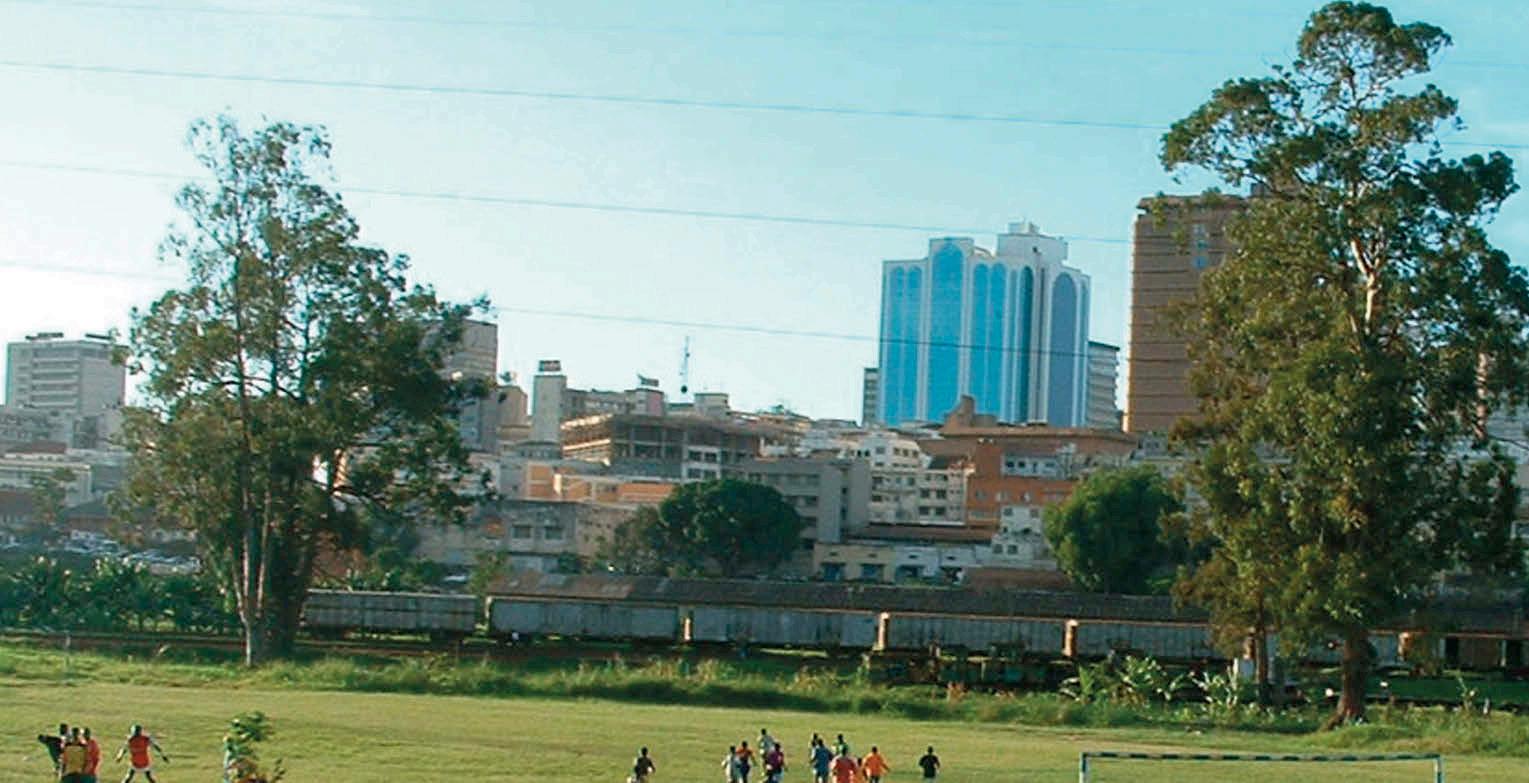
the western railway line. The majority of land is soggy and swampy, and it is not possible to dig pit latrines in this area. Those who live there build suspended latrines with bricks over or near open storm-water drainage. They then put some simple shelter around the latrine. When a latrine is full, one or two bricks are broken at the foot of its walls and the content gushes out and carried by storm water towards Lake Victoria. The process then starts all over again after replacing the broken bricks.
In Kamwokya II Parish, many villages such as Kifumbira, Kamwokya A and B, Kisenyi I and II, Mawanda Road and Green valley are mostly in wet land, where it is not possible to dig pit latrines more than one metre before reaching the water table. In some cases families share pit latrines which are in terrible conditions.
However, when you meet some of the people who live in these slums in the city centre, you may think they live in Nakasero, Kololo or Bugolobi. The women look so smart and beautiful, while the men are handsome and smartly dressed. That is what Ugandans are, no-one can put them down. However, KCC and the government must be serious and start thinking about improving the squalid living conditions in the slums.
For a long time, there have been talks, discussions, debates and even studies ab out changing Kampala into a modern city by improving the roads, building more sewer lines, rail sidings, bypasses and so on. The question is: is it possible to correct the mess in Kampala and turn into a modern city? My answer is no. This will be as difficult as finding a successful husband for a woman. The cost would be too high and not worth undertaking. Another thing which most
people do not know about Kampala is that buildings, roads and structures in the pre-1969 city are not in their true world geographical positions. One of the foreign experts who had worked for KCC about a decade ago told me that they discovered
“The question is: is it possible to correct the mess in Kampala and turn it into a modern city? My answer is no.”
where near Development House (UDC), where government offices are now crammed. This is another mistake which cannot be corrected.
that the original survey of the city was not properly done. This was discovered by using GPS instruments against old city maps. For example, he told me that the true geographical position of City Hall is some
In December 2007 I raised a question on the floor of Parliament for my good, longtime friend, the Rt. Hon. Prime Minister and Leader of Government Business, Prof. Apolo Nsibambi to inform the House what plans government had to shift the capital city to another place and if Masindi Port could be considered as the most appropriate and most central location for a new capital city. Prof. Nsibambi answered that the government had no intention to amend the Constitution, quoting Article 5, Clause 4: “Kampala located in Buganda shall be the capital city for Uganda and shall be administered by the Central Government.” I tried to raise supplementary questions as required by the Rules of

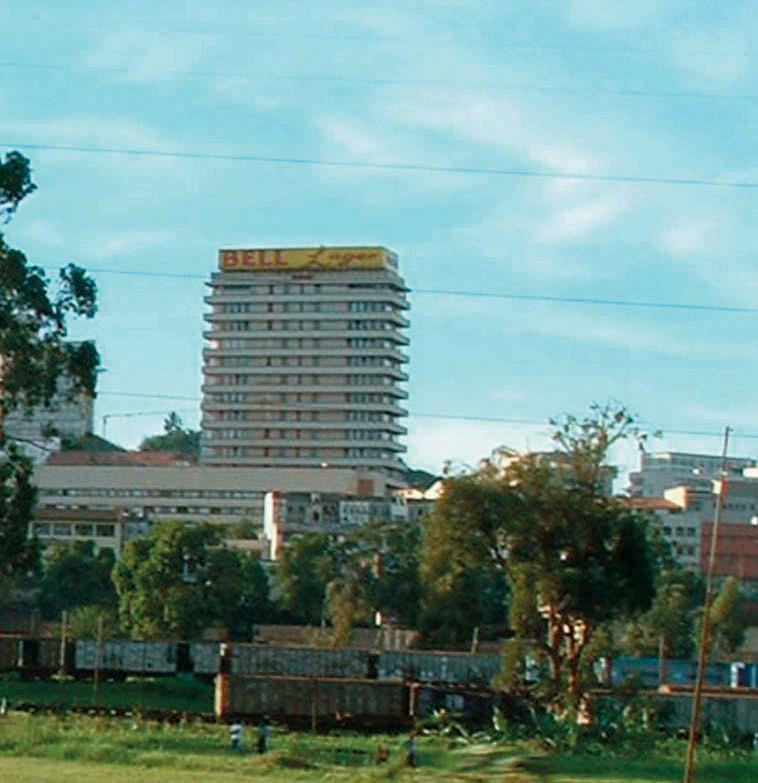
Procedure of Parliament, but the Speaker ruled that the Prime Minister had already stated Government had no intention to amend the Constitution and the debate on this important issue was curtailed.
However, unconfirmed reports now indicate that the government has secretly
deployed foreign experts to carry out preliminary surveys in Nakasongola-Kafu area in preparation to shift the capital city. Unfortunately, the talk going round is that highly placed leaders have already moved in and acquired large chunks of land in the area so that should a decision be made to amend the Constitution and shift the capital city there, land will either be bought or leased from them by the state. I would advise Ugandans who will be alive at that time to reject this primitive greed intended to continue defrauding the country. Otherwise, shifting the capital is just a matter of time since the chaos in Kampala is increasingly becoming intolerable.
There seems to be some mistaken belief among some sections of Ugandans that when the Central Government takes over the administration of Kampala city things will automatically become much
better. This belief is rampant among the people who have used their illicit or ill-gotten money to put up skyscrapers within the city over the last ten years. These people are uneasy to hear any talk about shifting the capital city. My reading of the city administration in the hands of the Central Government is to the contrary. The administration of Uganda is not any different from that of KCC. How then can one group of failed administrators take over from another equally failed group of administrators? The take over of Kampala is just politically motivated, and not to improve any service delivery.
Shifting the capital city is like the rising of the Sun. It will certainly happen at the right time. The question is: where do we take the capital city? My choice would be Masindi Port. Kampala, the executive slum, will remain a commercial city as originally planned by the colonialists.
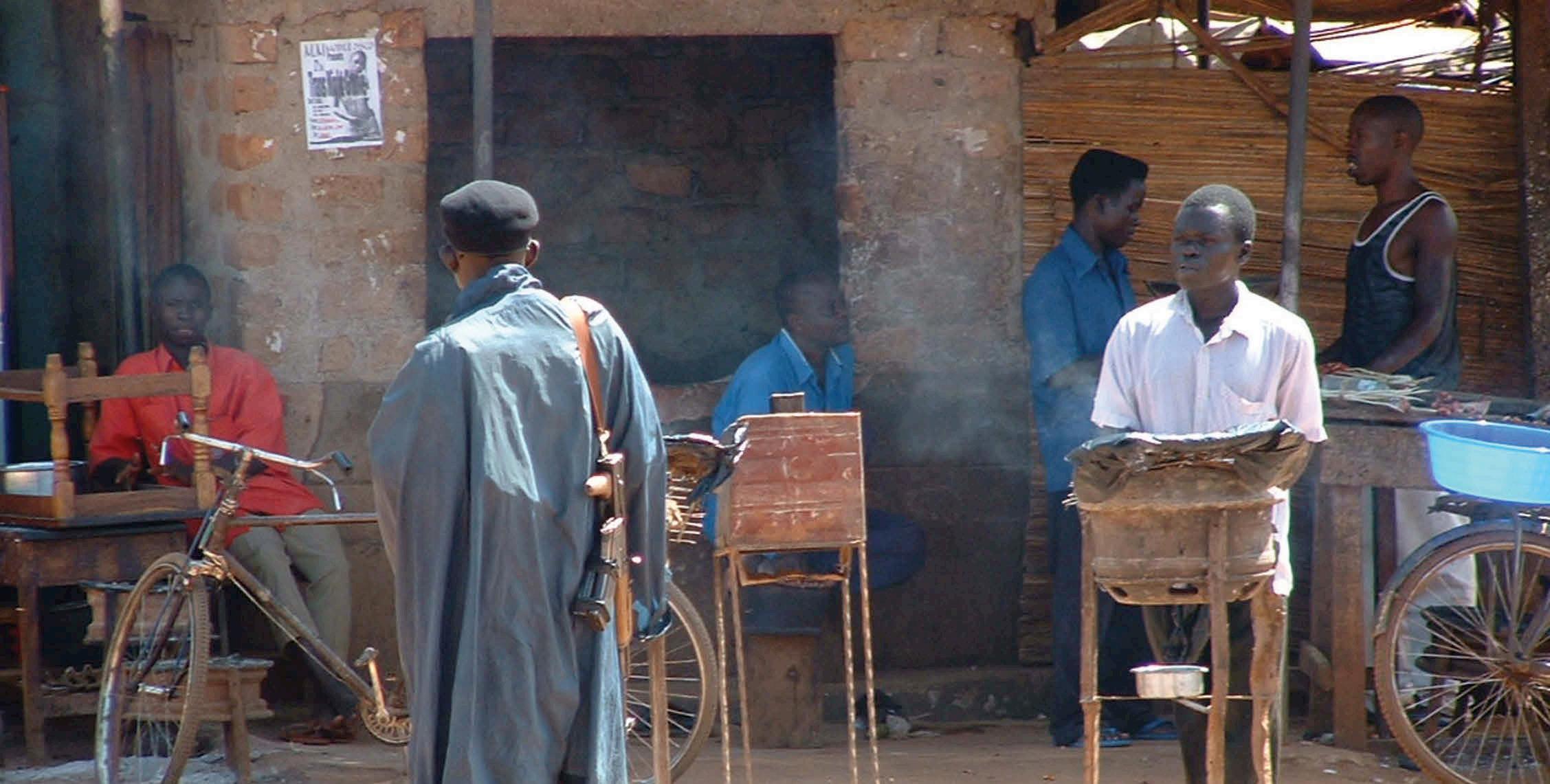

Never in the history of Westminster had so much consternation been caused for so many by just one extraordinary point of order over the Suez crisis, argues the former National Party Member of the Australian Parliament.
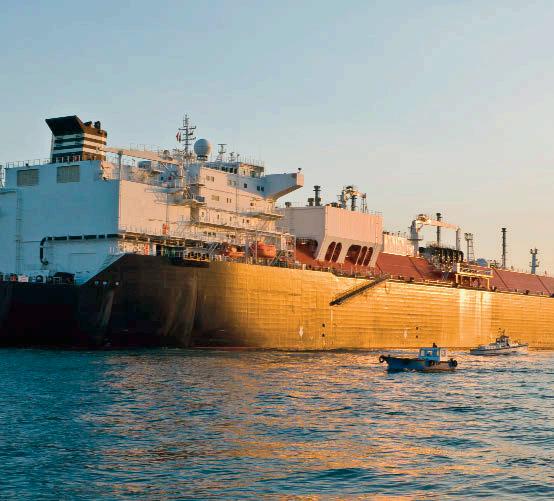
Mr Fischer, a former Australian Army officer, was a National Party Member of the Australian Parliament from 1984 to 2001, serving as Leader of the National Party, Minister for Trade and Deputy Prime Minister from 1996 to 1999. He also served in the New South Wales Parliament from 1971 to 1984. Mr Fischer presented credentials to Pope Benedict XVI as Australia’s Ambassador to the Holy See.
Suez sevres secret conspiracy reviewed
In July 1956 President Nasser of Egypt moved to nationalize the Suez Canal. What was less well known was the fact that the British Prime Minister who had succeeded Winston Churchill, the Rt Hon. Anthony Eden, had initiated a secret conspiracy in the aftermath. This emerged from one extraordinary point of order in the House of Commons and it involved the U.K., France, and Israel. The Sevres conspiracy was bitterly savaged by the USA, and Mr Eden was forced to a ceasefire and was destroyed, Ike Eisenhower was admired by the Arab world as a hero, and Nasser as a super hero!
It was a dramatic and
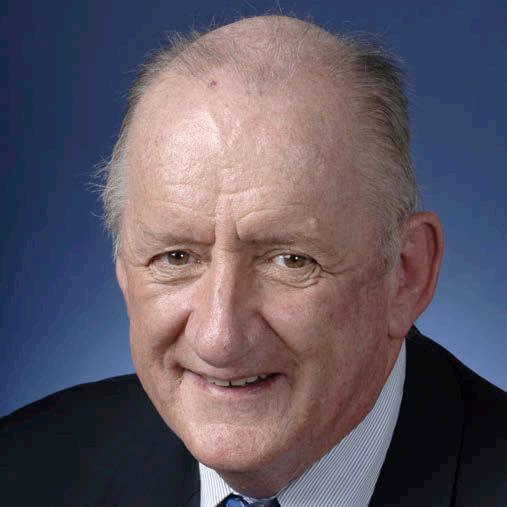
powerful point of order on the Floor of the House of Commons. Arguably it was as powerful a point of order as was ever put down in the Westminster system, certainly one of the most contentious. The date: 1 November 1956. The issue: the Suez Crisis.
As often happens, the focus of an unfolding crisis was on the Floor of the House of Commons with the Lord Privy Seal, Rt Hon. Rab Butler, and many others in intense debate into the evening of 1 November. The debate on Egypt and Israel was reaching its climax, a vote of confidence in the government, when the Honourable Member for The Wrekin from 1955 to 1966, Mr Bill Yates, raised what might aptly be described as a wrecking point of order.
Now a retired Tallangatta Bee Keeper in Australia, Mr Yates had served in the Foreign Office in the Middle East, working in Military Intelligence in the Suez Canal Zone and having lived briefly in Lebanon. The House of Commons Hansard of 1 November 1956, column 1716, reveals all:


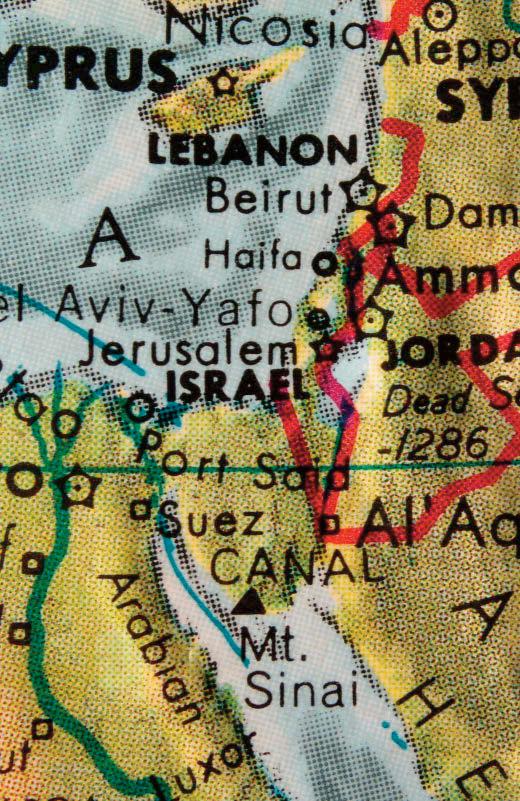
MR W. YATES:
On a point of order, I am a young Member of the House and I desire to have your advice, Mr Speaker. I
have been to France and I have come to the conclusion that Her Majesty’s Government has been involved in international conspiracy.
MR SPEAKER:
That is not a point of order.
HONOURABLE MEMBERS:
Let him speak.
There was uproar on the floor of the House of Commons, and the Lord Privy Seal sought to calm the situation by closing the debate.
The government survived the division; but as the young first-term Backbencher Mr Yates walked out into the lobby, he came upon the Prime Minister Sir Anthony Eden.
Mr Yates said to the Prime Minister, “I have been to France and I have come to the conclusion that you are involved in
international conspiracy.” An exhausted looking Mr Eden replied in perfect French “perfide Albion!” which is translated as “treacherous Britain”.
Was this then an admission by Sir Anthony or an attempt to make light of a tense situation as the joint armed forces of the three “conspiracy” nations raced towards the Suez Canal?
The point of order revealed the tip of an iceberg, the unholy secret alliance of Britain, France and Israel double crossing both the United States and Commonwealth countries such as Canada. It led to Australia’s shortest sea route through the Suez Canal to Europe being cut off for several critical months.
Technically it was not a point of order at all, as Mr Speaker pointed out in vain, but the damage was
already done. Mr Speaker was Rt Hon. W.S. Morrison, a Conservative, who went on to become Lord Dunrossil, Governor General of Australia.
The Suez point of order on conspiracy created the beginning of the end of Sir Anthony, who within 100 days had resigned from No 10 Downing Street.
Australia’s Foreign Minister of the day, Mr Richard Casey, was visiting Westminster and wrote in his diary that “there was turmoil throughout the Parliament and Ministers and Members on both sides were in consternation. The scenes in the House of Commons have been amazing and beyond anything I have ever witnessed. I am told only the most intense whipping has kept the Conservative Party intact”.
Curiously enough, Mr Casey completed an Aussie troika as both he and Mr Morrison were to become Australian Governors General. Mr Yates subsequently became a Member of the Australian House of Representatives. He went on to vote with the government on this particular occasion, but days later subsequently abstained on related motions.
After the point of order and the close of debate, as Mr Yates subsequently exited the House of Commons Chamber late that night, Mr Gilbert Longdon, a senior Conservative, leant across and said to the new Backbencher just four words, “you are absolutely right.”
Mr Yates had “let the cat out of the bag” with regard to a secret agreement between Britain, France and Israel known as “the Sevres Agreement or Protocol”. It had been signed at the Villa Bonnier near Paris, France, and the only copy remaining to this day is held by the Israeli government given that Sir Anthony ordered the British copy destroyed, and the French copy, held by Foreign Secretary Christian Pineau, went missing.
As Mr Yates laid out in a thesis entitled “The Post War Middle East


and the Kennedy-Nasser letters”, for the Department of History, University of Melbourne, the plan was a simple one under the secret Sevres conspiracy:
“Israel, having crossed the Egyptian frontiers, was to advance to the Suez Canal, and at that moment Britain and France would issue an ultimatum declaring that the safety of the canal was at stake and that all military forces, both Israeli and Egyptian, should withdraw 10 miles away from the canal. Britain and France would take over the canal once again to ensure the safety of international shipping. Speed was essential and attached to the ultimatum to both Israel and Egypt there was going to be a condition that they must reply within 12 hours.”
History records that after President Gamal Abdel Nasser of Egypt announced the Suez Canal takeover on 26 July 1956, there had been a huge reaction from Britain and France but a more level-headed reaction from the United States. This was led by a furious Secretary of State Mr John Foster Dulles, and the then President up for re-election, Mr Dwight D. Eisenhower.
In the aftermath of the unilateral action to take over the ownership and operation of the Canal from the Suez Canal Company, headquartered in Paris, the United States moved through the United Nations to devise the Suez Canal Users Association concept and enter into discussions with Egypt to find a peaceful way forward. The U.S. Republican administration was totally opposed to the use of force and was also deeply concerned with the prospect that Russia, at the height of the Cold War, might enter the conflict.
For his part Sir Anthony, aided and abetted by the French, carried perhaps two conflicting chips on his shoulders. He was, after all, the conservative successor to the great warrior, Sir Winston Churchill and wanted to show he was up to the task. For three long periods he had been Foreign Secretary or Foreign Minister of Great Britain, most notably as a key Member of the War Cabinet during the Second World War.
Conversely Sir Anthony had lost two brothers and one son in World War I and II, a big personal family loss and so initially he was keen on
a diplomatic solution, but soon he drifted towards a sneaky military intervention to recapture the Canal – fading empires did those sorts of things as late as the end of the 20th century, with the successful Falklands venture to come.
“Mr Yates had “let the cat out of the bag” with regard to a secret agreement between Britain, France and Israel known as “the Sevres Agreement or Protocol”. “
In order to create some distraction and some cover for the real objective, Sir Anthony invited the Australian Prime Minister, Sir Robert Menzies, to go to Cairo in August/September 1956 and try and negotiate and open discussions with President Nasser, but these talks quickly collapsed as Nasser felt under threat and saw what was coming. Perhaps unfairly,

the mission was dubbed a misadventure.
On 28 October 1956, Israel Armed Forces invaded Egypt, travelling quickly to within ten miles of the Suez Canal. Britain and France immediately issued the twelve hour ultimatum, which an angry Mr Dulles described “as crude and brutal as anything I have ever seen”, adding that it was utterly unacceptable. The British, French and Israeli timing was possibly influenced by the concurrent Hungarian Revolution and Russia’s resulting distraction.
As the debate unfolded on the floor of the House of Commons, Royal Air Force planes started attacking Egyptian airfields and military installations and the conflict had begun, namely the move by Britain, France and Israel to recapture the canal from Egypt. President Eisenhower did not allow the presidential election to distract him, and the U.S. administration took the matter to the United Nations.
While Sir Anthony and his cabinet had voted for military action and had hoped to seize the Suez Canal quickly and present a fait accompli, the UN General Assembly passed a resolution calling for a ceasefire. The combined British and French
Meanwhile Egypt had been busy blocking the canal by blowing up the Ismailia railway bridge at Kantara. They also took the opportunity to blow up a number of oil pipelines and sank some ships in the canal itself. It was many months later before Egypt reopened the canal.
As part of the equation, Israel was obliged to withdraw all her armed forces from Egypt but the major Middle East ramification was the launch of what many, including Mr Yates, describe as the PanArab Revolution. It continues in many forms to this day.
invasion fleet, after a short burst of action lasting six days and making limited progress, was ordered by Sir Anthony to cease hostilities.
Years later British Colonel Tubby Butler, who led his parachute unit down the west bank of the canal, stated that they needed just 24 hours more and the canal would have been completely recaptured.
It is now known that the British cabinet meeting on 6 November, which ordered the ceasefire leading to total withdrawal by 22 December, was also told that there would be no support for British sterling through the International Monetary Fund or directly from the U.S. unless the ceasefire was ordered. So powerful forces were now holding a financial pistol pointing directly at the sterling currency, the English pound and the financial stability of the U.K., threatening a devastating currency collapse.
At about the same time, the America Sixth Fleet intervened, in part to extract U.S. nationals, but effectively to block or impede the British and French invasion force.
It has been suggested the secret Sevres Agreement or Protocol not only was a double cross of the U.S., but also led directly to the U.S. effectively siding with Egypt against the forces of the Anglo Franco empires and one of their creations, under the Balfour Declaration (later the UN), the independent nation state of Israel.
For a period after the Suez crisis, the re-elected President Ike Eisenhower and the U.S. were much admired in the Arab world, hailing President Nasser as an Arab super hero. Mr Eisenhower was extremely popular among the Arab nation states, and the U.S. was regarded as having correctly made a stand in relation to the Suez Canal, essentially in favour of Egypt and the Arab world and against France and Britain. Sadly the U.S. did not use this leverage to sort the Palestinian question for all time, at that time.
Middle East peace opportunity missed
It was a grand opportunity missed, as the U.S. alone had the capability to lay down that Palestine would be given recognition as a Nation State, comprising the West Bank, East Jerusalem and the Gaza. This would have greatly helped peace in the Middle East.
Had Mr Dulles in 1956 (or for that matter Rt Hon.Tony Blair in 2006) written the missing letter balancing Balfour, then peace

might have more chance in the Middle East. It would be easy to draft along the pattern of the short Balfour 1917 letter that led to Israel’s creation:
“The Cabinet has decided today to recognise Palestine as a Nation State forthwith, as comprising all of the Gaza, East Jerusalem sensibly defined and the available areas of the West bank; with a commitment to help negotiate further. In so doing nothing should arise injurious to bona fide minority residents or refugees.
It has been suggested in some quarters that the Yates point of order itself was subject to a D Notice, and no reference to it is to be found in the media of 50 years ago, lending credence to the possibility the British Government ordered suppression of the contents of the point of order and absolute suppression of the secret Sevres Agreement or Protocol to which the point of order referred. What happened to Mr Yates in the aftermath? Alas, he was not to gain ministerial rank and subsequently departed Great Britain for the antipodes and Australia where he was elected and served as the Member for Holt in the Australian Parliament between 1975 and 1980. Today he resides in Australia at Old Tallangatta, upstream of Albury/Wodonga near the New South Wales/Victoria border, as punchy and as tenacious as ever, bee- keeping and quietly proud that his busy timely working visits to Egypt and France in October 1956 led to the point of order that made history.
As Rt Hon. Winston Churchill might have observed, never in the history of Westminster, had so much consternation been caused for so many by just one extraordinary point of order, which was not even a true point of order, but which contributed mightily to the political destruction of one Prime Minister.


The Director of the Parliament of Uganda’s Parliamentary Budget Office (PBO) outlines how the PBO was first established, but more importantly, how it has contributed to Parliament’s active participation in the budget process.
Mr Samuel H. Wanyaka, in Kampala.
Mr Wanyaka has been the Director of the Parliament of Uganda’s Parliamentary Budget Office (PBO) since 2002. He worked previously in the Ministry of Finance, Planning and Economic Development as an Assistant Commissioner.
Mr Wanyaka would like to acknowledge the assistance of PBO Assistant Director, Mr Moses T. Bisase, and its principal economist, Mr Asumani Guloba, in the preparation of this article.
Introduction
The Parliamentary Budget Office (PBO) of the Parliament of Uganda has been a source of curiosity among Commonwealth Parliaments, given its uniqueness and that, while similar offices exist in some other Legislatures around the world, it was the first of its kind among Commonwealth Parliaments. The law that created the PBO, introduced rare innovations in legislative oversight of the national budget process. Indeed, several Commonwealth Parliaments, especially in subSaharan Africa, have paid visits to understudy the PBO model with the aim of benchmarking. However, it is surprising that little has been documented about PBO. Accordingly, this paper attempts to offer answers to the following questions: Why was the PBO established? How was the PBO established? What are the functions of the PBO? How does the PBO contribute to the
business of Parliament? What is the role of the PBO in the budget process? What are the staff requirements and establishment levels? What are the achievements of the PBO and how has it influenced the budget process in Uganda?
The PBO came into existence as a result of a wider budget reform process which culminated into a private Members’ bill that produced the Budget Act, 2001. The budget reform was aimed at making the budget process more transparent, participatory and all inclusive. By design the budget reform created a department within the Parliament of Uganda to support the Members of Parliament in the budget process. Before the Budget Act, 2001 the Legislature’s role was more of “rubber stamping”. In that, the Legislature passed the ex-ante budget without proper oversight scrutiny and the Legislature
reserved its role in the ex-post budget. This meant that always the Legislature asserted its budget oversight role late and what was left was mainly postmortem analysis leaving the actual budgeting untouched. However, it should be noted that a national budget is the single most important policy implementing tool of the executive. Indeed, legislative oversight is nowhere more important than over the budget.
It is for this regard that an orderly and early involvement of Parliament within the budget process gained support within the Legislature, leading to a private Members’ bill hence the Budget Act, 2001. Consequently, the Budget Act, 2001 streamlined; set timelines, guidelines and defined roles in the budget cycle and empowered Parliament to be an active participant in the budget process.
The Budget Act, 2001 (Section 19) sets up the Budget Committee,

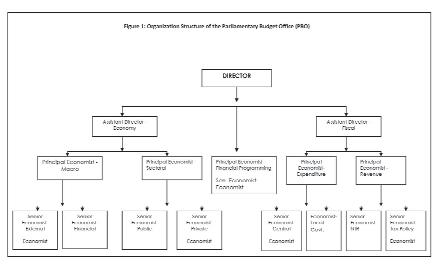
charged with considering preliminary budget estimates and the Macroeconomic Plan and Programs of government and submitting the recommendations to the Speaker. In addition, the Budget Committee is charged with discussing various issues of the National Budget, compiling amendments and recommendations from the sessional committees and forwarding them to the plenary. The Budget Committee carries out such other functions relating to the National Budget as may be assigned to it by Parliament or any law. However, due to the technicality of the functions of the Budget Committee, Section 20 of the Budget Act, sets up the PBO which is a technical, non partisan, objective and analytic office equipped with budget and economic experts to support the oversight function of Parliament.
The Budget Act, 2001 clearly spells out the functions of PBO under Section 21. PBO is charged
with providing Parliament and its Committees with objective and timely analysis. The analysis for economic and budget proposals is required for Parliament to make informed legislative decisions.
Specifically, the PBO is charged with, but not limited to;
i. Providing budget related information to all Committees in relation to their jurisdiction; ii. Submit reports, but not limited to, economic forecasts budget projections and option for reducing the budget deficit;
iii.Identify and recommend on Bills that provide an increase or decrease in revenue and the Budget;
iv.Prepare analytic studies of specific subjects, and;
v.Generally give advice to Parliament and its Committees on the Budget and the National economy.
Staffing levels
In order for the Parliamentary Budget Office to fulfill its mandate, section 20 of the Budget Act,
2001 states that the PBO should be staffed with professional and high technically qualified staff. The establishment of the PBO is per the structure in Figure 1.
According to PBO structure, the functions of the PBO fall under two divisions; the macroeconomic and sectoral analysis division and the fiscal analysis division, however, the two divisions are interlinked with a financial programming and data management section. The fiscal analysis division is charged with budget analysis including both the expenditure and revenue sides of the budget. In relation to the Budget Act 2001, the fiscal division provides timely information and analysis of the Executive fiscal policy proposals and implementation. The macroeconomic and sectoral analysis division is charged with providing timely analysis on the macroeconomic dynamics of the entire economy, including carrying out thematic studies of importance on the economy. The Financial Programming section is charged
with maintaining the PBO economic and statistical database, in addition to making data forecasting scenarios for the analytical function of the PBO. It is from this functional set up that PBO provides technical backup to the Legislature in its oversight role with in the budget process.
In its functional operation, the PBO strives to be objective and impartial. It generally takes an independent stand in its analysis and information dissemination. The technical advice is not politically influenced. Any committee Chairperson or Member of Parliament may put a request for analysis or advice directly to the Director of the PBO. Indeed, while the PBO’s activities are spelt out in the Budget Act, Parliament as a whole and its committees make requests for advice or analysis on any issues related to the budget and economic performance. In addition, the PBO periodically and timely provides adequate information and analytical reports to Committees and Parliament in general.
However, to effectively help Committees during their deliberations within their jurisdiction, each Committee has a budget officer attached to it from PBO. The officer is charged with providing immediate technical economic and budget advice to the Committee. Although administratively the PBO is under the Parliamentary Service Commission, functionally it reports to Parliament and its Committees.
Uganda’s Budget Process has undergone various reforms in recent years which include: focus on poverty eradication; use of Medium Term Expenditure Framework (MTEF) as a planning and budgeting tool at both the central and local government levels; and promoting the

development of Sector Investment Programmes. The budget process is consultative and is guided by the Budget Act 2001. While the financial year runs from July to June, the general budget process starts with a national consultative conference in October every year, to agree on the budget priorities for the forthcoming financial year. This marks the beginning of updating sectoral development plans by Sector Working Groups (SWGs) for eventual incorporation into the National Budget Framework and updating of the Medium Term Expenditure Framework (MTEF).
Following, the national consultative workshop, the Budget Act, 2001 requires the spending agencies to submit their preliminary estimates to H.E the President by 15 February of each year, and in turn the Executive submits the Three Year Indicative Plan of Economic and Social Development and the Preliminary Indicative Estimates of Revenue and Expenditure to Parliament by 1 April. Parliament through its Sessional Committees analyzes the preliminary indicative budget estimates and reports to the Budget Committee no later than 25 April.
The Budget Committee, in turn, scrutinizes the sessional committee recommendations, compiles a report for the Speaker who sends the recommendations to H. E. the President by 15 May.
In view of Parliament’s recommendations, the Executive prepares the final budget which is read to Parliament by 15 June. Parliament debates the budget speech for a period of one month. Meanwhile, government departments and agencies submit their policy statements to Parliament by 30 June.
Sessional Committees scrutinize the policy statements under their respective jurisdictions and present their reports to Parliament by 15 August. At the end of the budget debates, the government
submits to Parliament the Appropriation Bill by the end of August for approval.
Overall, the budget process is a highly involving cycle, with Parliament as an active participant. During the budget process, the PBO continuously and proactively provides technical advice and information to Members of Parliament, Committees and Parliament in general. The role of the PBO within the budget process is enshrined in the Budget Act, 2001. At all the time Parliament is involved in the budget process, the PBO is at the centre. While the PBO advisory
“The PBO serves as a role model for other Parliaments within the Commonwealth.”
role is going on, it continuously monitors the budget and the national economy to ensure that Parliament’s position is not compromised.
Challenges notwithstanding, the achievements of the PBO in influencing the budget are both measurable and otherwise. Indeed, both the Legislature and technocrats in the executive appreciate the role of the PBO. Over time, it has enhanced the Legislature capacity in the budget oversight, especially the ex-ante budget. In addition, the executive appreciates the PBO’s technical advice to the Legislature to improve the country’s activity-based budgeting and process. Since the PBO is a prime source of budgetary and economic information, it has enhanced Parliament’s participation in the budget process.
The main achievement of the PBO has been in acting as a technical arm in Legislatureexecutive budget negotiations. This has culminated in revisions in the preliminary and final budget positions of the executive. In addition, technical budget scrutiny in Parliament has overtime improved due to the presence of the PBO. Indeed, the executive is more cautious and no longer takes Parliament for granted. This is because the PBO provides information that puts the Legislature on a more equal footing with the Executive.
The PBO has enhanced the participation of Parliament by interpreting and simplifying complex information from the executive. Furthermore, it has made Parliament respond and deliberate efficiently and rapidly on the executive’s economic and budget proposals. In addition, the PBO has promoted transparency and credibility within the budget process by critically assessing government positions, enabling efficient and effective legislative oversight.
In general, the presence of the PBO has improved the legislative oversight over the budget process. Presently, the executive finds it motivating to involve Parliament early, in order to avoid misunderstandings, alterations and refusal at a latter stage.
The introduction of the PBO, as a department at the Parliament of Uganda, was a welcome innovation. Over time, the PBO has contributed to Parliament’s active participation in the budget process. The executive and other stakeholders appreciate its role in strengthening of the ability of Members of Parliament to enforce accountability, transparency and expenditure management. The PBO serves as a role model for other Parliaments within the Commonwealth.
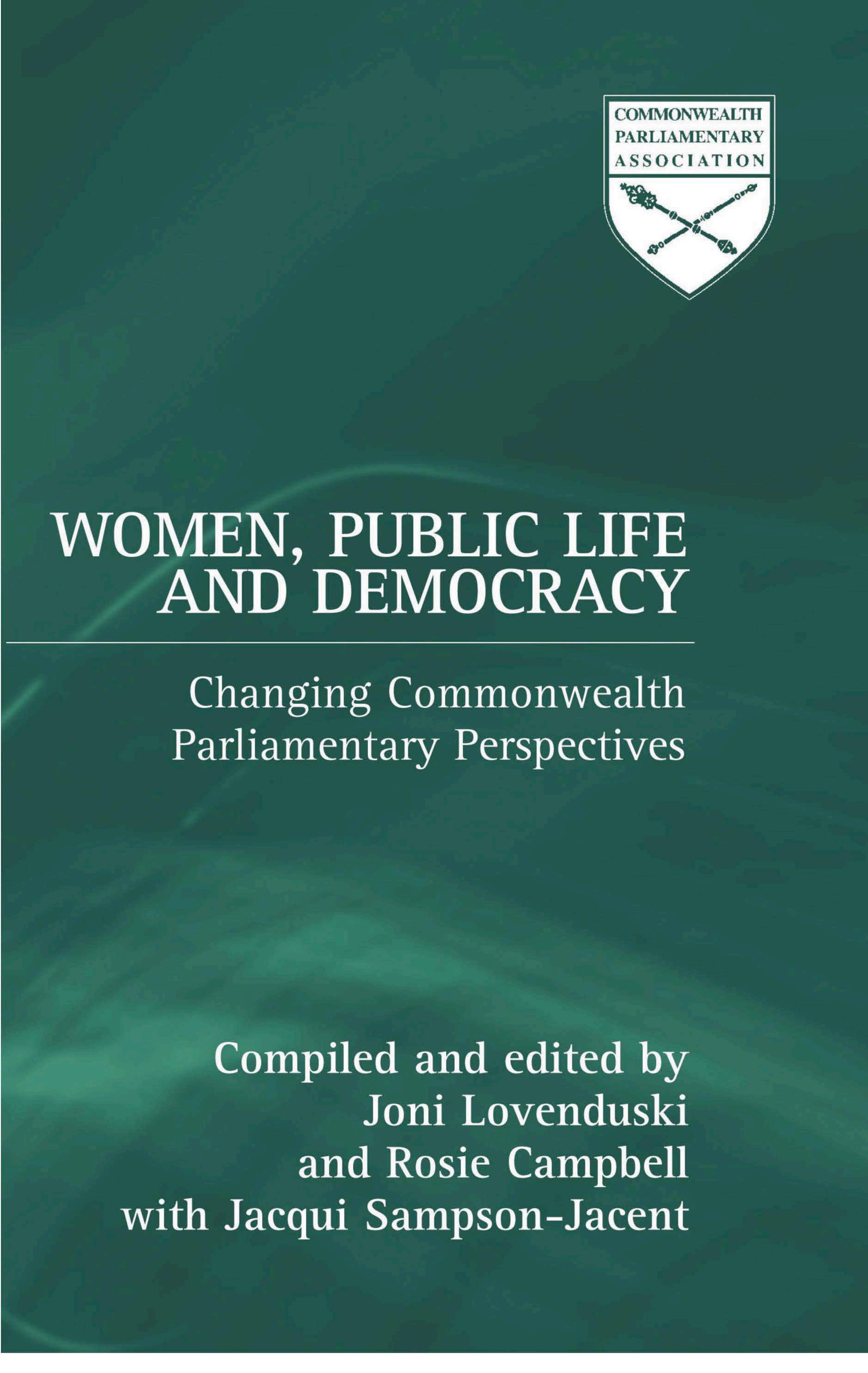

Senior
representatives from a group of nine Pacific and South East Asian Parliaments plan to raise the level of parliamentary financial scrutiny to improve the performance of their Commonwealth and non-Commonwealth governments.
National action plans to improve the governance of their countries this year through stronger parliamentary scrutiny of public spending – both before and after the fact – were agreed by senior Members and officials attending a February Public Accounts Committees seminar in Victoria, Australia, supported by the Commonwealth Parliamentary Association (CPA).
Participants in the fourth annual La Trobe University Summer Residency for Public Accounts Committees agreed that their Parliaments must establish, revive or strengthen the PAC in each of their Parliaments through an ambitious collection of concrete steps ranging from amending legislation or parliamentary rules to training Members and providing more resources for what has traditionally been the most senior committee in Commonwealth Parliaments. Delegations from two of the nine countries participating in the seminar run by La Trobe University’s Public Sector Governance and Accountability Research Centre agreed their Parliaments must establish a PAC as part of their constitutional reform and democracy
strengthening programmes. A third country would try to revive its PAC which has been dormant for some time.
While five of the countries needed more staff and financial resources for either their PAC or their Auditor General, others looked to the provision of audit and more general financial training for Members of Parliament and parliamentary staff as an achievable goal for their Parliaments in the coming year.
The seminar was held from 8 to 14 February by the Research Centre, which is part of the university’s Faculty of Law and Management. It was attended by delegations from the Commonwealth countries of Bangladesh, Kiribati, Samoa, Tonga and Vanuatu. It was also attended by representatives from Indonesia, Laos, the Marshall Islands and Vietnam as non-Commonwealth countries in both regions turned for advice to the Commonwealth where the concept of parliamentary scrutiny of government spending by a Public Accounts Committee originated.
The programme was run by the Research Centre’s Executive Director, Prof. Peter Loney, a
former Member of the Victorian Parliament and former Chairperson of its Public Accounts and Estimates Committee. As well as CPA support for the delegations from Kiribati, Samoa and Tonga, support for other seminar participants came from the World Bank Institute and the Centre for Democratic Institutions in Canberra.
The seminar began immediately after severe bushfires broke out in Victoria following more than a decade of drought. In the days leading up to the seminar, a prolonged heat wave with temperatures approaching 49 degrees Celsius, lightening storms and high winds ultimately sparked fires which devastated about half of the state, including areas on the fringe of some Melbourne suburbs. After spending a day in Melbourne at the Parliament of Victoria discussing that Parliament’s financial scrutiny processes, the group was to have travelled to La Trobe University’s Beechworth campus in the fire-ravaged northeast of the state. This proved impossible initially because the campus and the town of
Beechworth itself were under threat from nearby uncontained fires. Later, when the direct threat to the historic old town was reduced, the university facility became a rest and staging centre for fire crews in the area.
The seminar was relocated to the coastal city of Geelong. Although this was well away from the fire zones, by the end of the seminar a faint haze and the smell of smoke hung over Victoria’s second largest city. Seminar participants attended a memorial service in Geelong for the 173 people who were killed, and CPA Secretary-General Dr William F. Shija sent a message of sympathy to the Parliament of Victoria.
Financial scrutiny through diverse procedures
The seminar heard that Commonwealth Parliaments and Legislatures have a common commitment to financial scrutiny through the work of Public Accounts Committees, but the ways in which this scrutiny is undertaken vary greatly around the Commonwealth. It was noted, for example, that in Victoria the Public Accounts and Estimates Committee is a joint committee of

both Houses and examines the government’s budget estimates of future spending and the audited accounts of past spending. In most Commonwealth Parliaments, the PAC only looks at past spending.
Some PACs meet in private, others in public and some have their inquiries broadcast. In some
cases, the Auditor General is the PAC’s chief advisor, while in others he or she appears as a witness and in some the Auditor General plays both roles. Some PACs have a role in the appointment of an Auditor General while others don’t, and some have a voice in the determination of the budget and
other resources placed at the disposal of the Auditor General.
Beyond the Commonwealth, the seminar was told that there are

similar differences in the way Parliaments examine government budgets. Dr Rick Stapenhurst of the governance team at the World Bank Institute reported that Parliaments in a handful of countries of the Organization for Economic Co-operation and Development (OECD) can make significant changes to their government’s budget. These nations, such as the United States, follow a congressional system in which the budget is a spending programme negotiated between the President and Congress.
Parliaments can make minor changes to the budgets proposed in most other OECD countries, principally European nations where proportional representation has led to a multiplicity of parties in Parliament and coalition governments have to negotiate spending plans.
In a few countries, mostly the Westminster system nations from the Commonwealth, Parliaments can only approve or reduce executive budgets and traditionally pass them without any changes.
He also reported that a study of 39 OECD countries undertaken by the Institute, the training arm of the World Bank, found that 10 Parliaments have less than two months to consider a budget, 23 have between two and four months, five have four to six months and one has more than six months. Some review budgets in special estimates committees, some divide the review between an estimates committee which examines totals and departmental committees which look at their own ministry, and others confine their reviews to department committees.
The south Pacific Commonwealth nation of Tonga has embarked on a democratic reform programme to increase public representation and bring in responsible ministerial government as part of its monarchical system of
governance. Tongan parliamentary officials at the seminar noted that reforms in are now scheduled to come into effect with elections in 2010, but some changes have already been made.
The Auditor General’s office has been moved from the Prime Minister’s office to the Legislative Assembly so the officer is now responsible to Parliament via the Speaker. Parliament does not now have a PAC, but the Auditor General reportedly supports its establishment, as do a number of Ministers.
Scrutiny of the government is possible through questions to Ministers. This procedure would be more effective if Ministers attended question time more regularly to provide answers.
The delegation agreed that it would be beneficial if Parliament established a PAC as soon as possible. This would require a resolution of the House and changes to the rules and procedures. To get these passed, Members must be assisted to understand the important contribution to improving government services which can be made by an effective PAC.
They also agreed to brief the constitutional commission which is guiding the reform programme so it is aware of the potential that a PAC could play in the current transition to greater representative democracy.
The Vanuatu delegation reported that their Pacific nation has the legal and constitutional framework in place to have a PAC and an Auditor General. However, Members reported that the PAC has not met for several years and the country currently does not have an appointed Auditor General.
They agreed that they would press for the revision of Standing Orders and the relevant legislation so a PAC could be revived in a more effective form. Resources for

the office of the Auditor General would also be sought.
They expressed the hope that the PAC would resume meetings by August and by the end of November the 2008 audit report would be tabled in Parliament.
The December 2008 election enabled Parliament to sit in January, the first such session in approximately two and half years of governance by a military-backed caretaker regime. The new Parliament is committed to re-establishing and supporting its 48 committees, especially its PAC.
Bangladeshi officials put forward a six-point plan which could strengthen parliamentary oversight to help prevent their country from again slipping away from democracy, beginning with the provision of specialist support staff, possibly with World Bank assistance, to strengthen the work of the PAC.
The PAC should meet at least twice a month, double the rate for the other committees, its meetings should be held in public and it should report regularly to Parliament.
Parliament in turn must set aside time to discuss the reports and consider ways to implement PAC recommendations for better administration.
The executive should be required to respond to recommendations from the PAC. Time limits should be set both for the PAC to report and for the executive to implement recommended changes and a system should be set up to monitor whether recommendations have been acted on.
Finally, the officials called for professional auditing and financial training for the PAC, its staff and the staff of the Comptroller and Auditor General.

The PAC in the Parliament of Kiribati does not have sufficient resources or staff support, reported the Kiribati delegation. It needs a full-time accountant to advise it, as well as a budget of its own. Although it can now get funds from the committee budget and it is the only committee currently active, the PAC could do more if it had its own budget, including publishing a handbook so PAC Members fully understand its role and procedures.
The PAC should also be expanded from its current membership of three MPs. This
would require a constitutional amendment, the seminar was told. A further constitutional amendment is also required to expand the mandate of the PAC from its current limited purview, a step that would require amendments to other legislation as well. Consultations with the Attorney General and other
The Kiribati delegation also said it would seek to increase the amount of time available to Parliament to consider PAC reports. This also requires the provision of advance knowledge about parliamentary sitting dates so PAC hearings and reports can be planned and reports can be produced at least a month before MPs have to consider them.
It was also noted that in Kiribati there are backlogs of audit reports
awaited on ministries and stateowned enterprises and of administration fraud cases that have yet to be pursued. It was agreed by MPs and officials in the Kiribati delegation that they would seek to organize a meeting between the PAC and the executive to find ways to expedite both the accounts and the fraud cases.
The Parliament of Samoa currently plays a key role in the formation of the country’s government in that its 49 MPs elect the Prime Minister and Ministers. The PAC is provided for in the Standing Orders; it has the authority to review budgets and accounts, the authority to reduce
spending estimates and the power to access all the information it needs.
However, the Samoan delegation noted the Comptroller and Auditor General is a year or two late in reporting accounts and Parliament should consider pressing for timelier reporting.
The Samoans favoured careful consideration of any changes to their system of parliamentary oversight of the executive before implementing any modifications.
Indonesia, a near neighbour of Australia and of Commonwealth countries in South-East Asia and the Pacific, is taking steps to
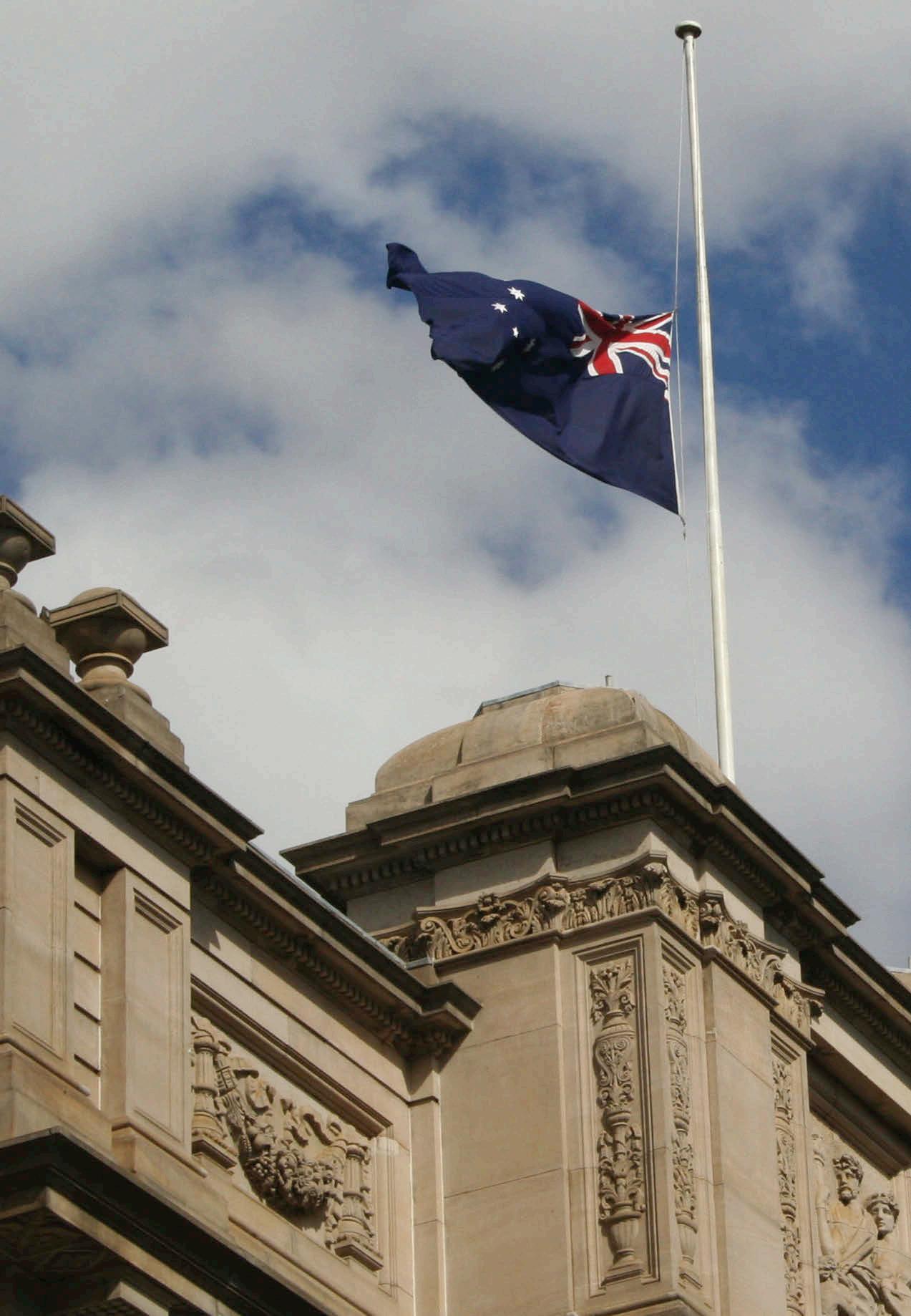
increase the democratic credentials of both its House of Representatives, which will increase to 560 seats in the April general election from the current level of 550, and its 128-seat House which represents the country’s regions.
Indonesian delegates reported that both Houses have ad hoc committees to review estimates and the Auditor General reports to both Houses every six months. But there is no PAC or other mechanisms to follow up the Auditor General’s reports. They recommended stronger budget oversight committees and the establishment of PACs in both Houses. The Auditor General should establish an office in each House and the two Houses should improve their consultation procedures so they work together more efficiently.
The Auditor General’s functions and the office’s relationship with Parliament should be clarified through the provision of appropriate protocols.
Finally, they agreed to follow the Commonwealth lead and raise the stature of each of the proposed PACs to make them the pre-eminent committee in their respective Houses. This would require changes in legislation to give the PACs special status, they said.
The Parliament of Laos has a Finance, Economics and Planning Committee, but that country’s delegation concluded that its collaboration with the State Audit Office should be improved and both the committee and the office need strengthening. Donor agency support to strengthen the State Audit Office was identified as a requirement.
The National Assembly has to allocate sufficient time for Members to review the budget, and the financial knowledge of

all Members, and especially those serving on the Finance, Economics and Planning Committee, should be increased, said the Laos delegates.
Parliamentary review of economic development plans should be intensified, it was concluded.
The delegation from Vietnam agreed that the scrutiny of the budget by its National Assembly could be improved it if followed Australian practices in reviewing government spending plans.
In calling for closer scrutiny of spending to ensure the government spent money on what it said it would, the delegates agreed that oversight should be extended to consider not simply the output of spending, but also the outcomes that resulted from that spending
A parliamentary official from this small Pacific island group, whose government system is a combination of the American congressional and Commonwealth Westminster systems, reported that a United Nations Development Programme parliamentary strengthening project is currently under way to raise the quality of administrative support and provide information and training for MPs.
The official noted that the Parliament is still able to offer only very limited support to committees, so more staff need to be engaged and trained. Additional training is also required for Parliament’s Members so they can play their role fully in the American-style Appropriations Committee which examines budget estimates and in the Westminster-style PAC which reviews spending via reports which come at least once a year from the Auditor General.

Findings from a survey concerning government budget transparency reveal that the majority of the world’s governments significantly fail to provide sufficient information on budget managment. The manager of the Open Budget Initiative of the International Budget Partnership provides a summary of the results and more importantly, how governments can learn from the results and move forward.
Mr Vivek Ramkumar, manager of the Open Budget Initiative, International Budget Partnership, in Washington D.C.
Introduction
Eighty percent of the world’s governments fail to provide information that is adequate to enable their citizens to hold them fully accountable for managing their money. This finding comes from an extensive new survey of government budget transparency in 85 countries issued on 1 February 2009, by the International Budget Partnership (IBP). Compounding this problem of lack of public access to information, the survey finds that Legislatures too are constrained in their ability to oversee budgets effectively.
IBP’s Open Budget Survey 2008 is an independent and comprehensive analysis that evaluates whether central governments give the public access to budget information as well as opportunities to participate in budget formulation, implementation, and evaluation processes. The survey also examines the ability of Legislatures and supreme audit institutions (SAI) to hold their governments accountable.
The survey analyzes the results drawn from a rigorous questionnaire that reflects generally accepted good practices related to public finance management developed by international organizations, such as the International Monetary Fund’s (IMF) Code of Good Practices, the Organization for Economic Cooperation and Development’s (OECD) Best Practices in Budget Transparency, and the International Organization of Supreme Audit Institutions’ Lima Declaration of Guidelines on Auditing Precepts. The survey was managed by IBP and implemented by independent budget experts from civil society organizations and academic institutions in the 85 countries examined.
The IBP survey reports three key findings. The first key finding pertains to budget transparency, which is calculated through the Open Budget Index (OBI). The OBI is a comparative measure of the accessibility and
comprehensiveness of the eight key budget documents that international good practice says all governments should publish. The average score for the OBI 2008 is 39 out of a possible 100 (please see Table 1). This means that, on average, countries surveyed provided minimal information on their central government’s budget and financial activities. Thus, IBP concluded that the state of budget transparency around the world was very poor.
Second, countries that performed poorly in the OBI were typically also countries in which inadequate powers were available to formal oversight institutions (Legislatures and SAIs), thus undermining the ability of these institutions to provide effective budget oversight. The average score for “strength of Legislatures” in the survey was 42 out of a possible 100 while the average score for “strength of SAIs” was 45. Table 1 presents by world region the average scores achieved by the

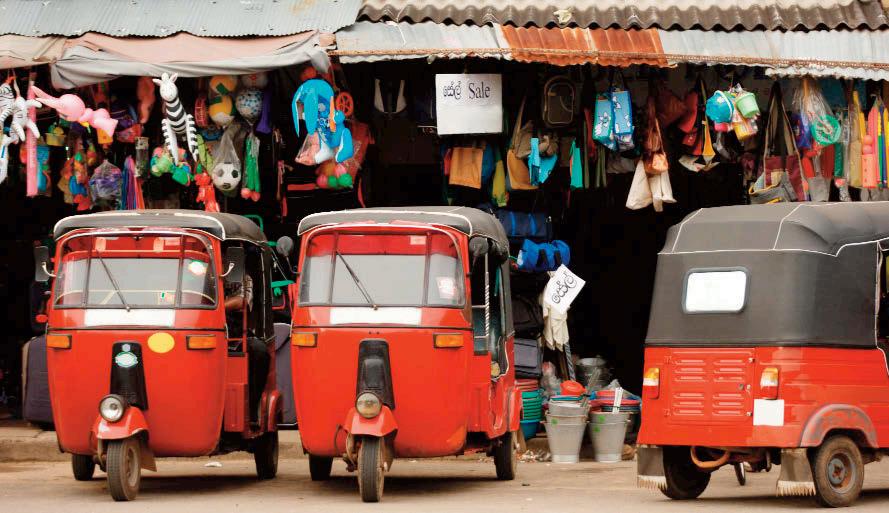
countries examined as part of the IBP assessment.
Finally, in an encouraging finding, the survey identified that it was in fact possible for countries to improve budget transparency quickly and at little cost. The OBI is a biennial survey and comparisons between the OBI results for 2006 and those for 2008 show that some countries have improved their budget transparency over the past two years. In Croatia, Kenya, Nepal, and Sri Lanka, significant improvements in budget transparency practices either were influenced by the activities of civil society groups or have created opportunities for greater civil society interventions. Important improvements in budget transparency were also documented in Bulgaria, Egypt, Georgia, and Papua New Guinea.
Assessing the strength of legislatures
The survey assessed the strength
of Legislatures according to the extent of their legal powers, the timeliness in their access to budget information, and the extent of their engagement with the public. An analysis of the key findings related to Legislatures from the Open Budget Survey 2008 is provided below.
The Survey found that in 29 of the 85 countries surveyed, the Legislature had either limited or no legal power to amend the executive’s budget; Legislatures had unlimited power to amend the budget in only 24 of the surveyed countries.
In 40 countries, the executive did NOT seek input from the


*The OBI 2008 includes 21 members of the Commonwealth, including Bangladesh, Botswana, Cameroon, Fiji, Ghana, India, Kenya, Malawi, Malaysia, Namibia, New Zealand, Nigeria, Pakistan, Papua New Guinea, South Africa, Sri Lanka, Tanzania, Trinidad and Tobago, Uganda, UK, and Zambia.
Legislature when it shifted funds between administrative units, or the amounts of such shifts allowed under law were large enough to undermine public scrutiny and accountability. In another nine countries, the executive sought approval for inter-budget transfers only after the funds had been shifted.
In 27 countries, the Legislature approved supplemental budgets after the funds were expended, or the executive implemented supplemental budgets without ever receiving approval from the Legislature. These practices were particularly problematic in countries with large and frequent supplemental budget requests –such as the Kyrgyz Republic, Malawi, Mexico, Sudan, and Yemen. When legislative oversight of supplemental budgets was inadequate, governments could use supplemental budgets to hide controversial or unpopular spending.
The OECD recommended that the executive provide a detailed budget proposal to the Legislature at least three months prior to the start of the fiscal year. However, less than half of all countries surveyed (32 out of 85) met this deadline. In 17 countries, the
budget proposal was received less than six weeks before the start of the fiscal year, preventing a thorough Legislative review. In seven countries, the Legislature did not receive the budget proposal until after the budget year had already begun.
In 65 countries, the Legislature was not given full information for the budget year on the spending of all secret items relating to, for instance, national security and military intelligence. In addition, in 46 countries the Legislature did not receive any audit reports on the annual accounts of the security sector and other secret programmes.
In one very positive development, the survey found that enacted budgets were widely available in most of the countries surveyed. In 68 countries, the enacted budget was produced and distributed to the public, and in another 13 countries, the enacted budget was produced and made available upon request. The enacted budget not available to the public even after it has been enacted in only four countries: China, Saudi Arabia, Equatorial Guinea and Sudan.
However, the survey found very little consultation between the Legislature and the public. In 66 of the 85 countries surveyed, no
as against the average score of 42 for all 85 countries included in the IBP Survey. Similarly, the average score of SAIs in Commonwealth countries was 43 out of a possible score of 100, which was marginally lower than the average score of 45 for all 85 countries included in the survey.
public hearings were held on the budget of administrative units during which the public could testify.
As illustrated in Table 1, the IBP survey shows that Commonwealth countries had an average score that was higher than the average score of all 85 countries, in terms of the accessibility and comprehensiveness within these countries of the eight key budget documents that international good practice says all governments should publish. In fact, three Commonwealth countries – the United Kingdom, South Africa, and New Zealand – were among the top five countries in the OBI regarding their provision of extensive information on their budgets to the public. Only three Commonwealth countries –Nigeria, Fiji, and Cameroon – were included on the list of 25 countries in the OBI that provided scant or no information on their budgets to the public.
However, Commonwealth countries scored lower than the overall average score of all 85 countries regarding the strength of their formal oversight institutions. The average score of Legislatures in Commonwealth countries was 37 out of a possible score of 100
Taking a closer look at the powers of Legislatures in Commonwealth countries, the survey found that in four of the 21 Commonwealth countries surveyed (Malaysia, Papua New Guinea, South Africa, and Tanzania), the Legislature had very limited or no legal power to amend the executive’s budget; only in two Commonwealth countries –Namibia and Sri Lanka – did Legislatures have unlimited power to amend the budget.
In seven Commonwealth countries, the executive did NOT seek input from the Legislature when it shifted funds between administrative units, or the amounts of such shifts allowed under law were large enough to undermine public scrutiny and accountability. In another five Commonwealth countries, the executive sought approval for interbudget transfers only after the funds had been shifted.
In nine Commonwealth countries, the legislature approved supplemental budgets after the funds were expended, or the executive implemented supplemental budgets without ever receiving approval from the Legislature.
More than half (11 out of the 21) of the Legislatures in Commonwealth countries included in the IBP survey received the Executive’s Budget Proposal less than six weeks prior to the start of the budget year. Legislatures in Bangladesh and Zambia received the Executive’s Budget Proposal after the start of the budget year; in Bangladesh’s case, this situation was caused due to the suspension of the national Parliament.
Further, in 17 of the 21

Commonwealth countries included in the survey, the Legislature was not given full information for the budget year on the spending of all secret items relating to, for instance, national security and military intelligence. In 12 Commonwealth countries, the Legislature did not receive any audit reports on the annual accounts of the security sector and other secret programmes.
All Commonwealth countries included in the survey published their enacted budgets. However, 10 Commonwealth countries did not hold public hearings on the budget of administrative units during which the public could testify.
IBP’s work on budget transparency around the world suggests that Legislatures could overcome some of the constraints they face in effectively overseeing budgets by expanding their engagement with civil society organizations (CSO). Such collaboration could help develop Legislatures’ capacities to provide more effective budget oversight, bring more publicity to budget issues, build pressure on the executive to follow-up on legislative recommendations, and bring new ideas and evidence for legislative oversight activities into the discussion of national budgets. Civil society organizations specializing in budget issues can help to build Legislatures’ capacity in several ways. For example, CSOs in India, Mexico, Croatia, and elsewhere prepare accessible summaries and guides to their countries’ national budgets. CSOs in some countries also provide training and technical assistance to boost Legislatures’ budget literacy and the quality of budget hearings and reports. Finally, civil society can provide valuable independent analyses of the budget, which can enhance the capacity of Legislatures to analyze budgets in many developing countries. For instance, CSO analyzes focusing
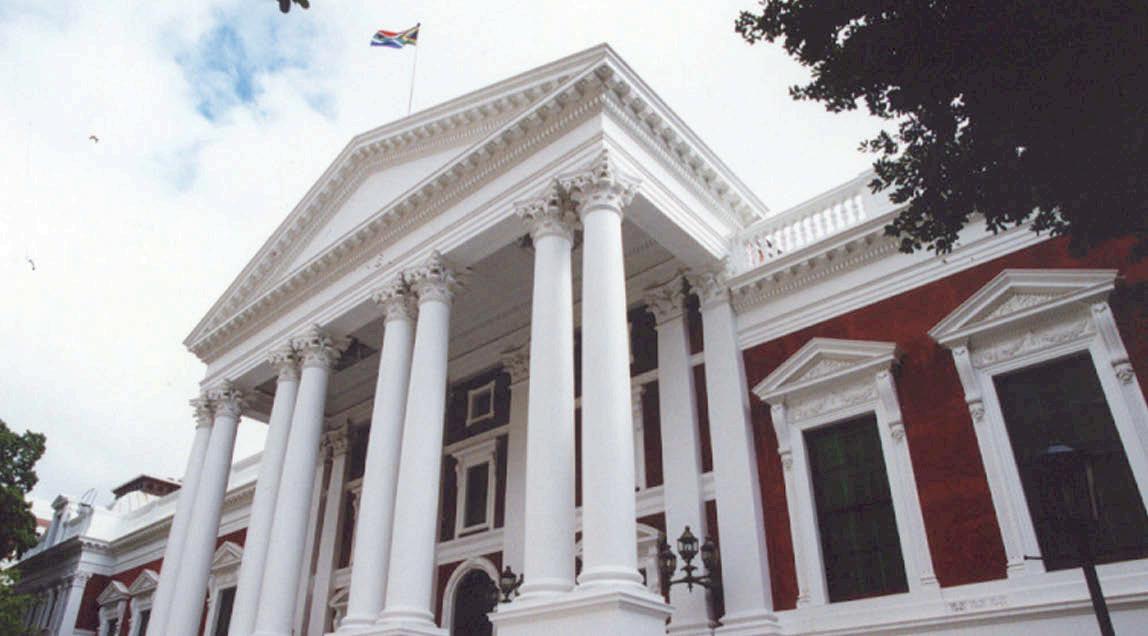
Above: The National Council of Provinces building in South Africa. The country was one of the top five, along with the U.K. and New Zealand, in providing information on their budgets to the public.
on the impact of the budget on poor and marginalized communities often constitute the few accessible, timely, and critical interpretations of the budget.
In turn, Legislatures could assist civil society by consulting with them during the budget process. Legislatures could formally consult with CSOs through public budget hearings during the budget approval and oversight processes; Legislatures – or individual legislators or political parties –could also organize informal meetings to solicit CSO inputs on budgets. Further, Legislatures could share budget information with CSOs and the wider public by publishing budget documents that they receive or by broadcasting budget hearings on radio, television, and the internet. Finally, Legislatures could significantly empower CSOs and the public by enacting freedom of information legislation. Such legislation can enable individuals and organizations to access
information (including budgetrelated information) from the government that they could in turn use to hold governments to account for their use of public resources – thereby complementing the oversight role played by Legislatures.
For more information on the IBP and on the Open Budget Initiative contact Mr Vivek Ramkumar at: ramkumar@cbpp.org or log onto IBP’s websites: www.internationalbudget.org; www.openbudgetindex.org.
1Countries included in the Open Budget Survey 2008 include: Afghanistan, Albania, Algeria, Angola, Argentina, Azerbaijan, Bangladesh, Bolivia, Bosnia and Herzegovina, Botswana, Brazil, Bulgaria, Burkina Faso, Cambodia, Cameroon, Chad, China, Colombia, Costa Rica, Croatia, Czech Republic, Democratic Republic of Congo, Dominican Republic, Ecuador, Egypt, El Salvador, Equatorial Guinea, Fiji, France, Georgia, Germany, Ghana, Guatemala, Honduras, India, Indonesia, Jordan, Kazakhstan, Kenya, Kyrgyz Republic, Lebanon, Liberia, Macedonia, Malawi, Malaysia, Mexico, Mongolia, Morocco, Namibia, Nepal, New Zealand, Nicaragua, Niger, Nigeria, Norway,
Pakistan, Papua New Guinea, Peru, Philippines, Poland, Romania, Russia, Rwanda, São Tomé e Príncipe, Saudi Arabia, Senegal, Serbia, Slovenia, South Africa, South Korea, Sri Lanka, Sudan, Sweden, Tanzania, Thailand, Trinidad and Tobago, Turkey, Uganda, Ukraine, United Kingdom, United States, Venezuela, Vietnam, Yemen, Zambia.
2The IBP collaborates with civil society organizations in developing countries to analyze, monitor, and influence government budget processes, institutions, and outcomes. The aim of the Partnership is to make budget systems more responsive to the needs of poor and low-income people in society and, accordingly, to make these systems more transparent and accountable to the public.
3This article draws on the Open Budget Survey 2008 report published by the International Budget Partnership. The entire report is available in six languages (English, French, Spanish, Russian, Arabic, and Chinese) at http://openbudgetindex.org/index.cfm?fa=fullReport.
4The eight key budget documents include the Pre-Budget Statement, Executive’s Budget Proposal, Citizens Budget, Enacted Budget, In-Year Reports, Mid-Year Review, Year-End Report, and Audit Report. More information on the methodology used to collect data and develop the Open Budget Index scores is available at http://openbudgetindex.org/files/MethodologyEN.pdf

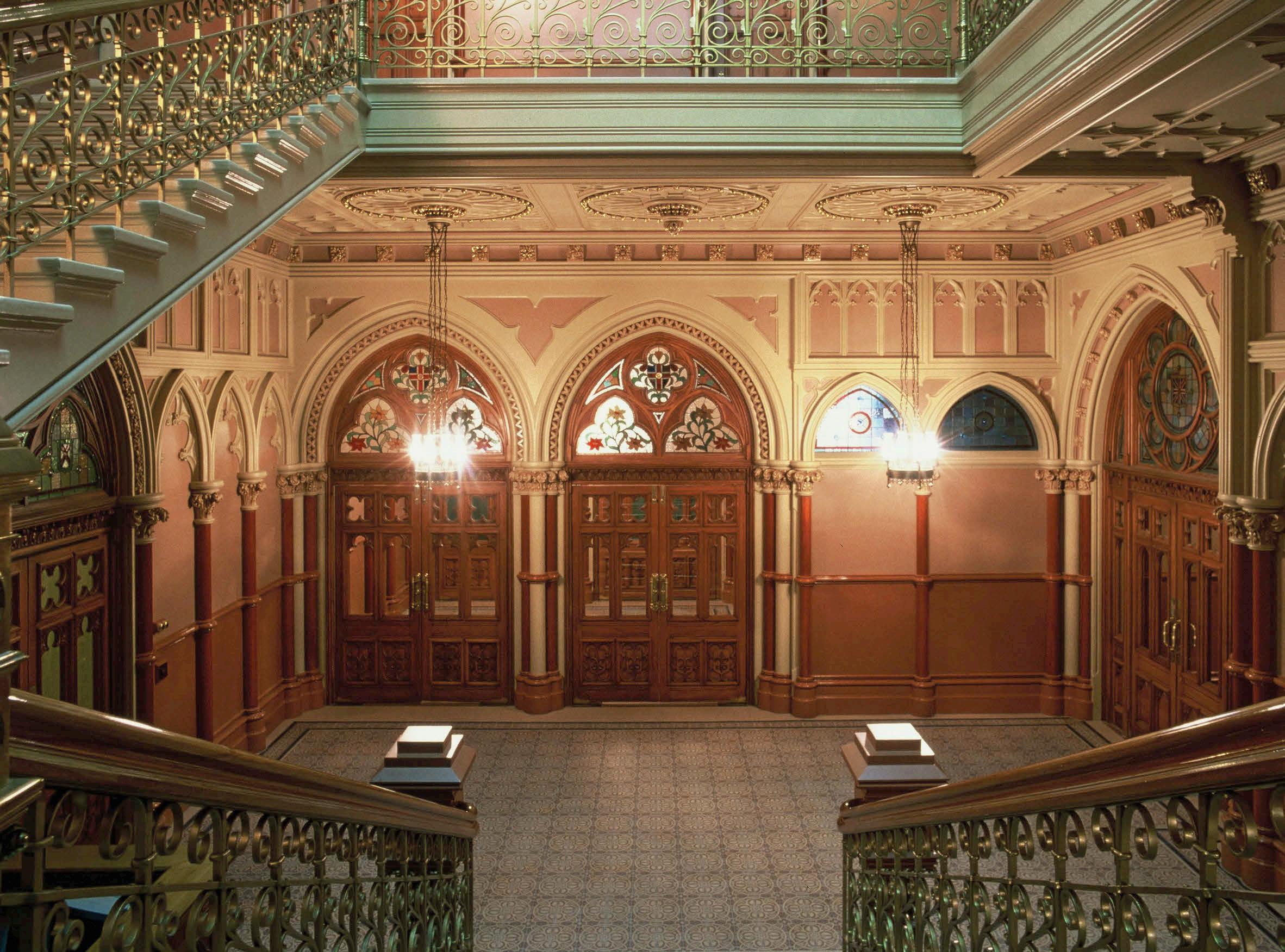
Mr Kidd was a Member of the New Zealand House of Representatives from 1978 to 2002 and its Speaker from 1996 to 1999. He was the President of the Commonwealth Parliamentary Association in 1997-98.
A book about a library might be thought to be, well, boring. Yet this story of the library of the New Zealand Parliament is about dramatic events, tension and struggle. Any thought that this library was a place of calm, staffed by people of retiring dispositions would be wrong.
Change versus resistance to change, the classics versus low fiction, reference versus research, greater versus lesser public access, book collections versus technology, to expand or to contract, to rebuild or no – these are some of the struggles that have been played, and at times fought out over 150 years.
Some changes – like whether the library should be under parliamentary control or part of a National Library, under the control of the Public Service – were the subject of struggle over, literally, decades. And when the change was made it was reversed after a further two decades of struggle and debate.
The New Zealand Parliament had modest beginnings. It opened in Auckland in a hastily erected wooden building in 1854. The library, occupied a “broom cupboard”. A trial move to Wellington in 1862 saw the ship carrying the Premier and government wrecked. The ship
carried a selection of “essential reference works”. All on board were saved but the cases of books and parliamentary papers were last seen floating out on the ebb tide aided by a strong offshore wind.
The influential library committee (comprised of Members of both Houses) secured what must have seemed like a small fortune, namely 500 pounds, to restore the collection. The 1864 catalogue speaks volumes of the interests and, impressively, of the education of MPs. Authors included Gibbon, Burke, Carlyle, Lord Macauley, J S Mill, Alexis de Torqueville, Adam Smith, Ricardo and, unsurprisingly, Erskine May. The classics, in the
original Greek and Latin, were well represented-Heredotus, Homer, Ovid, Plato, Socrates, Tacitus, and Virgil amongst others.
The permanent shift of Parliament to Wellington in 1865 saw the library move into a new and spacious building. It had room to become like other parliamentary libraries – “a gentlemen’s club in which Members could consult official papers and statutes, and enjoy recreational reading, conversation and correspondence in a convivial setting” before open fires, whilst smoking!
The one man staff paid a high price for his salary of 100 pounds a year – he had to also run the Post office, had no time off for lunch, and was required to sleep on the premises to protect the library from fire. The library was open all day Saturday and for two hours on Sunday during sessions, providing a refuge for out of town Members.
Throughout the rest of the 19th century the collections expanded with a focus on a New Zealand collection but serious books were not overlooked. The 395 books acquired in 1875, all through the Library’s agent in London, included 118 in Latin-something this reviewer finds remarkable.
But it was not long before the rot set in. By the 1880’s “a different kind of lesser-educated representative was entering the House and wanted light fiction for recreational reading”. One Member pointed out that “there was a great demand for works of that character, possibly with a view to relieve the mind from the weariness caused by excessive legislative duties”.
The rot had set in other ways. The library suffered from mildew and mould and the depredations of insects and smoke. The collections had so expanded that the library was overcrowded with consequent loss of ready access to the collections.
Efforts towards a new and larger library waxed and waned over a quarter of a century, some
considering the existing building “more than luxurious enough” and should only include books required for immediate reference by MPs which would not be difficult to replace in case of fire. A salutary reminder of that hazard came with a fire in 1895.
A splendid new gothic library, complete with fire walls opened in 1901. It became a place of display, as well as books, after the timber parliamentary buildings next door were destroyed by fire in 1907.
in the 1890’s: there was no precedent; they would subvert discipline; they could not be called for night duty when parliament sat late”. One woman was appointed.
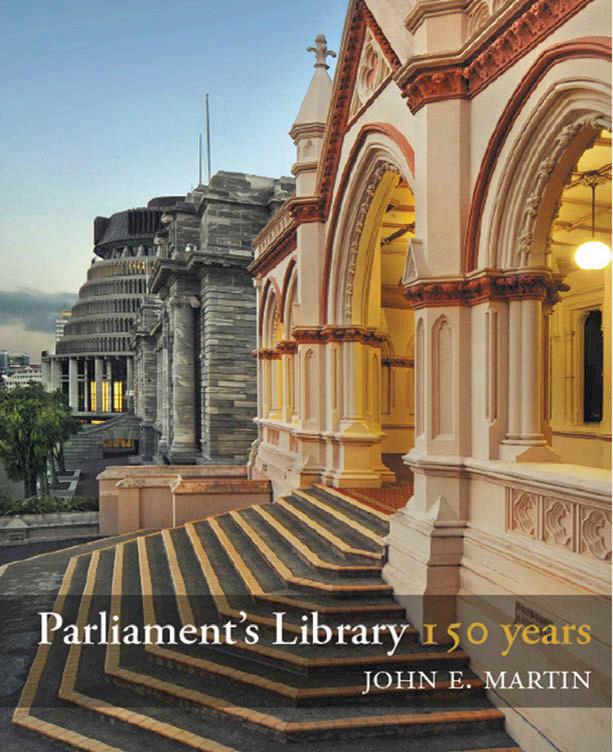
Reference services for Members were developing and extended to approved Members of the public in the recess. The start of moves towards a national library and others towards developing national archives involved the parliamentary library for many years until competing policies eventually saw separate institutions established. In 1965 the parliamentary library became a part of the National Library. The Parliamentary Librarian, while enjoying considerable delegated powers, had lost authority as had the Parliamentary Library Committee. The library had, however, developed steadily despite these distractions and the impact of World War II on its staff and services.
the traditionally dominant group in the House. There was now a strong demand for research capacity in the library. Early efforts with appointments of a statistician and people with skills in economics were a mixed success.
By 1980, the Librarian had seen that the time might come when new technology and knowledgeable staff rather than the size of the collections would “eventually give better service to Members”.
In the early decades of the new library the issue of public access raged. Greater public use was seen by some as appropriate in a democratic society. The value of the collections for public and university researchers was advanced. Generally such access increased, especially in recess months, but not without periodic successful efforts to restrict it.
The subject of women staff came to a head in the 1920’s. The Speaker put forward “all the objections which had delayed the enfranchisement of women
Fearing attack by incendiary bombs, following the entry of Japan into the War in 1941, the library moved some 17 tons of important materials to safe storage in an “unnamed provincial town” – only to have all the shelving collapse in an earthquake.
By 1949, visiting retired clerk of the House of Commons, Sir Gilbert Campion, reported that it provided “one of the best parliamentary services in the world”.
By the 1960’s the library was able to observe that it had taken 62 years to acquire its first 100,000 books, 31 years to acquire the second, and only 14 years to acquire the third.
The Members were seen to be changing: professional groups, lawyers and business people nearly matched farming,
The story of the last three decades has two main features. First, the rapid adoption of information technology and information services for Members, and second, the refurbishment and strengthening of both the library and the main Parliament building to their former glory – and not without the inevitable fire during reconstruction. The buildings are now leading examples of colonial heritage buildings and significant tourist attractions. All of these changes and improvements occurred in the same time frame, and to some extent were triggered by the mid 1980’s reform of the operation of Parliament. Crucially, the Parliamentary Library was returned to parliamentary control.
The Latin and Greek have long gone, replaced by bytes and the internet. But the first MPs would surely approve of their successors’ determination to ensure that the Parliamentary Library meets the needs of the Members of the New Zealand House of Representatives.
This is a well-designed, quality production, even though it is soft covered. The colour plates of the restored library and some of its treasures are superb. It is extensively illustrated with black and white photographs, plans, political cartoons and facsimiles of important documents.

Mr Werunga was the Clerk of the Pan-African Parliament at the time of writing. He was the former Clerk of the East African Legislative Assembly, and has now returned to the Clerk’s Department of the National Assembly of Kenya.
How our Parliament functions; An Introduction to the Law, Practice and Procedure of the Parliament of Ghana, is a most welcome addition to the growing library of publications on the history, work, operations and procedure of the Parliament in Ghana. Our gratitude goes to the two authors who served in sequence as the First and the Second Clerks of the Parliament, respectively, Mr K.B. Ayensu and Mr S.N Darkwa. In pioneering publications on the Parliament, they laid a firm foundation on which their successors should have neither hesitation nor difficulty building on. Indeed, it’s reminiscence of my first encounter with them, which left an indelible feeling and impression of exuding passion for Parliament in the tradition of a priest. For service to Parliament, is a calling and not an employment - it is a life-line association.
The book is the second publication by the two authors. The first was The Evolution of Parliament in Ghana, which I had the privilege to review in The
Parliamentarian. Thus having gone through, analysed and systematically chronicled the evolution of the Parliament in Ghana, it would need no justifying as their suitability to discuss how that Parliament functions. Their one and peculiar advantage, which most of the authors on Parliament – especially the academic lack –and which can be affirmed by even a cursory look at the work of the renowned former Clerk of the House of Commons at Westminister, Sir Erskine Thomas May, is that they were hands-on technocrats in the grafting of the procedure of the post-independent Parliament of Ghana.
The procedure or simply the processes by which an organization executes its mandate, is part and parcel of its evolution and mirrors its cultural ramifications. A write up worth its title on procedure of Parliament, would be lacking in substance of informed anecdotes, if it did not, draw of the practical wealth of the participants in the making of the Parliament. This is particularly
pertinent in case of the Parliament of Ghana, which has a wealth of experience, as it has evolved out of the chequered history of governance, oscillating between civilian and military executives. Suffice to say whereas, both served from the first Parliament in 1957, Mr Darkwa gives an account to the end of the last military executive in 1993.
The book, which the third edition is the subject of this review, has, as Mr Darkwa explains in the preface, remained true to its original purpose of authorship, i.e. “meant to introduce Members to the law, practice and procedure of Parliament”. In keeping within the age-proven wisdom “an efficient and effective Parliament is not a static institution”, it has been revised three times. The third edition “seeks to update, clarify and extend some of the arguments of the first edition”.
The book is aimed at digesting and making the procedure of Parliament user friendly. The key audience to whom this edition is addressed, include:-

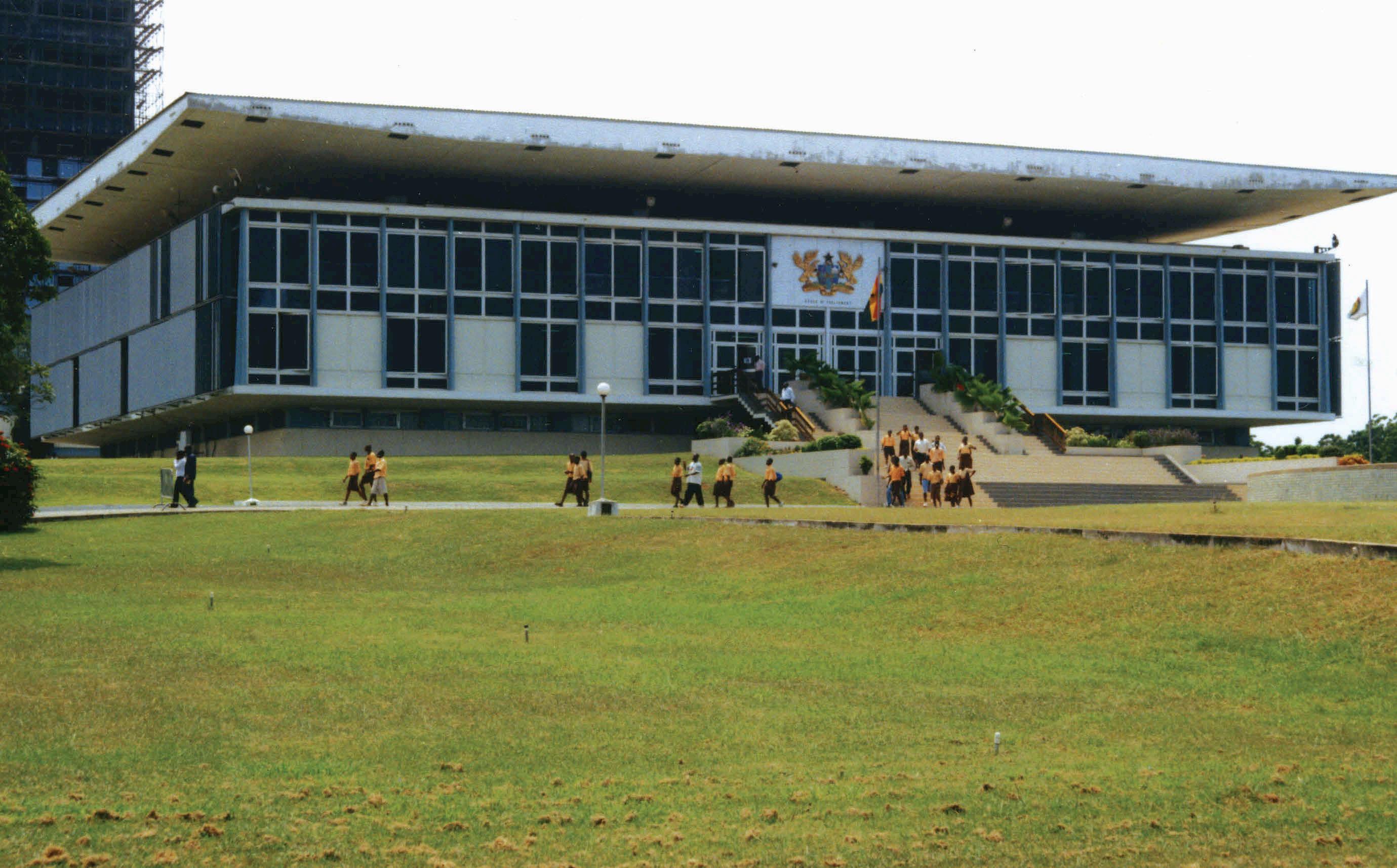
(i)Members of Parliament, who are the legitimate representatives of the people and vested with the right to legislate and deliberate on all legislation and policy issues for governance;
(ii)Officers and officials and officials of Parliament, who along with hon. Members, whom they serve; must come to full grips with the law, practice and procedure of Parliament to ensure the correctness of doing business.
(iii)Presiding Officers, whose role is crucial for the efficient operation of Parliament, as the repository of the powers and authority have onerous responsibility to ensure at all times, absolute impartial interpretation and application of the rules without fear or favour;
(iv)The Clerk of the Parliament
and his staff who are the principal advisers to the Presiding Officers and hon. Members on procedural matters, need to be thoroughly grounded in the rules and procedure. They need:-
(a)thorough and constant training to upgrade their skills and broaden their outlook;
(b)exhibit at all times, qualities of objectivity and impartiality;
(c)must remain at political, nonpartisan so as to uphold and ensure that the integrity of Parliament remain unassailable (at all times, whether in mono or multi-party democracy);
(v)The electorate or the public for whom Parliament exist:-
(a)need to understand how it functions and the avenues that are available for them to be involved in the work of Parliament;
(b)to enjoy their rights, under the constitution which provide for their input in the making of laws;
(c)demystification and the removal of the shroud of mystery around the procedure, is a prerequisite to effective participation of the people;
This edition attempts to simply or explain the technical language used in Parliament for the benefit of legislators and non-legislators. This objective is in turn aided by a clear and concise format, in which the entire book is organized. There are seven distinct chapters, each of which addresses a key subject of the book.
The opening Chapter One records the history, beginning in the period 1850 to 1865, when the Gold Coast was created into a distinct dependency of the British
Crown and allowed a Legislature, ending with the advent of the Fourth Republic in January, 2001. The content of this chapter gives a complete picture of the steady growth of the involvement of the Ghanians in the new structures of government during the colonial era. Though without the kind of power and authority seen to-day, the rudiments of the legislature served their purpose as training ground of the indigenous.
In addition to its limited mandate, its constituency underwent several variations, which at different periods encompassed, “forts” in Togoland, Nigeria and Sierra Leone. Such chequered status was also reflected in its official designation,
which included, “forts and Settlements on the Gold Coast”. The growth of the Legislature gained momentum, on the basis of the reports and recommendations of the various constitutional review committees which lead to the elections of African members. Hitherto, all Members had been nominated by the Governor, who had also been the President of the Legislative Council (Legco) until 1951.
The first large scale elections to the Legco were held in 1951 for 75 Members, pursuant to the 1950 Coussey Constitution. The Convention People’s Party, led by Dr. Kwame Nkrumah won a majority of seats and he was appointed the leader of government business. From, there on, the authors detail further constitutional amendments that ushered in independence on March 06, 1957 and a republican state on July 01, 1960. The rest of the chapter provides an account of the shifting of powers between civilians and the military dictatorships from the first coup d’état of 24 February 1966 to the last one on 31 December 1981 by Ft Lt. Jerry J. Rwalings.
The final piece in the chapter is an account of the steady progress towards the consolidation of democratic governance, and its manifestation in the smooth transfer of power from one democratically elected government to another. Such transfer had eluded Ghana for over 40 years. This steady progress was enhanced when the inconclusive presidential election of 7 December 2000 was resolved in a run-off between the two leading candidates on 28 December. A worthy antidote to this chapter seems to be the recent enhancement of the “steady progress”, when yet another inconclusive presidential election on 7 December 2008 was resolved in a run-off on 28 December where Prof. John Evans Atta Mills, who had lost to Mr John

Agyekum Kufour in the previous run emerged victorious.
The second chapter discusses the breadth and width of the Procedure of Parliament, under the title, Purpose of Procedure. As with the rest of the book, it is well researched and deals with the value of the historical and philosophical importance of an organization evolving to a standardized approach to transaction of mandate and business. In this, the authors allude to the classical writings of our renowned Clerks at Westminster –Mr Erskine May and Mr John Hatsell.
The chapter is buttressed by the celebrated words of the latter, who was Clerk of the House of Commons for 52 years:
“there should (for the purpose of procedure) a rule to go by, in order that there be a uniformity of procedure in the business of the House not subject to the momentary caprice of the Speaker or the captious disputes of any of the Members, that order, decency and regularity, should be preserved in a large numerous and consequentially sometimes tumultuous Assembly....”
Chapter two then discusses with examples of the specific component of procedure: standing orders; session of Parliament; meetings; adjournment; sittings; the oaths taken by Members; election of the Speaker and deputy speakers; presiding in the house; the mace; state opening of Parliament; sword of Parliament and sessional address to Parliament by the President.
The third chapter discusses the components of the business of Parliament, which the authors split into, government business and private Members business. The content of this chapter are worth reading as they provide insight into how business is prepared, introduced and transacted by Parliament.
The fourth chapter discusses, the key components of the Functions of Parliament , which the authors cover under:
(i)Deliberative Function:, comprising – parliamentary control of government; motions and how they are disposed of; decision making;
(ii)Rules of Debate, which govern the conduct of debate and how the Members participate in it;
(iii)Using Procedural Opportunities to Advantage, highlights, the specific processes which when applied during debate and transaction of business, would earn one
“ it would be handy for the public and civil servants charged with servicing government by working with Parliament.”
advantages and help preclude the negative activities often resorted to in the midst of frustration for one to have a way through;
(iv)The Legislative Function of Parliament; explains, the initiations and processes through the House, the role of the key players, assent, commencement and delegated legislation;
(v)The Financial Function; the constitutional appointment of role and mandate between the Executive and Legislature; limitation of powers of Parliament, budget process, exercise of financial control by Parliament, on the role of Committees.
The fifth chapter deals with Powers, Privileges and Immunities
of Parliament. Broadly following within the tradition in the Commonwealth, the authors expand on the key forms which are essential for the proper functioning of Parliament. In the discussion, there is a catch for those who might fall victim to temptation to misuse privilege – since they come with responsibility. Further privileges aren’t meant to transform Members into a privileged class, but are enjoyed in trust of the electorate. Within the wide parameters, the authors discuss, contempt of Parliament, its various types and how complaints or abuse or infringement of privilege are raised and dealt with.
The sixth chapter deal with the Committees of Parliament, which are meant to assist the Parliaments with those aspects of their work which they may not handle as a corporate body. The authors give background to formation, roles, functions, types of committees, powers, then an assessment of performance of the committee system in Ghana over the years. The role of the chairs of the committees, the constraints and the need for capacity building to enhance the skills of the Members for effective and efficient performance, are also dealt with.
The final chapter deals with various matters relevant to work and operation of Parliament. The miscellaneous issues here range from, the official record minutes of committees and plenary, the Hansard and how the verbatim reports are processed into the Hansard.
On the whole, the book is commended for use at workshops and seminars to induct and orient, especially, freshly elected Members and Staff of Parliament. Equally, it would be handy for the public and civil servants charged with servicing government by working with Parliament.
BRITISH COLUMBIA: Public Safety and Solicitor General Statutes Amendment Act 2009 Page 187
INDIA: The National Investigation Agency Bill 2008 Page 189
SRI LANKA: Nation Building Tax (NBT) Page 191
AUSTRALIA: Aviation Legislation Amendment (2008 Measures No. 2) 2009 Act Page 196
NEW ZEALAND: Electorial Amendment Bill Page 197
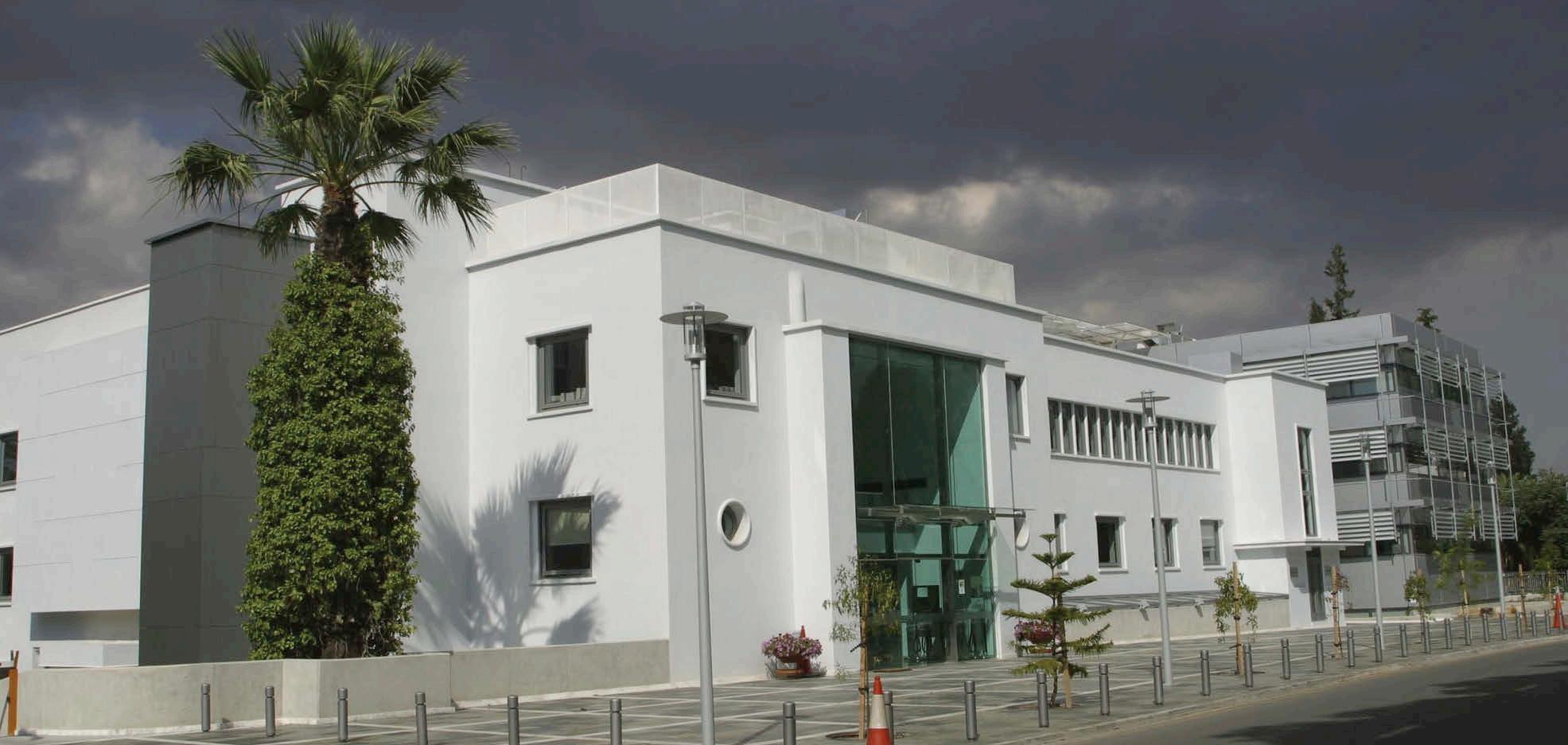

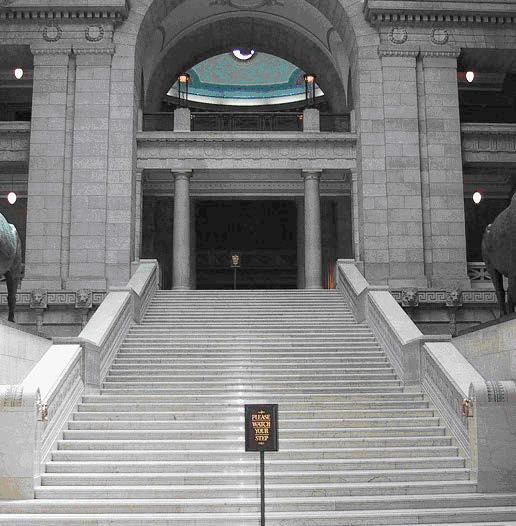
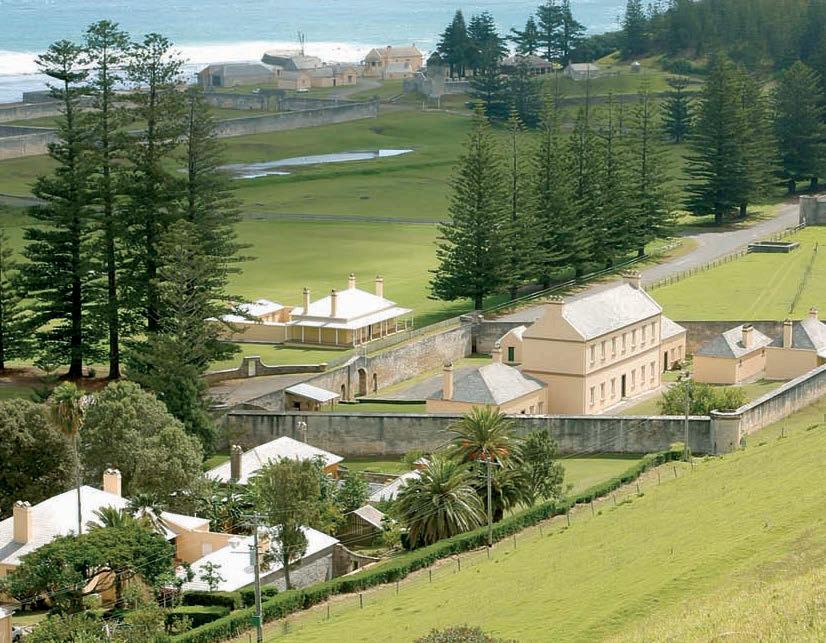
Page 186
CONSERVATIVES HOLD ONTO POWER IN CANADA Page 187 CALL TO SCRAP INTEGRITY AMENDMENT BILL IN TRINIDAD AND TOBAGO Page 193
FISCAL STIMULUS PACKAGE FOCUS OF UNITED KINGDOM 2009 BUDGET Page 206
History was made on 10 March for the Parliament of Papua New Guinea when Prime Minister Rt Hon. Grand Chief Sir Michael Somare (National Alliance) moved a motion for a woman to be appointed as a nominated Member of Parliament.
The government used the provision under section 102 of the constitution which provides that Parliament “may from time to time, by a two-thirds absolute majority vote, appoint a person (other than a Member) to be a nominated Member of Parliament”.
Sir Michael said that “today is a historic day for Papua New Guinea. We have the opportunity to take action to reduce the difficulties facing women who wish to involve themselves in the affairs of the nation. Women are an inseparable part of the community and our family life. They are at the heart of community and family life. For too long women have been absent from this part of life in P.N.G., political life of nationbuilding”.
“The Members of Parliament will [make] progress with obligations at the international law to reduce discrimination against women, obligations which were created when PNG ratified the Convention on the Elimination of all forms of Discrimination Against Women. The government has endorsed
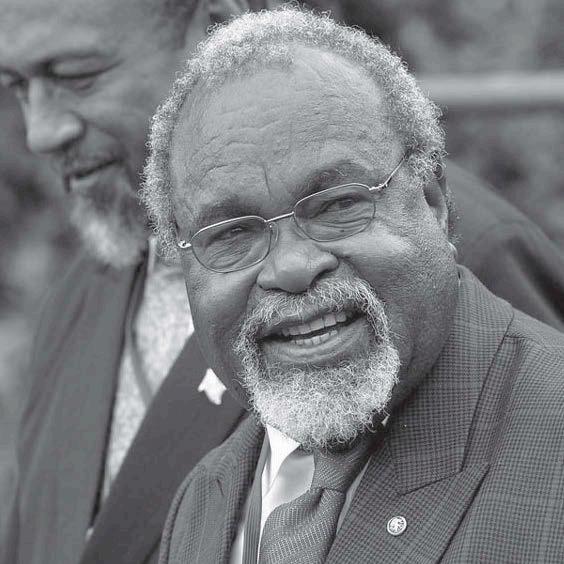
a process of selection, which has been conducted in a manner which is both transparent and fair,” he said.
The Prime Minister further stated that although Parliament had long possessed the power to appoint, it had not done so in 34 years of independence.
In response to the Prime Minister, the Leader of
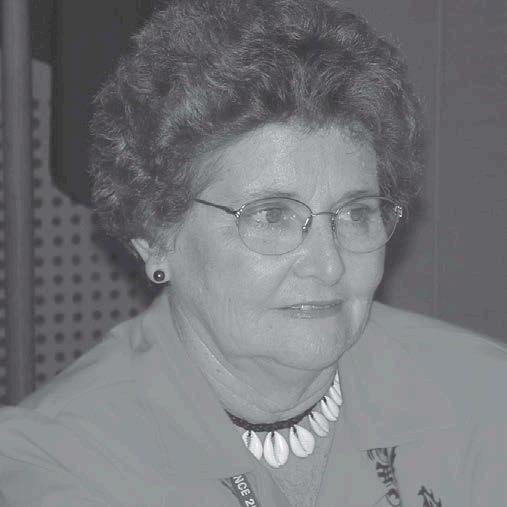
Opposition, Sir Mekere Morauta (Papua New Guinea Party) said the opposition
recognized the good work that the Minister for Community Development, Dame Carol Kidu (Melanesian Alliance), had done in setting the process. However, there were serious concerns about the process and the concept of nominations. The opposition questioned its legal basis and stated that it would only support the process to increase the representation of women in Parliament that met principles and criteria which the opposition would put forward.
The motion was not passed by Parliament due to the government not having the required numbers.
Women’s entry into national politics is still limited in Papua New Guinea, although women’s participation is more noticeable in other areas such as community and grassroots organizations. Over the years since independence, three women have been elected to Parliament, despite the fact that the number of female candidates has increased with each elections since 1972.
Dame Kidu has played a significant role in promoting the participation of women in parliamentary and other political institutions. She is currently the Minister for Community Development.
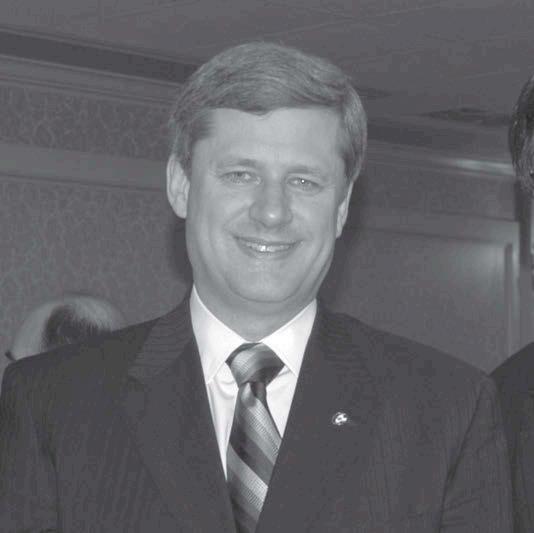
The result of Canada’s 14 October 2008 general election was the retention in power of the Conservative government led by Prime Minister Rt Hon. Stephen Harper. Although held to a minority government, the Conservatives increased the number of seats they hold in the House of Commons, mostly at the expense of the Liberals.
Nevertheless, the focus of the First Session of the 40th Parliament, and the outset of the Second Session, was whether or not the government would be defeated and replaced by a Liberal-New Democratic Party coalition government, supported by the Bloc Québécois. The government escaped a non-confidence vote in the First Session by prematurely proroguing Parliament.
In the Second Session, the government secured its survival by agreeing to a
Liberal amendment to the Budget committing it to the provision of periodic reports to Parliament on how the economic rescue package developed to respond to the financial crisis is being spent.
On February 6, 2009, the Budget Implement ation Act 200 9 was introduced in the House of Commons, sponsored by the Minister of Finance, Hon. Jim Flaherty The bill was presented to the

House as “a very important bill in this Parliament. It contains many measures such as those related to infrastructure, tax changes, training, and all sorts of things that will help stimulate the economy”.
This omnibus bill amends many statutes and enacts new ones, including the Expenditure Restraint Act which would, among other
things, limit the sessional allowances of Members of Parliament and salaries of public servants in the years to come. But the primary goal of this legislative proposal was to implement an economic stimulus and rescue package. For example, employment insurance benefits are extended for five weeks, from 45 to 50. Bill C-
Public Safety and Solicitor General Statutes Amendment Act, 2009
The Amending Bill, passed unanimously on 30 March 2009, makes changes to two provincial statutes that fall under the jurisdiction of the Ministry of Public Safety and Solicitor General. The purpose of the amendments to the Motor Vehicle Act is to prevent government-endorsed photo identification from being fraudulently obtained or used. They include a new penalty for committing fraud using B.C.’s new high-security driver’s licence and identification card. The same penalty will also apply to the enhanced driver’s licence and enhanced identification card to enable travel to the United States by land or water without a passport. New fines ranging from $400 to $20,000 can come on top of an existing maximum six months’ imprisonment.
Another section has also been added to the Motor Vehicle Act authorizing the Insurance Corporation of British Columbia to retain or seize fraudulent documents used to apply for regular or enhanced drivers’ licences or ID cards. The new anti-fraud measures came into effect on 1 May 2009.
Further housekeeping amendments ensure definitions and references in the Motor Vehicle Act and the Insurance (Vehicle) Act are consistent with recent changes to the Criminal Code, including new provisions for impaired driving and street racing offences. With these changes, a driver convicted under the code for impaired driving will be subject to provincial sanctions currently in place under the Motor Vehicle Act, such as participation in the responsible driver program and the ignition interlock system.
10 received Royal Assent on 12 March 12 2009.
In spite of the bill’s passage, more than two weeks after this date, a government website erroneously indicated that the Senate had yet to enact Bill C-10. Moreover, the website stated that “Senators must do their part and ensure quick passage of this vital legislation”. The matter was raised as a question of privilege in the Senate, and referred to its Standing Committee on Rules, Procedures and the Rights of Parliament. On 13 May 2009, the Committee reported that this partisan rhetoric was “offensive to the authority, dignity and privileges of the Senate”.
The Harper government has had Senate and democratic reforms at the core of its agenda since its initial election in January 2006. While it was successful in the Thirty-Ninth Parliament in making numerous amendments to the Canada Elections Act, especially with respect to political financing and voters’ identification, it has not been able to accomplish some of its more far-reaching reform proposals, such as limiting Senators’ tenure to eight years and establishing an elected Senate.
Senators are currently appointed by the Governor General, on the advice of the Prime Minister. There is currently no tenure limit applying to Canadian Senators, but there is a mandatory retirement age: anyone who is at least 30 years old may be appointed to the Senate and serve until
he or she reaches the age of 75.
In the Speech from the Throne of 19 November 2008, at the beginning of the current Parliament, the Harper government put Senate and democratic reforms on the agenda once more. It indicated that bills on this subject will be introduced. One such bill, Bill C-30, the Senate Ethics Act, was introduced in the House of Commons on 7 May 2009. On that day, the sponsoring minister, who is the Hon. Steven Fletcher, Minister of State (Democratic Reform), stated that “our government remains committed to reforming the Senate to reflect the ideals of a 21st century democracy. The bill introduced today would bring the Senate ethics code under the jurisdiction of the Conflict of Interest and Ethics Commissioner, eliminating the separate ethics officer for the Senate and ensuring that ethical standards are constantly applied to all Parliamentarians”.
Since 2004, the Senate and the House of Commons have had distinct conflict of interest codes in place. Each code is administered by its own ethics officer. While the Conflict of Interest Code for Senators is administered by the Senate Ethics Officer, the Conflict of Interest Code for Members of the House of Commons is administered by the Conflict of Interest and Ethics Commissioner, who also has the responsibility to administer the Conflict of Interest Act which applies to public office holders, such as ministers, parliamentary secretaries, senior public servants. The purpose of Bill C-30 is to terminate the position of the Senate Ethics
Officer and to transfer his duties and functions to the Conflict of Interest and Ethics Commissioner. The Conservative government had previously tried, unsuccessfully, to abolish the position of the Senate Ethics Officer in 2006.
Before Parliament is An Act to amend the Canada

Elections Act (accountability with respect to political loans), which had been introduced in the previous Parliament but not passed prior to dissolution.
Additional bills dealing with provincial proportional representation in the House of Commons and limiting Senators’ tenure to eight years are expected to be introduced shortly.
Parliamentary budget officer
The Parliamentary Budget Officer was one of a number of initiatives est ablished in 200 6 under the Federal Accountability Act, the wellknown first legislative proposal of the Harper government, which was developed in response to the sponsorship scandal. The mandate of the Parliamentary Budget Officer is to provide analysis to Parliament and its committees about the state of the nation’s finances, including government
budgets and estimates, and trends in the national economy.
While the Federal Accountability Act established the position of the Parliamentary Budget Officer, it did not create a freestanding office, but established the position within the Library of Parliament. The latter institution’s mandate also includes providing analysis and information to Parliament, including both parliamentary committees and parliamentarians, but on a wider variety of subjects. Mr Kevin Page has interpreted his mandate as being independent of the library of Parliament since his appointment as the Parliamentary Budget Officer. Questions have arisen as to whether or not the Parliamentary Budget Officer should release studies without first seeking the approval of the Parliamentary librarian, and on other aspects of his work. Disputes have also arisen between Mr Page and Mr Bill Young, the Parliamentary Librarian, in respect of the Parliamentary Budget Officer’s budget. The Standing Joint Committee on the Library of Parliament is currently studying these issues.
Since 2006, public safety and law and order have been key planks of the Conservative politic al programme. Many bills have been studied and enacted in the previous Parliament on these subjects and several others are currently under consideration: Bill C-14, An Act to amend the Criminal Code (organized crime and protection of justice system
participants), Bill C-19, An Act to amend the Criminal Code (investigative hearing and recognizance with conditions), Bill C-26, An Act to amend the Criminal Code (auto theft and trafficking in property obtained by crime), Bill S-4, An Act to amend the Criminal Code (identity theft and related misconduct), and Bill S-5, the (Long-Gun Registry Repeal Act).
Bill C-19 is aimed at reenacting provisions of the Anti-terrorism Act which had been adopted in the aftermath of September 11, but which expired under a sunset clause in February 2007. It also provides for investigative hearings involving individuals who may have information about a terrorism offence, and contains provisions dealing with recognizance with conditions and preventive arrest to avert a potential terrorist attack, all of which are provisions that are substantially similar to original provisions in the Antiterrorism Act that came into force in 2001. The new legislation also contains a five-year sunset clause
Bill S-5 represents the third attempt of the Government since 2006 to put an end to the registration of un-restricted firearms. Two similar bills died on the Order Paper during the previous Parliament. A Conservative Member of the House of Commons, Mr Garry Breitkreuz, has also introduced a similar legislative proposal. Canada has had laws restricting the possession and use of firearms almost since Confederation. All handguns have required registration since 1934, and a centralized registry for restricted firearms was established under the
control of the Royal Canadian Mounted Police (RCMP) in 1951. The classification system of prohibited weapons, restricted weapons (including all handguns) and non-restricted long guns was introduced in 1968. In 1995, Parliament passed the Firearms Act, most of which came into force in December 1998. The legislation was and remains very controversial, particularly the requirement to hold both a licence and registration certificate in
respect of all firearms.
The Oliphant Commission In March, the Commission of Inquiry into Cert ain Allegations Respecting Business and Financial Dealings Between Karlheinz Schreiber and the Rt Hon. Brian Mulroney, former Prime Minister of Canada from 1984 to 1993, began hearing testimony. Justice Jeffrey J. Oliphant, a Justice of the Court of Queen's Bench of the province of
The National Investigation Agency Bill, 2008
This measure was brought forward by the government to constitute an investigation agency at the national level to investigate and prosecute offences affecting the sovereignty, security and integrity of India, security of State, friendly relations with foreign State and Offences under Acts enacted to implement international treaties, agreements, conventions and resolutions of the United Nations, its agencies and other international organizations. Several features include:
• Provision has been made for constitution of the National Investigation Agency for investigation and prosecution of offences specified in the Schedule laid down under the Act. The officers of the Agency have been vested with all the powers, privileges and liabilities which the police have in connection with the investigation of any offence. Superintendence of the National Investigation Agency has been vested with the central government.
• Detailed provisions have been made with regard to the manner of investigation of the offences listed in Schedule to the Act. The agency has also been empowered to investigate other offences connected with the scheduled offence.
Both measures were welcomed during the discussion on the two bills in both Houses of Parliament. There was a rare unanimity among Members cutting across their party lines, in asserting
Manitoba, presides over the proceedings of the Commission. Commissioner Oliphant’s mandate is to look at the appropriateness of certain sums of money given to Mr Mulroney by Mr Schreiber shortly before and after the former resigned as Prime Minister of Canada. Commissioner Oliphant’s findings and recommendations are to be reported before the end of 2009.
their firm resolves for putting up a united fight against terrorism. There were suggestions by some Members that the National Investigation Agency Bill be referred to the Standing Committee for scrutiny before the same is deliberated in Parliament. Some misgivings were expressed with regard to certain provisions in the proposed laws which had the effect of putting the onus of proving innocence upon the accused. Members while supporting the bills were of the view that terrorism is a much more dreaded crime than the crime related to general law and order. They, therefore, felt that a special law was required to tackle terrorism in India. There was also a word of caution, some Members emphasized that mere enacting of a stringent laws alone would not be suffice, the same should also enforced effectively.
The Minister in charge of the bills while assuaging fears of some Members vis-à-vis shifting of onus of proof, stated that in a criminal cases onus of proving an offence is always on the prosecution and the same would be adhered in there laws too. He also observed that the laws sought to balances the requirements of the investigating and prosecuting agencies and it also balances the requirements of human rights. While commending the bills for passing he concluded by observing that the nation could not afford to lower its guard and eternal vigilance is the price of liberty.
The bills were passed by Lok Sabha on 17 December 2008 and by Rajya Sabha on 18 December, 2008. The bills as passed by both the Houses of Parliament were assented to by the President of India on 31 December 2008.
"The war against the LTTE is not a war against Tamil people; our aim was to liberate our Tamil people from the clutches of the LTTE; our heroic forces have sacrificed their lives to protect Tamil civilians; the victory we have gained by defeating LTTE is the victory of this nation and the victory of all people living in this country. Protecting the Tamil speaking people of this country is my responsibility. That is my duty. All the people of this country should live in safety without fear and suspicion. All should live with equal rights. That is my aim. Let us all get together and build up this nation", said H.E. President and Commander-in- Chief, Mahinda Rajapaksa delivering the opening address at the Parliamentary fourth session .
"As you already know our Motherland has been completely freed from the clutches of separatist terrorism. From now on it is only the laws enacted by this sovereign Parliament that will be that will be in force in every inch of Sri Lanka", the President declared.
An excerpt of the address of H.E. President Mahinda Rajapaksa
“This will give you great cause for satisfaction. The 2 25 Members of this House have cause for great satisfaction about this. All people and all political parties that contributed to my victory in the Presidential Election in

2005 can share this satisfaction.
It is necessary on this historic occasion to inquire as to how it was possible to obtain the proud victory we have achieved today by defeating the world's most ruthless terrorist organization.
We are a country with a long history where we saw the reign of 182 kings who ruled with pride and honour for more than 2,500 years.
As much as Mother Lanka fought against invaders such as Datiya, Pitiya, Palayamara, Siva and Elara in the past, we have the experience of having fought the Portuguese, Dutch and British who established empires in the world. As much as the great kings such as Mayadunne, Rajasingha I and Vimaladharmasuriya, it is necessary to also recall the great heroes such as Keppettipola and Puran Appu who fought with such valor against imperialism.
In looking at this unconquerable history there is a common factor we can see. It is the inability of any external enemy to subdue this country as long as those to whom this is the motherland stand united. That is the truth. Another common factor we can see is the inability to establish any savage or dictatorial regime on this land. In the history of my motherland, the people have always risen undefeated against any arbitrary, savage or brutal rule.
I must express my gratitude here to those heroes of our past who have given us the strength and courage to fight against savage invaders and enemies not only today, but in the future too.
Even the powerful countries of the world showed fear before the terrorists; some countries were shaken and went on their knees in the face of terror.
Our people began to face a defeatist mentality, whether we could face up to a problem that many countries in the world the world did not seem able to face. Terrorism is like a venomous serpent that draws the most dangerous qualities from politics, economics, science and all subjects in the world. What terrorism draws from politics is racism. It builds an economy through drug trafficking. What it draws from
technology is the manufacture of explosives.
The defeat in Sri Lanka of the world's most ruthless terrorist
organization in the world that is made up of all these deadly qualities can be considered second to none.
Therefore, we did not attempt to respond to the terrorists in their own language. When the terrorists
The Bill on Nation Building Tax (NBT) was passed unopposed by the Parliament of Sri Lanka on 7 January 2009, giving legal effect to the proposal for the imposition of NBT as announced in the 2009 Budget. The First reading of the Bill was on 8 December 2008, followed by the second and Third Reading on 2 and 7 January 2009 respectively. The Speaker certified the bill on 11 March 2009.
Minister of Finance and State Revenue, Hon. Ranjith Siyambalapitiya, MP, introducing the NBT Bill in Parliament said the Bill was introduced in order to rebuild infrastructure facilities which were severely damaged due to terrorist acts during the past 30 years in the North and East.
Living standards as well as basic facilities and human rights were also denied as a result of the war. This Bill was introduced at the request of the public and the government formulated the Budget accommodating their proposals. The government will reconstruct and renovate hospitals, bridges, highways, roads, and schools through this Bill. It will also help to improve infrastructure facilities in the North and Eastern parts of the country. However, small scale manufacturers, all types of exports, and imports of the essential items have been exempted from this tax, the Minister added.
Hon. Ravi Karunanayake, MP (UNP) contributing to the Second reading debate stated that the NBT was a similar form. He said “I bet that it starts with one per cent today and probably tomorrow it will go up to two per cent and then you have another tax which is running parallel with VAT which is claimable and non-claimable. So, it is a very nebulous exercise by this unprofessional type of leadership. Owing to the fact that costs are going up the escalator and the revenues up the stairs, the gap between the two is being felt by the people. Now, various forms of words or nomenclature are being used in order to satisfy the egos of the government in imposing this tax.
The "Nation Building Tax" seems to be a very superlative type of a word which only goes to show how advanced this Nation Building Tax is. We only know that on one side you break the nation and on the other you tax the people through this Nation Building Tax. So, these are things that are being used for convenience in order to get revenue rather than anything else. The Nation Building Tax is being imposed even on house mortgagers and as a result, prices go up. Then, when tea and rubber industries have crashed, the Nation Building Tax is being imposed on them. So, there is no proper management of exercise as to when this tax has to be imposed”.
The NBT was brought into effect on 1 April 2009. Main features of this tax, in terms of the law and procedure, include:
NBT is payable by every person (individual, company, body of persons) or partnership who or which:
were calling for war, we responded with a humanitarian operation. Our troops went to this operation
(a) Imports any article (other than any article in the personal baggage) into Sri Lanka; or
(b) Carries on the business of manufacture of any article.
NBT is payable on the “liable turnover” for every quarter (period of three months) commencing respectively on the first day of January, April, July or October of any calendar year.
The TIN (number) already registered for importation of goods can be used for NBT purposes as well. (A new registration for NBT is not required.)
For manufacturers and service providers, registration is required if the turnover for a quarter exceeds Rs.650,000. However, every taxpayer already registered for VAT will be registered for NBT as well on the basis of available information, and notified to such taxpayers the NBT number.
NBT is payable for every quarter on a self assessment basis in three monthly installments. An installment for a quarter is an amount not less than one third of the NBT payable for that quarter.
Any manufacturer who is registered for NBT is entitled to deduct from the NBT payable for any quarter, the NBT paid in relation to any article imported by such manufacturer or any article purchased from another manufacturer registered for NBT being any article which is used exclusively in the business of manufacture.
Return of NBT for every quarter should be furnished on or before 20th day of the month immediately succeeding the end of that quarter.
Turnover from any excepted article or excepted service is not liable to NBT. Such excepted articles and excepted services include:
Articles
(i) Any article exported by the manufacture of such article;
(ii) Any article not being plant, machinery or fixtures imported by any person exclusively for use in, or for, the manufacture of any article for export;
(iii) any article sold to any person to whom this Act applies being an exporter, if the Commissioner General is satisfied, on the production of a letter of credit opened in any bank in Sri Lanka in respect of the export of that article or other documentary evidence that such article has in fact been exported from Sri Lanka;
Services
(i) The business of Banking or Finance;
(ii) Supply of electricity;
(iii) Medical services;
(iv) Supply of water;
(v) Transport of goods or passengers;
(vi) Leasing of movable properties; and
(vii) Service of a construction contractor, not being a sub-contractor.
carrying a gun in one hand, the Human Rights Charter in the other, hostages on their shoulders, and the love of their children in their hearts.
That was an incomparable chapter in the history of war. It is truly a miracle to go to a battlefield where civilians have bee turned into human bombs, and carry on the battle without shedding the blood of civilians. It is a great skill to face up to the heaviest monsoon rains and major floods and not retreat a single step. It needs the ability of a Vishvakarma (an uphill task) to defeat battle tanks and artillery with small arms.
There was no school of war in the word that could face up to the savage military strategies used by the terrorists of the LTTE. The world had not seen military sciences able to face a combination of land mines, claymore mines, small suicide vessels, light aircraft that can evade radar, and suicide killer jackets.
Through 30 years the security forces of Sri Lanka were compelled to find ways and means to face up to all this. By the end of its successful march the security forces of Sri Lanka had become the most disciplined and capable military in the world.
They were able to defeat the most ruthless terrorists in the world due to their strict discipline, commitment, and creative use of military strategy.
According to the tradition established by kings such as Dutugemunu, we should respect even the enemy that has surrendered or been killed in combat. That is a quality of greatness that is found not only with the government, but also with the people of this country.
This is a country with a people who when thousands
lost their homes and were made destitute from the Tsunami, took care of all those people, not letting even a single victim go hungry for even one meal. We who are schooled in the Buddhist tradition of loving kindness and compassion, and nurtured in the Hindu, Islam and Christian traditions, do not need to be taught how we should treat and care for the innocent and helpless. We shall resettle all those who have been freed from being hostages in very welcome surroundings. People who have not had electricity and not seen modern roads will be resettled in environments complete with all facilities. I ask you to compare the living conditions of the people in the East three years ago with what it is today.
Although we engaged in a massive struggle to defeat terrorism, we did not make that a cause to delay development and welfare services. We launched development projects throughout the country that had been ignored for 30 years. We created new employment. They were not confined to the South. While carrying out massive humanitarian operations in the North, the Vanni and the East, we were also engaged in development work in those areas.
At no time since independence have the development work now being done in the East and Mannar been undertaken. A Presidential Task Force has already been appointed to expedite development work in the Vanni and the North. As much as we defeated deadly terrorism and freed the innocent people held by terror, we are committed to carry out accelerated
development in the areas that were under terrorism, within the next three years. While bringing the lives of the people within a democratic political structure, the government will also provide education and health facilities, and launch the Northern Spring by providing the infrastructure such as irrigation, highways, electricity and such facilities necessary for the agriculture, fisheries and tourism sectors. We have now removed terrorism, the biggest obstacle that the private sector in our country faced in participating in the Northern Spring. Therefore, the environment has now been created to carry out their investments and engage in business. I especially call on our business community to make a commitment to invest in the North and East of our country. What we need is not advice; but the cooperation to bring a better life to these people. I believe that the world community will also extend that cooperation to us. I call on all who have left our motherland due to terrorism, especially the Tamil people, to return. I made this request when addressing an Independence commemoration event on an earlier occasion, too. Similarly, I call on our engineers, doctors, accountants and other professions living in various countries abroad, to return to your motherland and contribute to its development. It is necessary that we give to these people the freedoms that are the right of people in all others parts of our country. Similarly, it is necessary that the political solutions they need should be brought to closer to them faster than any country or government in the
world would bring. However, it cannot be an imported solution. We do not have the time to be experimenting with the solutions suggested by other countries. Therefore, it is necessary that we find a solution that is our very own, of our own nation. It should be a solution acceptable to all sections of the people. We expect cooperation for it from the international community and not obstruction. Should the international community doubt our capability to find such a solution, when we have successfully overcome a challenge that that the world was unable to achieve? No. We can achieve this. I believe that the solution that we who respect valued the qualities of Mettha (loving kindness) Karuna (Compassion) Muditha (Rejoicing in others' joy) and Upeksha (Equanimity) based on the philosophy of Buddhism can present, can bring both relief and an example to the world. Similarly, I seek the support of all political parties for that solution.
Honourable Speaker, I do not believe that we have a right to be engaged in politics if we are unable to accept the responsibilities thrust upon us by time. I have accepted that responsibility. We have been victorious in facing one challenge.
Time is now raising a new challenge before us. It is the challenge of building the motherland. From now all, everyone should change in keeping with the needs of facing up to that challenge, too. Just as I accepted the earlier challenge, I accept this new challenge too. In doing so, I look forward very much to the fullest cooperation of all Members of Parliament and Ministers, and of my dear people in our motherland.”

Independent Sen. Prof RameshDeosaran says the Bill to amend the Integrity in Public Life Act should be scrapped. He also said during the debate on the legislation, which was piloted by Attorney General Hon. Bridgid Annisette-George, “I suggest you scrap this Bill, overhaul the entire Integrity Act, make your (public) consultations and come back with most of the requirements that are necessary”.
He said if the government continued with its piecemeal approach to integrity legislation it would be wasting Parliament’s time and it won’t successfully deal with the issue of corruption. He said the exclusion of judges from filing annual declarations to the Integrity Commission, was “an embarrassment to the constitution (and) a shame in the face of the Integrity Act”. Senator Deosaran said the current situation was “also an embarrassment to the judges”.
He said although those officials have not been filing declarations for a long time, the constitution provided for them to file, and that a court ruling made judges exempt from filing declarations. “And if these judges and magistrates are not filing declarations, isn’t that an embarrassment to the legislative process and a breach of integrity in some way?”
He said “a fuller Bill” should be brought to deal with that breach. “What we are doing is subverting the rule of law in full public glare,” he added. Dealing with the issue of making false complaints against officials to the Integrity Commission, Senator Deosaran said those found guilty should be made to face the consequences.
He was very critical of a new provision in the Bill, which he said would effectively discourage people from making complaints about alleged corruption to the Integrity Commission. Senator Deosaran also suggested that both the judicial and legal Services Commission (JLSC) and the Integrity Commission should be made to appear before Joint Select Committees of Parliament on camera. “What we need is not more laws, but a greater level of transparency and scrutiny,” he stressed.
He also spoke about the concept of “smartman politics”, which he said “is killing us, even in Parliament.” He then referred to a current concern
Wanganui District Council (Prohibition of Gang Insignia) Bill Mr Chester Borrows (National— Whanganui), speaking on 6 May to the third reading of his own Member’s Bill, the Wanganui District Council (Prohibition of Gang Insignia) Bill, which he described as “a result of collaboration between the Wanganui District Council, Wanganui police, and the community”, explained that “the initiative was taken to draft a local Bill to ban gang patches from certain public locations around Wanganui. The Local Government Act 2002 provides a mechanism for communities to make laws to deal with local issues. It does not prevent the inauguration of criminal law on a local basis”. Mr Borrows added that the Bill “is not an attempt to outlaw gangs, stop gang offending, or bring about world peace; it is a narrowly focused instrument to stop intimidation by virtue of the display of gang insignia. That is it. … The display and wearing of the gang patch creates ... intimidation, and it is precisely this activity that the Bill addresses. … The removal of gang patches takes the heat out of the presence of rival gangs, and that is why gang patches are
prohibited in …premises and places around the country”.
However, Hon. Clayton Cosgrove (Labour), MP, speaking against the Bill, said “the first test…of any legislation is whether it will work. We can take their patches off, and I am for that, but then what are they replaced with? They are replaced with a bandana, or a bracelet, or a belt, or whatever. The Bill does not achieve its goal. I think we will find that gangs, if they wish, will move. They will move to the other side of the street. They will wear their patches over on the other side of Wanganui that is not quarantined off. The other issue is why a local authority should be held responsible when nationwide solutions developed by governments should actually be responsible for dealing with these issues”.
Mr Keith Locke (Green), calling the legislation “oppressive”, objected that “we are passing down… law implementation and even, in a sense, law-making function to those of the level of councillors. That is not good enough.
The Bill passed by a margin of three, 62 to 59, with the ACT Party splitting its vote.
about establishing a Joint Select Committee to address a certain matter. “It will take integrity to have the Lower House send up the names for the JSC as required in the motion recently passed here in the Senate on election campaign financing,” he said.
Extended enquiry
ActingPresident Danny Montano ordered an extensive investigation into the controversial Cleaver Heights housing project in Arima with less than two days to go before the scheduled conclusion of the Uff Commission of Enquiry into the construction sector. This was revealed by the Chairman of the Commission, Professor John Uff, during the hearing at the Winsure Building, Richmond Street, Port-of-Spain. The project was included under enlarged terms of reference of the commission and it was the second extension prompted by the investigation.
Consequently, Mr Uff said the Commission of Enquiry would be extended by one week, as there were various events that he needed to deal with.
“First, the commissioners have been notified that it is intended to issue revised Terms of Reference and that those will be issued by the acting President during the course of the day,” he added.
Mr Uff also said the commission would be advised of the specific new terms of reference during the days yesterday.
“The Cleaver Heights Terms of Reference are to be extended to cover matters such as time and cost overruns and defects, which have been touched on but not fully explored so far.” As a direct result of the new development, “there will inevitably be a further hearing,” he added.
Mr Uff confirmed that the hearing—which will be the fourth for the commission— would most likely continue for one week and commence no later than September.
Housing Minister stands her ground Planning, Housing and the Environment Minister Dr Emily Dick-Forde stood firm over her concerns regarding the controversial multi-milliondollar Cleaver Heights Project in Arima. She confirmed this while being cross-examined by Mr Earnest Koylass, attorney for former Housing Development Corporation acting managing director Ms Margaret Chow, during the hearing of the Uff Commission of Enquiry in the country’s capital, Port-of-Spain.
Dr Dick-Forde said she had serious concerns about the project, which was being constructed by NH International (Caribbean) Ltd, because there was no formal contract. She also said the contract price for the project was unclear as some documents said it was $133 million and another said it was $143 million. Responding to repeated claims that the “error” was a typographical one, Dr Dick-Forde said she wanted to know why after this was noted the error continued. She said her attempts to secure information from HDC officials in this matter were met with a lack of co-operation.
The Congress of the People (COP) had recently invited the UNC and PNM, as well as other groups, to discuss constitutional reform recently— but neither group turned up, confirmed COP’s Mr Prakash Ramadhar. Mr Ramadhar was commenting on the UNC
leader, Hon. Basdeo Panday, MP, call for COP to join constitutional reform talks with the UNC. Mr Ramadhar said, “the COP had embarked on a programme of grand consensus since the views on constitutional reform are far bigger than party politics”.
He said that “as a result we hosted two successful meetings where we invited all

the stakeholders including religious bodies, unions, political parties including PNM and UNC, but neither attended”. Mr Ramadhar added that the PNM general secretary Mr Martin Joseph did reply saying he was unable to attend at the time, but there was no word from the UNC, despite the COP’s invitation being sent to the UNC by registered mail, fax and followed up with phone calls.
“So we have embarked on meeting the call for the people’s business to be dealt with and we’ll continue our meetings and UNC and PNM will also be invited once again. We are going around the country on the issue of such reforms, so that the public will have a choice and does not have to be pigeon-holed into accepting the Manning draft constitution,” he said.
President Richards
President George Maxwell Richards broke his silence
on the resignation of five Members of the Integrity Commission which he had sworn in on 1 May. President Richards took full blame for what happened, and assured the country that the selection of a new commission was under way, with Acting President Danny Montano consulting with him in Europe.
Hours after the President swore in the commission, retired Appeal Court judge, Mr Zainool Hosein resigned. This was followed days later by deputy chairman, Mr Jeffrey McFarlane, executive director of the National Insurance Board (NIB), Chairman Father Henry Charles, Ms Lylla Rose Bada and Ms Gladys Gafoor. In the statement, President Richards said: “A deliberate process is not free from the possibility of error and to err is human. The responsibility is, and remains mine, and I accept this, unreservedly.”
“The first responsibility to a concerned nation is that of accepting responsibility for such error as has led to this unfortunate imbroglio. As your President, I deeply regret the anxiety experienced by the people of Trinidad and Tobago and the embarrassment occasioned by the appointees.” In his statement, Richards pointed out that his office did not have the investigatory facilities and resources, but if it did, the question was, “who will guard the guards?”
He made it quite clear that there was no constitutional crisis, nor any vacuum in the office of the President as was being made out.
There have been numerous calls for Richards to resign, including one from the President of the Law Association, Mr Martin Daly, SC.
On 12 May 2009 the Treasurer, Hon. Wayne Swan, MP, delivered the second Budget of the Rudd Labor Government. The Budget was framed against the impact of the global financial crisis. Government revenue has fallen significantly and new outlays to combat the onset of the recession have taken the Budget from a projected surplus of $22 billion to a projected deficit of $57 billion. The net debt over four years is expected to reach $188 billion. The Budget is not expected to be in surplus until 2015-2016. The Budget paper noted that the fiscal deficit at 4.5 per cent of GDP was significantly lower than the 8.8 per cent of GDP collective budget deficit for advanced economies as a whole, and less than half that of the major advanced economies at 10.4 per cent.
The Government’s fiscal strategy is first to provide fiscal stimulus in the short term by allowing the budget to adjust automatically to the economy’s movements, and through further discretionary action. Second, is to bring the budget back to surplus and pay down debt in the medium term.
Real GDP is expected to fall by ½ of a per cent during 200910 increasing to 2¼ per cent in 2010-11 and reaching 4½ per cent growth for the forward years of 2011-12 and 2012-13. Many market economists consider the projected growth
rate of 4½ to be on the high side.
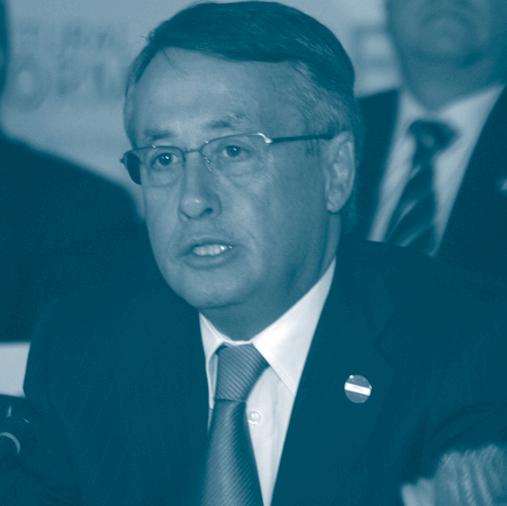
Hon. Wayne Swan
The unemployment rate which fell to 4.3 per cent in 2007 is expected to reach 8½ per cent in 2010-11, declining to 6½ per cent in 2012-13. The consumer price index is projected to fall to 1½ per cent in 2010-11 before rising slightly to 2½ per cent in 2012 -13.
These Treasury forecasts are slightly at odds with output forecasts released by the Reserve Bank of Australia. In particular, the RBA forecasts GDP to rise to 3¾ per cent by December 2011. Similarly, the RBA forecasts the CPI to continue falling to 1½ per cent by December 2011.
Mr Swan in discussing the economic outlook noted that Australia faces the challenge ahead “in a much stronger position than other countries”. In particular, Mr Swan commented that Australia’s financial system and public
finances are among the strongest in the developed world.
Some of the key features of the Budget include: nation building infrastructure, support for education, research and hospitals, increased retirement pensions, and means testing for the private health insurance rebate.
Mr Swan advised that the economic stimulus in the Budget raises the level of GDP by ¾ of a per cent in 2009-10 just “when the economy is expected to be at its weakest”. Mr Swan noted that the stimulus measures announced by the government will see 35 000 building sites “spring up, around the nation”. He commented that “in the absence of our efforts, the contraction would be four times bigger”. Mr Swan stated that “our actions are expected to support up to 210,000 jobs, and reduce the peak in the unemployment rate by 1½ percentage points below the double digit peak it would reach if we listened to those who said we should do nothing”.
The “centrepiece” of the Budget is the $22 billion the government is investing in infrastructure projects. Mr Swan advised that these projects would support highways, rail, ports, broadband and universities around the country. Ms Swan stated “through these investments, we can tell our
kids and grandkids with pride that to respond to the great economic challenges of our time we created the infrastructure, generated the ideas, shaped the minds, marshalled the energy, and developed the skills that led to a new era of prosperity and sustainability for Australia”.
In relation to the level of age pension there has been growing criticism that the rates were too low and pensioners were struggling. Mr Swan reported that from September 2009, the government will provide single pensioners on the full rate with an additional $32.49 per week, bringing the value of their pension to a legislated benchmark of 27.7 per cent of Male Total Average Weekly Earnings. Couple pensioners will receive an extra $10.14 per week combined, through a new fortnightly Pension Supplement. However, to support the longer term sustainability of the pension system, the Treasurer announced that the qualifying age for the Age Pension will be progressively increased to 67 years by 2023 “reflecting increases in life expectancy, and consistent with international trends”.
In relation to the private health insurance rebate, Mr Swan advised that spending on the rebate is growing unsustainably, and disproportionately favours those on higher incomes.
Therefore, Mr Swan announced that “from 1 July 2010, the private health insurance rebate will be reduced for higher income earners”. Mr Swan advised that “Treasury modelling shows that, under these reforms, private health insurance coverage will remain at more than 99 per cent of its current levels”.
Mr Swan concluded that “not since the Great Depression has Australia confronted a more difficult set of global economic conditions”.
However, he also noted “that the economy will recover strongly and that Australia will be as well placed as any nation to grasp the opportunities presented by that recovery”.
The Leader of the Opposition, Hon. Malcolm Turnbull, MP, in his address in reply focused on the government’s reckless spending and spiralling debt. Mr Turnbull commented that while the government blames the state of the budget on the impact of the global financial
crisis, Australians should not forget that “in November 2007
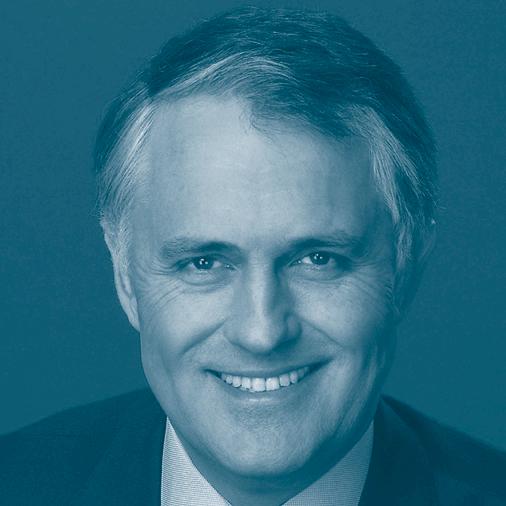
Aviation Legislation Amendment (2008 Measures No. 2) 2009 Act
The Minister for Infrastructure, Transport, Regional Development and Local Government, Hon. Anthony Albanese, MP, commented “aviation security and safety are the highest priorities for aviation for the government”.
The Act amends the Aviation Transport Security Act 2004 to broaden information collection powers to enable the secretary to require aviation industry participants to provide aviation security information. Mr Albanese noted that the “kinds of information that may be requested by the secretary would be prescribed under the regulations and would include, for example, information relating to the screening of passengers and baggage and information relating to the management and control of airport areas and zones”.
The Act also amends the Civil Aviation Act 1988 to allow for copying and disclosure of aircraft Cockpit Voice Recorder information for maintenance purposes. The Minister advised that “presently, strict confidentiality requirements are imposed by the act to seek to ensure the continued availability of cockpit voice recorder information in the future for serious accident and incident investigations by the Australian Transport Safety Bureau (ATSB)”. Mr Albanese noted, however, that “the current confidentiality provisions could be, and often are, interpreted as preventing copying and disclosure for legitimate maintenance and testing purposes”.
In addition, the Act amends the Transport Safety
Investigation Act 2003 to amend penalty and offence provisions relating to failure to report prescribed aviation, marine and rail accidents and incidents and provide that extra information is required in relation to those accidents and incidents. Mr Albanese explained that “the ability of the executive director to require additional information is necessary and desirable in order to be able to ensure that the information in the ATSB’s accident and incident database is adequate and correct with respect to each transport safety matter”.
The Shadow Minister for Trade, Transport, Regional Development and Local Government, Hon. Warren Truss, MP, noted the opposition’s support for the legislation. Mr Truss commented that the opposition during its period in government had introduced a range of measures to improve aviation security. He advised that since September 2001 at least $1.2 billion has been spent to enhance aviation security. Mr Truss commented that “we expanded the screening of passengers and checked baggage to ensure consistent security screening treatment of all passengers and baggage carried on jet aircraft departing from anywhere in Australia”. In particular, Mr Truss noted that the coalition government introduced the Air Security Officer Program which placed “sky marshals” on selected domestic and international flights. He called on the government to commit to the continuation of this program. Mr Truss concluded that “the legislation will build on the strong foundations left by the previous government and enables us to maintain a solid aviation security apparatus in an efficient and effective way”.
this Prime Minister was dealt the best hand of economic cards of any Prime Minister in our history”. He noted that when Labor took over government, “all of Labor’s debt had been repaid, there was $45 billion of cash in the bank, the budget was strongly in surplus, unemployment was at historic lows and growth was strong”.
Mr Turnbull commented that “as the global downturn worsened late last year, as it became more and more obvious that tax revenues were declining, the Rudd government embarked on the most profligate spending spree in our nation’s history”. In particular, he noted that “the idea that a government faced with a worsening financial climate would borrow $26 billion and give it away defies common sense”.
The opposition’s plan for recovery involves four key principles. First, is the protection and creation of jobs for all Australians; second, government should not incur one dollar more in debt than absolutely necessary; third, spending should be targeted at creating jobs and building economic infrastructure; and fourth, private enterprise and small business must be supported because they are the drivers of economic growth”.
In concluding his speech, Mr Turnbull advised that the opposition did not want to see the budget any bigger but there was one proposed government saving which it would oppose relating to the private health insurance rebate. Mr Turnbull noted that the government’s decision to mean test the private health insurance rebate “will be a direct hit on the family budget of at least 1.7 million Australians and indirectly will result in higher premiums for all Australians, including those on very low incomes”.
The government’s proposal to means test the private health insurance rebate is expected to save $1.9 million of budget savings over four years. Mr Turnbull noted that if the measure was defeated there were other areas where the government could make savings to offset the loss. For example, Mr Turnbull commented that ‘the government could comfortably afford to retain the current private health insurance rebate, without any cost to the published budget outcome, by increasing the amount of excise collected on tobacco by 12½ per cent, or about 3c extra per cigarette”. Mr Turnbull stated “so there is a tough choice for a weak Prime Minister: either raise $1.9 billion by making health more expensive and putting more pressure on the public hospital system or raise it by adding about 3c more to the price of a cigarette and taking pressure off the public health system”.
Speaking in the second reading of the Electoral Amendment Bill on 17 February, the Minister of Justice Hon. Simon Power, MP, expressed the hope that “this is just a first step in a return to cross-party consensus on electoral law. This Bill repeals the Electoral Finance Act 2007 and amends the Electoral Act 1993. The Bill establishes an interim electoral finance regime, pending the completion of a comprehensive review of electoral finance law.
The interim regime will return to the election expenses provisions that governed previous elections, retain the provisions in the Electoral Finance Act 2007 that relates to donations to political parties and candidates, and reinstate the general rules that governed the publication of campaign advertising as previously known. The government recognizes that there are some shortcomings in the old rules. The purpose of the interim regime is to return immediately to a law that is certain and credible. Those shortcomings will be addressed during the development of an enduring electoral finance regime”.
usual 6-monthly period for the select committee process to consider the Bill”.
Hon. David Parker (Labour) thanked the Minister “for his offers of cooperation around the process of developing the successor to the electoral finance legislation. The test of the government’s future conduct of this legislation will be whether it sees fit to compromise on these issues. The government has criticised the prior legislation—the Electoral Finance Act—as being only the vision of those parties that supported it, and it has said that there was an unwillingness on the part of the then government to compromise in respect of some of the views of the National Party. Maybe the Labour Party made a mistake in respect of the prior legislation—although I have to say that at times we tried to engage with the National Party and found it less than willing to engage on some of the issues. Notwithstanding that…I think the test as to whether National is willing to engage will be whether it is willing to compromise on some of these issues, just as we are being asked to compromise on some of them”.
Mr Charles Chauvel (Labour) also welcomed the Minister’s outline of the process to be adopted in respect of devising new electoral law, stressing that “it is essential that the issues document should include a continued commitment to a high level of transparency over donations. Surely it must canvass the issue of additional funding for political parties”.
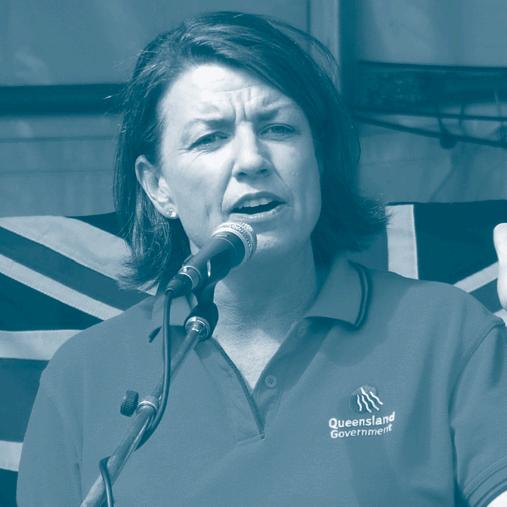
The Queensland State Election was held on 21 March. The State Labor Government led by Hon. Anna Bligh, MP, was returned with a reduced majority. There was a swing of 4.2 per cent against the government reducing its majority to 51 down from 58 in
In the third reading, Mr Power described the first step in the process as likely to be “an issues document that will give the public and political parties an opportunity to have a say on a raft of issues. Subsequent to that, there is likely to be a further opportunity for wider discussion…well prior to a Bill being drafted and put into the House for the
the previous parliament. The Liberal/National Party (LNP) increased its share of the vote by 3.2 per cent taking its number of seats to 34 up from 25 in the previous parliament. In addition, there were four independent Members.
Ms Bligh led Labor to a historic fifth term. She is the female Premier of any state to be elected as Premier. The LNP leader Mr Lawrence Springborg, MP, who has been defeated at three elections has conceded the leadership of his party. Mr John-Paul Langbroek, MP, was elected leader of the
The Bill passed by 112 votes to nine, with only the Green Party voting against.
Liberal National Party from 3 April 2009.
The funeral of Ms Anne Lynch, AM, former Deputy Clerk of the Senate was held on 29 April 2009. She was highly regarded and had an illustrious career in the Department of the Senate where in 1973 she began as a research officer to the then Clerk, J.R. Odgers. She rose to Clerk Assistant in 1984 and Deputy Clerk in 1988, a position she held until her retirement in 2005.
She served as the secretary
of the Senate Privileges Committee and was recognized for faithfully attending presiding officers’ and clerks’ conferences in the most remote Pacific locations “to show solidarity and support”.
Ms Lynch was appointed a Member of the Order of Australia for services to support parliamentary processes, particularly in the Senate and its committees.
The current Deputy Clerk of the Senate, Ms Rosemary Laing noted how she valued her support, encouragement and friendship.
On 12 February 2009, the President of India, Smt. Pratibha Devisingh Patil addressed the Members of both Houses of Parliament assembled together in the Central Hall of Parliament House. This was the 15th and the last session of the 14th Lok Sabha.
In her Address, the President said that the spirit of ordinary people rising together as one was able to overcome the challenge from terrorist violence, and the calibrated and prudent economic reforms pursued by the government helped the country to weather the extreme adversities of the global economic meltdown. In both these disruptive events, its strength was the abiding commitment to the principles of democracy. Detailing the government’s achievements in its close to five years in office, she was happy that the government acted on nearly all the commitments it had made to the people through the National Common Minimum Programme (NCMP). The commitment to inclusive development was translated into laws, policies and programmes. A right to work for people in rural areas was guaranteed through the National Rural Employment Guarantee Act (NREGA) passed in 2005. The NREGA is the first such intervention anywhere in the world where a country has guaranteed
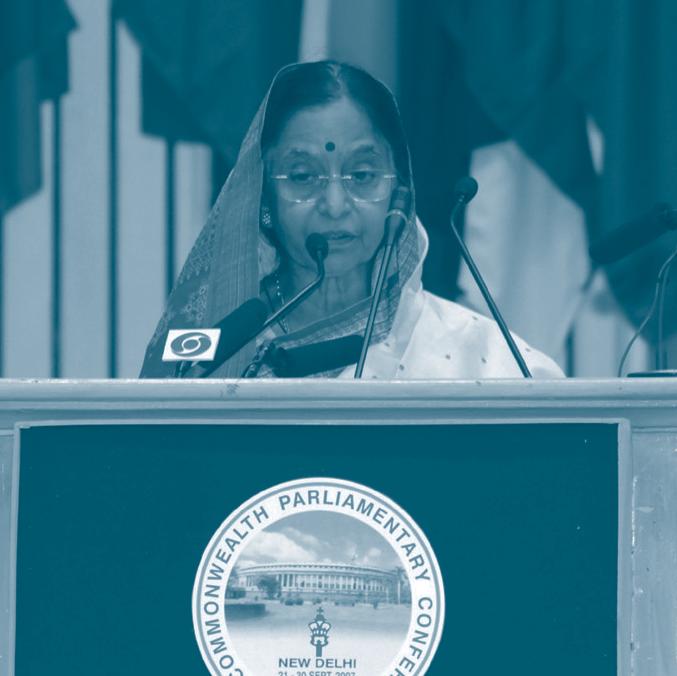
employment for a specified number of days to any category of citizens. This programme is an Indian innovation combining the twin objectives of providing for consumption expenditure of the poor as well as improving rural productivity and income. Through the Unorganised Workers' Social Security Act, 2008, the government sought to facilitate provision of social security to the unorganized workers. Through the Right to Information Act, 2005, the government was made accountable to citizens for governance. The historical injustice to tribes and traditional forest dwellers was corrected to confer land rights through the Scheduled Tribes and Traditional Forest Dwellers (Recognition of Forest Rights) Act passed in 2007. The 2007 Central Educational Institutions (Reservation in Admission) Act ensured reservation to students of Other Backward Classes (OBCs) in educational institutions. A Bill on right to
education, a Bill for amending the Land Acquisition Act along with a new Bill for rehabilitation and resettlement and a Constitution Amendment Bill providing for reservation for Women in Lok Sabha and State Legislatures were introduced in Parliament. The social security framework was further strengthened through introduction of various insurance schemes for the benefit of the common man. During its tenure, the government promised a new deal to rural India through the revival of agriculture on which nearly 60 per cent of population is dependent. The government was able to revive the agricultural economy from the trap of low investment, low productivity and rural indebtedness by taking several measures. The credit to agriculture was increased by three-fold and short-term agricultural credit was made affordable. The government waived around Rs. 65,000 crore (650 billion) of outstanding credit owed by 37 million farmers who had fallen on bad times. Remunerative prices were given to farmers through unprecedented enhancements in the minimum support price of wheat and paddy. Investment in agriculture increased from 10.2 to 12.5 per cent of the GDP. The diversification of agriculture was promoted through the National Horticulture Mission and a
National Rainfed Area Authority was set up to provide technical assistance to increase production from dry lands. A National Food Security Mission was put in place to increase production and crop productivity. A special package was also extended to farmers growing plantation crops. The prices of fertilizers were not increased even once in the last five years despite the sharp increase in prices of crude oil and chemicals. As a result of concerted efforts, production increased in almost all crops between 2004 and 2008. The government tried to ensure that the interests of the farmers were fully protected in the protracted negotiations in the World Trade Organisation.
The gaps in rural infrastructure that denied opportunities for farm and rural non-farm employment were systematically addressed through Bharat Nirman, a timebound plan for rural infrastructure. Under the plan, road connectivity, electricity supply, telecommunication facility, water supply, etc. were provided to the villages. Bharat Nirman served to integrate rural India more centrally into the growth process and unlock its potential.
The lack of adequate health care had been a major cause for rural poverty. The government, therefore, initiated a National Rural Health Mission to provide health care facilities in rural areas. The Mission greatly helped in reducing maternal and infant mortality. The campaign for total sanitation in rural areas saw unprecedented success increasing its coverage to 60 per cent. The government also considered setting up a National Urban Health Mission to focus on the health needs of the urban poor commencing with selected major cities.
The Fair Work legislation implements a workplace relations system which provides for the establishment of National Employment Standards, modern awards and national wage orders, establishment of the statutory offices of Fair Work Australia to administer the system and the Fair Work Ombudsman to promote compliance.
The Deputy Prime Minister and Minister for Employment and Workplace Relations, Hon. Julia Gillard, MP, advised that the legislation delivers “a fair and comprehensive safety net of minimum employment conditions that cannot be stripped away; a system that has at its heart bargaining in good faith at the enterprise level, as this is essential to maximise workplace cooperation, improve productivity and create rising national prosperity; protections from unfair dismissal for all employees; protection and hope for a better future for the low paid; a balance between work and family life; and the right to be represented in the workplace”.
Ms Gillard commented that the legislation “guarantees a safety net of fair, relevant and enforceable minimum terms and conditions for Australian workers that can no longer be undermined by the making of statutory individual employment agreements of any kind, given such agreements can never be part of a fair workplace relations system”.
The National Employment Standards comprise the 10 legislated employment conditions governing essential conditions such as weekly hours of work, leave, public holidays, notice and redundancy pay and the right to request flexible working arrangements.
The legislation provides that Fair Work Australia must not approve any agreement that includes terms that are inconsistent with unfair dismissal, right of entry, National Employment Standards and the general protection provisions of the Act. In particular, Fair Work Australia must be satisfied that: “the employer and a valid majority of the employees to whom the agreement will apply genuinely agree to the agreement; and each employee would be better off overall under the agreement in comparison to the relevant modern award”.
In relation to the “right of entry”, Ms Gillard advised that the legislation “provides a fair and proper balance between the rights of employees and their union to meet in the workplace and the rights of employers to run their businesses without interference”.
The main features of the legislation will commence on 1 July 2009. The National Employment Standards and modern awards will commence on 1 January 2010.
The Shadow Minister for Employment and Workplace Relations, Mr Michael Keenan, MP, drew attention to the record of employment left by the Howard Government. At the time of the 2007 federal election, unemployment was 4.3 per cent. Mr Keenan noted that “we are now seeing the new government beginning to reverse all of these gains, and the opposition is deeply concerned that the Fair Work Bill will accelerate this slide”. Mr Keenan commented that “no information has been made public on the likely effects of these changes on employment, industrial action, productivity or any other economic indicator”. During debate on the bill, Mr Keenan brought attention to certain features in the legislation that were inconsistent with the government’s election promises. He noted that compulsory arbitration was ruled out in Australian Labor Party policy commitments. He commented that “we now see a proposed system in which bargaining and negotiation have the potential to end with an adversarial and arbitrated outcome”. Mr Keenan also noted that the right of entry provisions in the bill went beyond the provisions in the previous workplace relations legislation.
The bill was examined by a Senate committee which focused on the bargaining process, the right of entry, access to employee records, greenfield provisions, restoration of unfair dismissal rights, and pattern bargaining. When the bill was passed through the Senate with amendment, Ms Gillard acknowledged the positive contribution from Senators Xenophon and Fielding and the constructive approach of the Australian Greens. The government agreed that:
• Until 1 January 2011, the threshold used to define a small business for the purpose of applying the unfair dismissal arrangements will be less than 15 Full Time Equivalent employees.
• From 1 January 2011, the threshold used to define a small business for the purpose of applying the unfair dismissal arrangements will be based on a simple headcount of employees as provided currently in the Fair Work Bill and detailed in Forward with Fairness, Labor’s election policy.
• A specialist information and assistance unit for small and medium size enterprises will be established within the Office of the Fair Work Ombudsman.
The Unlawful Activities (Prevention) Amendment Bill, 2008 and the National Investigation Agency Bill, 2008
This Act was repealed in 2004 in view of the concerns and complaints expressed about the manner in which provisions of the Prevention of Terrorism Act 2002 had been applied including instances of misuse. At the same time, the Unlawful Activities (Prevention) Act, 1967 was amended to make provisions to deal with terrorism and terrorist activities.
There have been significant developments since then at the national and the international level. Terrorist incidents and activities sponsored from across the borders, in various parts of India and elsewhere, continued to cause concern. Hence, the legal framework for dealing with such activities, including measures related to financing of terrorism had been further reviewed. The Administrative Reforms Commission in its Report “Combating Terrorism-Protecting by Righteousness” had also made various recommendations in this regard. Suggestions in this respect had also been received from various other sources.
After examination of these recommendations and suggestions, the government was of the view that further provisions were required to cover various facets of terrorism and terrorist activities, including financing of terrorism, which are not fully covered in the present law, and to make further provisions with the aim of strengthening the arrangements for speedy investigation, prosecution etc. The government brought forward the Unlawful Activities (Prevention) Amendment Bill, 2008.
Over the past several years, India has been the victim of large scale terrorism which were found to have complex inter-State and international linkages.
The government came up with a proposal to enact a legislation to make provisions for an establishment of a National Investigation Agency, hence the National Investigation Agency Bill, 2008. Several features of the Unlawful Activities (Prevention) Amendment Bill-Salient are listed below:
• Courts as defined in the definition clause have been amplified to include Special Courts constituted under Section 11 of Amending Act or Section 21 of the National Investigation Agency Act, 2008.
• The existing Section 15 in the Principal Act has been substituted by a new section which has given a comprehensive definition of the term “terrorist act”.
As per this definition a terrorist act would include any act done with intent to threaten or likely to threaten the unity, integrity, security or sovereignty of India or with the intent to strike terror, or likely to strike terror, in the people or any section of the people in India or in any foreign country – (a) by using bombs, dynamite or other explosive substances, firearms or other lethal weapons, poisonous or noxious gases or any other chemicals/substances (whether biological radioactive, nuclear or otherwise) which cause death of; or injuries to; loss of or damage to or destruction of property or disruption of any supplies or services essential to the life of the community in India or in any foreign country. Terrorist acts has also been defined to include an act which overawes by means of criminal force or the show of criminal force or attempts to do so or causes death of any public functionary or attempts to cause death of any public functionary.
• The Amending Act has inserted a new Section 16A stipulating a punishment of imprisonment for a term which may extend to ten years as also fine for making demands of radio active substances, nuclear device etc.
The Amending Act has also inserted a new Section, 43E, which provides that in the context of an offence of terrorist act as envisaged under the Act if it is proved -
(a) that the specified arms or explosives or any other substances were recovered from the accused and there is a reason to believe that such arms etc., were used in commission of offence; or
(b) that by the evidence of the expert the finger prints of the accused or other definitive evidence suggesting involvement of the accused in the commission of the offence –the concerned Court shall presume, unless the contrary is shown, that the accused has committed such offence.
A new Section 51 A has been inserted conferring certain powers upon the central government to freeze, seize or attach funds and other financial assets or economic resource of person engaged or suspected to be engaged in terrorism and to prohibit such an individual/entity from making any funds, financial assets or economic resources. The Government has also been vested with the power to prevent the entry into or the transit through India of individuals listed in the Schedule to the Order stipulated in the Act.
Since there was near universal coverage of primary education, the focus was to be on enhancing quality. Enrolment increased from 156 million children in 2004 to 185 million in 2008. An equally ambitious programme for secondary education was announced to meet the demand generated through near universalization of elementary education. Special attention was given to infants and children below six. A very high priority was given to the universalisation of Integrated Child Development Services programme. A National Commission for the Protection of Children's Rights was also established. Social inclusion was strengthened through programmes targeted at specific categories like scheduled castes, scheduled tribes, other backward classes and minorities. Various steps were taken for the speedy socio-economic development and empowerment of women. A new Ministry of Minority Affairs was also set up to further strengthen social and economic inclusion of minority communities. The government framed and implemented a national policy for persons with disabilities and employment provision in public services to the disabled was made applicable to All India Services. Since drugs and pharmaceuticals play an important role in healthcare, an independent Department of Pharmaceuticals was set up and effective steps were taken to keep the prices of essential and life saving drugs in check. The government put appropriate policies in place for promoting growth and employment opportunities. The Special Economic Zones Act passed in 2005 facilitated investment and generated direct and indirect employment.
Smt. Patil noted that India is a nation of young people and its demographic dividends could be realized only if the country invested in developing skills to make the youth employable. Skill development was thus a major national priority and coordinated action for skill development through the National Council for Skill Development chaired by the Prime Minister was put in place. A National Skill Development Coordination Board was set up to synergize public and private streams for skill development and a National Skill Development Corporation was set up to promote private sector led action.
In the new knowledge economy, India realized the importance of building institutions that nurtured creativity and innovation. The government, therefore, undertook a second wave of investment in higher education through the creation of eight new Indian Institutes of Technology, seven Indian Institutes of Management, five Indian Institutes of Science Education and Research, and 15 new Central Universities. Knowledge was seen as the strategic resource and the core of the Eleventh Plan was knowledge-investment with allocations growing four-fold.
Several steps were taken to promote science and technology that included the creation of a new Ministry of Earth Sciences, promulgation of a new map policy, establishment of a national spatial data infrastructure, etc. The President hailed the Indian scientists for demonstrating time and again that they had the capacity to be the best in the world. She made a mention about the successful placing into the lunar orbit of the Chandrayan-1 spacecraft in November 2008, which
heralded India’s entry into a select group of countries that successfully undertook lunar missions.
She reiterated the government’s commitment to decentralized governance. She believed that decentralized governance through rural and urban local bodies was the surest way to improving delivery of services and fostering inclusive development. The architecture of decentralized governance in India was strengthened through constant engagement with states and central Ministries. The streamlining the functioning of judiciary was essential for ensuring the people quick and affordable justice. A Bill was introduced to establish a National Judicial Council to ensure accountability and transparency in the judicial system. The government also enacted the Gram Nyayalayas Act to take justice closer to people.
The President made a mention about the integrated energy policy containing a roadmap to meet the demand for energy in all sectors of the economy in an efficient, economically viable and environmentally sustainable manner using different fuels and forms of energy. The policy sought not only to meet the requirement of energy security but also provide an overall framework, which was consistent with achieving the objective of inclusive growth. The total annual investment in infrastructure during the 11th Five Year Plan would be raised from 5 to 9 per cent of GDP greatly enhancing infrastructure development in the country.
While pursuing policies of economic development, the government sought to ensure that there is no adverse impact on the environment. A new environment policy and a
biodiversity action plan were put in place to judiciously
balance concerns of environment and development.
The Prevention and Control of Infections and Contagious Diseases in Animals Bill, 2009 In India, efforts to control major infectious and contagious diseases in animals like Foot and Mouth Disease (FMD), Peste des Petilts Ruminants (PPR), Haemorrhagic Septicaemia (HS), Black Quarter (BQ), and Anthrax have been found to be constrained in the absence of a uniform legislation in the country. Even though the programme for dealing with the control and prevention of animal diseases had been going on since the second five year plan these major diseases still continue to be serious threats to the livestock sector.
India is a member of the Office International Des Epizooties (OIE), Paris. For the import and export of animals and animal products (including milk, eggs, meat and other products and by-products) recognition by the OIE as regards freedom from particular disease or diseases in the country is necessary. This recognition is accorded by the OIE to the member countries, subject to the fulfillment of certain requirements, as prescribed in the International Animal Health Code (IAHC) of OIE. The provisions of IAHC of OIE are binding on member countries for the purpose of international trade in animals and animal products, and the World Trade Organization (WTO) and the Codex Alimentarius also recognize these provisions of the IAHC of OIE. The government, therefore, took a view that it became necessary for India to undertake necessary legislative
measures to meet its obligations so as to enjoy the benefits under the IAHC.
The government proposed to enact a suitable legislation by Parliament under article 253 of the constitution for the prevention of infectious and contagious disease in animals which will be a uniform law throughout the country.
Highlights of the measure include:
• “Animal” has been defined to mean cattle, buffalo, sheep, goat, yak, etc and any other animal or bird as specified by the central government in the official gazette.
• Provision has been made for compulsory reporting of scheduled diseases by the owners of animals and other related bodies like village Panchayats to the local veterinarian or veterinary officer.
• A duty of has been placed upon the owner of the animal to segregate the infected animals and the procedure for keeping the segregated animals.
During discussion on the bill in both Houses of Parliament it was welcomed as an important measure and spirit behind the legislation and was appreciated by the Members. The Bill was passed by Rajya Sabha on 16 December 2008 and by Lok Sabha on 20 February 2009 with some amendments. Amendments made by Lok Sabha were agreed to by Rajya Sabha on 25 February 2009. The Bill was assented to by the President of India on 20 March 2009.
The government took various measures to face the challenges posed by climate change. India firmly believed in upholding the position articulated in the United
Nations Framework Convention on Climate Change that the principle of common but
Corrections Amendment Bill (No. 2)
The Corrections Amendment Bill (No. 2), originally initiated by the previous Labour government, began its third reading on 19 February. Mr Phil Twyford (Labour) said that although the relatively new Corrections Act was working “pretty well… there are some fine-tuning amendments that need to be implemented. We need to meet some of the challenges that face us, particularly by cracking down on illicit drug use and on the illicit use of cellphones to conduct criminal enterprises from behind bars. That is one of the things that this Bill seeks to achieve. In order to tackle the whole problem of contraband, the legislation …enhances provisions for the searching of staff lockers, amends the definition of ‘strip search’ to allow a more comprehensive approach, provides for retesting of drug tests, and generally gives prison staff the tools that they need”.
Mr Chester Borrows (National) confirmed that the Bill was “supported pretty much without contest between parties or across the House. The fact is that this Bill raises and deals with a number of issues that have been waiting in the wings for some time, and it is good to be able to get around to dealing with them”. The Bill passed by 113 votes to 9, with Greens voting against.
Another Bill originating from the previous Labour government was the Criminal Proceeds (Recovery) Bill, which was divided into the Criminal Proceeds (Recovery) Bill, the Mutual Assistance in Criminal Matters Amendment Bill, and the Sentencing Amendment Bill. At the third readings of these Bills on 9 April, Hon. Simon Power, Minister of Justice, explained that they “repeal the proceeds of Crimes Act 1991 and introduce a new civil forfeiture regime to complement an enhanced criminal forfeiture regime. This will make it easier to strip organized crime groups of the assets and profits that they have obtained from serious criminal offending. Under this new legislation, a conviction is not required to trigger forfeiture proceedings for criminal proceeds. It will be sufficient to prove on the balance of probabilities that a person has unlawfully benefited from significant criminal offending. Conviction will still, however, be
required for the forfeiture of property used to commit serious crimes”.
Ms Lynne Pillay (Labour) acknowledged the contribution of the Law and Order Committee in improving the original legislation: “Firstly, the committee recommended that the police be the recovery body—a very sensible recommendation— and also defined the owner of property to include those who might have an interest in it. A criminal conviction will no longer be required in order to confiscate property that represents the proceeds of crime or the value of unlawfully derived income.” The Bill passed by 108 votes to 14, The Maori Party and the Greens voting against.
Parole (extended supervision orders) Amendent Bill
On 2 April the Parole (Extended Supervision Orders) Amendment Bill was passed through all stages by leave, including the first and third readings without debate. A report on the Bill, under the New Zealand Bill of Rights Act 1990, was tabled by the AttorneyGeneral, Hon. Christopher Finlayson. In moving the second reading, Hon. Simon Power, Minister of Justice, said that the extended supervision regime contained in the Bill “enables serious child sex offenders to be monitored for up to 10 years after their release from prison. This Bill removes two potential loopholes from the extended supervision regime that were created by the Parole Amendment Act 2007”.
Other parties expressed support for the Bill, but Mr Keith Locke expressed doubt on behalf of the Greens, because “the Bill of Rights report on this Bill… argues very strongly against the House’s approving this legislation”, and “if this amendment goes through, after 12 months one will be able to have residential restrictions short of 24 hours a day, but there is nothing that says how much short of 24 hours a day. That is quite relevant, because one of the things quoted by the Attorney-General is that home detention of 14 or more hours per day based solely on risk to the public is arbitrary and in breach of article five of the European Convention for the Protection of Human Rights and Fundamental Freedoms”. The Bill was passed, with support of all parties except the Greens.
differentiated responsibilities must determine responses of individual countries. The country had already voluntarily expressed a commitment that its per capita emissions would never exceed the average of developed countries. The National Action Plan for Climate Change would be taken forward through eight National Missions. The President expressed India’s commitment to promoting renewable energy technologies and increasing its share in the energy mix.
Smt. Patil was happy that the economic policies of the government had resulted in an unprecedented growth rate of over 8.9 per cent in the last four years, with the growth rate in the last 3 years exceeding 9 per cent. The unprecedented growth rate enabled to locate adequate resources to undertake development investment of an unprecedented scale, not only at the central government level, but also through increased assistance to state governments.
The policies of the government ensured that even as India faced an economic slowdown along with the rest of the world, the country’s fundamentals were much better. She said India's banks were well capitalized and faced no threat that many banks had faced in other parts of the world. She was confident that the various measures taken by the government including increasing availability of liquidity and credit, reduction in taxes and duties, boost to infrastructure, and special support to the worst affected sectors such as exports, micro, medium and small industries, housing and automobiles would drive the demand for goods and services reviving production activities in the manufacturing as well as
services sectors.
The nation was faced with multiple internal security challenges. The country witnessed terrorist attacks in several cities with growing levels of sophistication and assistance from outside the country. The President was of the view that the terrorist attacks in Mumbai and other Indian cities and on Indian Embassy in Kabul were an assault on all the values that the country stood for. Stating that the attack in Mumbai was deliberately planned to retard India’s economic progress, Smt. Patil said the government was heartened by the international support it received after these attacks. There was greater appreciation in the international community of the threat to the region and the world from the terrorism emanating from Pakistan. The government strengthened internal security to protect people from such mindless acts of violence. A National Investigation Agency was established to deal with terrorism. The Unlawful Activities (Prevention) Act was amended to deal with terrorist offences and terrorist organizations. A comprehensive plan was drawn up to strengthen maritime and coastal security against threats from the sea.
Touching upon the foreign policy of the UPA government, the President said it was imbued with the values that the nation rested uponindependence of thought and action, ensuring a democratic, just and equitable world order and the rule of law. The government accorded highest priority to fostering close political, economic, social and cultural relations with all countries, on the basis of sovereign equality and mutual respect, to help promote a
friendly and peaceful external environment, to safeguard India’s national security and ensure rapid socio-economic development for the people. It was constantly tried to promote a stable and prosperous South Asia. The government worked actively with the international community to address key global challenges of terrorism, energy and food security, climate change and sustainable development, the global economic and financial crisis, and the reform of international institutions, including of the United Nations, to reflect contemporary realities.
The conclusion of an India Specific Safeguards Agreement with the International Atomic Energy Agency and the decision of the Nuclear Suppliers' Group in 2008 to allow its Members to enter into full civil nuclear cooperation and trade with India in nuclear material and technology marked the beginning of the end of thirty four years of nuclear isolation and the technology denial regime that India was being subjected to. This opened the way for the country’s indigenous nuclear power generation programme to be reinforced through international civil nuclear energy cooperation, thereby also contributing to the global fight against climate change. The opening of such cooperation with India, she said, was a vindication of India's impeccable record on nonproliferation and its longstanding commitment to universal, non-discriminatory and comprehensive nuclear disarmament.
The President said India discharged her responsibilities in South Asian Association for Regional Cooperation (SAARC) to promote economic reintegration in its
neighbourhood. During India's chairmanship of the SAARC and thereafter, several regional initiatives, including the decision to establish the South Asian University in India was launched transforming the Association from a declaratory to an implementation phase. India consolidated its relations with Afghanistan, and remained closely involved with its economic reconstruction and development efforts. India also welcomed the return of multi-party democratic politics in Bangladesh and remained committed to working closely with the newly-elected government. The country further consolidated its multifaceted relations with Bhutan while India and the Maldives continued to enjoy traditional bonds of friendship and close cooperation. The relations with Myanmar reflected the shared history and mutual desire to promote peace and tranquility along the border. The government extended its full support to the people of Nepal in their historic transition to a
multi-party democracy. As regards relations with Sri Lanka, India supported a negotiated political settlement in Sri Lanka within the framework of an undivided Sri Lanka acceptable to all the communities, including the Tamil community. The relations with Pakistan had made considerable progress since 2004, but, regrettably, terrorism from Pakistan eroded the achievements of the bilateral dialogue process. The President said that despite solemn commitments given by Pakistan at the highest level that it would not allow territory under its control to be used for terrorism in any manner against India, terrorists from Pakistan continued to attack India. The President expected Pakistan to honour the commitments made and to take decisive and credible action against all terrorist groups that were based in, and operated from, its territory. Relations with the People's Republic of China witnessed regular high-level exchanges, growing economic
Workers Compensation Amendment Act, 2009
The Workers Compensation Amendment Act, 2009 received strong endorsement from both government and opposition Members of the Legislative Assembly. Under the Bill, primary site lung cancer for non-smokers will be added to the list of eight cancers already recognized in the Firefighters’ Occupational Disease Regulation. The amendment to section 6.1 is
retroactive to 27 May 2008 and applies to all classes of firefighters — full-time, volunteer, part-time and paid on-call — who develop lung cancer as a result of exposure to toxic fumes. It is based on the presumption that B.C. firefighters will be eligible for workers’ compensation benefits without having to provide scientific and medical evidence that their lung cancer was caused by their specific work situation.
and trade ties, increased defense contacts and enhanced exchanges.
The signing of the Agreement on Cooperation on Peaceful Uses of Nuclear Energy with USA was one of the manifestations of the transformation in India’s relationship with the United States. The President looked forward to working with the new administration to mutual benefit in the bilateral field as well as on the major challenges of time. India's strategic partnership and long standing relation with Russia were strengthened and diversified. The President said India’s Strategic and Global Partnership with Japan
had been consolidated, and that he engagement with East Asia was a manifestation of the belief that the 21st century belonged to Asia, and that India had a role to play in the Asian resurgence.
Special attention was paid to the intensification of traditional and historic relations with the Gulf while ties with West Asia were reinforced. The government also worked towards building a contemporary relationship with Iran. The first ever India-Africa Forum Summit held in India established a blueprint for relations with Africa for the future. The government initiated several steps to tap the vast
potential that existed in India’s relations with Latin America and the Caribbean countries. India's participation in the Summit meeting of the G-20

countries, and the hosting of
the third India-Brazil-South Africa Summit (October 2008) and second Bay of Bengal Initiative for Multi-Sectoral Scientific, Technical and Economic Cooperation Summit (November 2008) in India were utilized to forge new, and strengthen existing, economic linkages at a time of turmoil in the international economic and financial system.
On 18 February 2009, the Lok Sabha passed the Motion of Thanks on President’s address moved by the Congress member Shri V. Kishore Chandra S. Deo the previous day. The Lok Sabha was adjourned sine die on 26 February 2009.
Speaking in the House on 11 February 2009, the Deputy Prime Minister, Hon. Bill English, MP, said: “As we work through the Address in Reply debate, it has become clear that the state of the economy and the outlook for the economy have become the major issues that the New Zealand government has to deal with. We are setting out to achieve two things over the next few years. The first is to protect people from the hard edge of the recession, and the second is to get this economy ready for recovery.”
On the final day of the debate, Hon. Dr Michael Cullen (Labour) commented: “Right
through the [election] campaign it was National that pretended the economy was better than it was, and that was summed up by Mr Key always telling us that New Zealand did not have a debt problem. Well, the sound we hear from Members opposite now is the sound of chickens coming home to roost faster than I have ever seen following a change of government. This government does not have an answer, at all. It is fiddling and fiddling around, and it does not know what to do. It simply has spin lines to try to blame the previous government. It will not work.”
Both amendments to the Address in Reply were defeated.
An urgent debate was held on 8 April into the government’s response to the report of the Royal Commission of Inquiry into Auckland Governance. Hon. Phil Goff (Leader of the Opposition) stated that “the changes being recommended to the governance structures in Auckland are the biggest changes in the history of local government in Auckland. I have to say that the changes that have been recommended by this government take us in absolutely the wrong direction. The changes take us away from democratic governance, and the process the government is
intending to follow is equally undemocratic”. However, Hon. Rodney Hide, MP, Minister of Local Government, replied that “the thing that drove us through this as a government—always, for every turn, and for every decision—was what is best for Auckland, not just now, but for the next 50 to 100 years”.
On 13 May, Mr Hide, moving the first reading of the Local Government (Auckland Reorganisation) Bill—eventually passed as the Local Government (Tamaki Makaurau Reorganization) Bill—explained that “this bill is the first of three I intend to bring to Parliament to
resolve the decades-old problems with Auckland local governance. Together, the bills answer the calls for action to allow Auckland to develop into a world-class city supported by effective local government. Time is of the essence; we need to get the process of change under way. We therefore need to deal with this bill, which is largely mechanical, as quickly as possible”.
Urgency was taken to pass the first bill through all stages, in order to establish the Auckland Transition Authority as the body responsible for the transition to the new core Auckland local government arrangements. The opposition strongly opposed the legislation, and the government’s handling of it under urgency, and put forward several thousand amendments in protest, as an attempt to delay the passing of the legislation as long as possible.
The first bill therefore did not receive its third reading until 16 May, a Saturday, and in introducing that debate, Mr Hide described how the Bill provided for “the establishment of the Auckland Council on and from 1 November 2010, the establishment of the Auckland Transition Agency to manage and facilitate the transition to the new local governance arrangements, and requirements for the existing local authorities and certain other entities to participate in the reorganisation, both by doing specified things and by refraining from doing specified things”.
Hon. Shane Jones (Labour) said that the opposition “took a great deal of exception to the undemocratic, unconstitutional, reckless, and dangerous style with which the rights of Aucklanders, families, workers, and community Members have been trampled on, as a
consequence of there being no opportunity for the public to comment on this reorganisation Bill. The Bill posits inordinate power with a small, shadowy group of people”. The Bill passed by 64 votes to 52.
Subsequently, a second Bill, the Local Government (Auckland Council) Bill, received its first reading. Mr Hide said that the Bill “provides for the governance structure of the Auckland Council”, and added that “we need to balance the need for action with the need to ensure democratic input. That is what the select committee process is all about”. However, according to Mr George Hawkins (Labour), “this Bill is dealing with the ‘rats and mice’ for Auckland; the big decision has already been made. I think people on the opposition side of the House agree that one council for Auckland is the right idea, but

we do not like the government trying to trample over Aucklanders without giving them a say on the really important part—the really big change”.
According to Ms Sue Kedgley (Green), “there is one aspect left to consult about— the power of local boards...and what will those local boards do? They will have absolutely no resources and no power.
They will do absolutely nothing. I say to Mr Hide that this is not local democracy; this is a pathetic joke. The super-city will disenfranchise whole Auckland communities. ” The Bill passed its first reading and was sent for consideration by a special select committee.
Valedictory statements:
Rt Hon. Helen Clark
The previous Labour Prime Minister, Rt Hon. Helen Clark, and her former deputy, Mr Cullen, both retired from politics in April. In her valedictory statement, Ms Clark noted that “the Parliament I entered in 1981 was far less diverse, obviously, than that which we see today. To say that this was an alien environment for a 31-year-old woman fresh from a university teaching environment would be an understatement”. Speaking of some of the Labour Government’s achievements during its nine years in office, Ms Clark said “Maoridom in recent decades has undergone a profound renaissance and stands very tall today as New Zealand’s first people, as substantial economic stakeholders, and as contributors to so much that are fundamental to New Zealand’s unique identity. I believe that our government was a willing partner in that renaissance. The substantial Pasifika population has have also made their presence felt…to become a quintessential part of the fabric of New Zealand society. I have enjoyed too my involvement with New Zealand’s many emerging ethnic communities, whose cultures, heritage, language, and faiths have added so much to the richness of our country”.
Hon. Dr Michael Cullen Mr Cullen expressed hope that “one of my lasting contributions to this great institution has been to have played for 24 years a central role in the reform of its procedures, starting with my time as senior government whip. Time-limited debates, party voting, meal and sleep breaks in urgency, and regular short adjournments have all proved successful initiatives. Question time is much more immediate, timely, and flexible, and it deals with all questions put down. Despite criticisms from some, it is, in my view, by far the most effective test of the mettle of Ministers and their opponents of any Westminster-style Parliament. It has been said that there are two sorts of finance Ministers: those who fail and those who get out just in time. Let me assure colleagues that I did not personally organize the world recession to avoid being categorized as one of the former.
During my stewardship, I have claimed, fiscal conservatism accompanied by a consciously counter-cyclical management of the economy was accompanied by crucial initiatives in tax reform, a long overdue addressing of our dismal savings record…the creation of the New Zealand Superannuation Fund, a much more pragmatic approach to supporting business, a massive increase in infrastructure spending, and a sharing of the fruits of growth”. Dr Cullen gave a final piece of advice to his parliamentary colleagues: “To all of you, remember one thing: your job is to serve the people, not yourself. If you ever start to feel a sense of entitlement about being here, look around these walls at the names there and understand what true sacrifice and service means.”
On Wednesday 22 April, Rt Hon. Alistair Darling, MP, delivered his second budget, a budget for what he described as “an extraordinary international financial crisis” which had “fed into the wider economy”, causing “a steep and widespread world recession”.
The Pre-Budget Report (PBR), published in November 2008, had announced a £25 billion short-term fiscal stimulus package to ameliorate the recession, followed by a sixyear plan for spending cuts and tax increases to help repair the public finances that would eventually raise almost £40 billion a year. The 2009 Budget added an additional £5 billion to that short-term stimulus, but more than doubled the size of the prospective fiscal tightening. The Treasury predicted that public sector net debt would grow from 36.5 per cent of GDP in 2007-08 to 76.2 per cent of GDP in 2013–14. Projections for the current budget deficit in each and every year until the end of the forecast period (2013–14) increased by at least £50 billion from those made at the time of PBR 2008. Net borrowing, which also includes net investment, is set to peak in this financial year at £175 billion, which is 12.4 per cent of GDP.
The Chancellor said the budget would “take Britain through the most serious global economic turmoil for
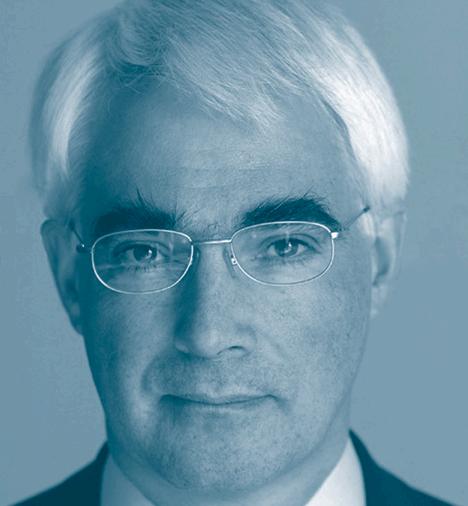
over 60 years”. He recognized that the impact of the recession would be “felt in every continent, country and community”, but stressed that the world economy should not repeat the response it made to the deep crisis of the 1930s: “taking too little action, too late”. He assured the House of Commons that that mistake would not be repeated.
Rt Hon. David Cameron, Leader of the Opposition, responded for the Conservatives by arguing that everyone was now able to “see what an utter mess this Labour government and this Labour Prime Minister have made of the British economy”. He was concerned that the Chancellor had “just told us that he will be doubling the national debt. He is planning to borrow £348 billion over the next two years”.
Mr Cameron noted that this was more “than every previous government put together—not just every government since World War Two and not even
every government since World War One, but every government since the Bank of England was first founded more than 300 years ago”. He concluded that the Prime Minister had “certainly got himself in the history books. He has written a whole chapter in red ink: Labour’s decade of debt.”
Treasury Committee questions budget forecasts Traditionally, the Treasury Select Committee has undertaken a short sharp analysis of the budget in the days immediately following the budget speech in order to produce a report on the major issues before legislation is brought forward to enact the budget resolutions in the Finance Bill. The Report on the 2009 budget was produced on 5 May.
The committee noted that there was considerable uncertainty around the government’s growth forecasts for 2009–2011, which reflected the fact that the U.K. economy was in uncharted territory. They argued that while it was possible the government would meet its growth forecasts, on the available evidence this was an optimistic assumption. The committee also expressed concern that the sharp recovery in consumption forecast for 2011 might be too optimistic given that the economy would only just have emerged from a sharp downturn. The strong
rebound forecast in consumption growth from 2011 onwards had important implications for whether the rebalancing of the U.K. economy, with a shift away from consumption and a rise in the savings ratio, was merely a short-term phenomenon.
The committee concluded that was too early to judge whether the November 2008 fiscal stimulus had been successful. There had been much discussion of whether an additional fiscal stimulus was appropriate, separate from the stimulus provided by the automatic stabilizers. They advised that any discussion would need to take account of both the implications for the public finances and the credibility of the government’s plans to bring the budget back into balance.
In May 2008 the High Court ruled that claims made by MPs under their parliamentary expense allowances had to be published under the Freedom of Information Act 2000. The House of Commons had been preparing to release receiptlevel information about MPs’ expenses claims for the four years starting 2004–05 in July 2009. However, the information was leaked to the Daily Telegraph. From 9 May 2009, the newspaper published a daily selection of the expenses claims.
On Monday 11 May 2009, the Speaker made a statement to the House regarding the unauthorized disclosure of material relating to Members allowances, which had appeared in the press on Friday and over that weekend. He said that the disclosure had caused “great public concern”. He reminded the House that “working to the rules and the
rules alone is not what is expected of any honourable Member; it is important that the spirit of what is right must be brought in now.”
MPs are expected to spend time working both in Parliament and in their local constituency. To support this, they are allowed to claim for expenditure on accommodation to cover the cost of overnight stays when working away from their main home. Following the Daily Telegraph’s publication of these claims, a number of MPs were accused of extravagance, of over-claiming and of avoiding capital gain tax on home sales.
Claims that have incited public anger included those for clearing a moat, maintaining a swimming pool and fitting mock Tudor beams to the front of a house. One MP claimed for a house that was neither in London, nor her constituency. Two MPs continued to claim for mortgage interest payments after the mortgages had been paid off, which they blamed on accounting errors.
On 19 May 2009 the Speaker made a statement at the start of business before question time:
“Since I came to this House 30 years ago, I have always felt that the House is at its best when it is united. In order that unity can be maintained, I have decided that I will relinquish the office of Speaker on Sunday 21 June. This will allow the House to proceed to elect a new Speaker on Monday 22 June. That is all I have to say on this matter.”
This statement concluded several days of public debate in which a number of MPs had publicly criticized the Speaker’s handling of the issues relating to MPs' expenses and had called for him to step down. Mr Michael Martin reportedly became the first Commons
Speaker in 300 years to leave the office in this manner.
The election of Speaker Martin in October 2000 had taken over six hours using a procedure that was adopted in 1972. Afterwards there was a widespread feeling that the process had been unsatisfactory.
The 1972 procedure required the Chair to call an MP to propose a candidate. The question "That ... do take the Chair of this House as Speaker" was proposed from the Chair. Debate followed. At the end of the debate, and before any decision was taken by the House on the election of the first nominee, the Chair called a further MP to move an amendment to the first motion to replace the original candidate’s name with that of another candidate.
The question "That the amendment be made" was then proposed from the Chair. At the end of the debate, the question on the amendment was then put to the House for its decision. If the amendment was carried, the Chair put the main question as amended: that the Member named in the successful amendment should take the Chair as Speaker.
The chief argument
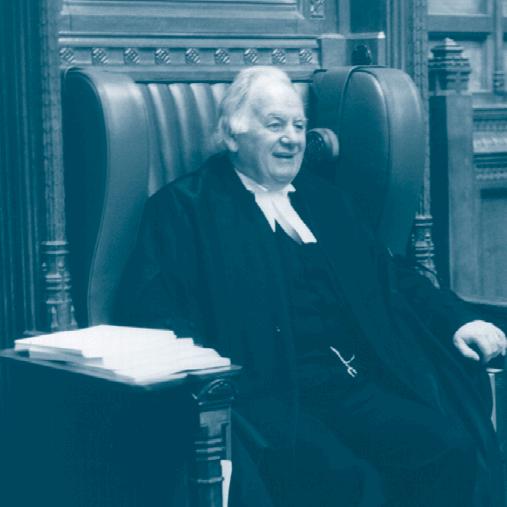
could have helped to determine the outcome, or at least might have been perceived so to do. Accordingly the Procedure Committee conducted a review and concluded that where there are more than two candidates running for Speaker, the 1972 system was fundamentally flawed. Consequently, the committee recommended a new procedure involving a series of secret ballots to elect a new Speaker. It is described in House of Commons Standing Order No. 1 (B).
The new procedure will therefore be used for the first time in the House of Commons at Westminster on 22 June to elect a new Speaker by a process of exhaustive secret balloting. Similar procedures were used in the Kenyan National Assembly to elect its new Speaker in January 2008. Procedures involving ballots are also used in Canada and Australia.
Recently, the House of Lords has also found itself debating newspaper allegations relating to the misconduct of its Members. On 20 May, the House of Lords considered the recommendations of its Privileges Committee that Labour Peers Lord Taylor of Blackburn and Lord Truscott should be suspended for the rest of the session.
advanced against this procedure was that the order in which MPs were called to speak
The House of Lords Privileges Committee had before it a report from its Subcommittee on Lords’ Interests on the conduct of Lord Moonie, Lord Snape, Lord Truscott and Lord Taylor of Blackburn. The report had arisen out of allegations made against the four Members in the Sunday Times on 25 January 2009, which subsequently formed the basis of a complaint referred to the subcommittee by
the Leader of the House. In summary, the subcommittee found that three of the four Members (Lord Snape, Lord Truscott and Lord Taylor) had breached the Code of Conduct, but found that Lord Moonie had not committed any such breach.
There had been some debate questioning whether the House of Lords had power to suspend one of its Members. The Attorney General, Rt Hon. Baroness Scotland of Asthal, had advised the committee that the House did not have the power to expel a Member permanently, since to do so would, “interfere with the rights of a Peer conferred by the Crown by letters patent”. In the case of a temporary suspension, the Attorney General had acknowledged that the issue was “less clear”, and that a “respectable argument” could be made that the House’s power to regulate its own procedures did include a power of suspension. However, she had advised that the “safer course” would be to wait until a legislative framework could be devised to confer such a power on the House. The Committee, however, also sought the advice of one its Members, the former Lord Chancellor, Lord MacKay of Clashfern, who concluded:
misconduct. I consider further that the exercise of such a power would not affect the rights conferred upon Members by virtue of their letters patent; rather it would affirm the conditions implied in the writ of summons, that Members must conduct themselves in accordance with the rules of the House.”
many of the remarks made by him in the course of his conversation with the journalists had demonstrated “an inappropriate attitude to the rules governing the conduct of Members” and it recommended that Lord Snape be invited to make a personal statement of apology to the House.
“I consider that the House’s existing power to adopt the procedures necessary to preserve ‘order and decency’ includes a power to suspend, for a defined period within the lifetime of a Parliament, a Member who has been found guilty of clear and flagrant
In its report, the Lords Privileges Committee stated that it was “unanimously in agreement with the advice of Lord MacKay”. It therefore invited the House to agree that it had the power to suspend its Members for a period not longer than the remainder of the current Parliament.
In a second report it considered the report of the subcommittee. In the case of Lord Snape, it considered that
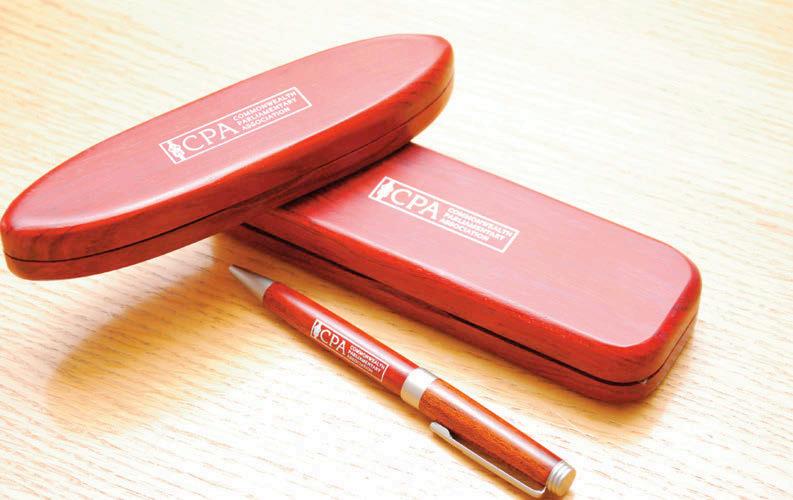
CPA souvenirs are available for sale to Members and officials of Commonwealth Parliaments and Legislatures by contacting the CPA Secretariat by email at: hq.sec@cpahq.org or by air mail at: Suite 700, 7 Millbank, London SW1P 3JA, United Kingdom
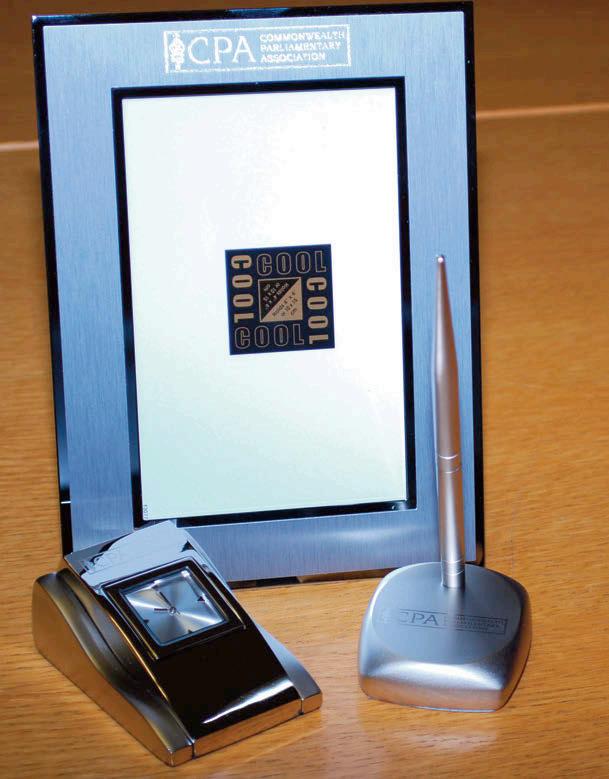
In the cases of Lord Truscott and Lord Taylor of Blackburn, it recommended that they should each be suspended from the service of the House until the end of the current session of Parliament. The reports were debated together on 20 May at the end of which the House agreed with the conclusion in the first report and with the recommended suspensions in the second report, without division. This historic decision marked the first suspension of a Peer since 1642.
CPA silver-plated cardholder s

Silver-plated photoframe, clock and pen in holder

28 September to 6 October 2009, 28 September to 6 October 2009, Arusha, Tanzania Arusha, Tanzania
The Commonweatlh and the CPA: Meeting
The Commonweatlh and the CPA: Meeting
Global Challenges Global Challenges
Workshop topics for this year’s conference include:
Workshop topics for this year’s conference include:
Coalition Governments: Parliamentary Democracy in Dilemma?; Coalition Governments: Parliamentary Democracy in Dilemma?; Role of Commonwealth Parliaments in Combating Terrorism; Role of Commonwealth Parliaments in Combating Terrorism; The Commonwealth and Youth – How to Engage Future Generations in The Commonwealth and Youth – How to Engage Future Generations in Representative Democracy. Representative Democracy.
The Executive Committee Meeting and the Small Branches Conference will be held
The Executive Committee Meeting and the Small Branches Conference will be held from 30 September to 1 October. Conference topics include: from 30 September to 1 October. Conference topics include:
Policy Responses to the Global Financial Crisis in Small Economies; Policy Responses to the Global Financial Crisis in Small Economies; Utilizing Committees in Small Parliaments. Utilizing Committees in Small Parliaments.
The Commonwealth Women Parliamentarians (CWP) Business Meeting followed by a The Commonwealth Women Parliamentarians (CWP) Business Meeting followed by a CWP Session on “The Impact of the Global Financial Crisis on Women” will meet on CWP Session on “The Impact of the Global Financial Crisis on Women” will meet on Sunday 4 October. Sunday 4 October.
Delegates can register online at www.cpahq.org. Instructions on registering online
Delegates can register online at www.cpahq.org. Instructions on registering online can be found on the website as well as on the back cover of can be found on the website as well as on the back cover of The Parliamentarian The Parliamentarian ..
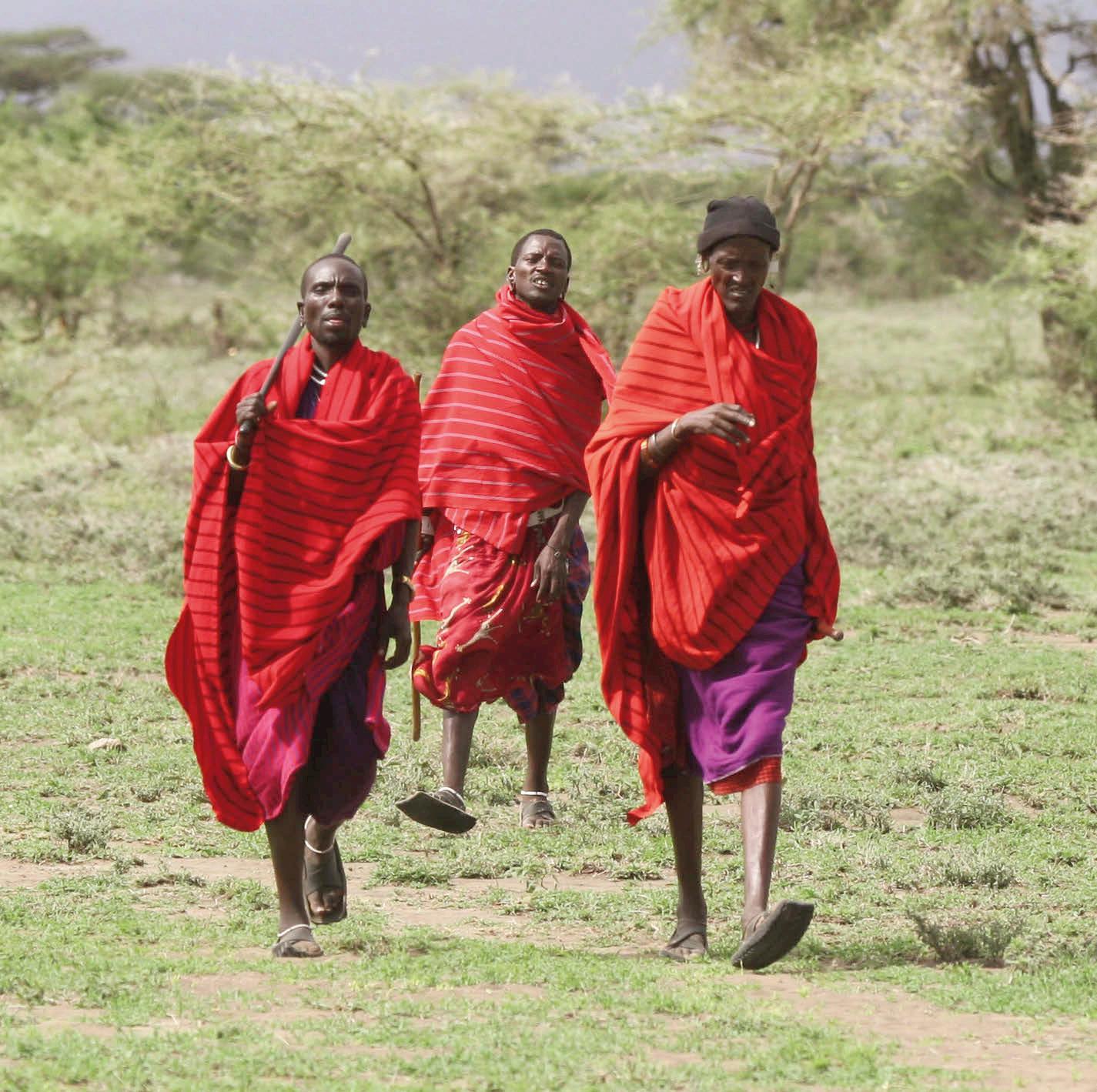
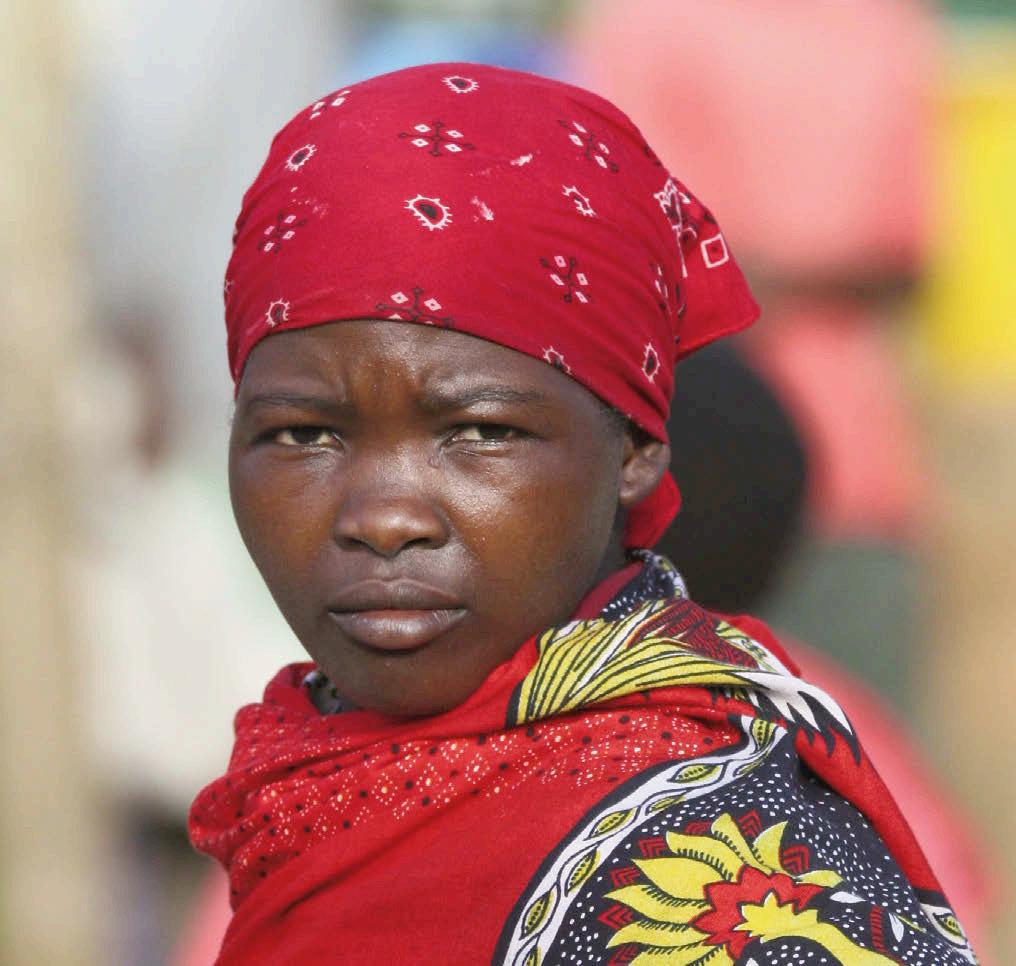
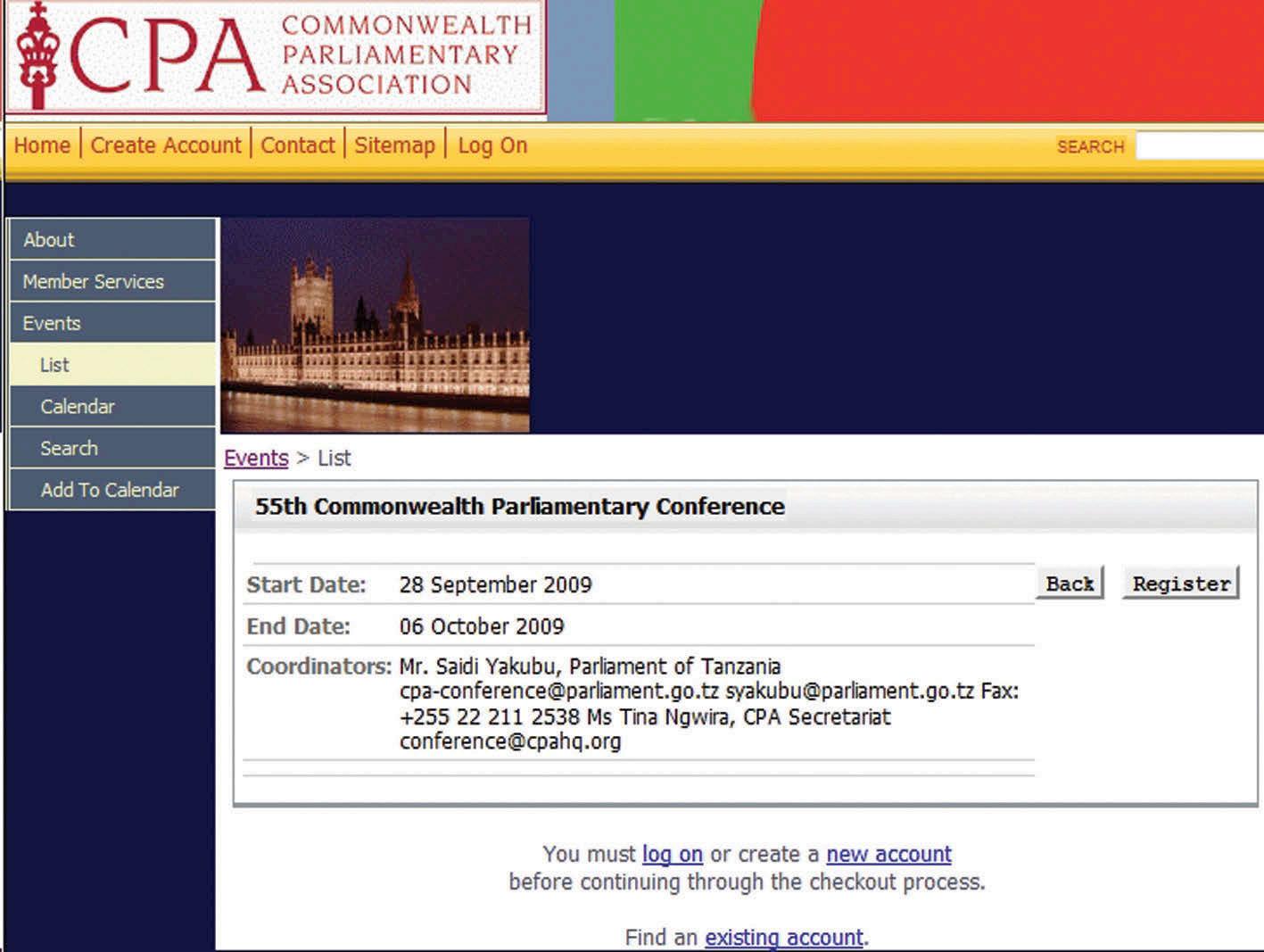
Step two: Follow the instructions on how to create your own account.

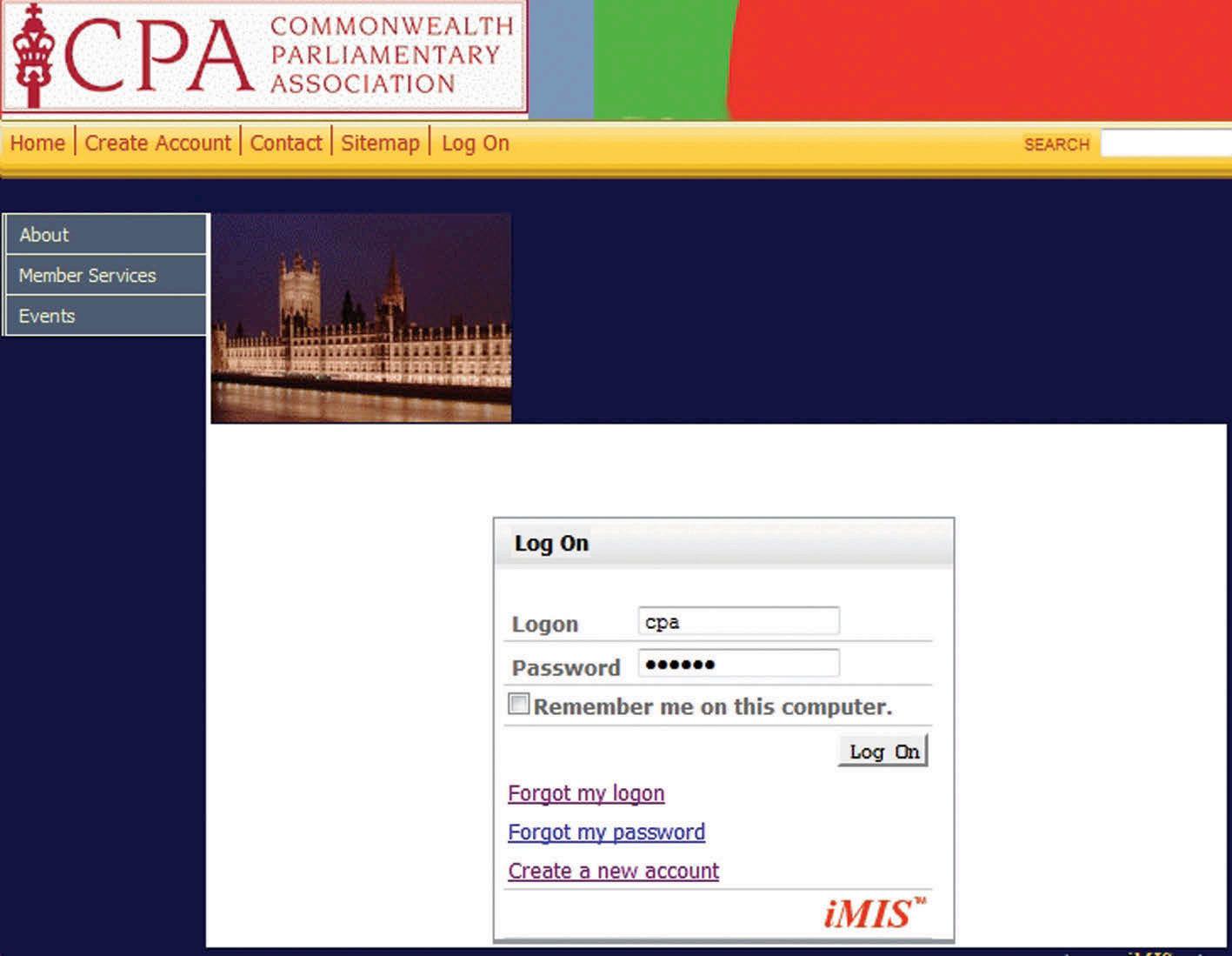
Step one: Log onto: www.cpahq.org and click on the link to ‘Register’. This will take you to the home page on your left.
If you have forgotten your user credentials, fill in the relevant details as indicated on the right and a reminder email will be sent to you with the necessary information.

If you already have an existing username and password, you can log onto the site as normal, as shown on the left.
